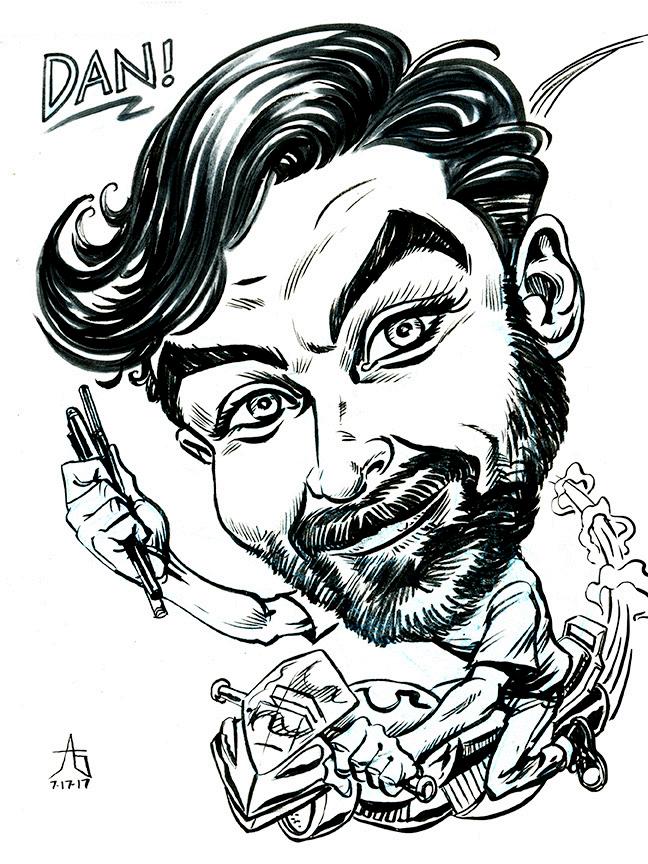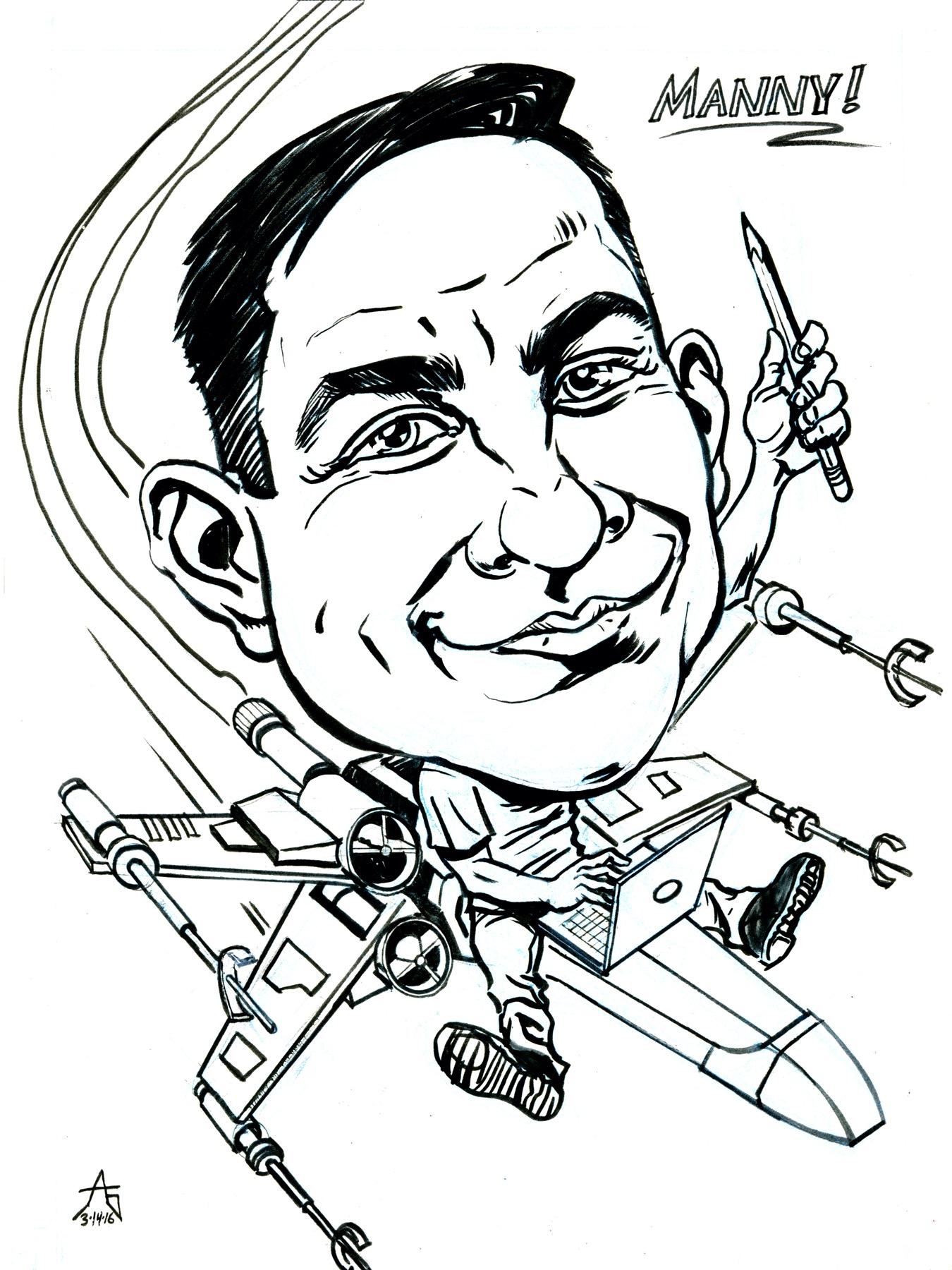

The
Project Chronicles - Volume 1By Jimmy Briseno, Len Kody ... & You?

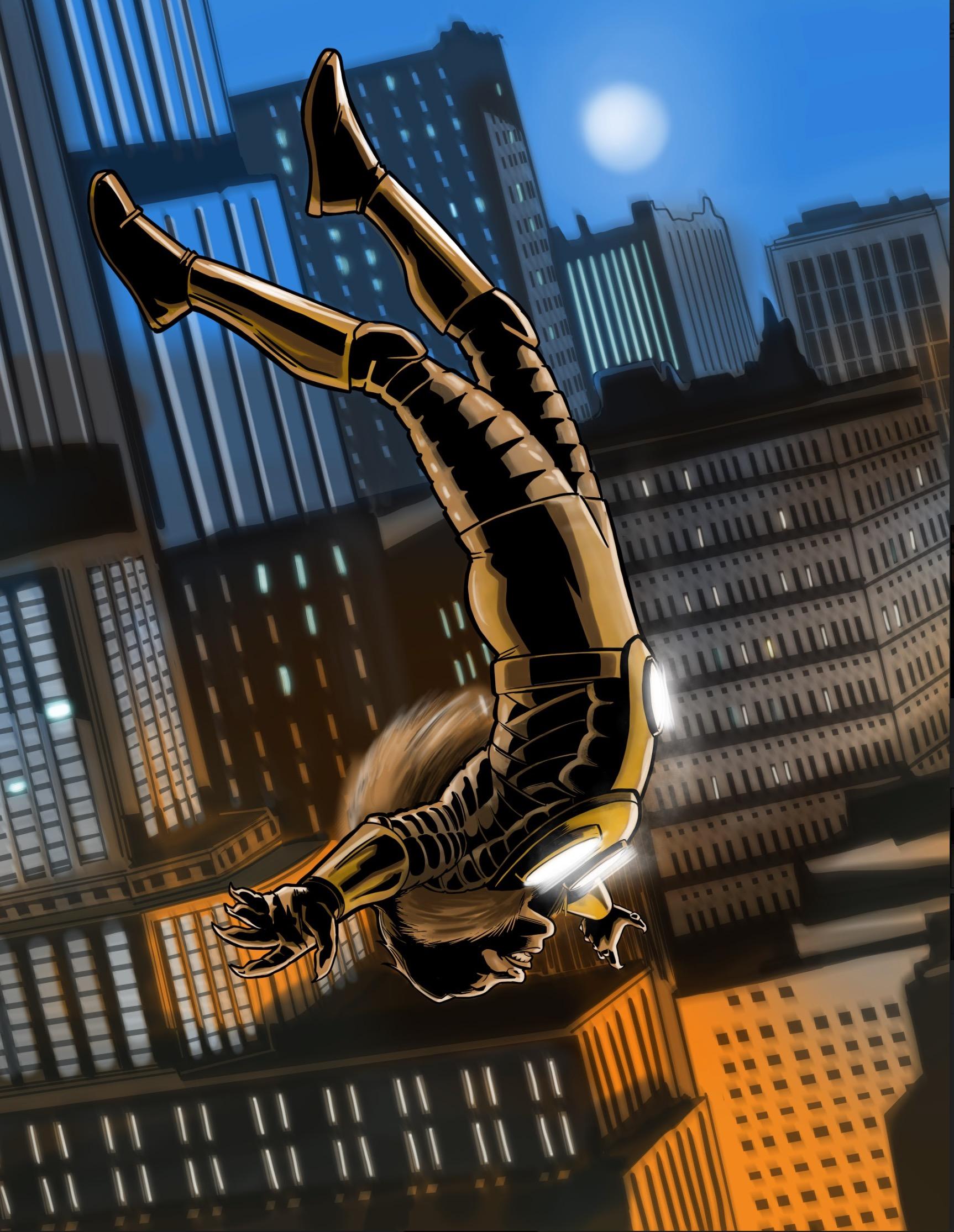
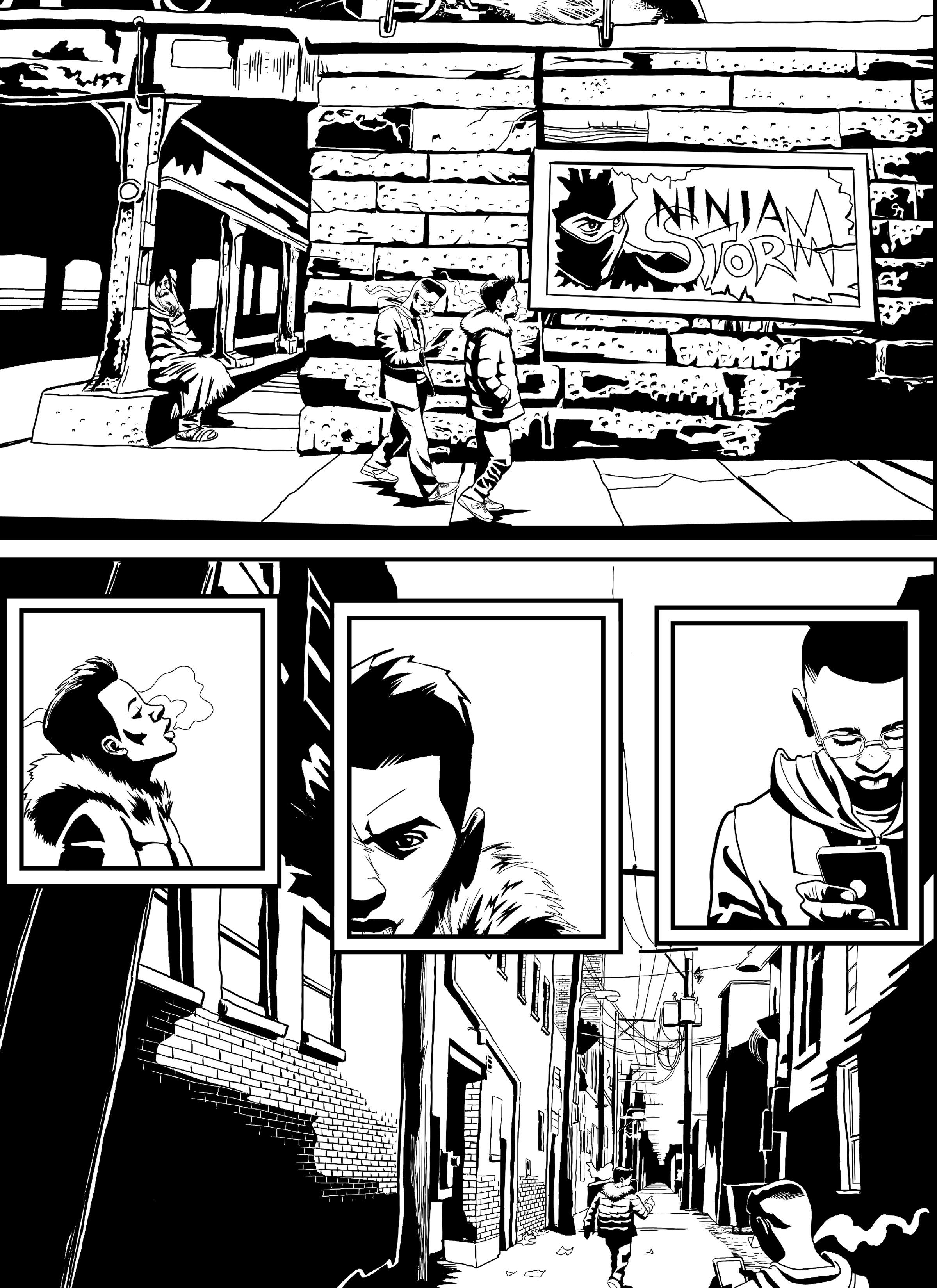


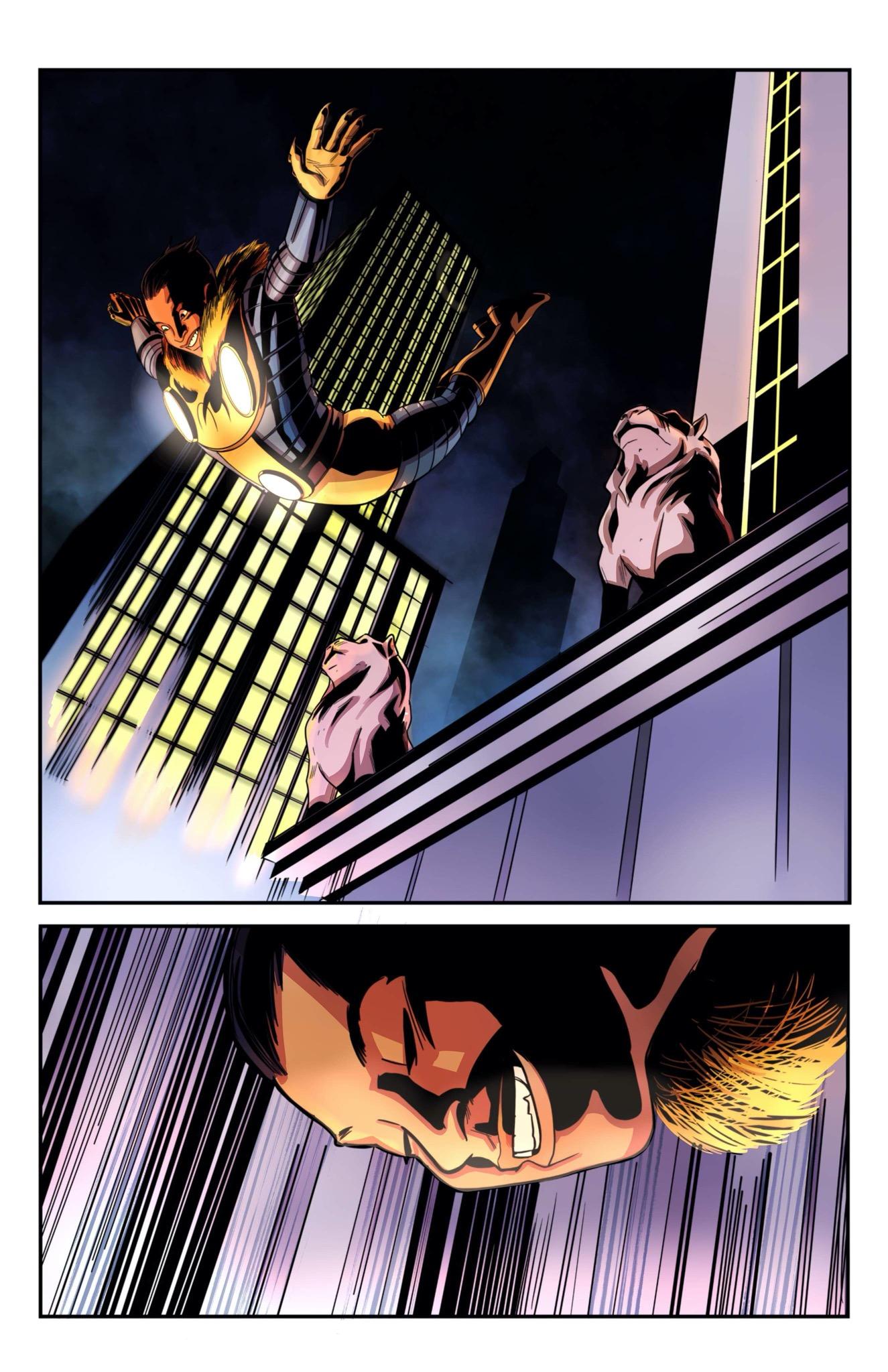

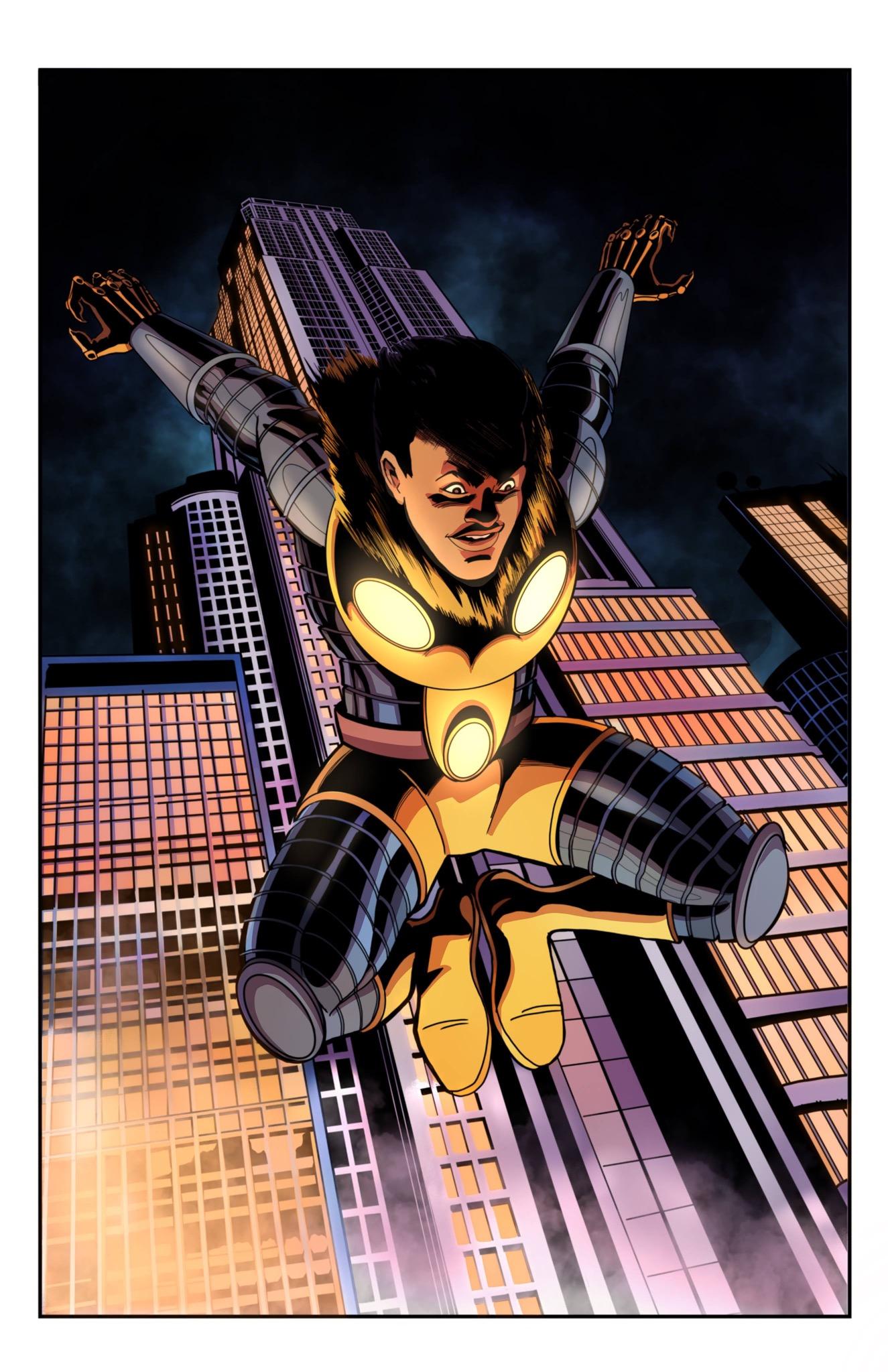

Welcome to the Made Collaborative Studio! This set of “project chronicles have been developed to give you context for this little project we are calling ”Made Collaborative, and with that, help guide you through this Virtual Studio collaborative experience, which was created to help provide participating youth an opportunity to collaborate with us (virtually) on the development and production of our ongoing comic series, the Back of the Yards. Moreover, it is our hope that these same tools and concepts may also help participating youth to spark their own creative ideas and/or develop their own independent creative projects.
And perhaps even more importantly, we will use these project chronicles to capture and highlight your contributions to our collaborative project and our Back of the Yards Comic series! And to help set the stage in that regard, Part 1 of these chronicles will give you a glimpse of how this project started in the first place. A project origin story if you will -which we happened to blog about together as project artists during the journey – the gory details, missteps and imperfections all included. In other words, a true glimpse of a creative process.
We Start This Tale Sometime Back in 2013
So, it is with the next few pages of this prologue, will be provide you an abridged version of how this project started and then evolved into what we are working on with you today.
As described further in Part 1 of this set of Project Chronicles, it was right around the fall and winter seasons of 2013, the project’s founder Jimmy Briseno, started meeting with youth at an after-school program in the West Side of Chicago and asked them if they were interested in making a comic based on their own original ideas.
At the time, Jimmy had a very basic idea to start his on modest community project which was intended to connect artists with youth to collaborate to promote creative thought.
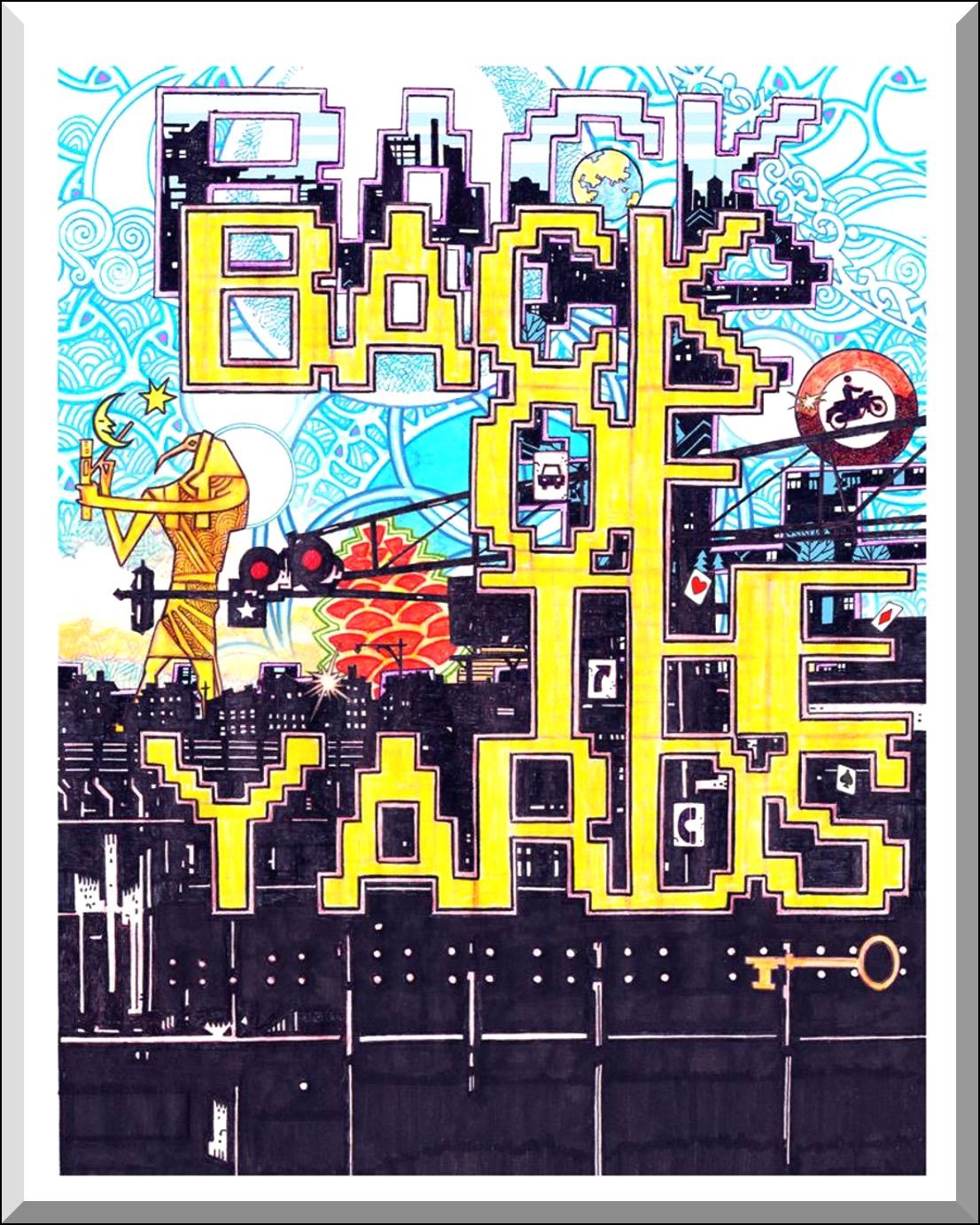
An early concept logo for the Back of the Yards comic as developed by the inimitable participating artist, Andrew Dimmitt.

Jimmy’s hope was that by connecting urban youth with artists, a few creative sparks could be ignited for both the youth and the participating artists alike. And on a broader level, Jimmy felt that creativity, and the ability to think outside of the box, was an undervalued skillset in fields beyond just the arts, including science, public service, sports and the corporate world.
Armed with this basic motivation, Jimmy began meeting with youth at a few Chicago after school programs, along with his original collaborator, an artist named Manny Dominguez, and it became quickly apparent that those youth gravitated towards comic-style illustrations, characters, and storylines. From there, Manny and Jimmy began working with the youth to develop characters and storylines based on their creative input and ideas.

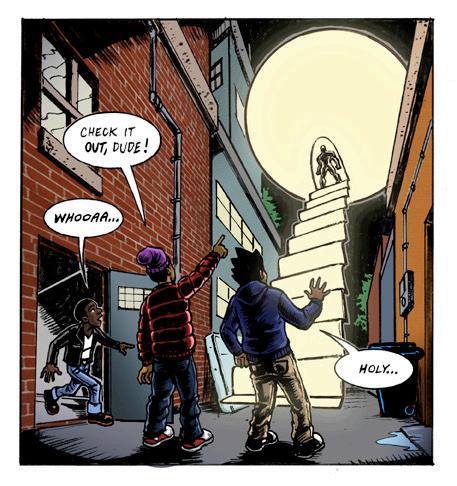



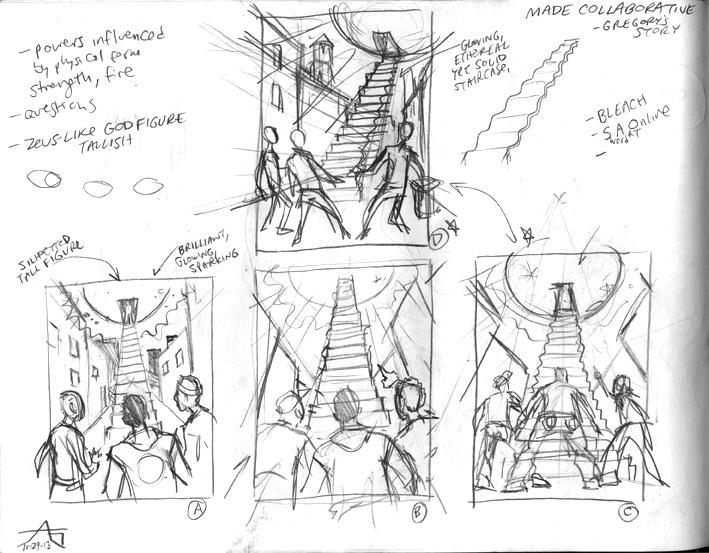
Which was all great except for one minor detail: neither Jimmy (a below-average attorney by day) nor Manny (an illustrator and web designer by day, but not a comic publisher) had ever developed a full comic before. Not to be deterred, Jimmy then began to recruit and retain other artists and writers to help make this new collaborative comic project a reality.


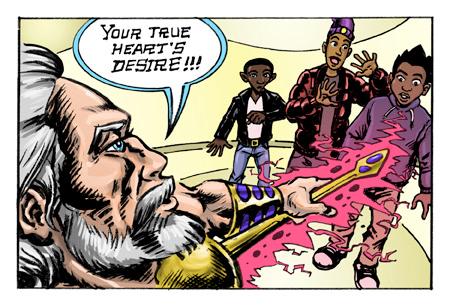
Original script materials were developed by Jimmy Briseno and concept illustrations by participating artist, John Golden..
A New Comic Series Was Born
That reality took much longer than initially planned as day jobs, money, and other life challenges were encountered along the way. But the artists kept pushing forward and eventually what started out as a very simple idea in classroom in the West Side of Chicago evolved into our first comic series: The Back of the Yards.

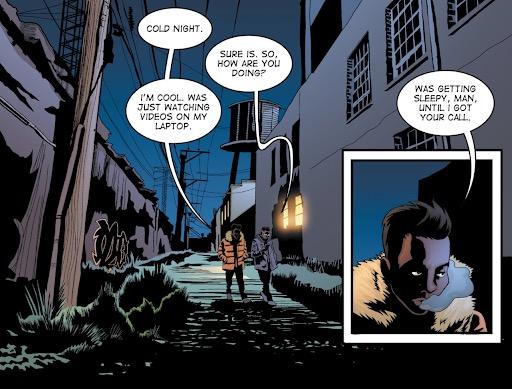
Issue 1 of the Back of the Yards comic series was originally produced in 2018 with illustration by Dan Dougherty and the story written and scripted by Len Kody based on the youth ideas in 2013 as further described in Studio Cards #2 and #3, with contributions and source material from Jimmy Briseno , John Golden, Eric Nyamor , and Andrew Dimmitt.
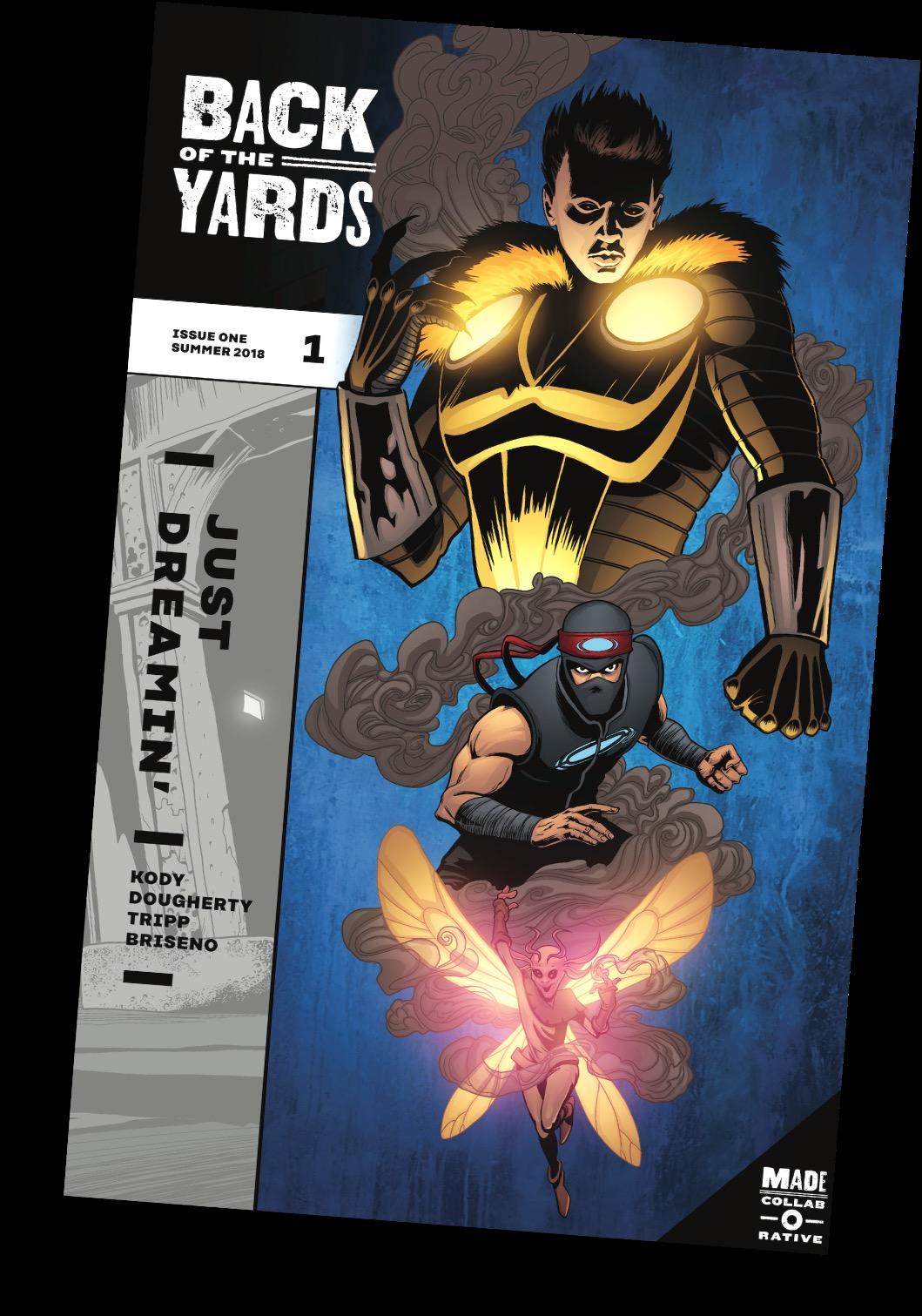
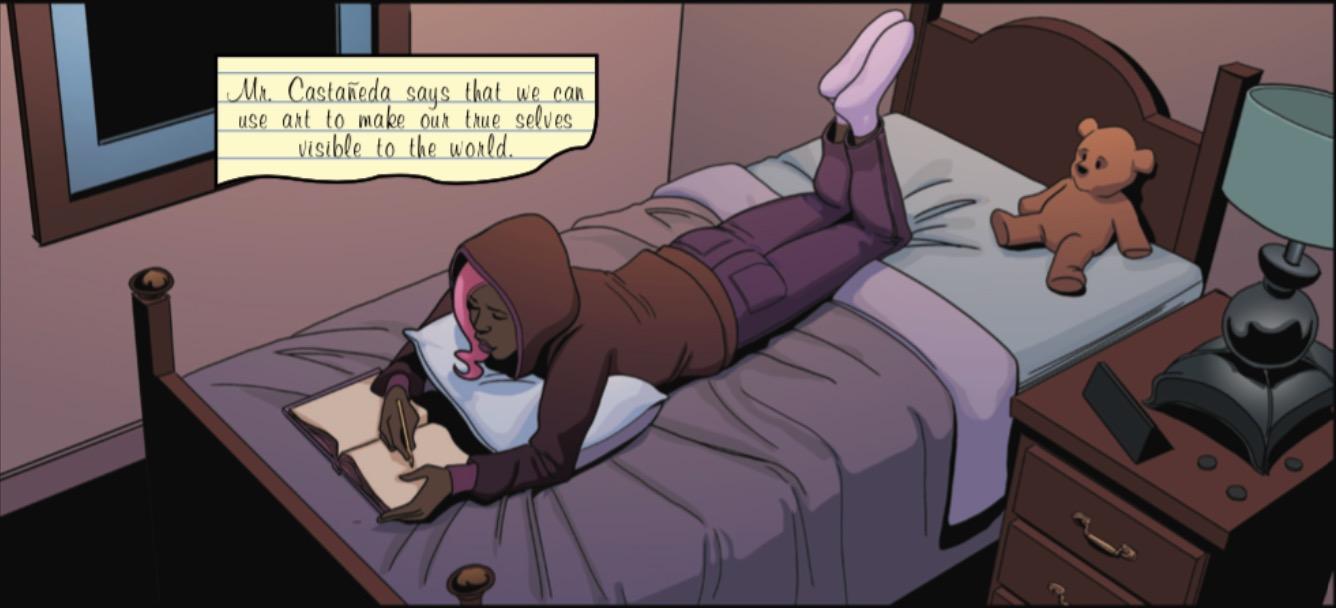


And as we came closer to completing the second issue of this new comic series, our plan was to re-engage with a few afterschool programs in Chicago to collaboratively develop Issue #3 of the comic series. And this time we wanted to incorporate elements from Carl Jung’s character archetypes and Joseph Campbell’s Hero’s Journey as part of those planned collaborations. But it was at that time that seemingly out of nowhere, COVID hit the world.
COVID & the Advent of this Virtual Platform


To say COVID changed everything for us would be an understatement. Of course, COVID’s impact on this modest little comic project is obviously trivial compared to what has been experienced by so many throughout the world. But, in any case, any plans we had of reengaging youth in classrooms and afterschool programs were also completely derailed because of COVID’s impact starting in 2020.
The truth is, even before COVID, we struggled with many aspects of the longer-term project plan. Sure, we felt good about the basic premise of using this comic platform as a way of promoting creative thought for participating youth and further enhancing this collaborative model by incorporating elements from Joseph Campbell’s Hero’s Journey as well as Carl Jung’s character archetypes. But at its core, we knew how challenging the in-person collaborative model can be.
In-person collaborations take time and require a high degree of coordination. Not to mention a certain degree of commitment from participating youth who are deluged with other activities and interests competing for their attention daily, many virtually. As well as competing interests for afterschool staff and us as project administrators and artists in the form of our day jobs, family commitments and adulting in general.

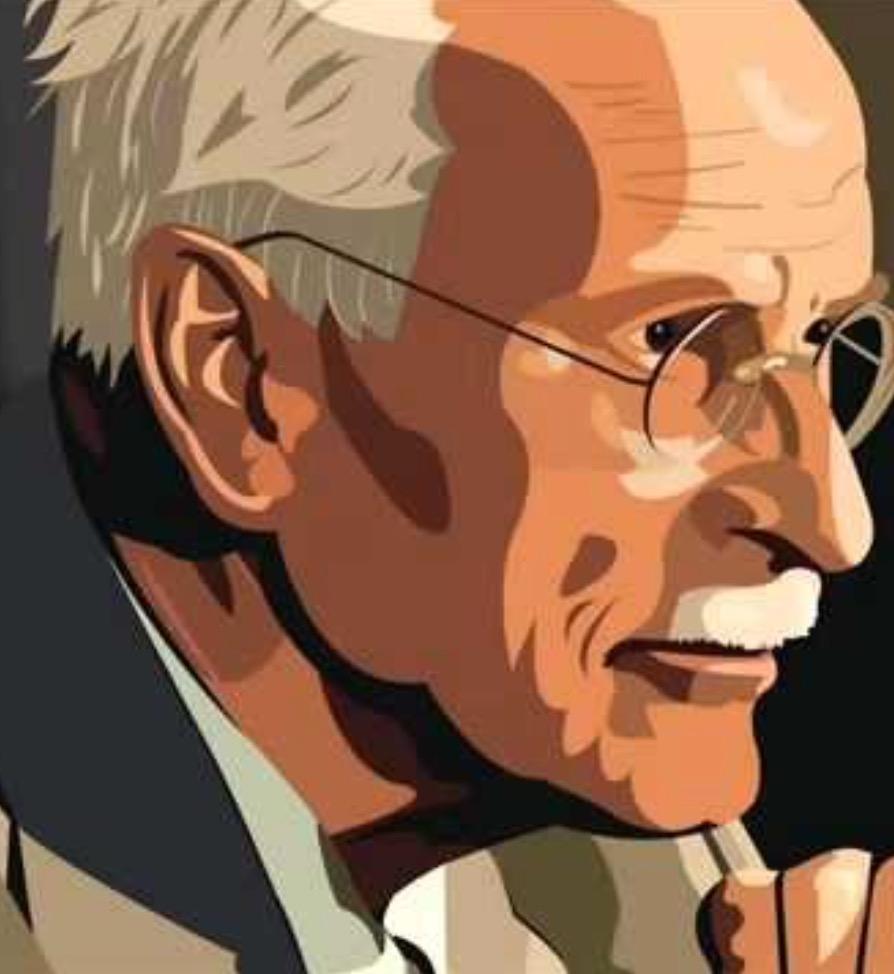

Illustrated portrait of Carl Jung . Len Kody and Jimmy Briseno had developed initial plans and materials incorporating concepts from Carl Jung’s work on character archetypes and Joseph Campbell’s Hero’s Journey story development framework in anticipation of new in - person collaborations just prior to the disruption caused by COVID 19..
Introducing the Made Collaborative Studio
All these constraints called to question the long-term viability of a project like this, COVID or no COVID. Moreover, even if we proved successful in executing this in-person classroom model now in the form of additional afterschool collaborations and comic issues, how could we realistically scale this creative model up even further considering all the complications described above?
It is in response to all these concerns that we are introducing to you this new Made Collaborative Virtual Studio platform. In response to some of the challenges described above, we created this new virtual platform by combining content and established story telling concepts along with common digital third-party applications like Google Slides, Google Forms, Wordpress, and Issuu Flipbooks to provide unique collaborative opportunities directly accessible virtually to after-school programs, participating youth and others.
So, with that, the rest of these project chronicle files will present to you all the basic elements of the Made Collaborative virtual studio platform, along with some of the early origins of this project for further context. And to help set the stage for that context, we present a little video here that we made back in the day. It may be a bit simple and even outdated, but it still resonates with us and in that spirit, we thought we’d go ahead and share it with you to help further frame this project’s tale …
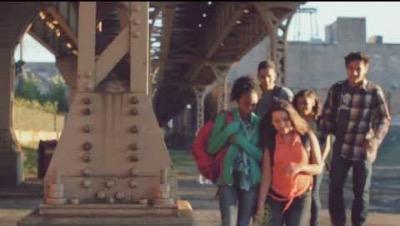
- Part I -

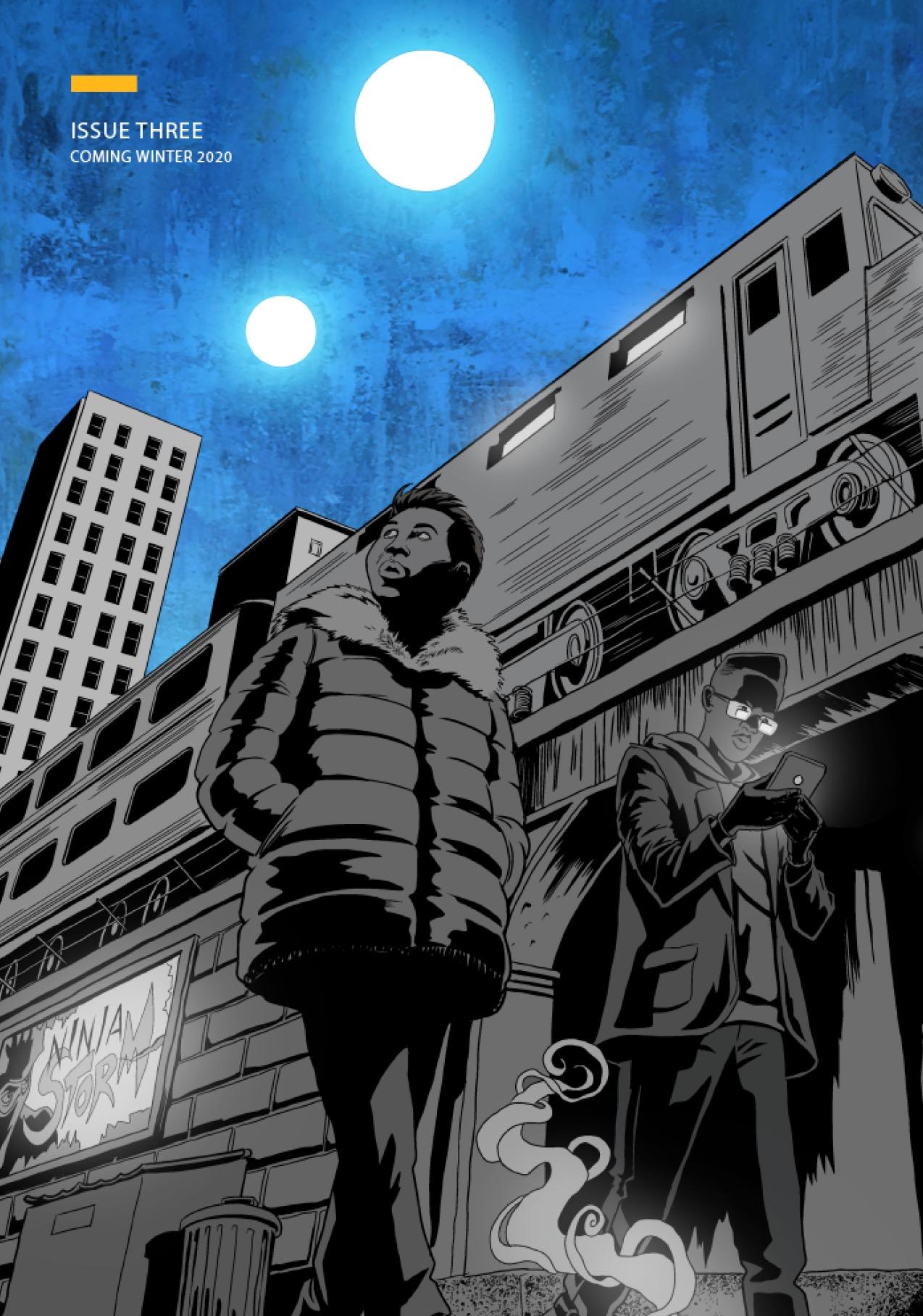
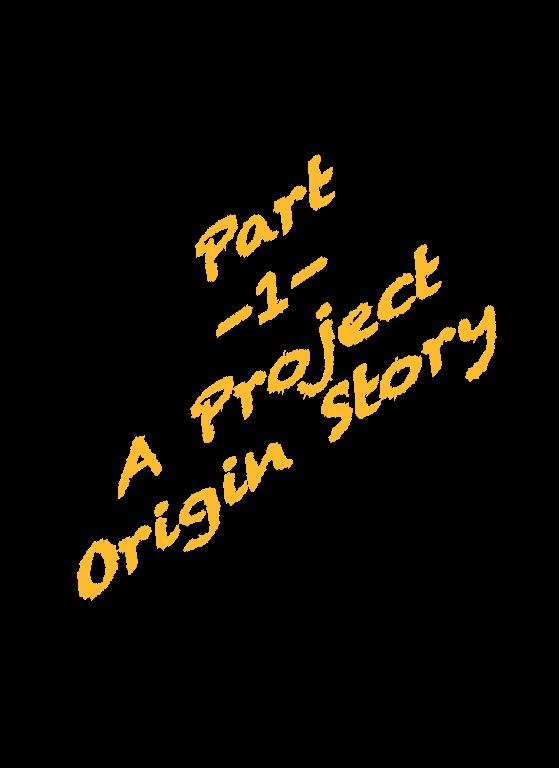
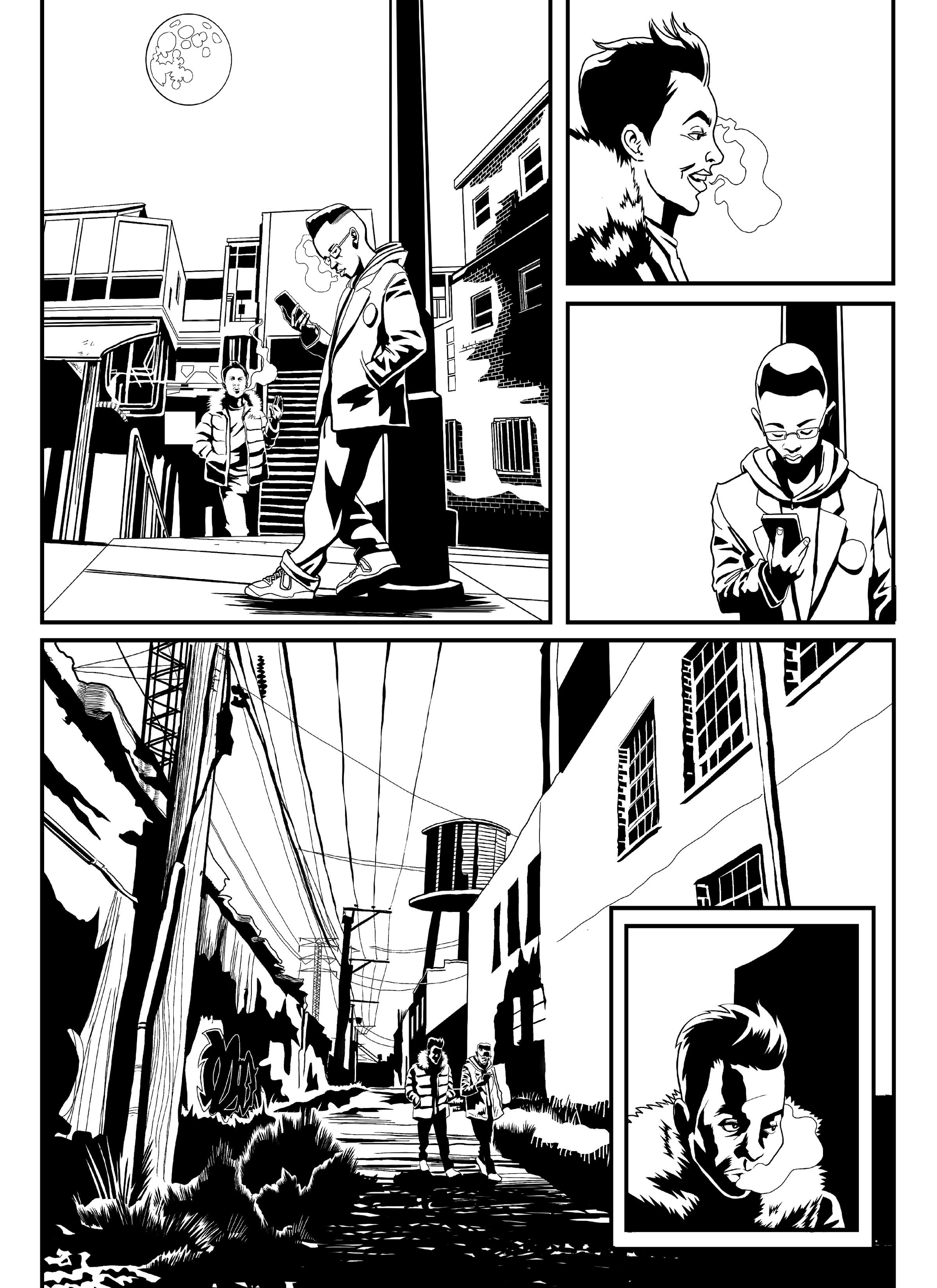

Sparks From A Bus - Chapter 1 -
By Jimmy Briseno
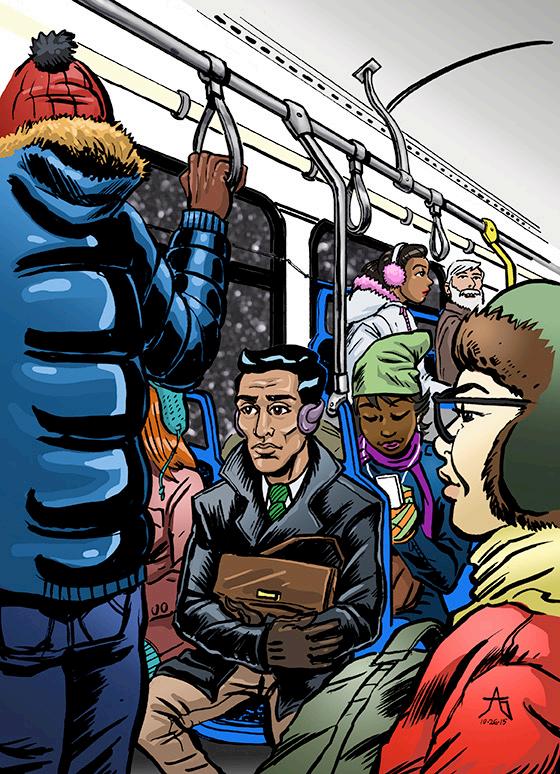
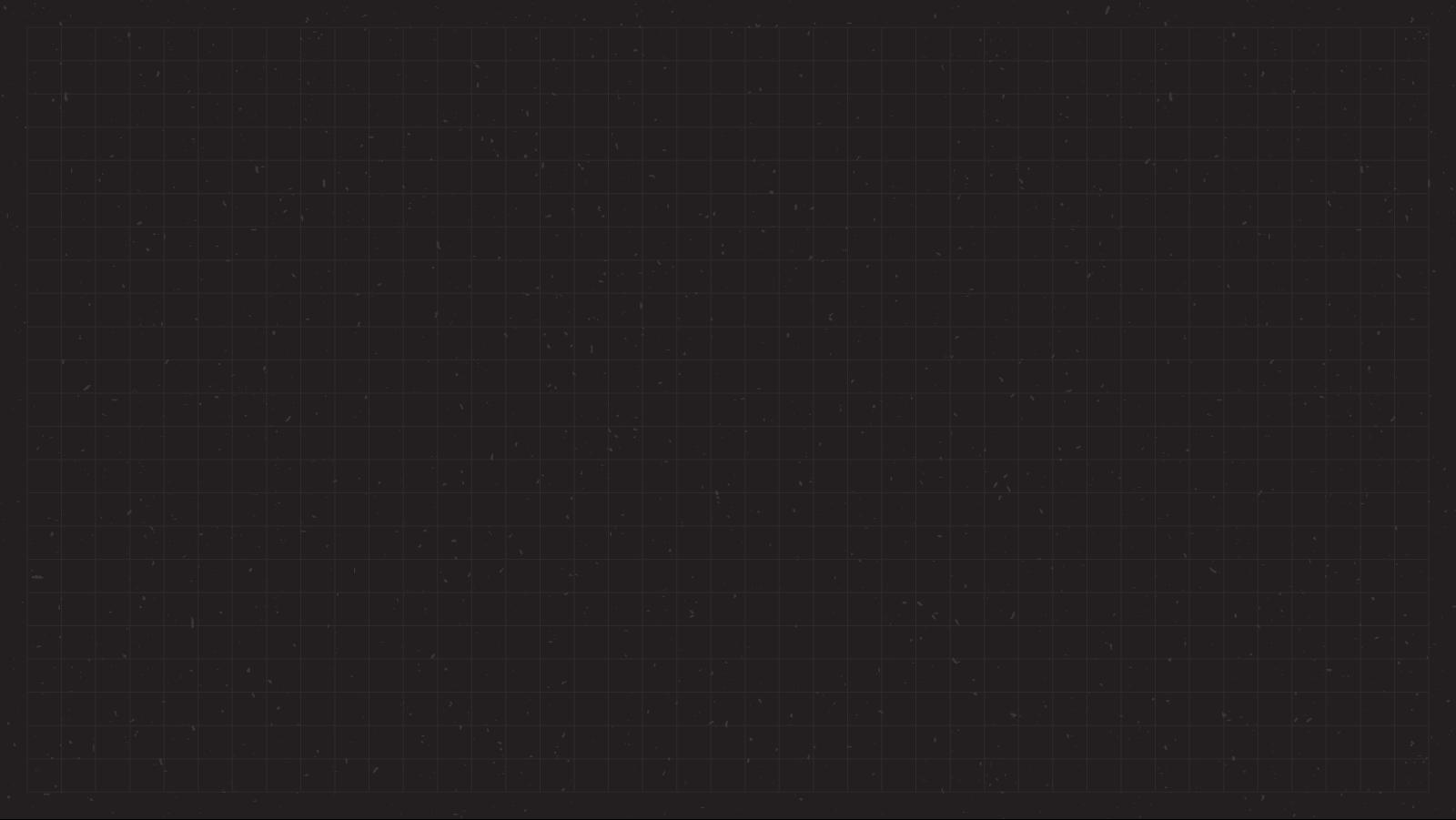
See that guy on the left? I guess that’s me, Jimmy Briseno, some time just before this project started, as illustrated by participating artist John Golden. Looks like I may be deep in thought. About what, you ask? Who the hell knows.
I could be contemplating just how incredible it is that each one of the individuals on this bus, all with our own unique ancestral journeys through the ages, somehow find ourselves sharing this fleeting moment in time with one another, against all conceivable odds…
Or, I could be wondering why my hometown NBA basketball team, the Chicago Bulls, don’t try to run more motion offense. I mean, they need to make more space for their perimeter shooters, I would implore to … well, myself. And by freeing up space for their perimeter shooters, they then also give Derrick Rose more space to drive the ball to the basket (circa 2012).
Both thoughts (and others) every bit as likely to be occupying space in my mind at any given moment, and sometimes seemingly at the same time, to be sure.
And that’s me in a nutshell. My mind is a complete mess. And unfortunately, I spend a lot of time there.

Back then, taking those bus rides home in Chicago, I was consumed by my job as a corporate attorney. And not because I loved my job. Rather, it was because my company at the time had been involved in a series of corporate acquisitions and divestitures for a stretch of years. As a result, I think I was just desperately looking for some sort of work-life balance in general, which resulted in even more daydreaming than usual.
And of course, during that time and beyond, Chicago’s crime rate, corruption and budget woes would often be the subject of national headlines. There was just a lot of negative energy to consume, and I guess that also occupied some space in my mind periodically on those many bus rides home.
Yet even as I would think about it back then, I didn’t view these problems as necessarily unique to Chicago. These are shared problems among many of our increasingly complicated urban centers. They are issues that went beyond nice and easy political soundbites, and issues that couldn’t be addressed by any one particular solution or dogma. And I guess in that context, I would often wonder what someone like me, a guy with no particularly noteworthy skill whatsoever, could even do to help?


The Power of Creativity
It was this line of introspection that would often lead me to think more about my rather ordinary life. Although I may not have been exactly passionate about my work at the time, nor have accomplished anything of particular note, I was nonetheless self-aware enough to know that I was lucky. Particularly when I would look back and think about my own childhood.
Purely as a statistic, my odds for any kind of measurable success out of the gate probably weren’t great. My dad was an absent and a somewhat volatile figure who would end up ultimately losing his soul to drugs and mental illness. And as a kid, I grew up in a neighborhood fairly similar to some of the neighborhoods that generated many of the headlines in Chicago.
But that’s where my journey along any statistical probability path abruptly ends because the lucky part for me is that I had an extraordinary Mom who worked tirelessly to provide a comfortable life for the two of us, along with the love and support from Grandparents and Godparents. Thus, ultimately, I would find myself experiencing an entirely different set of life circumstances.
Nonetheless, it’s also in that context that I could remember what it felt like as a young kid to be shaped in large part by the external expectations of my old neighborhood and early circumstance, particularly when those external expectations were often negative.

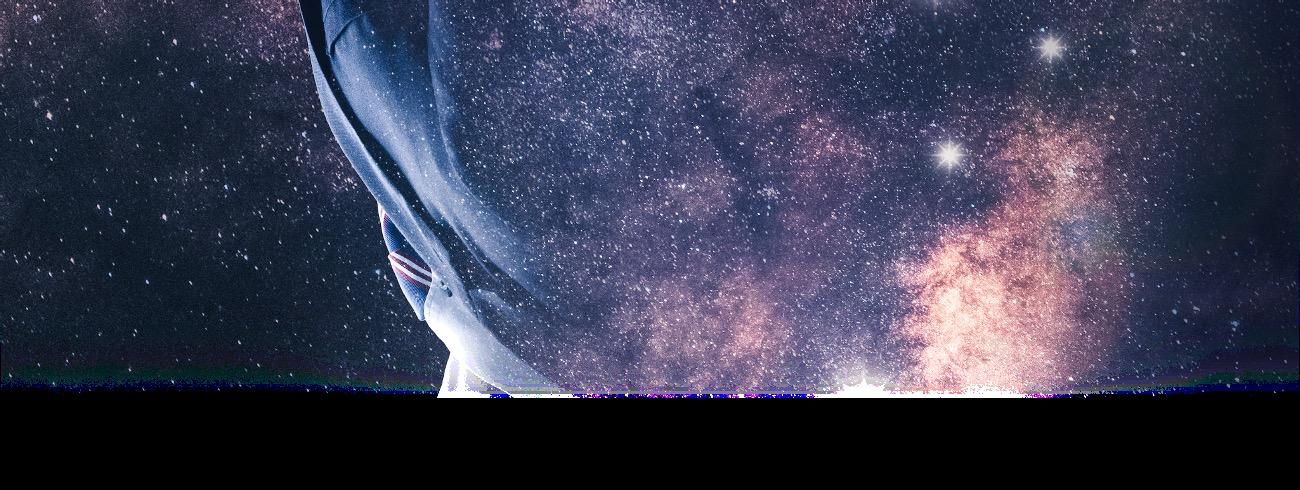


And, conversely, I also knew what it meant for me personally when I became exposed to others that helped me think a bit more creatively later in my adolescent life. They helped to expand my own internal set of expectations.
I experienced firsthand how being exposed to others’ ideas and creative thoughts can be incredibly empowering. It’s those little external sparks that allow you to begin to envision a world that transcends your own reality, whatever that reality may be; and that’s when new possibilities can truly begin to emerge from within.
And that’s when it would eventually hit me on one of those many bus rides home. Why not try to develop some sort of youth outreach initiative that could help to facilitate those little creative sparks, however modest? I’d always felt that creativity was very much undervalued. Even in the corporate world that I was immersed (trapped) in, where being able to think a little outside of the box could quite literally lead to big dividends. And I was even more convinced that creativity was essential in fields like public service and science.
And the irony of all of this, of course, is that programs promoting creativity within our urban centers always seem to be the first in line when it came to budget cuts. So, as I would continue to think about it over those many bus rides home, there just had to be an opportunity to do something.
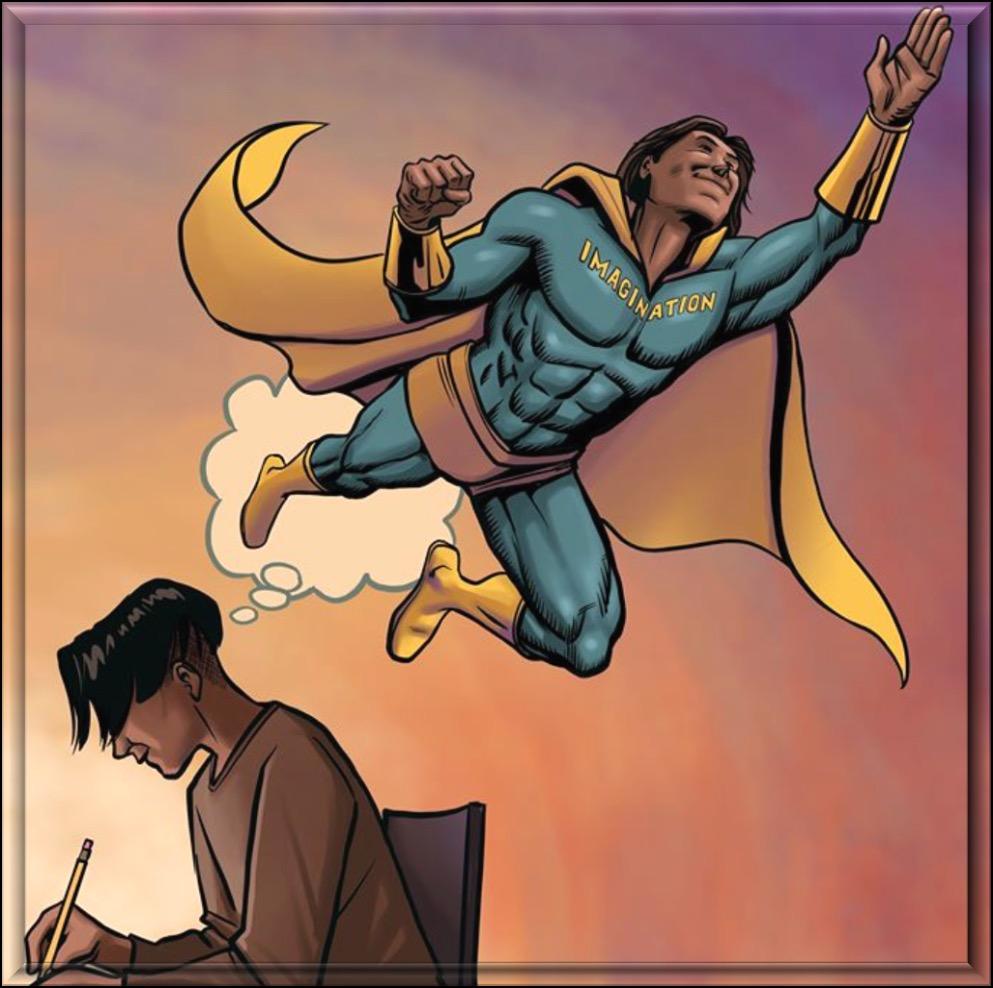

Perhaps more than anything, beyond youth empowerment, budget cuts and Chicago’s headlines, I thought doing something that facilitated creativity could be fun. Maybe I could light a few much-needed creative sparks of my own. And as my mind would wander on those many bus rides home, whether contemplating the serendipity of life or the starting lineup for the Chicago Bulls, it became more and more apparent that I just needed a little more fun in my life.
Armed with this motivation on one of those many bus rides home in the winter of 2012, I finally decided I was going to give it a go. I didn’t have a specific plan in mind other than to recruit some local artists to collaborate with urban youth the following summer. I figured we could just see what came out of that collaborative process and then take it from there.
Little did I know, as I walked off the bus that fateful winter’s evening with this very basic premise in mind, the origin story for this little comic-based collaborative project had just begun.
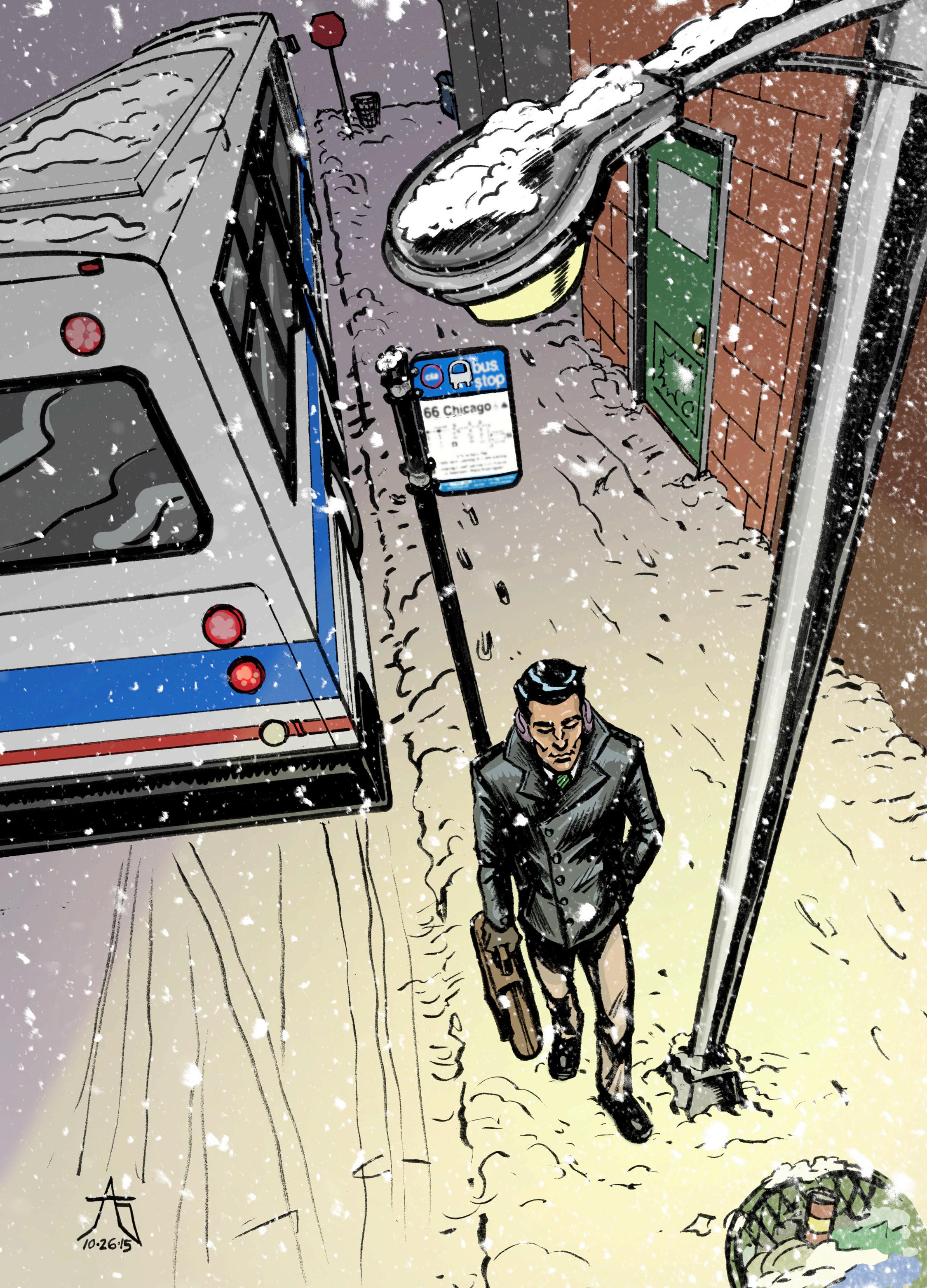

The room looks like any other ordinary high school classroom with a high table counter extending in front for the teacher to use for various presentations, and corresponding rows of single desks lined up parallel with one another from the front of the room to the back for youth to sit. I stand in front of the classroom.
With me are a small group of initial participating youth who had been given a prior description of the project. I can feel their scrutiny as I bring my initial presentation to a close.
“So, that’s the idea in a nutshell. Basically, we’re going to develop comics stories based on your ideas. And you’ll be able to participate in the development of those comic stories from beginning to end, so long as you’d like to participate in the project.”
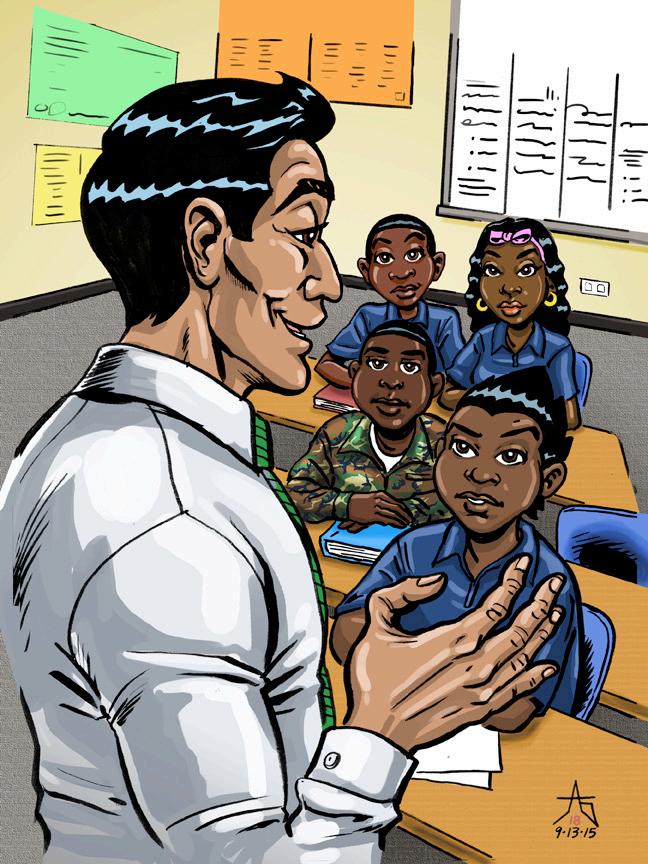

The youth remain silent. I try to gauge the reaction. Surely, they see through me. I mean, I’m no teacher. Hell, I’m barely a lawyer, apart from the degree I somehow fleeced from my law school. So, what am I doing here at this afterschool program on the West Side of Chicago, working with these kids to develop comic stories based on their interests and ideas? I’m not even an artist! They must know that I have no idea what I’m doing. Surely.

It is then that one of the youth, a stout male named Nehemiah finally raises his hand.
“So, like, these stories can be about anything we want them to be? I mean, can we just make stuff up or do they have to be true stories?”
“They can be about whatever you want them to be about – made up or based on real experiences. It’s entirely up to you.”
Another youth, a young African American female named Tamia then raises her hand.
“Can they be about relationships?”
“Yep, relationships. Friendships. School. Family. Or they can be completely made up and based on some sort of alternative reality. Anything you want.”
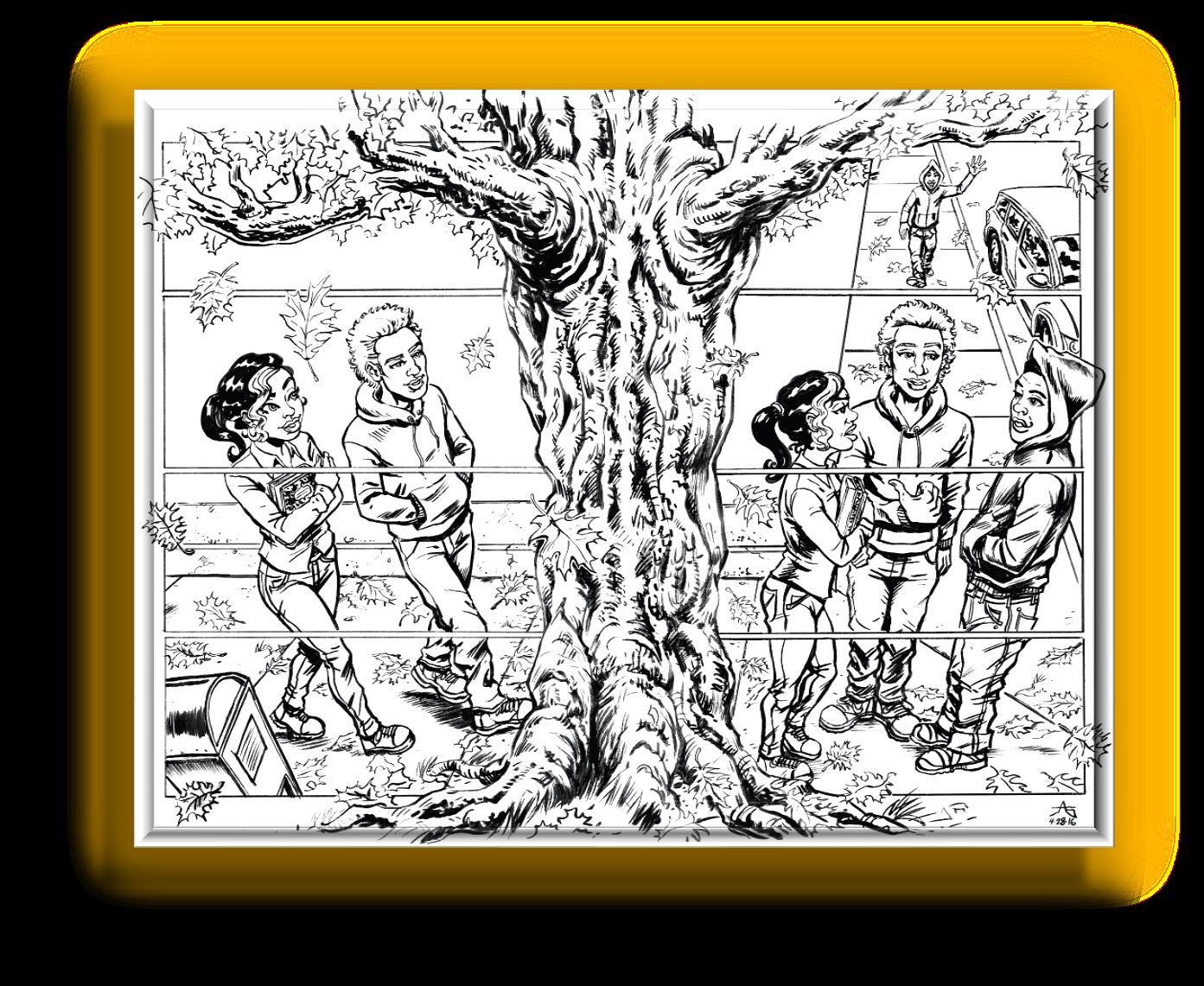
I look around to see if the other youth seem engaged. I recall a prior conversation with one of the participating project artists who was also a former teacher, and he advised me that no matter what, fight against silence. Even if you must repeat yourself. Fight silence in the room. Any interaction is better than no interaction.
“So … like I said, anything you want. Anything.”
“The only limit is your imagination.”
Good god, did I just that? I promised myself that I would not that. Such a lazy cliché! These poor kids.
Yet somehow, despite ineptitude, I notice one the youth, a tall angular named Russell sitting in back of the room, appears just on the verge offering a thought.
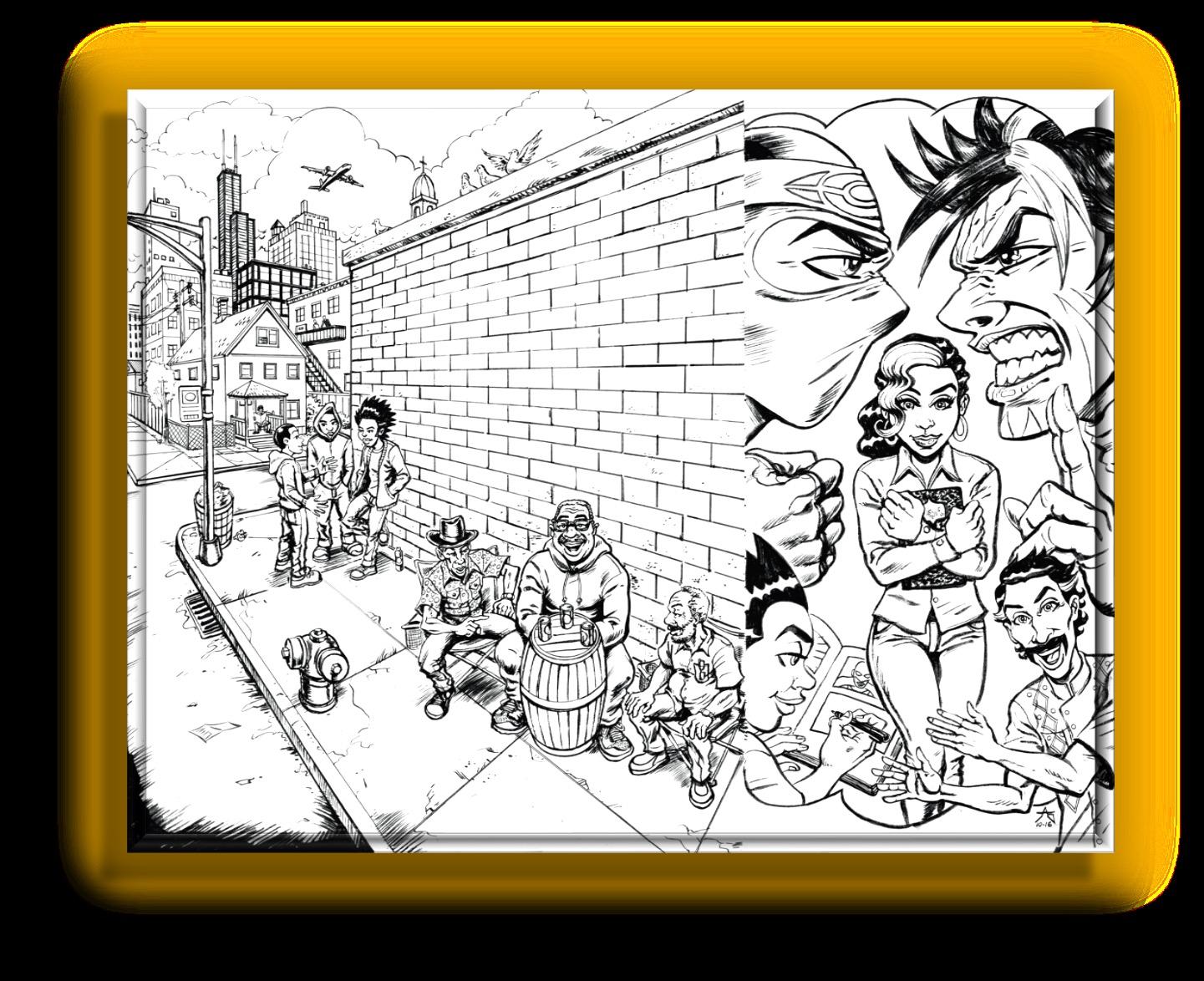
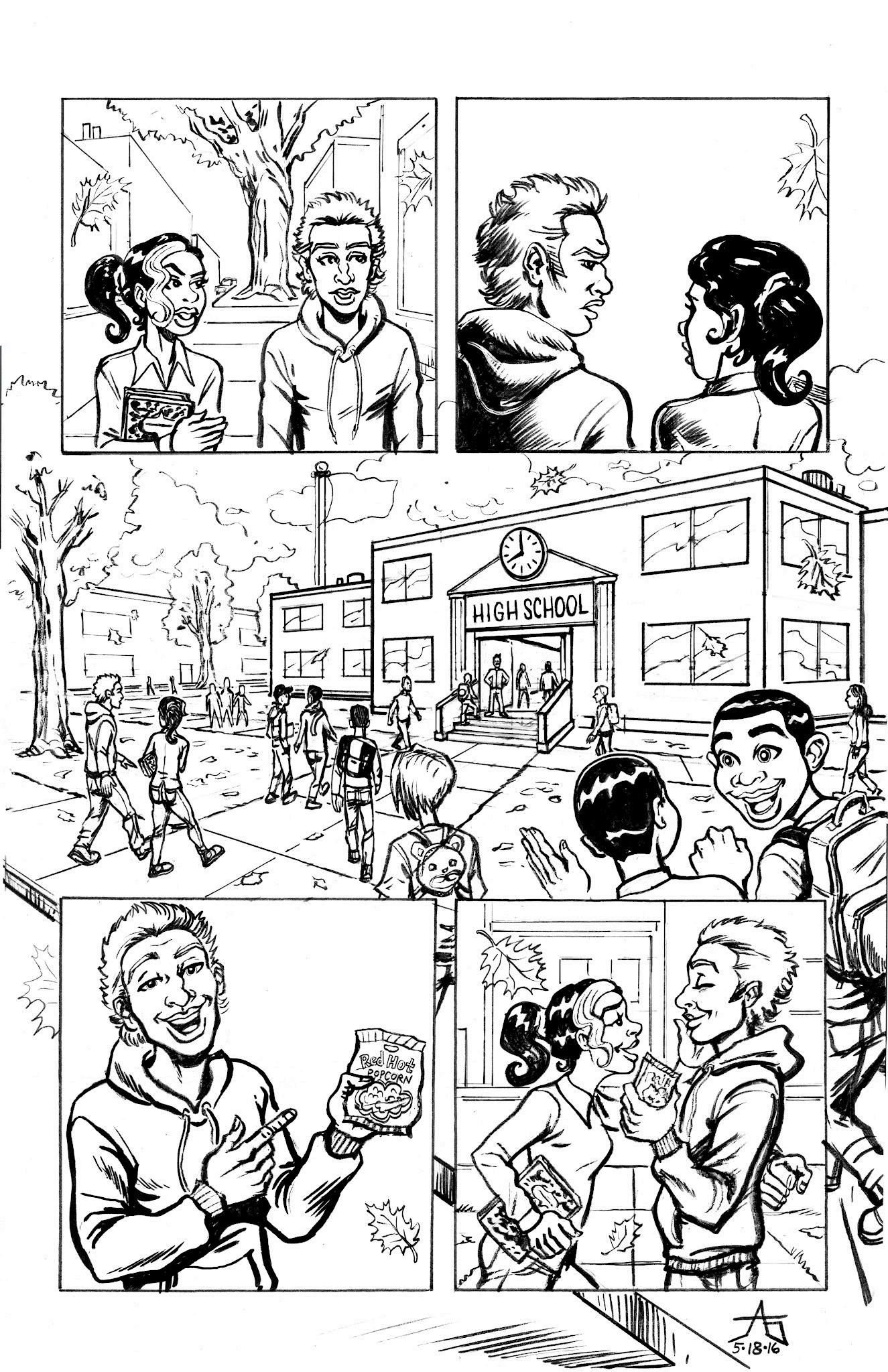


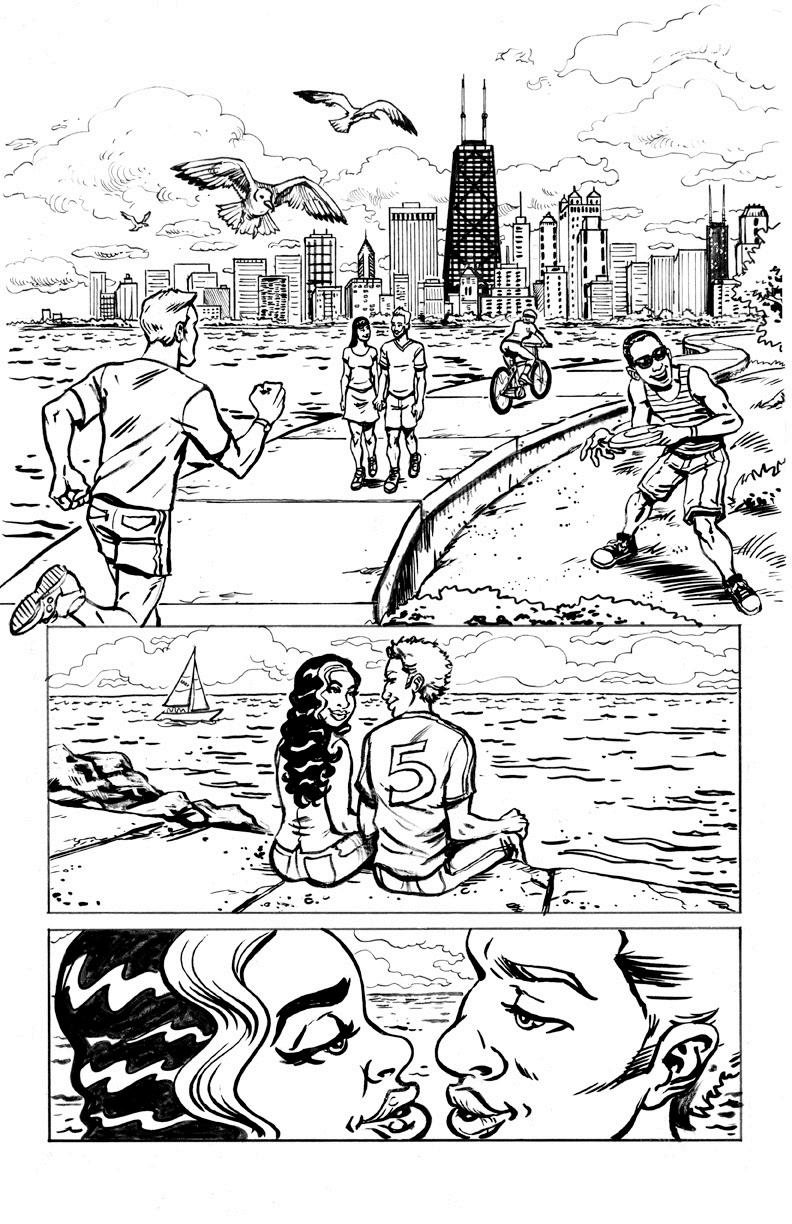

And just as suddenly, another youth – an animated young man named Andre sitting in the front row, proclaims boldly, “I’ve got an idea. I know what story I want to tell. And it’s going to be great!”

Holy s@#&, I think to myself. Is that genuine interest I hear? It can’t be.
The kid is setting me up. Brace yourself, here it comes.
It is then when Nehemiah quickly responds, “damn, that was all sudden man – so what’s your idea? All passionate and stuff.”

Andre, smiling coyly, “well, that’s because it’s a great idea if I do say so myself.”
He then collects himself and proceeds, “alright, so there’s a lot to it, but it all starts with me walking to a party that me and my friends heard about. You know, just a small house party down a few blocks from my place. No big deal. And we being teens, you know, we’re thinking we’ll just head down there and have a little fun and hang out.”
I listen attentively as Andre’s hand gestures become more animated. Like me, Andre tends to talk with his hands. I don’t know this kid from Adam, but I already like him.
“So, we go to this party, and it’s cool. Me and my boys arrive, and we see some people we know, and some we don’t, but everyone is hanging out, and the vibe is cool.”
“And then, out of nowhere we hear this commotion from outside.”
“Commotion?” I ask. “What kind of commotion?”



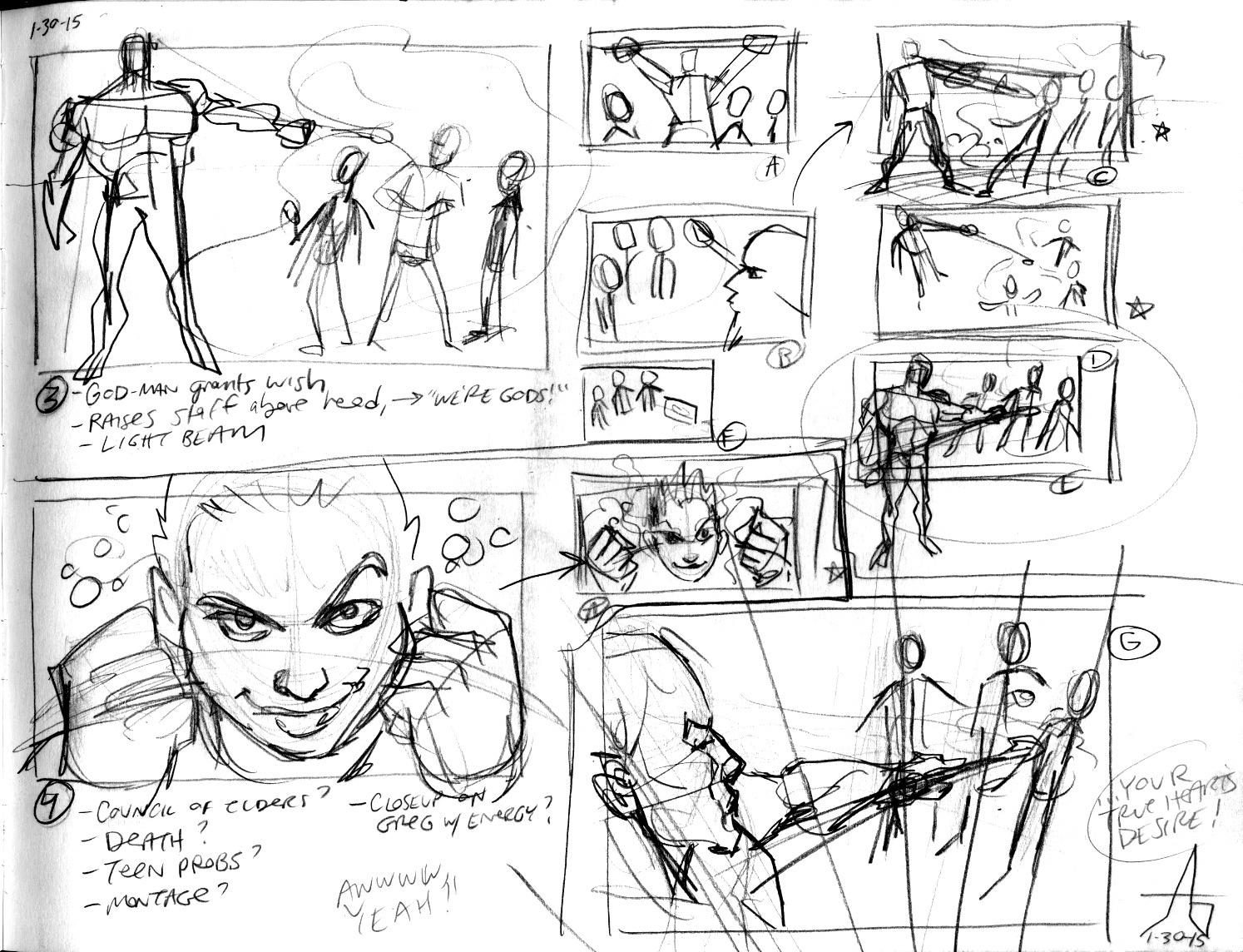


Andre thinks about it for a moment, “I don’t know, something like a ringing bell, maybe. But it’s something different. It’s a sound that immediately draws me and two other guys outside to the alley, where the sound is coming from.”
To my modest surprise, as Andre speaks, I begin to envision what the comic story might look.
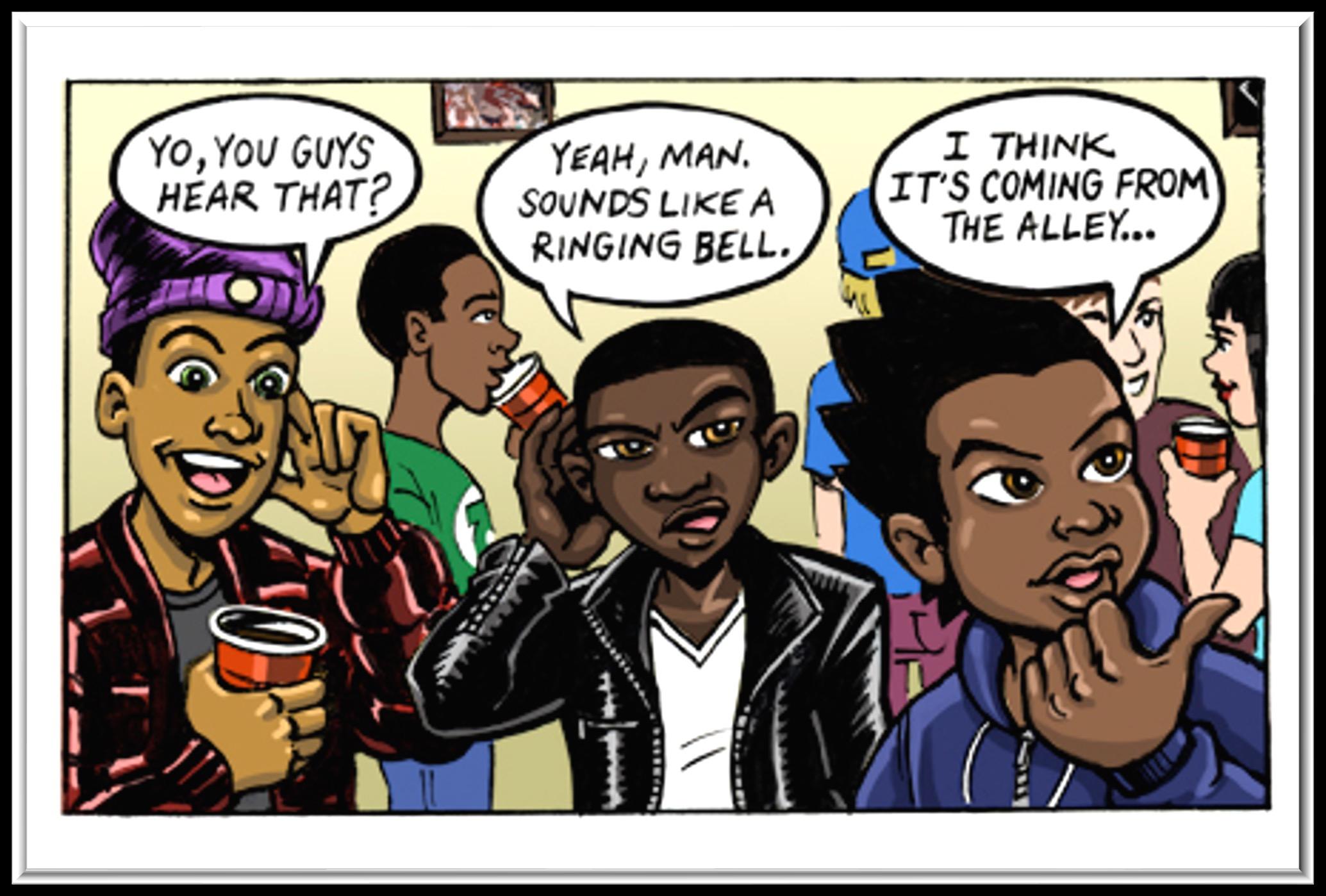
“So, we go out there, this alley, and we see these stairs – like translucent, glowing stairs – rising up out of nowhere and going up towards the sky.
And me and these two dudes, who I don’t really know, but who were at the party, we are looking at each other in amazement and like, holy #$^%!”
“And I am kind of scared, but at the same time, I see those two guys that came out to the alley with me start going up the stairs, and I immediately follow them. I am thinking that I’ve GOT to see what is up there at the top of these stairs!
“So, we go up to the top of these stairs, and that’s when we see this godlike figure, he kind of looks like Zeus and he’s got this long staff, and we’re looking at each other, not sure what is happening. And I am thinking to myself: is this a dream? But it’s so vivid and real, I am just going out of my mind!
Andre goes on to explain his vision for the story emphasizing that it will not only action based, but also about his own internal struggle of dealing with the morality of having so much power and using that sudden power for both good and evil. All of which would occur in the context of his West-side Chicago neighborhood, and with other people still viewing him as just another teenage boy growing up.
“I mean, there’s a lot to it. There’d be a counsel of elder gods that will advise me as I develop my powers.”
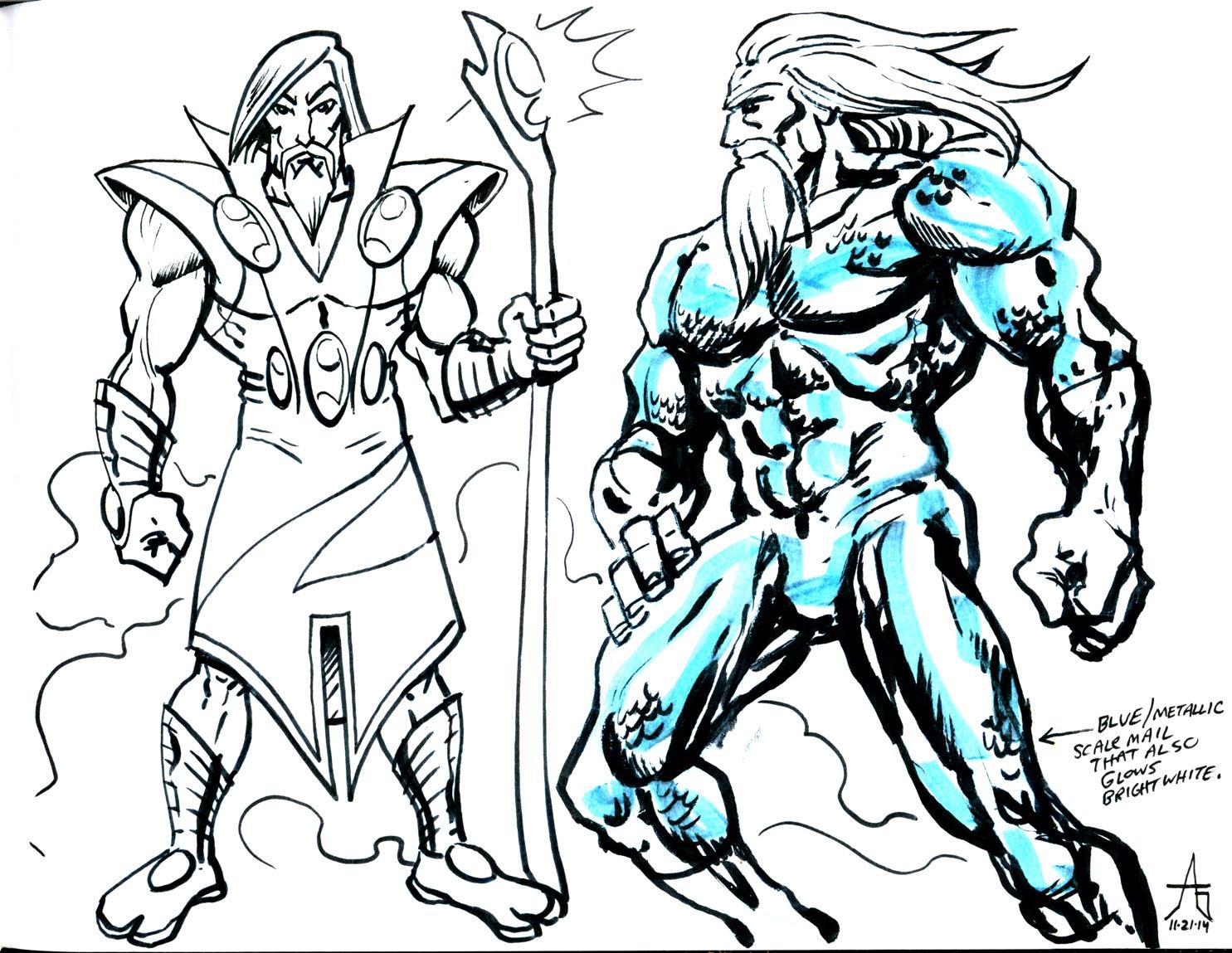
“And I want death to be a central theme in my story. Actually, I want death to be a character in my story that I will have to confront. I know that probably doesn’t make sense right now, but I can explain as we get more into it.
The main thing is that this story will have a lot of different elements. It’s going to be deep. But I also want it to be fun. Kind of like me. I mean, like I said, I’d still be me in this neighborhood with the same family and friends.”
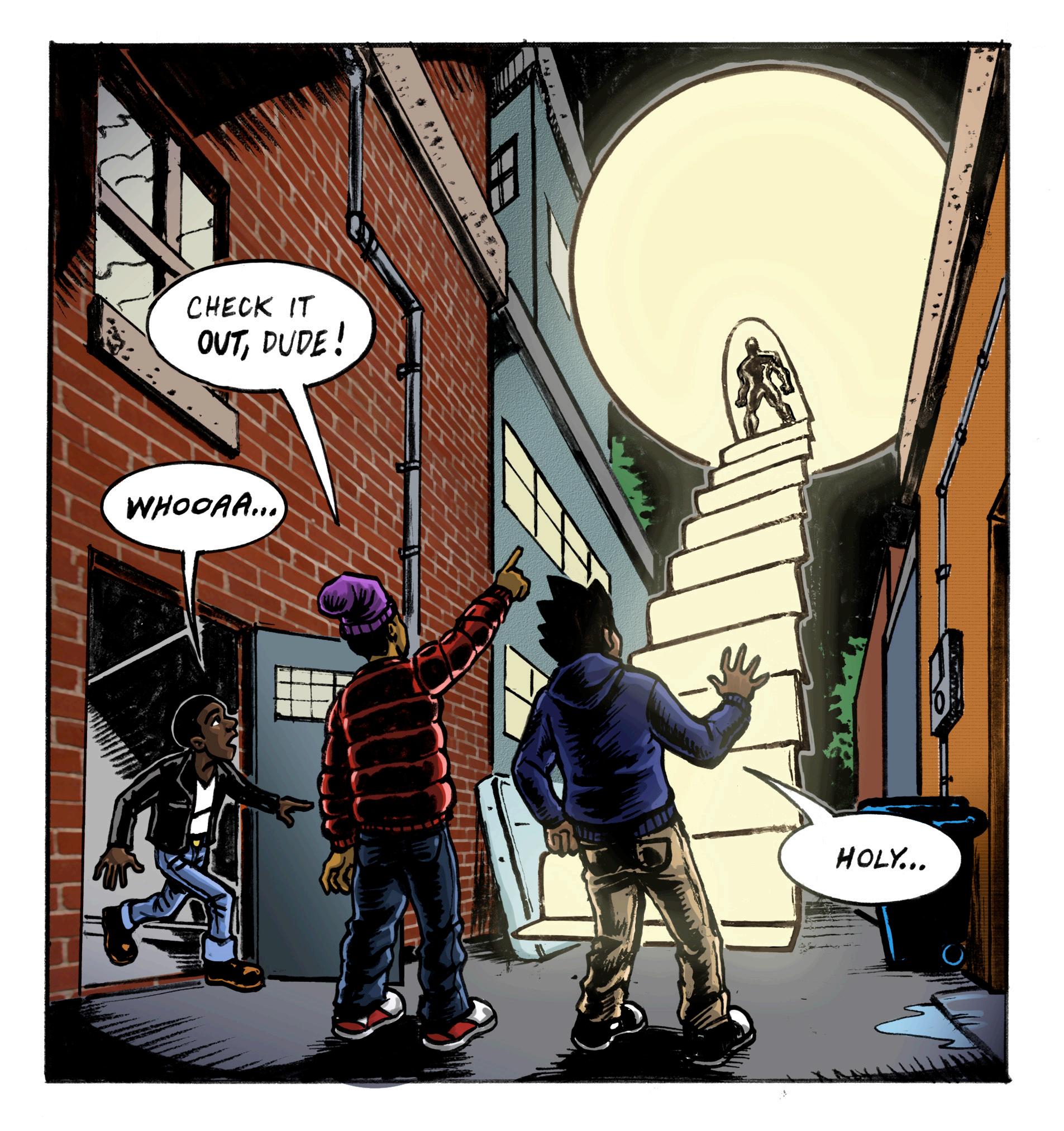
So, there’s always going to be that normal stuff that I got to deal with as a kid in this neighborhood. I’d just be A GOD at the same time!”
Nehemiah is the first to respond, “yeah, that’s pretty good. I like that. You can do a lot with a story like that. Lots of action, too. ”Greg responds, “action and romance!”
“Romance? What, you in love with yourself? I didn’t hear any romance.”
“Yeah, I forgot to mention that one of the fellow gods I encounter later in this story is a young woman that I happen to fall in love with.”
Nehemiah shakes his head, “Of course. And she probably looks like Beyonce.”
Andre lights up, “Now that’s not bad! Maybe I should introduce her at the beginning of my story!” The boys laugh.
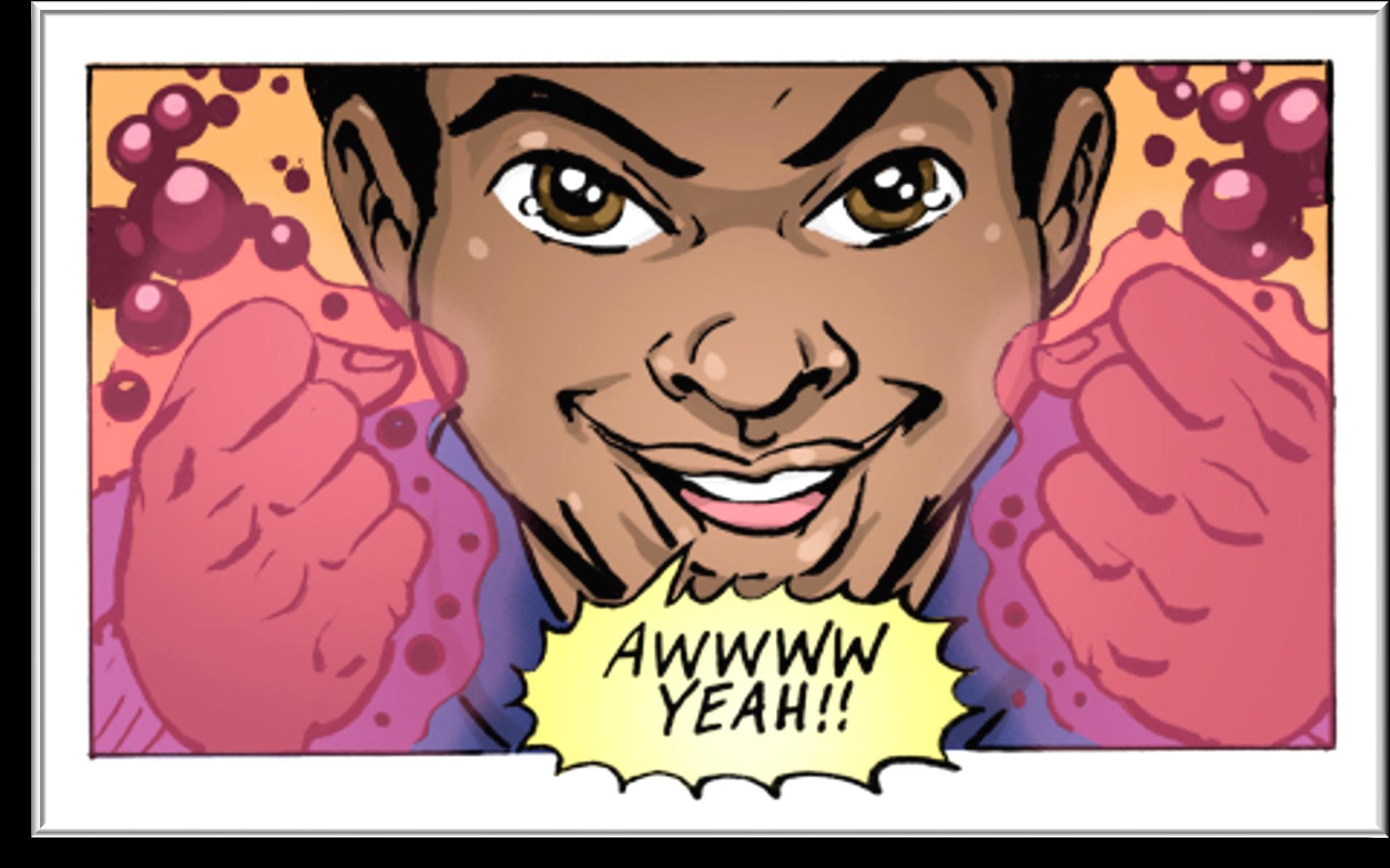
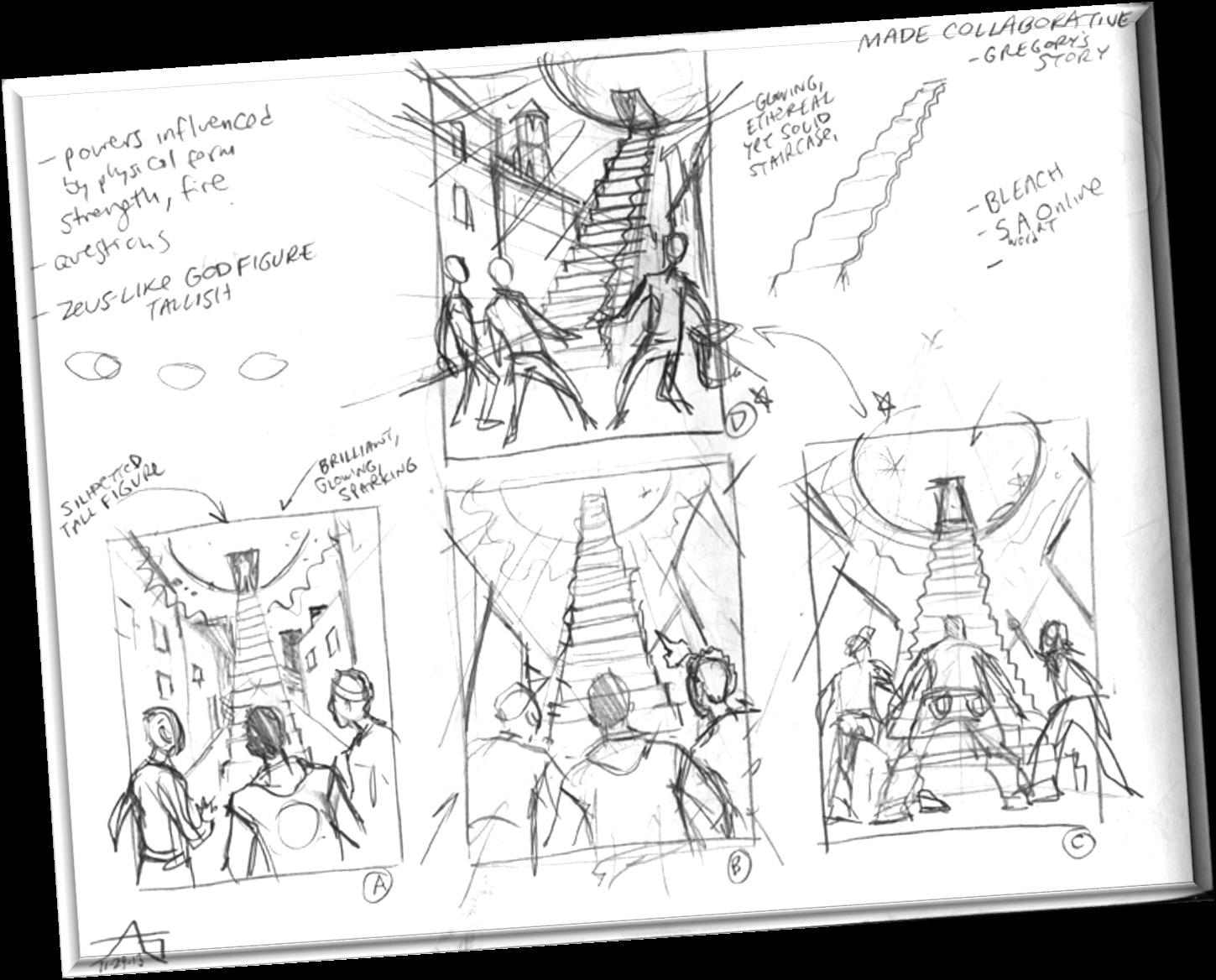
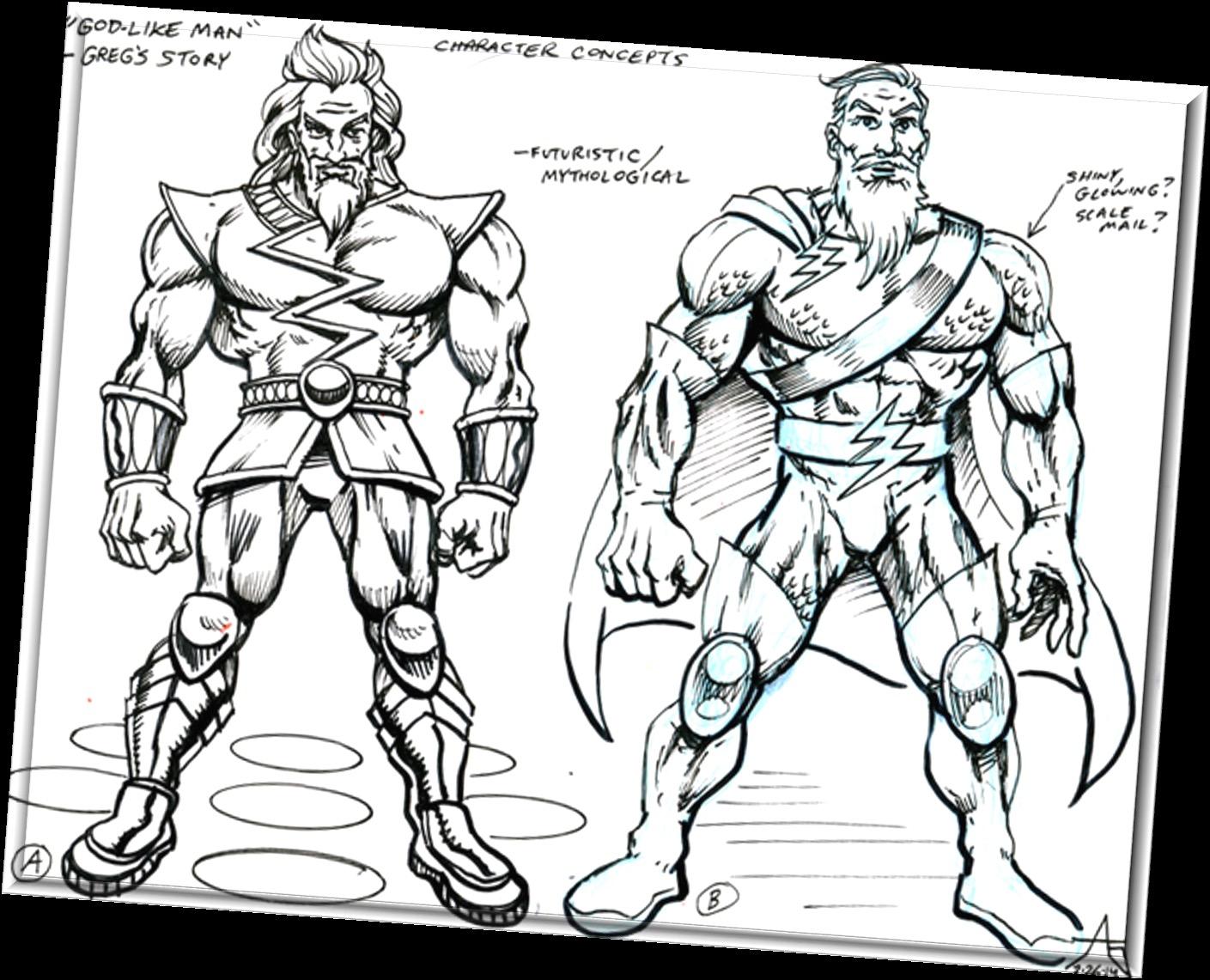
With that, I wrap things up with the youth. They gather their bags and other belongings and make their way out on their treks home within the neighborhood.
And it was at that time, after the kids left the room and I was going through my project notes, I thought to myself for perhaps the first time since starting this project that maybe, just maybe, we might actually have something here. Something that could bring real value to the participating youth and artists alike, just as we had set out when we first started this modest project that we were calling Made Collaborative.
But I needed to figure out how to create a comprehensive story based on these ideas. On on that score, I knew a lot of work and uncertainty lied ahead…

3 -
Yet a few more months later … - Chapter

Dreams Are A Funny Thing
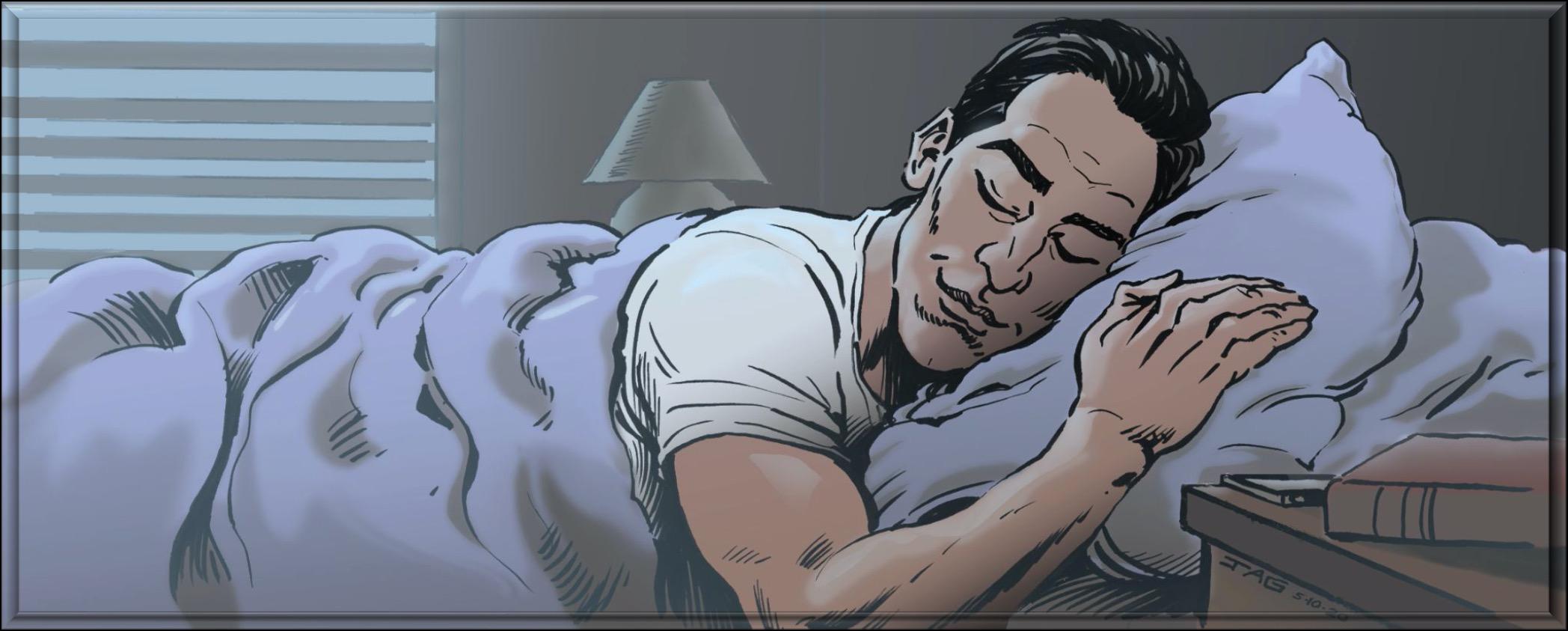
I had a dream. And this is the honest-to-god truth. I had a dream the other day that Paul Simon … you know, Paul Simon from Simon & Garfunkel?
Paul who, some of you may ask? Okay, if you need a very quick snapshot summary of Paul Simon …

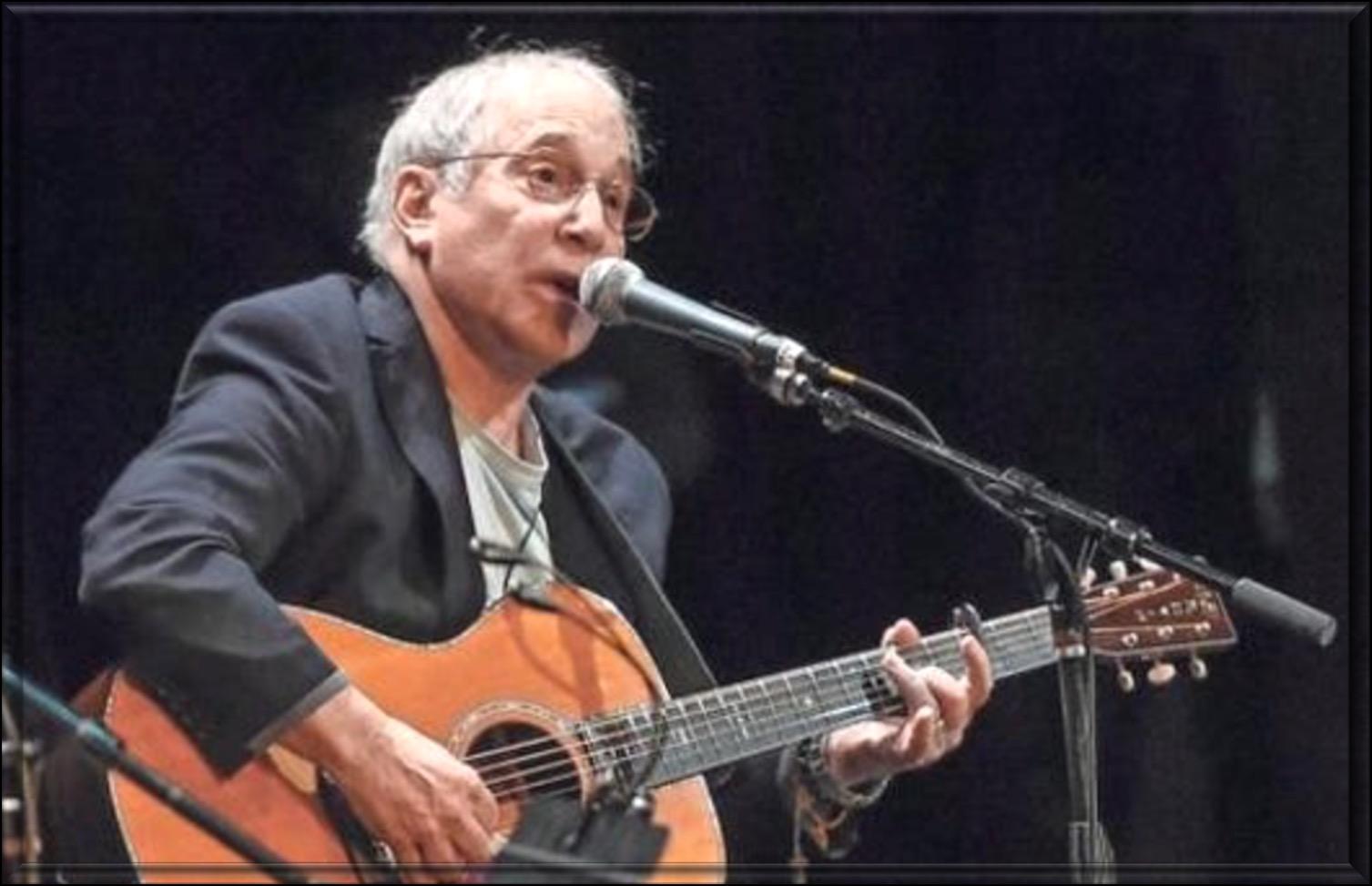
Paul Simon is a treasured American musical icon loved by virtually all. He boasts a career that has spanned 7 decades, countless musical hits (61 total billboard hits actually … yes, 61 Billboard top hits, including songs Bridge Over Troubled Water, Still Crazy after all These Years, Mrs. Robinson, Fifty Ways to Leave Your Lover, etc.). He also has 18 Saturday Night Live appearances among his many television and movie credits.

So … in my dream, that Paul Simon was trying to fight me.
And not a young man version of Paul Simon. No, the current nearly 80-yearold, 5’3”, 140-pound version Paul Simon. Yeah.
And I mean like a real fight.
There he was, Paul Simon, taunting me as a pack of onlookers crowded around like some sort of bizarre school playground scene, all presumably waiting to see Paul Simon kick my ass. For what reason, only the dream gods know.
I remember waking up at some point after Paul Simon poked my chest and asked me if I was “feeling froggy.” I immediately nudged my then-fiancé-now-wife to tell her about the dream while I could remember it. Just so damn random.
Thoroughly unimpressed, she turned away and muttered something unintelligible to me … I can only assume it was for me to go back to sleep … with perhaps a colorful word or two in Polish for emphasis...
But I couldn’t shake it. Paul Simon wanting to go fisticuffs? What the hell is that about? How do you even begin to psychoanalyze something like that?
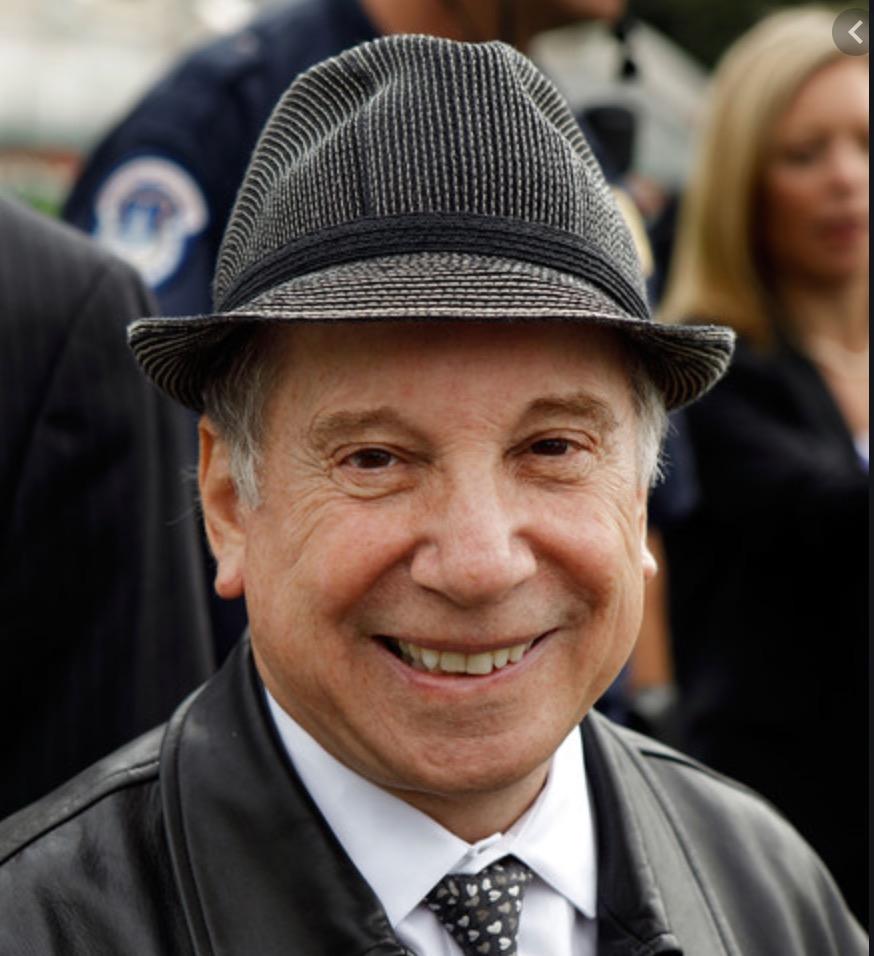
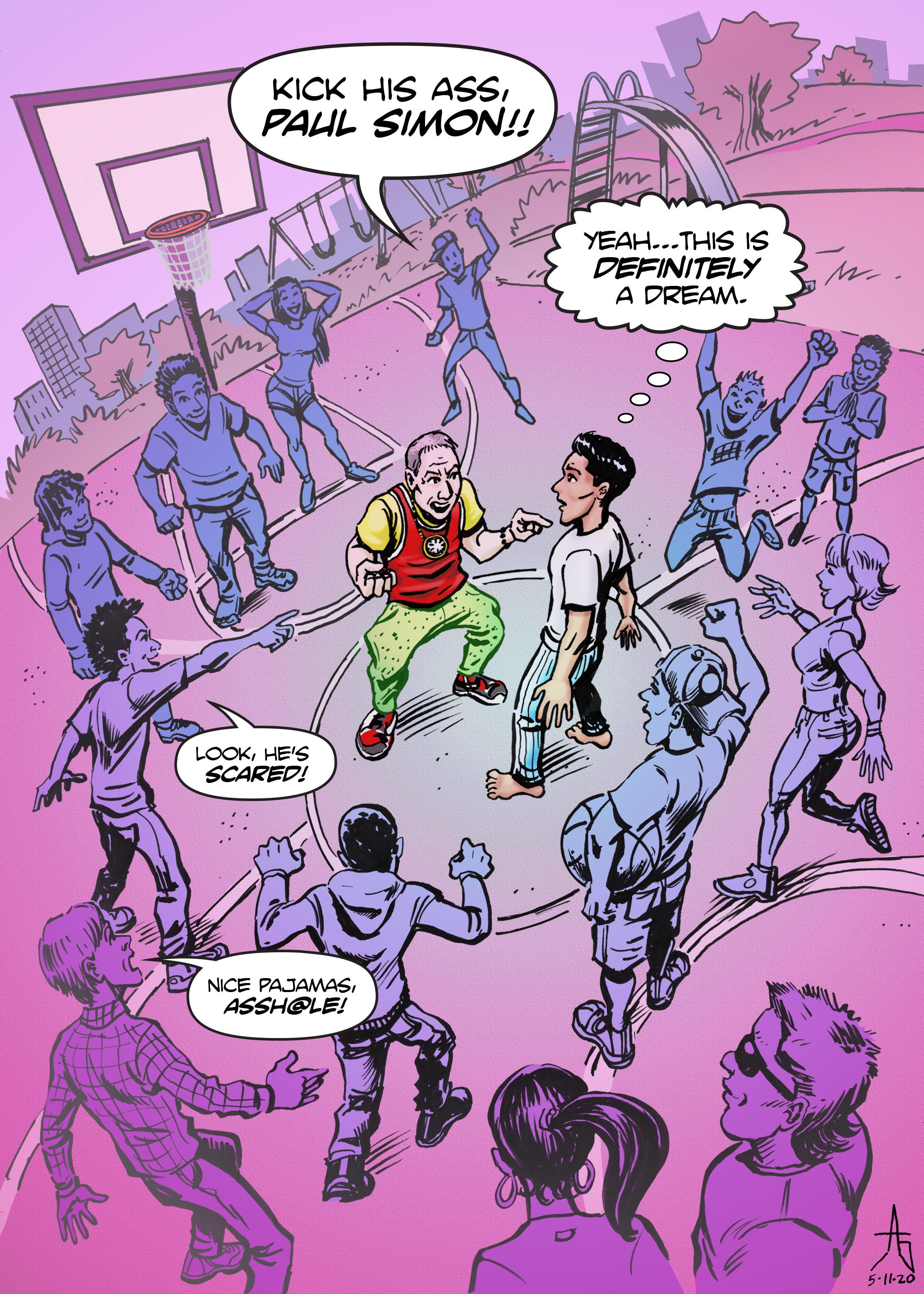


Dreams, they’re a funny thing, right?
Of course, many articles and books have been written about the phenomena of dreams. Some say they are a window into our subconscious those repressed needs and fears that lie just beneath our proper exterior.
Others say they may be a more practical mechanism that allow us to process our thoughts and problems of today, whatever those may be at any given moment.
And still others say that they aren’t anything at all, apart from random brain impulses that are ignited when our brains finally enter that ultimate REM sleep state, when we come as close as possible to separating ourselves from the reality that is our everyday lives.

In short, who the hell really knows? Dreams are a mystery. And, it is perhaps because they are such a mystery, that they were a constant theme during our initial collaborations with the participating youth. Time and time again, just about every youth we initially worked with during those early collaborations would reference dreams as part of their story or character ideas. No other theme was as prevalent.
It was in that context that I would begin to think perhaps there was a way to use the mystery of dreams to connect each of these youths’ seemingly disparate ideas into one common narrative? And by doing so, maybe create a storyline that we could continue to build upon with other youth?
But how to do that exactly … well, that’s where I would struggle.
By that time, I had conducted countless interviews with the initial participating youth. I worked with professional artists to produce corresponding concept sketches and illustrations based on those interviews and collaborations. And I had even developed some initial working scripts.
But something was most definitely missing. And creatively, I had hit a creative impasse.


And as I would think about it more, perhaps that’s what Paul Simon represented in my dream? This creative giant (figuratively speaking of course) mocking my own creative ineptitude? And the youth that surrounded us during our showdown? Well, perhaps they represented the participating youth on my own collaborative project as I struggled to bring their ideas to some sort of project reality.
Of course, alternatively, the dream could have just been a product of those random brain impulses right before I entered some much-needed REM sleep. But, regardless, what was clear, as I was dreaming about getting my ass kicked by Paul Simon, is that I needed help.
Okay, let me be more specific. I needed help on the project.
And on that score …
Enter Len Kody.

- Part II -
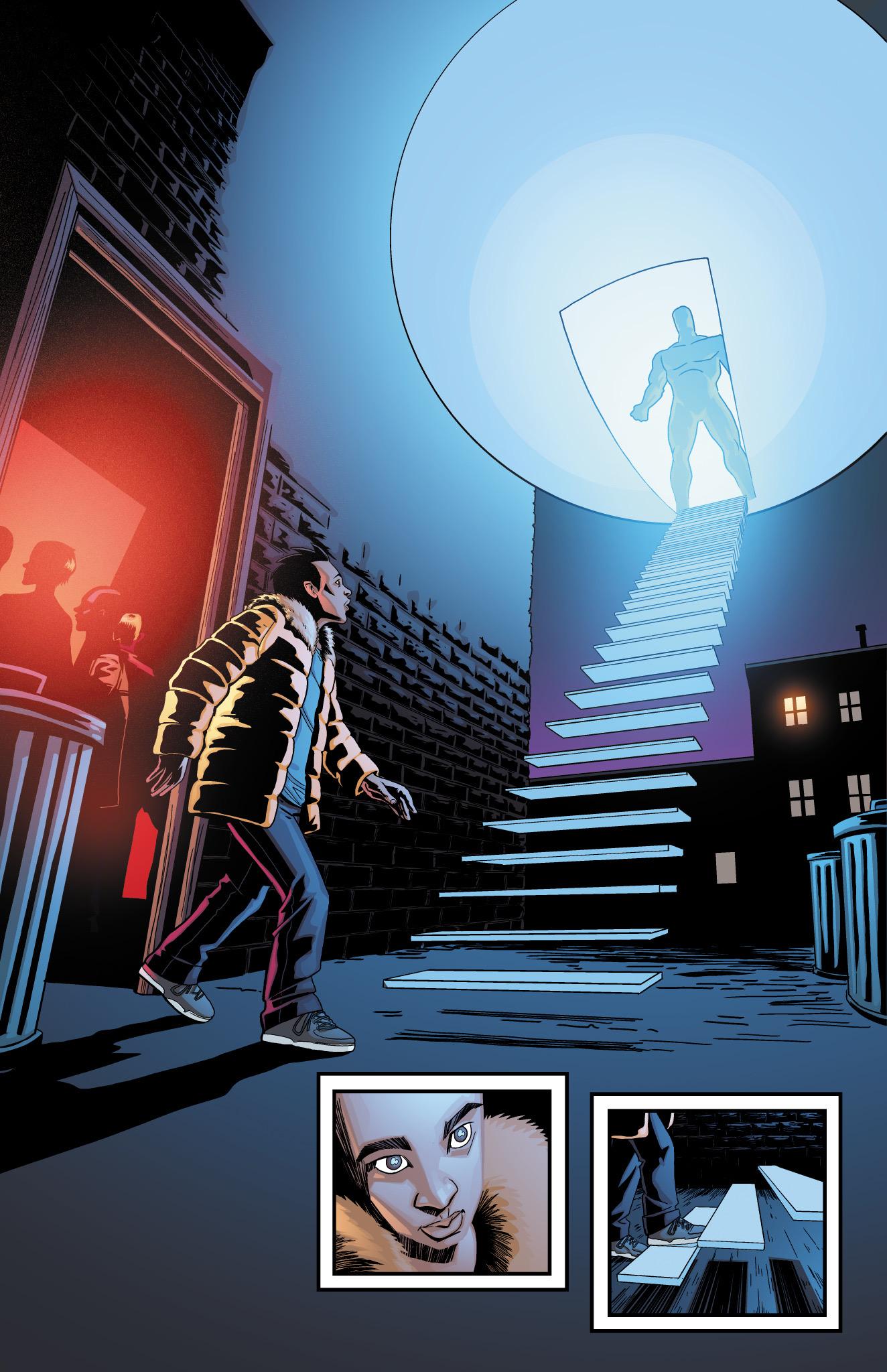

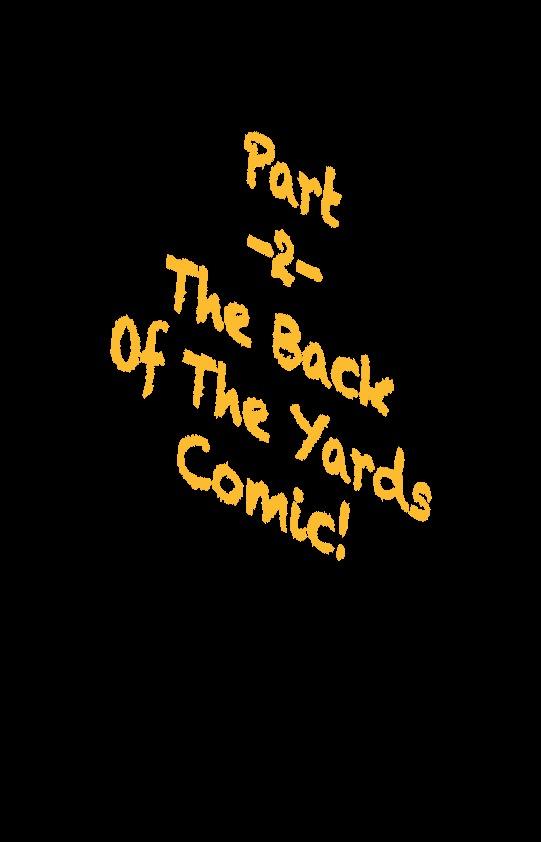
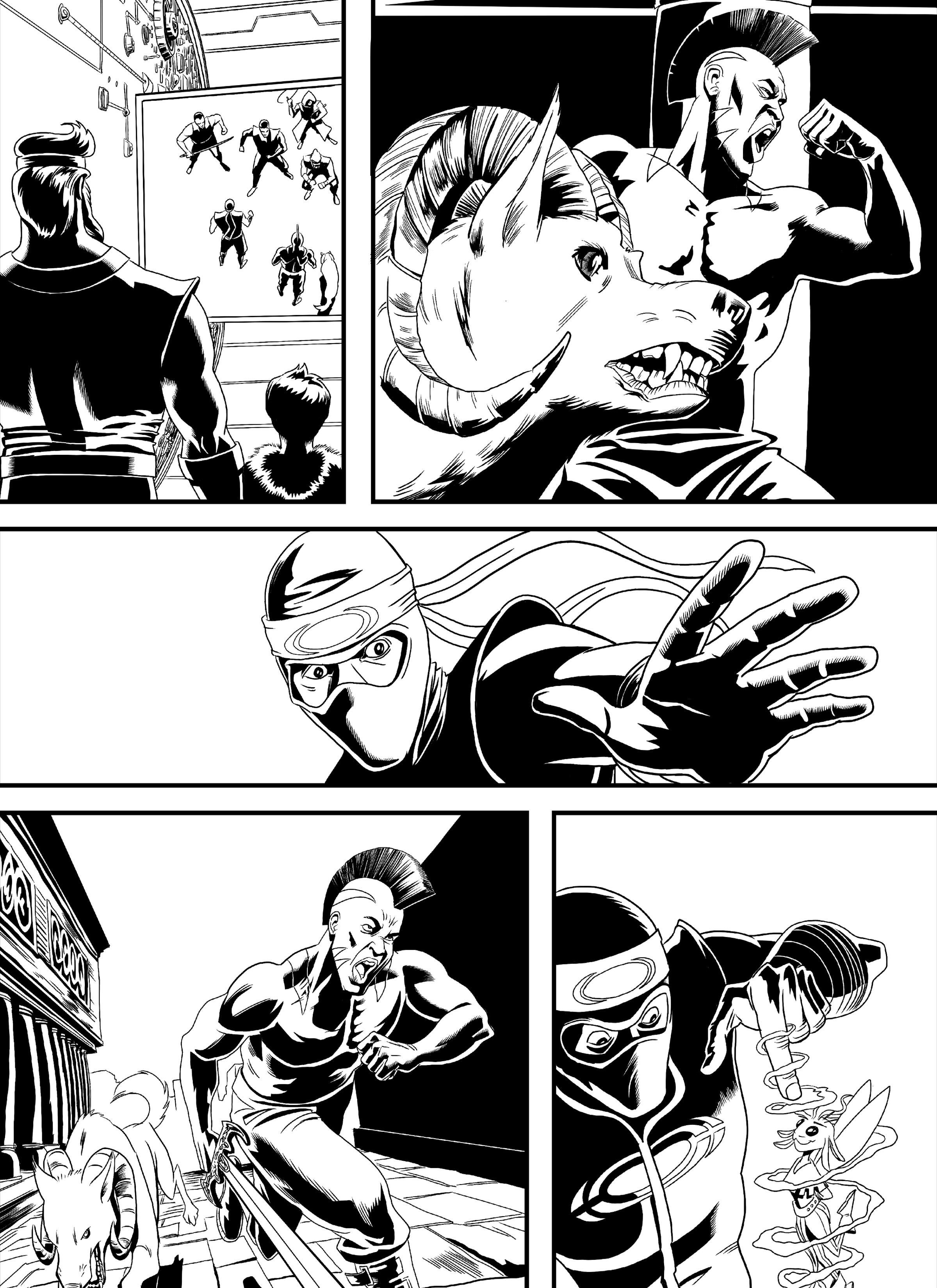

The Early Collaborative Process - Chapter 4 -
The Back of the Yards Comic –The Early Collaborative Process
By Len Kody
The magic of creativity begins with inspiration, but it can only be sustained by unwavering dedication and tireless grinding. Project founder, Jimmy Briseno, has since recruited others to grind with him on the Made Collaborative journey (and we’re so glad he did!) but the journey began with him, all by himself, in front of a classroom of kids waiting for what he was going to say next.
It took a little coaxing, at first, to get things started, but once the kids caught the storytelling bug they were off and running. It only made sense to bring a small team of artists into the collaborative process to add greater depth and legitimacy to all that Jimmy had documented from his afterschool creative sessions with the youth.
Together Jimmy, the artists and the youth had refined and expanded upon a number of narrative threads. All of them fresh, original ideas from the kids, based on their lives and heightened by their favorite pop culture. Jimmy and his collaborators had compiled a “series bible,” of sorts, with model sheets, storyboards, descriptions of plot and characters. There were even some preliminary scripts that Jimmy had worked out with the youth.
It all amounted to the ingredients of a great comic book story. It had elements of romance, adventure and that all-tooelusive authenticity that came straight from the kids. But it wasn’t a comic book yet. Only the ingredients of one.
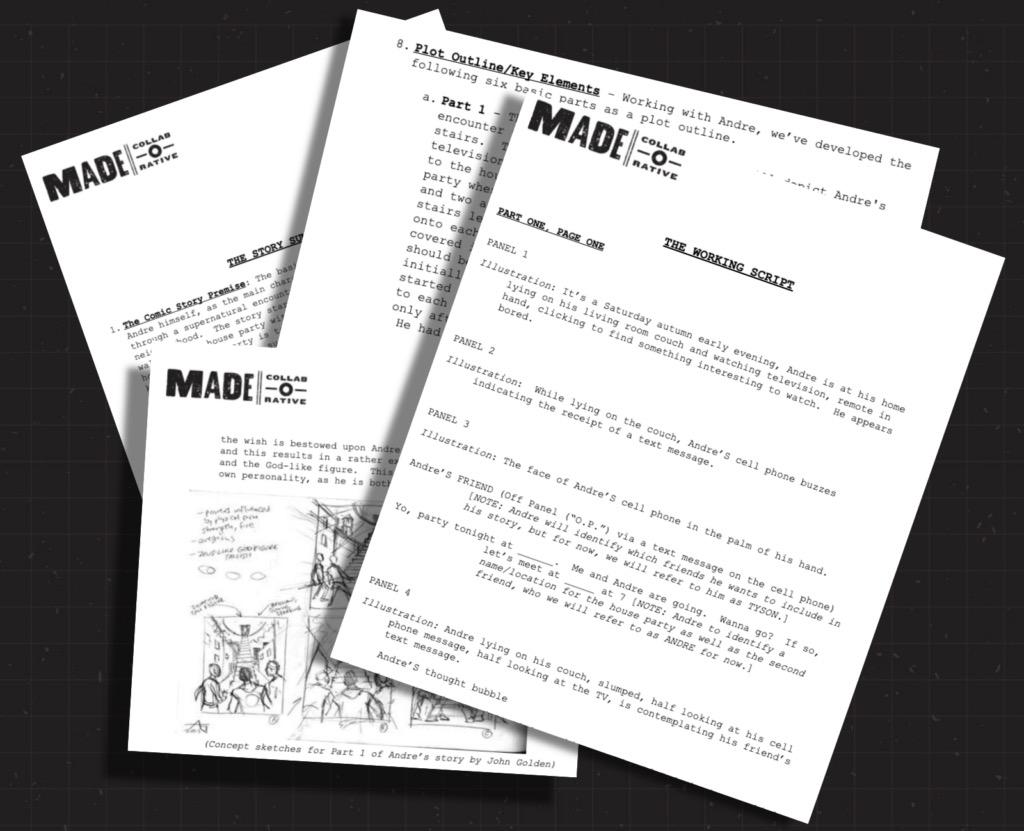

Telling a Story About Telling a Story
The first round of collaborations had produced a wide variety of narrative content. Which was wonderful. That’s exactly what the kids had been encouraged to do: tell whatever story they felt was worth telling. But it also presented a challenge in bringing all the disparate elements together into a harmonious whole. That was the challenge presented to the comics production team seeking to make “Back of Yards’” very much a reality.
An anthology of disconnected storylines would have been easier, but not nearly as engaging. We, on the comics production team, were inspired. We were inspired by the kids’ authentic, original stories and driven to produce something worthy of their courage. Because it takes courage to nurture the creative impulse and make something new in Chicago’s harsh urban environment. We wanted to reach a little higher.
But how?
Eureka!
We’d frame the Back of the Yards series in a context that mimics the one in which it was created! (Are you still with me?) In other words, the teenaged characters in kids’ stories would all go to the same school. And they would all be familiar with each other, too, because they are all part of the same afterschool arts program led by the same mysterious

INTRODUCING CARL CASTANEDA!
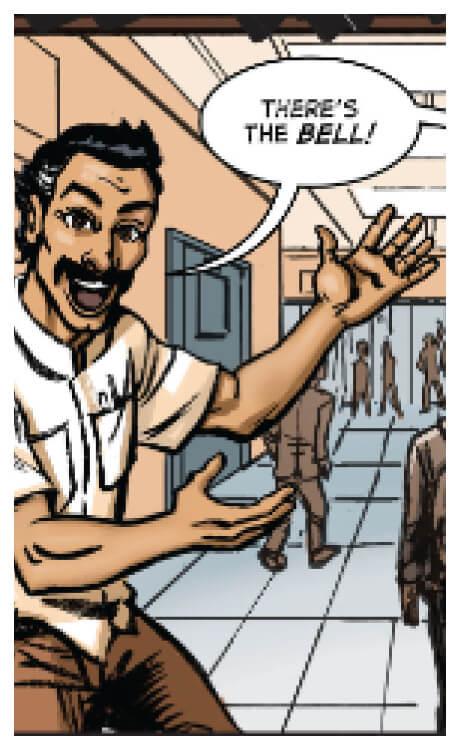
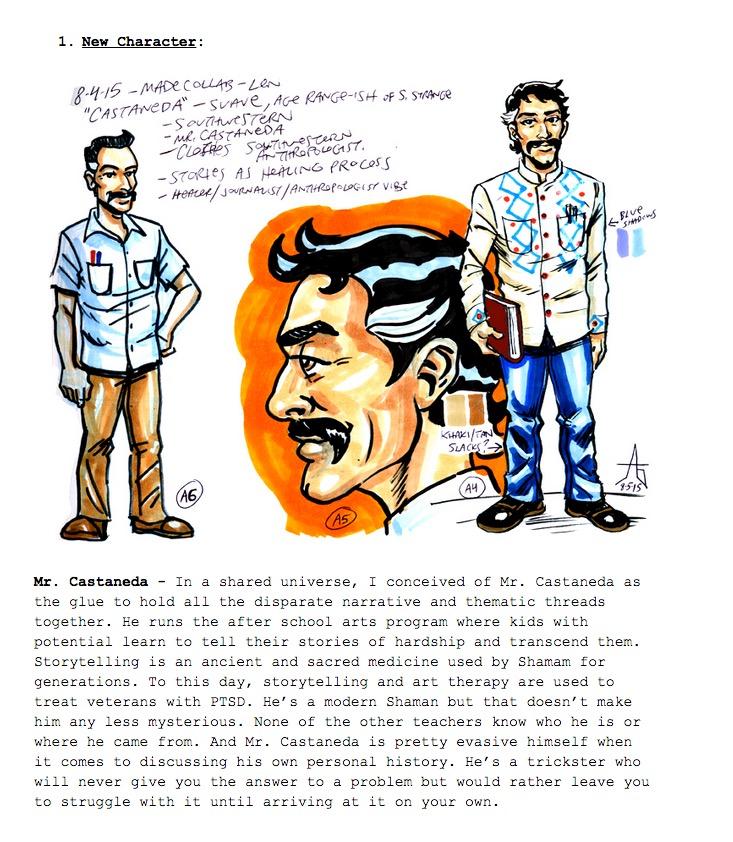
Presenting the comic book this way created two opportunities for the production team. First, it allowed us to incorporate elements of Made Collaborative’s amazing genesis into the comic itself. Because, as fascinating as the kids’ stories are, just as appealing is the story behind the story. That is, the story of the kids who created the stories.
On a deeper level, structuring Back of the Yards in this way forced the production team to search for the common themes influencing all the kids’ stories. They were by no means obvious. The stories ranged from heartwrenchingly real to mind-blowingly fantastic. But the search, indeed, bore fruit, and it led us a journey starting on the Southside of Chicago and taking us to places beyond space and time.
So, how does a story of young love and betrayal connect to a story of secret chiefs from a higher dimension? How do the video game fantasies of two young cousins play into it? And how is the magic of creativity and storytelling somehow responsible?
Read on! …

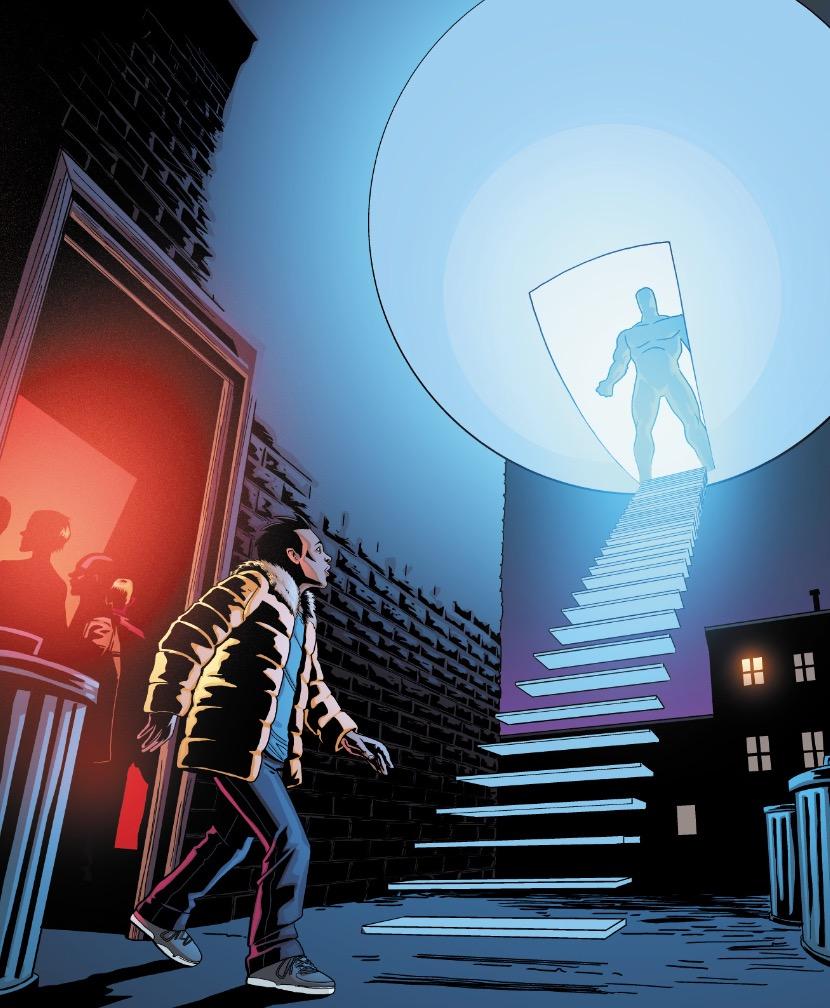
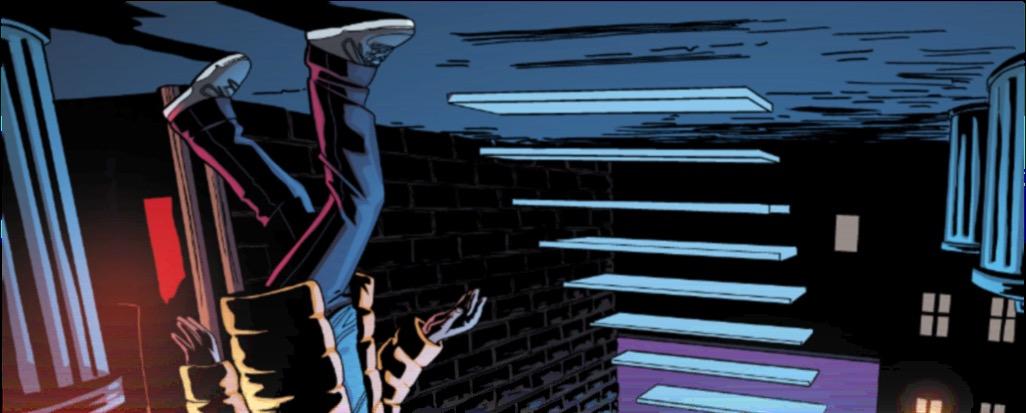

The Initial Characters - Chapter 5 -

Introducing Andre Davis –A Young Man With Big Ideas!
Andre Davis is based on an intelligent and charismatic young man from Phase One of Made Collaborative’s youth outreach, and hence, he takes the lead role in our initial story arc of the Back of the Yards comic. Like the Chicago youth who inspired him, he is a curious and creative character, inclined to question, rather than take things at face value.
Andre finds himself the recipient of mysterious superpowers as a result of an amazing encounter with one of the inscrutable secret chiefs of all space and time. He learns that he has a certain mastery over the strange world that we all go to when we dream.
“You can make your dreams real,” he is told.
But does that mastery carry over into the waking world too?
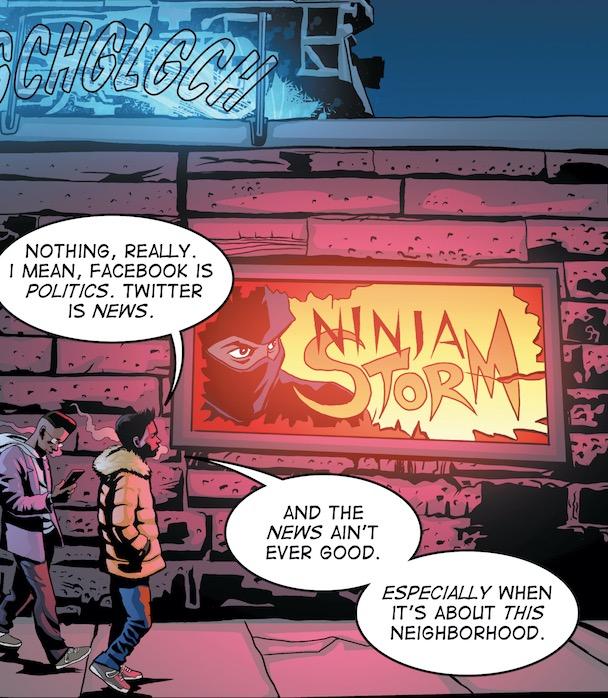
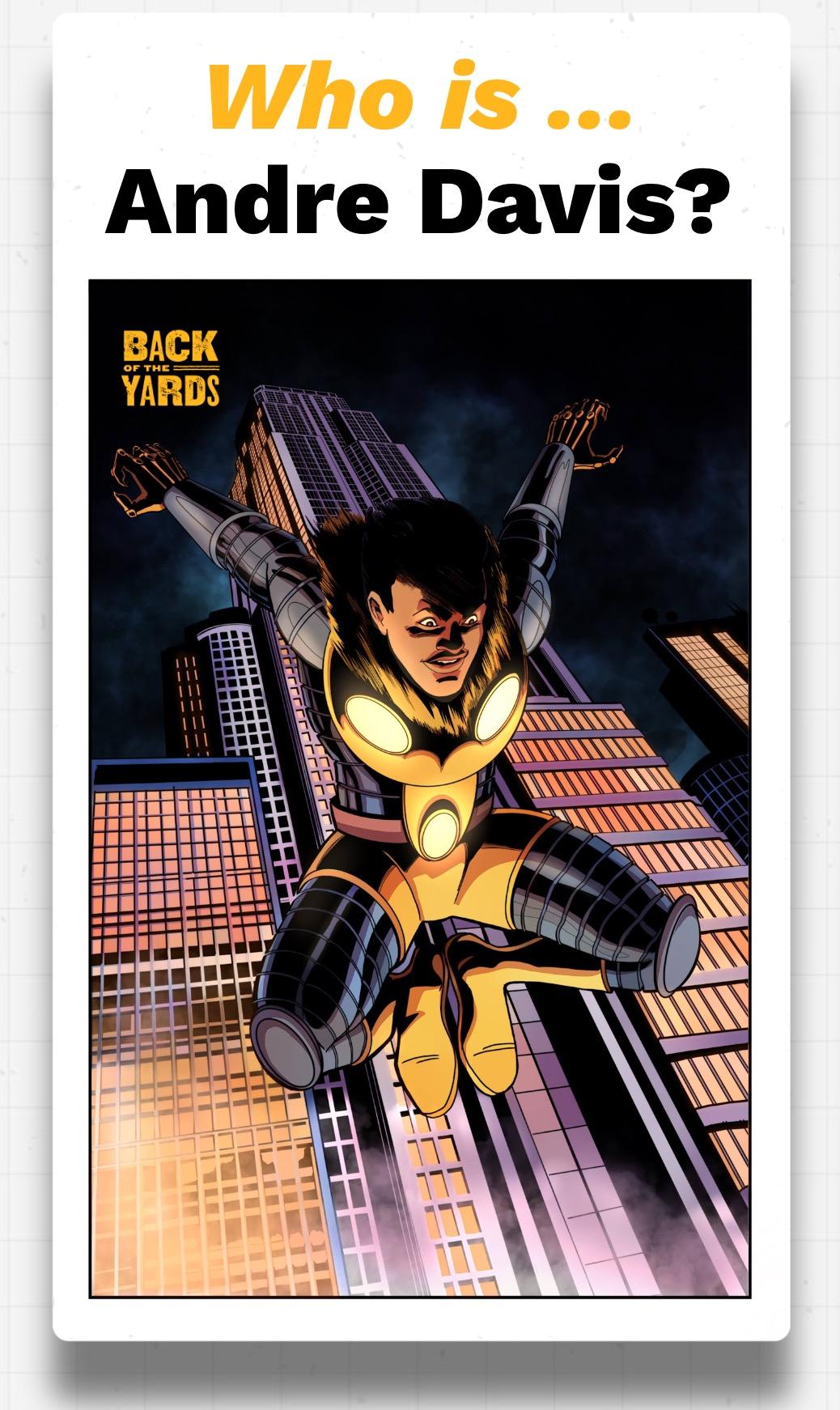
In the dream dimension, Andre’s formidable intellect is given regal form when his whole essence is enhanced to resemble a lion-themed superhero with heightened powers of strength, agility and perception.
The question posed by the Back of the Yards comic story arc is whether Andre’s superhero adventures are simply an escapist power fantasy or a representation of his highest, truest self.
And that’s just the start of the tale as Andre’s story will ultimately become intertwined with Tamia’s story of first love and betrayal
And Our Heroine Tamia Parker –
A Story of Betrayal & Empowerment
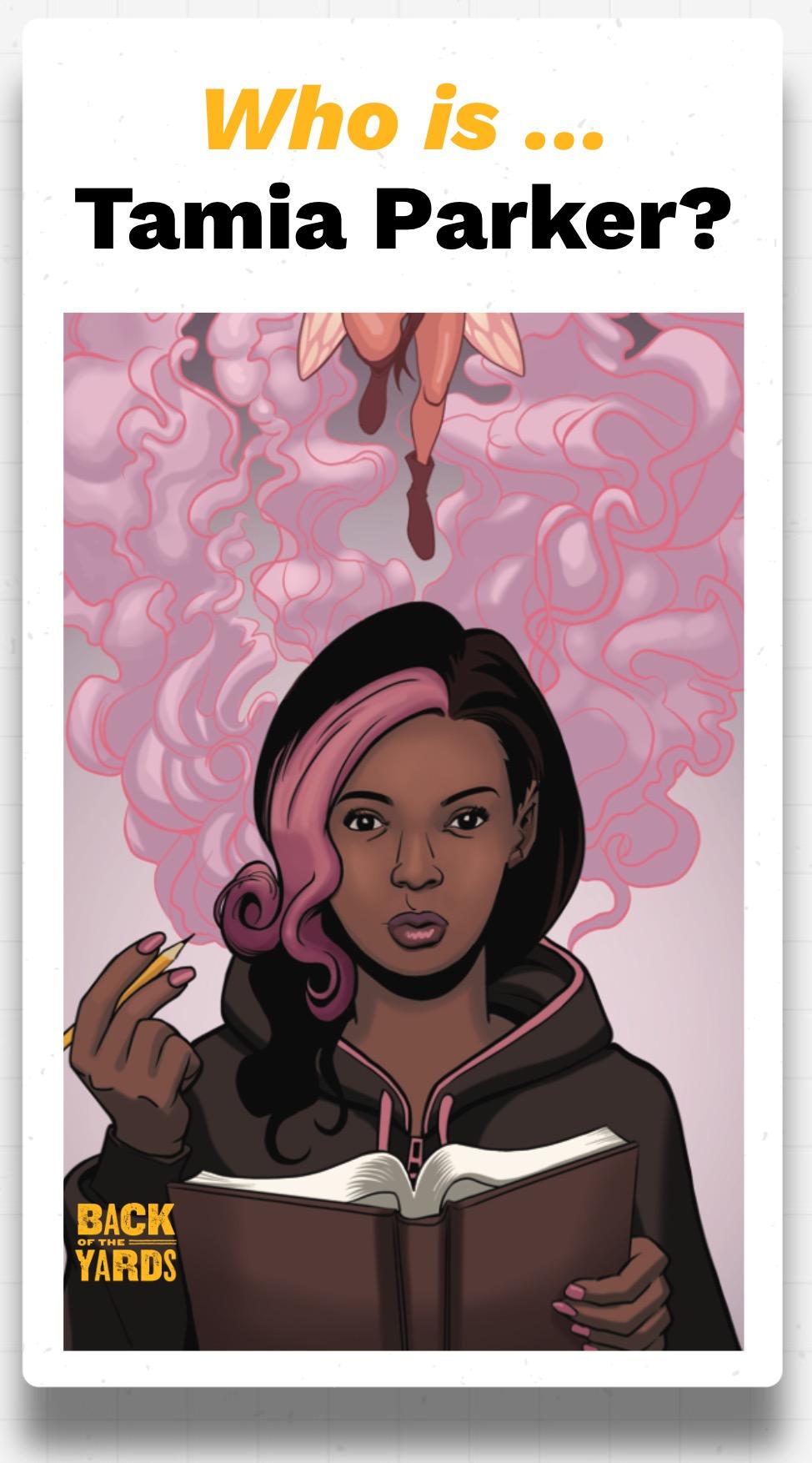

The Back of the Yards comic character of Tamia Parker was also inspired from the first round of youth collaborations in the West Side of Chicago. During those initial collaborations, Jimmy Briseno met with a number of youth who shared initial ideas for comic characters and storylines. One of those youth was a young African American girl from that West-Side neighborhood.
Tamia’s story is surely relatable, but it’s also based on the true-life experiences reported to us by participating urban youth. And, like many of the kids in our program, Tamia turns to creativity as both an outlet and an escape from her daily struggles. She is an avid artist and journaler. Her perspective gives the story emotional depth and balance.
Tamia is a powerful young woman still in search of her voice. Will she ever realize the heights of her potential, or will she continue to be stifled by those who seek to take advantage of her?
In the dream dimension, Tamia’s efforts to find her own voice are personified by a tiny fairy with a siren call that reaches beyond the boundaries of linear time.

Her potential is great, but still not fully realized, as the fairy form she inhabits is small, undeveloped and not yet a true agent in her own destiny.
The Young Cousins –Russell & Draymond!
Cousins Russell and Draymond share a fraternal bond that is cemented by the fantastic world they both share. It’s a world inspired by the manga and video games so popular in today’s youth culture. The stories they create make them feel powerful when they are so often made to feel powerless by neighborhood bullies and other stressors.
Many of our Phase One participating youth had similarly intricate imaginary worlds, worlds they would create with others. Made Collaborative has provided a structured outlet for these stories and we’ve developed them into real comic books with the help of professional artists and writers.
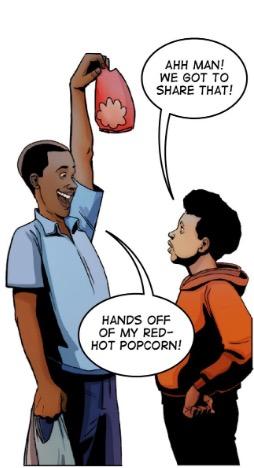

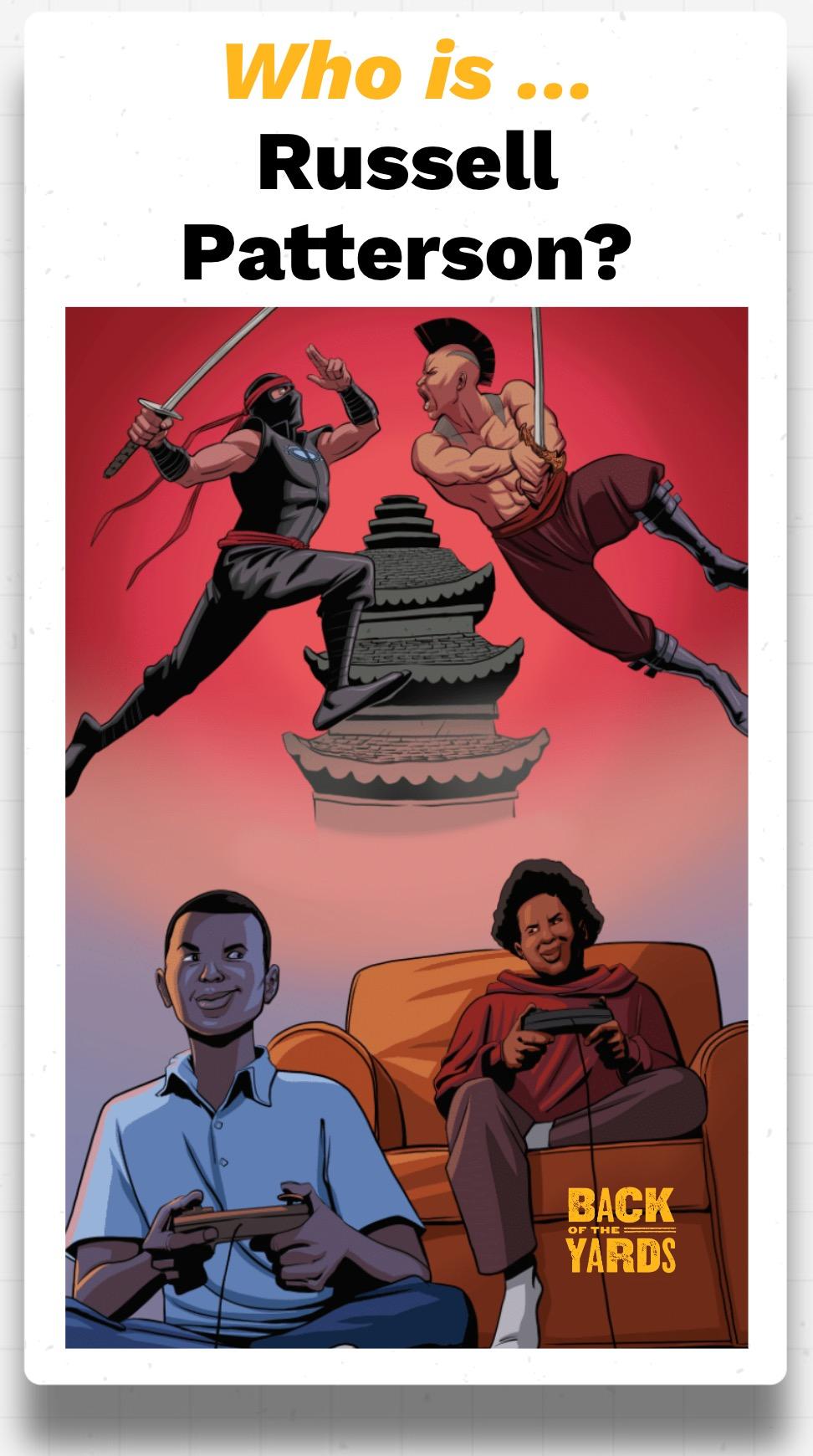
In the dream dimension, Russell and Draymond are Teshue and Shiro, powerful ninjas forever locked in mortal combat. They collaborate on an intricate storyline that incorporates both elements of the real world and the dream dimension. Their imagination is powerful, but, unlike Andre’s abilities, their shared narrative is not yet “self-aware” enough to have evolved beyond the potential for escape.
Give them time. They’re still young.
Interestingly, Teshue, Russell’s alter ego, is capable of summoning Tamia’s fairy from for assistance. But the process is difficult for Russell to master. And since the fairy has a developing will of her own, she isn’t always helpful to Russell. At not helpful in ways that are immediately obvious.
The Mysterious Lynchpin
Mr. Carl Castaneda!
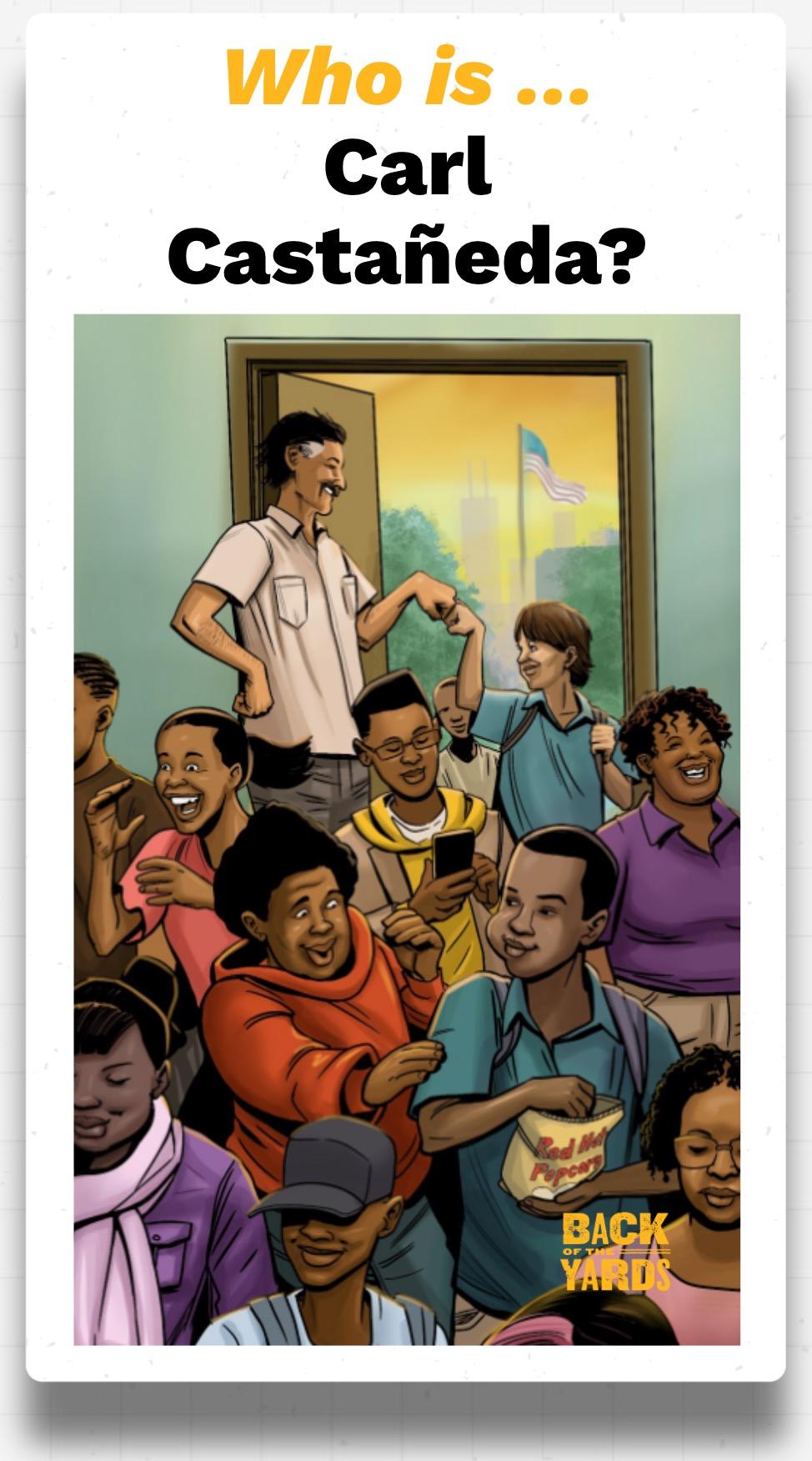

And as we previously described, to tie all of the youth characters together as part of a common comic story narrative, we developed the character of Carl Castaneda.
Mr. Castaneda, that is.Mr. Castañeda has the poise and bearing of a seasoned teacher.
But nobody knows who he is. Mr. Castañeda may or may not be a real teacher, but his afterschool arts program is ardently attended by those in the know. Their regular meetings in Room 23 are no secret, nor are they what one would call common knowledge. By all appearances, Mr. Castañeda handpicks young people of promise and extends them a personal invitation.
His recruitment efforts have been fruitful. Tamia and Russell are both already in the program. Andre was recently invited. And from there, a special bond between Andre and Mr. Castaneda begins formation from which we will build through future collaborations with participating youth.
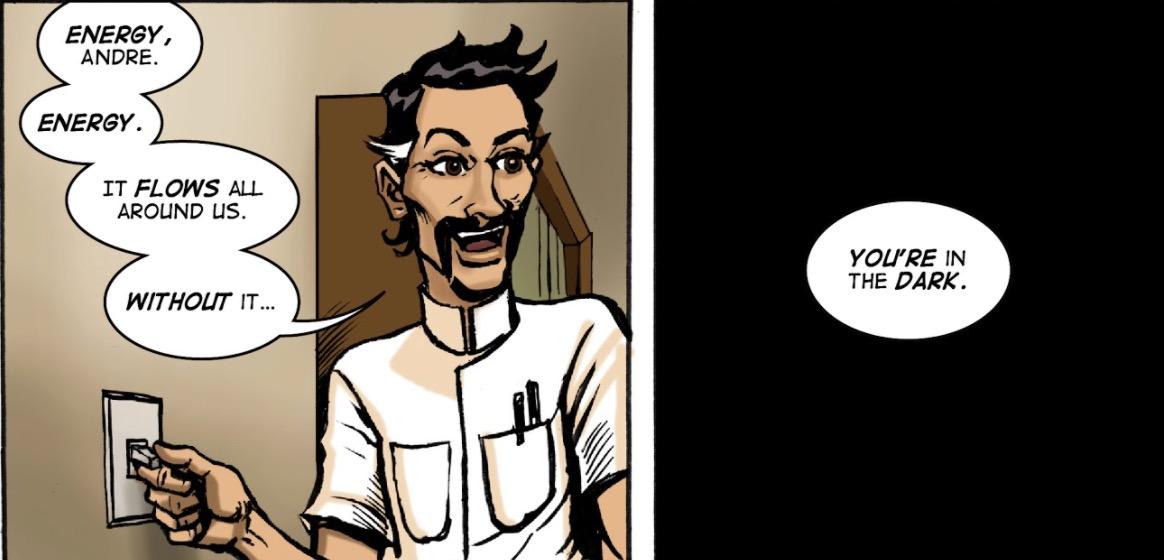

And Last But Certainly Not Least, the
Bedrocks of the Neighborhood - The Elders!
And last but certainly not least, central to the Back of the Yards comic narrative are the Elders. Created by Jimmy Briseno and Len Kody to help provide further context for both the fictional Back of the Yards fictional neighborhood and the younger comic characters, the Elders are three wisecracking wise guys man a permanent post around a pickle barrel in front of Kozlow’s General Store
They are Peaches, Dex and Big Earl. Although these distinguished gentlemen of the neighborhood are officially retired from whatever eclectic ventures kept them occupied (and mostly out of trouble) in their storied youth, the Elders, as we call them, continue to serve an important purpose in their community and in our story!
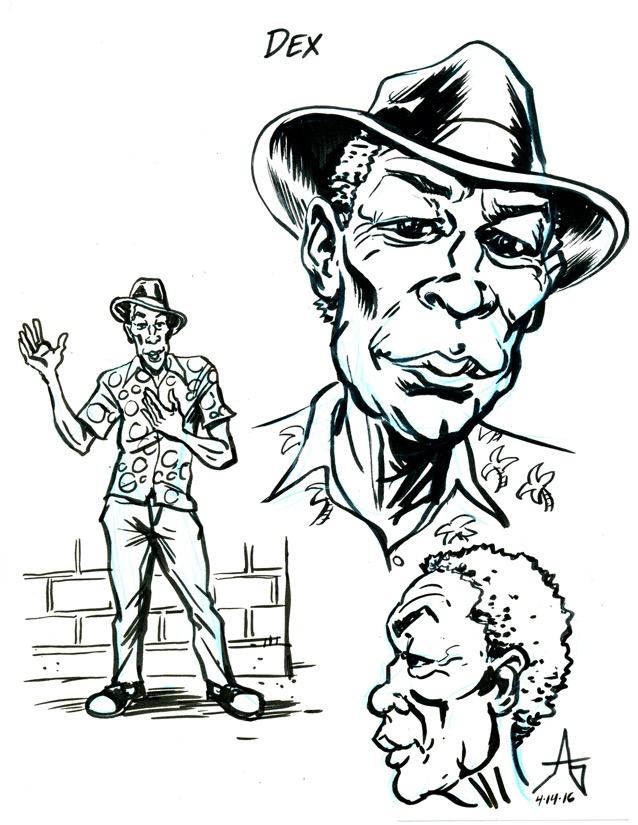
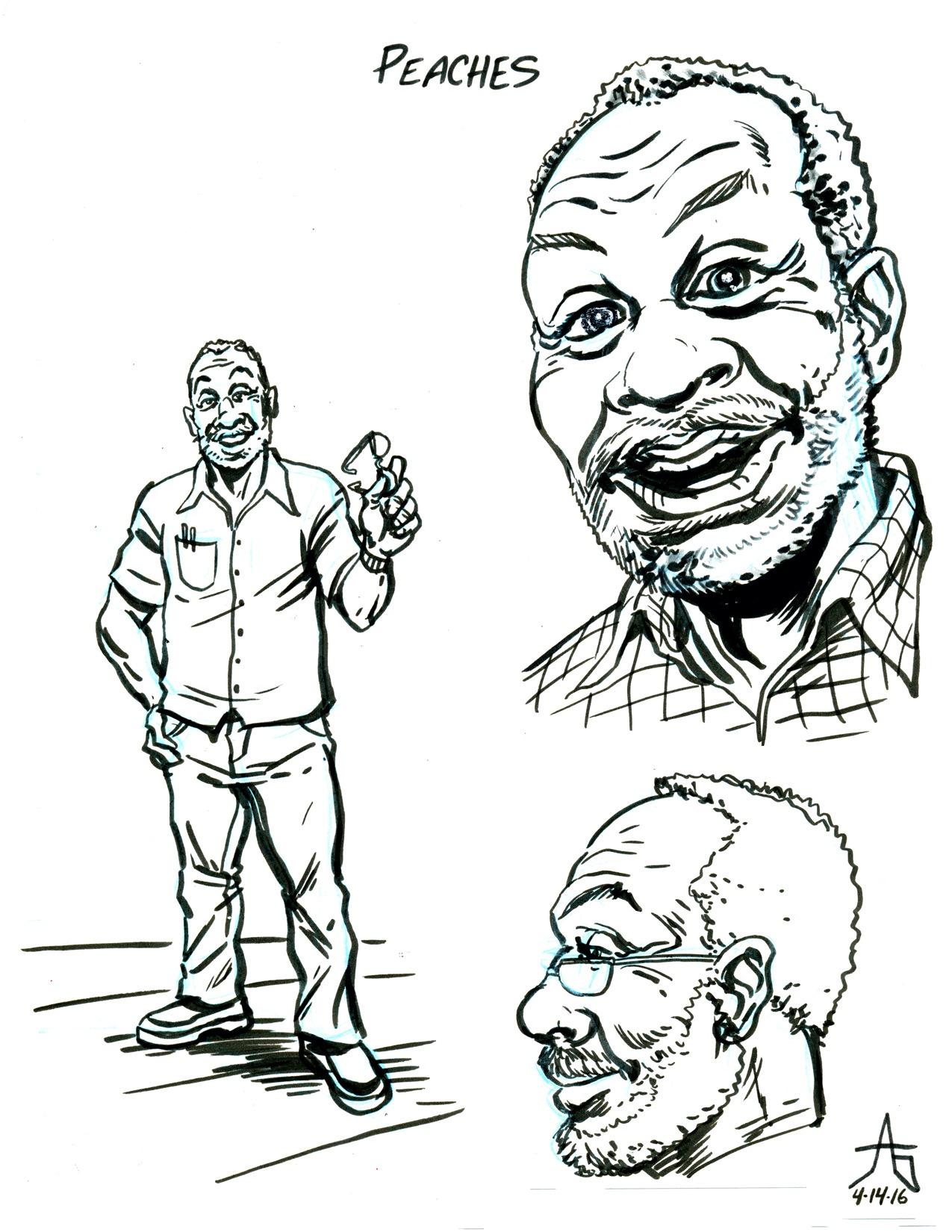
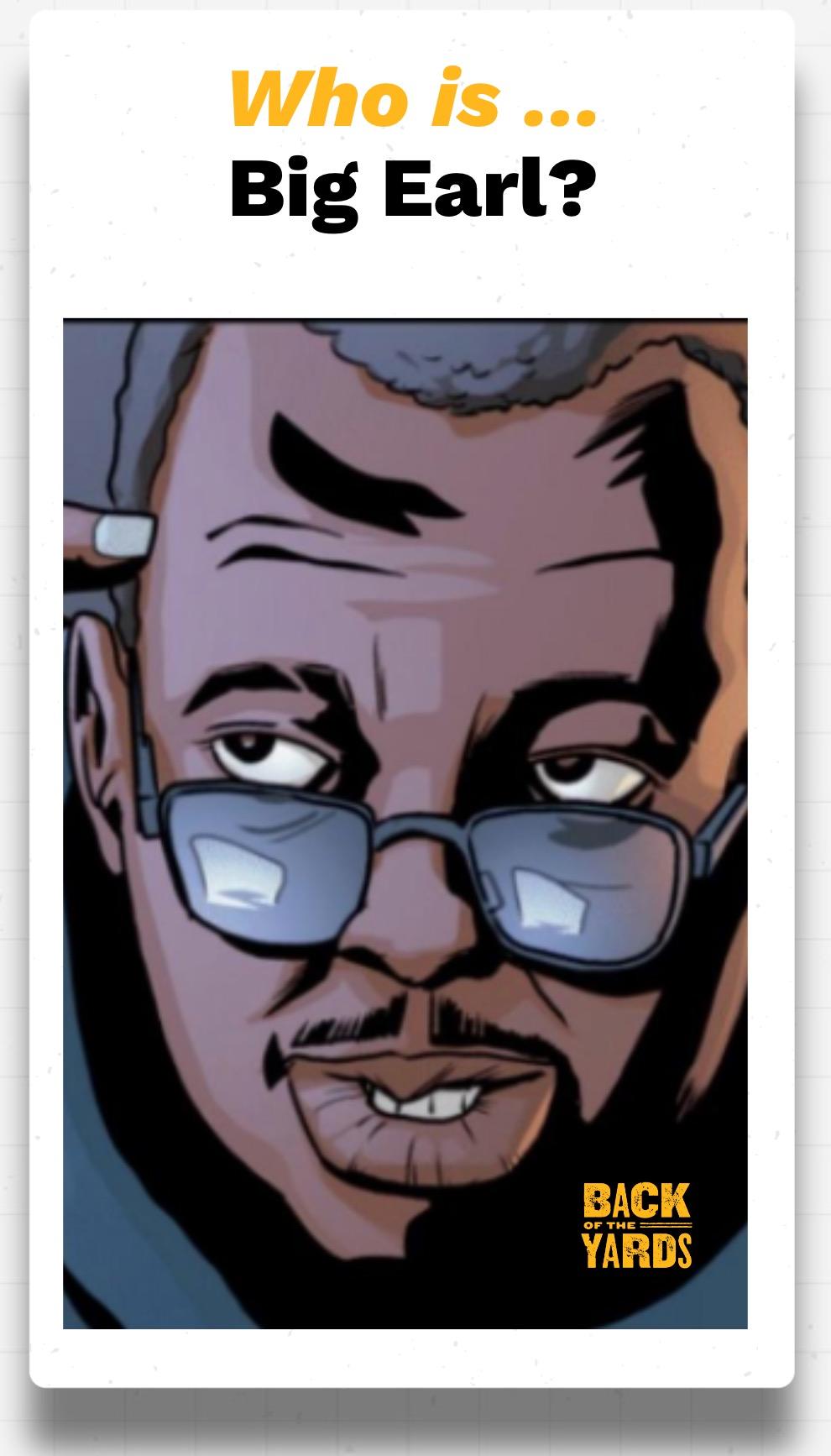
The intertwining threads of fate, Back of the Yards, all intersect at the Elders’ humble pickle barrel. In ancient mythology, the Fates weren’t just observers and commentators but also tailors in life’s grand pageantry. Similarly, Peaches, Dex and Earl color the happenings of their Southside Chicago block with their piercing insight and cutting humor. They provide context, gravitas and perspective, reminding the reader and our younger characters that the world is big and history is long.

A
New Comic is Born - Chapter 6 -
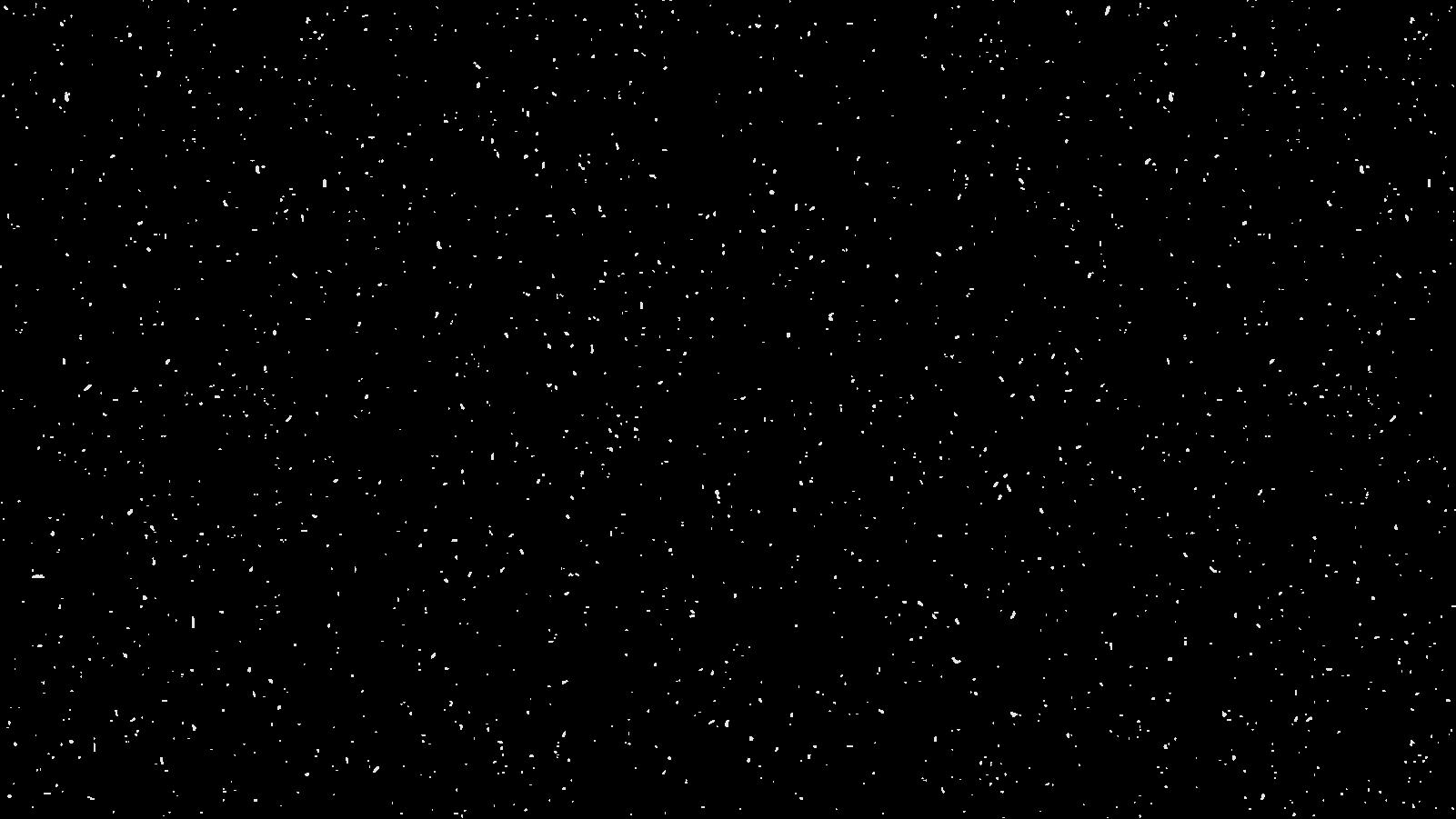
A QUICK ISSUE 1 INTRODUCTION
Armed with the initial characters flushed out and more fully developed, Len and Jimmy began developing a working manuscript along with a team of artists that had been recruited by Jimmy, including John Golden, Dan Dougherty, Manny Dominguez, Eric Nyamor, Andrew Dimitt and Kanila Tripp. It was this group that would work together to bring those original comic ideas to life in the form of one single comic narrative that we would eventually name as “The Back
Production of Issue 1 would begin in 2018 and final edits to scripts and illustrations were completed by 2019. The issue was largely self-funded and was, more or less, a proof of concept for the project team.
The comic issue itself is divided into two parts. The first part is the actual comic script panels, 25 pages in length. The second part of the comic is a supplement that

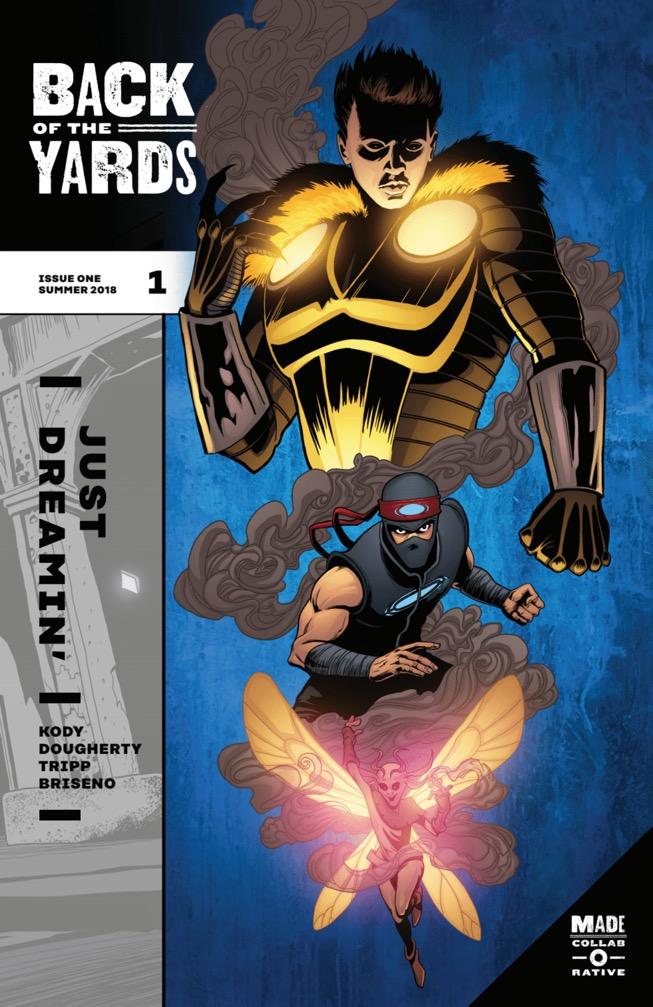
essentially tells the “story behind the story,” i.e., the underlying collaborative process that led to the comic itself. We felt this underlying context was essential to provide a framework for future collaborations with other participating youth.
And the plan all along was, indeed, to build upon this comic foundation by working with other participating after school programs to create new comic characters within this Back of the Yards storyline, and with that, new comic storylines. In that way, this Back of the Yards comic series would be a living collaborative project.
And that remains the creative goal of this project, and that’s where we will pick up on Part III of these Project Chronicles. But first we have included the full Issue 1 here for what we hope to be your reading pleasure.
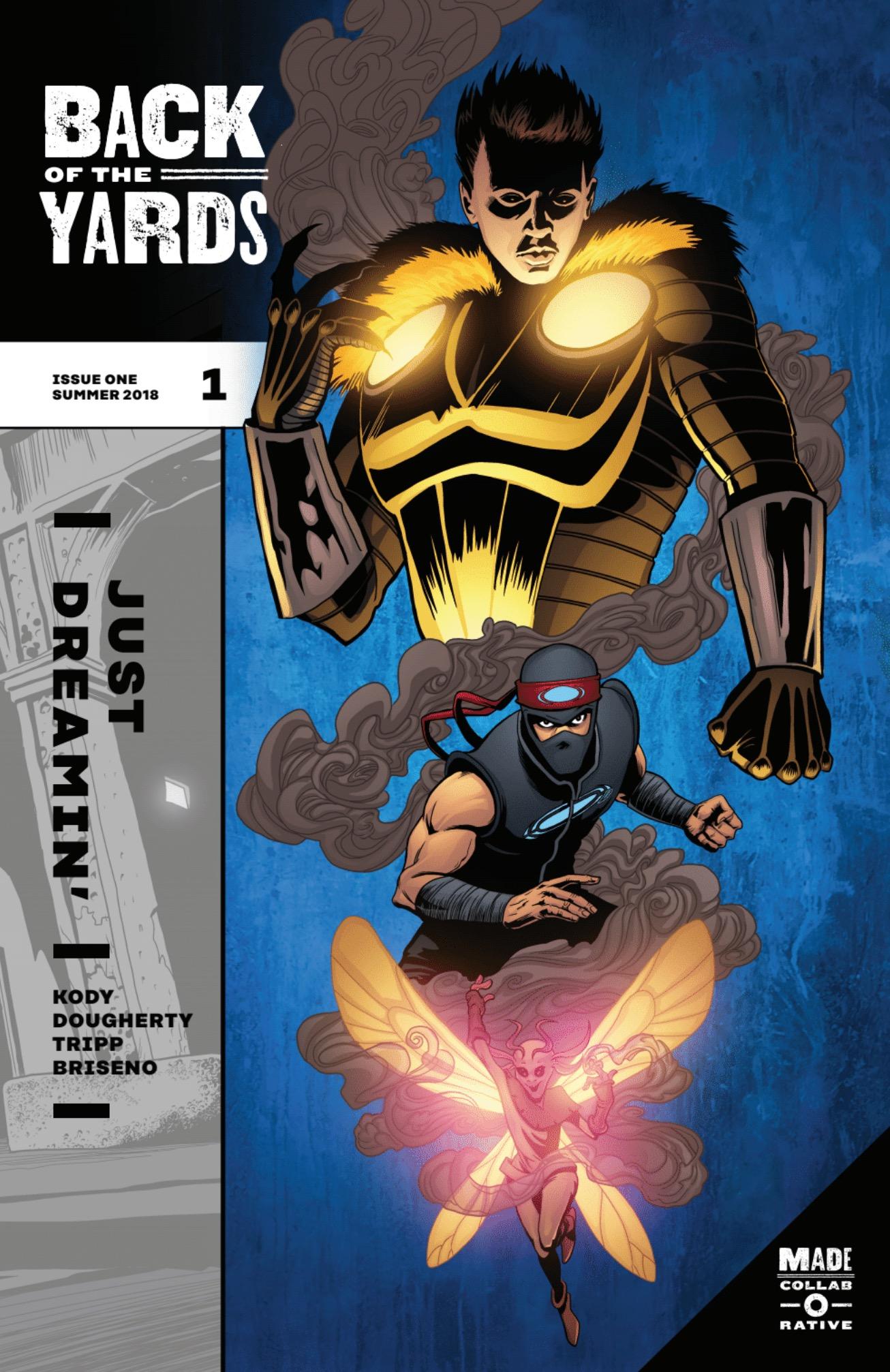
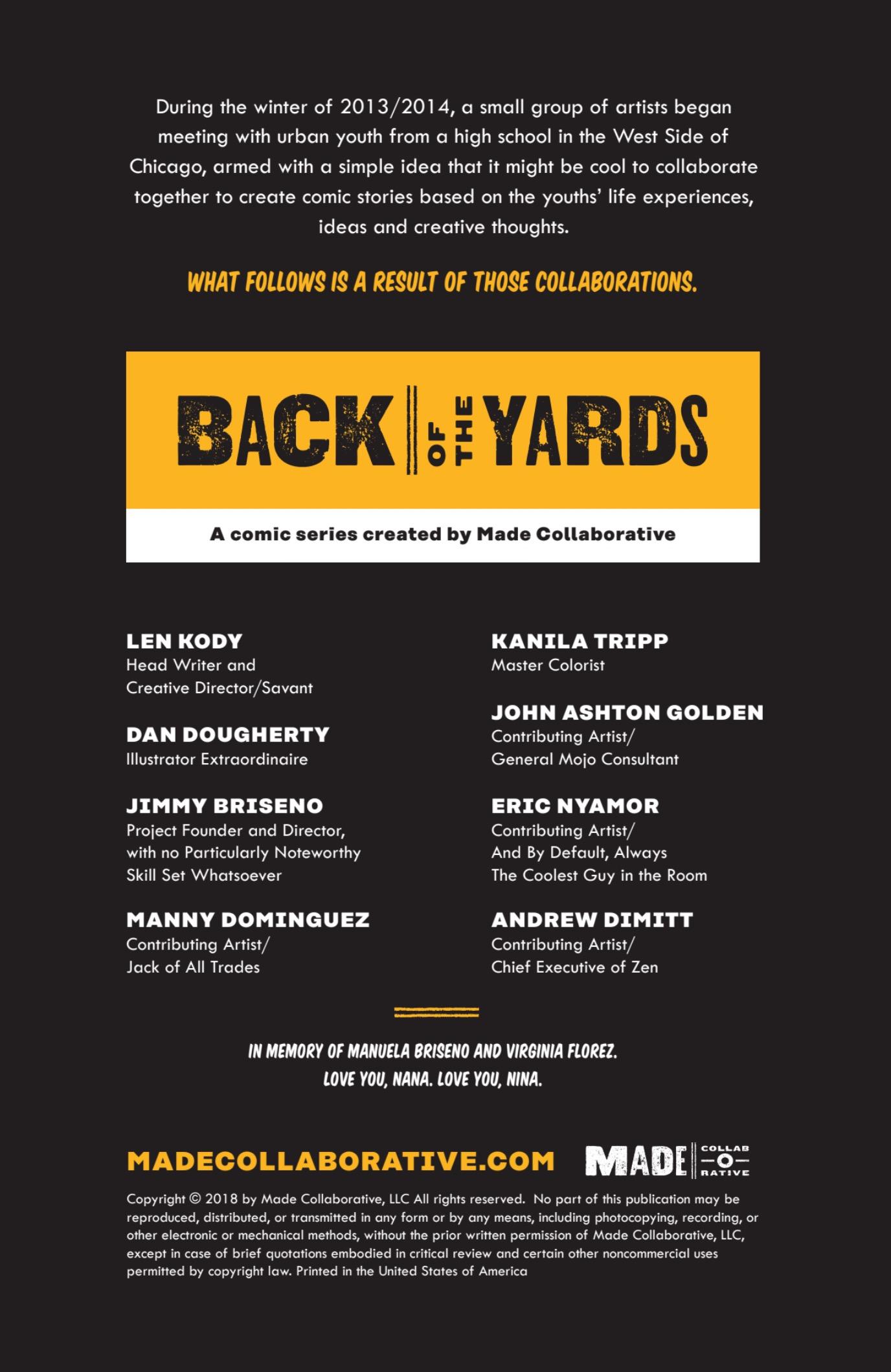

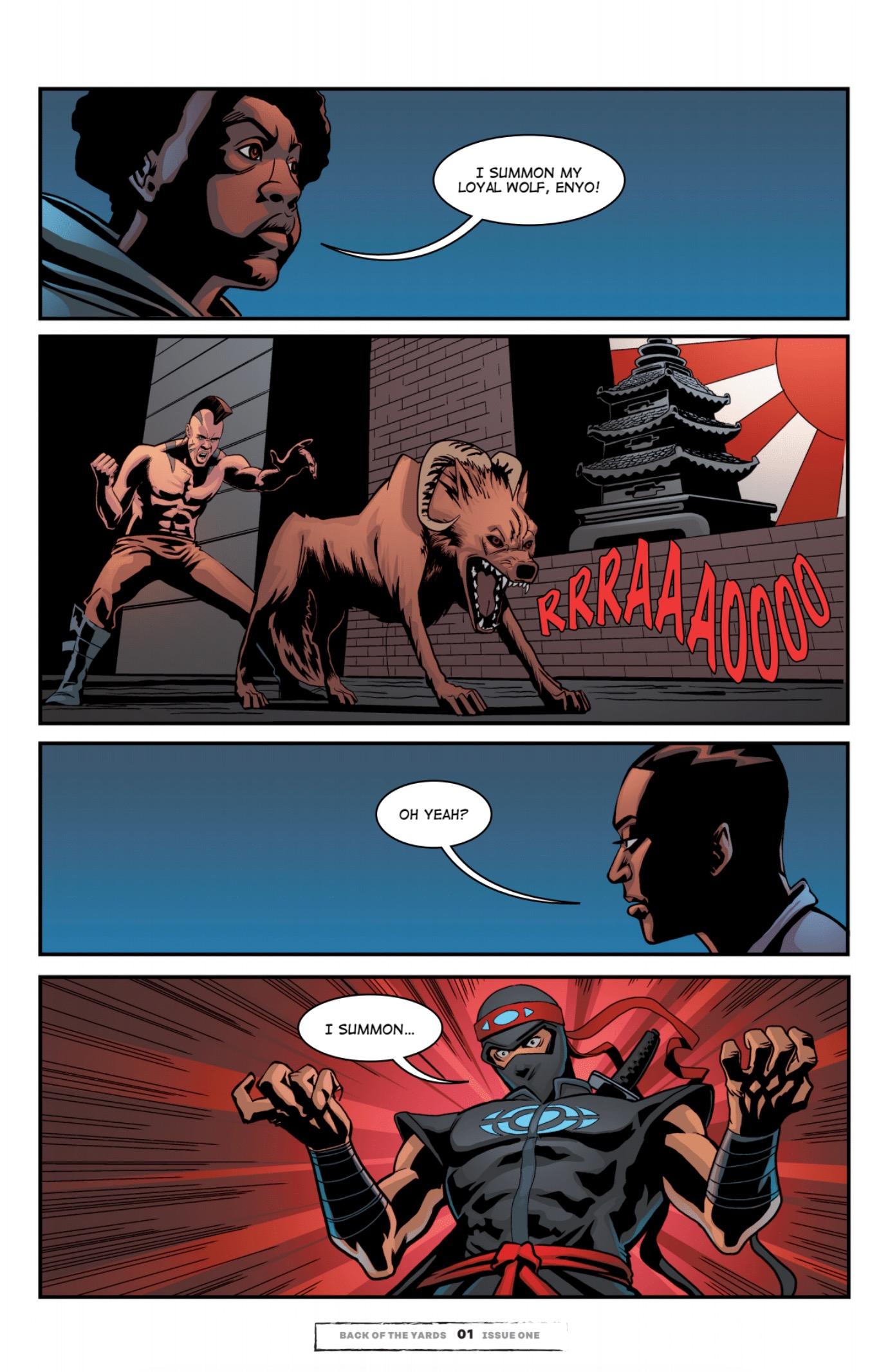
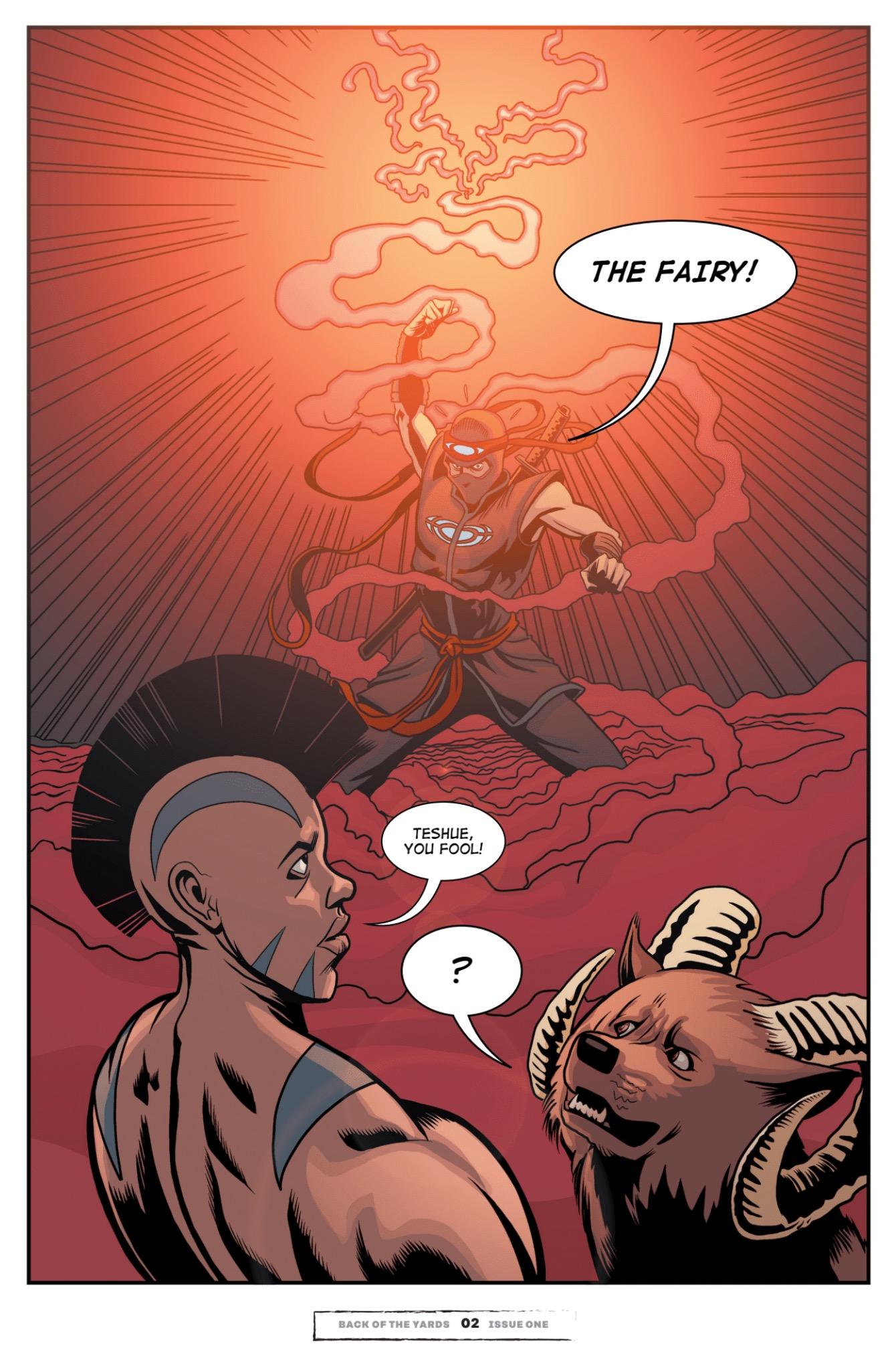
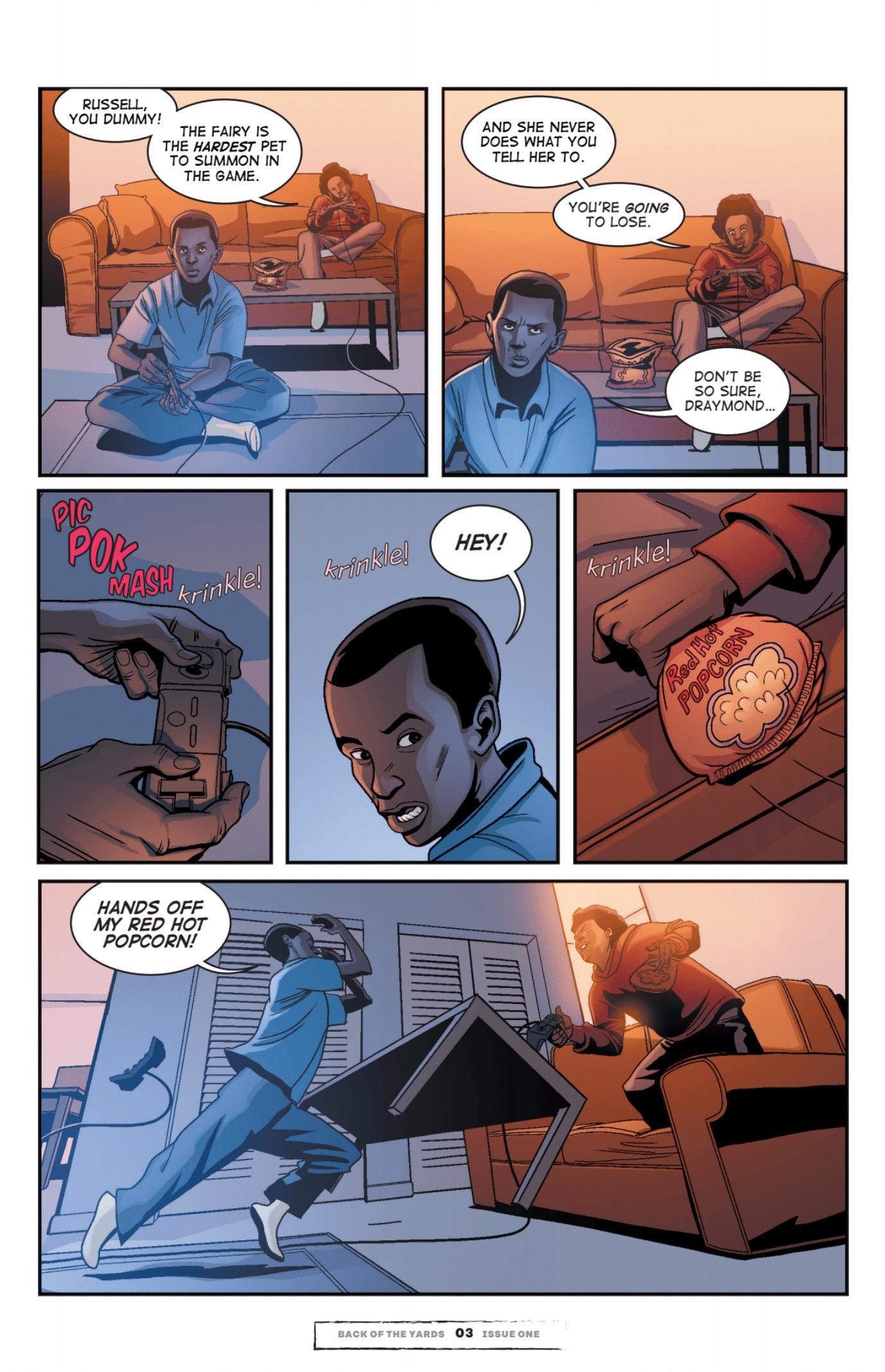
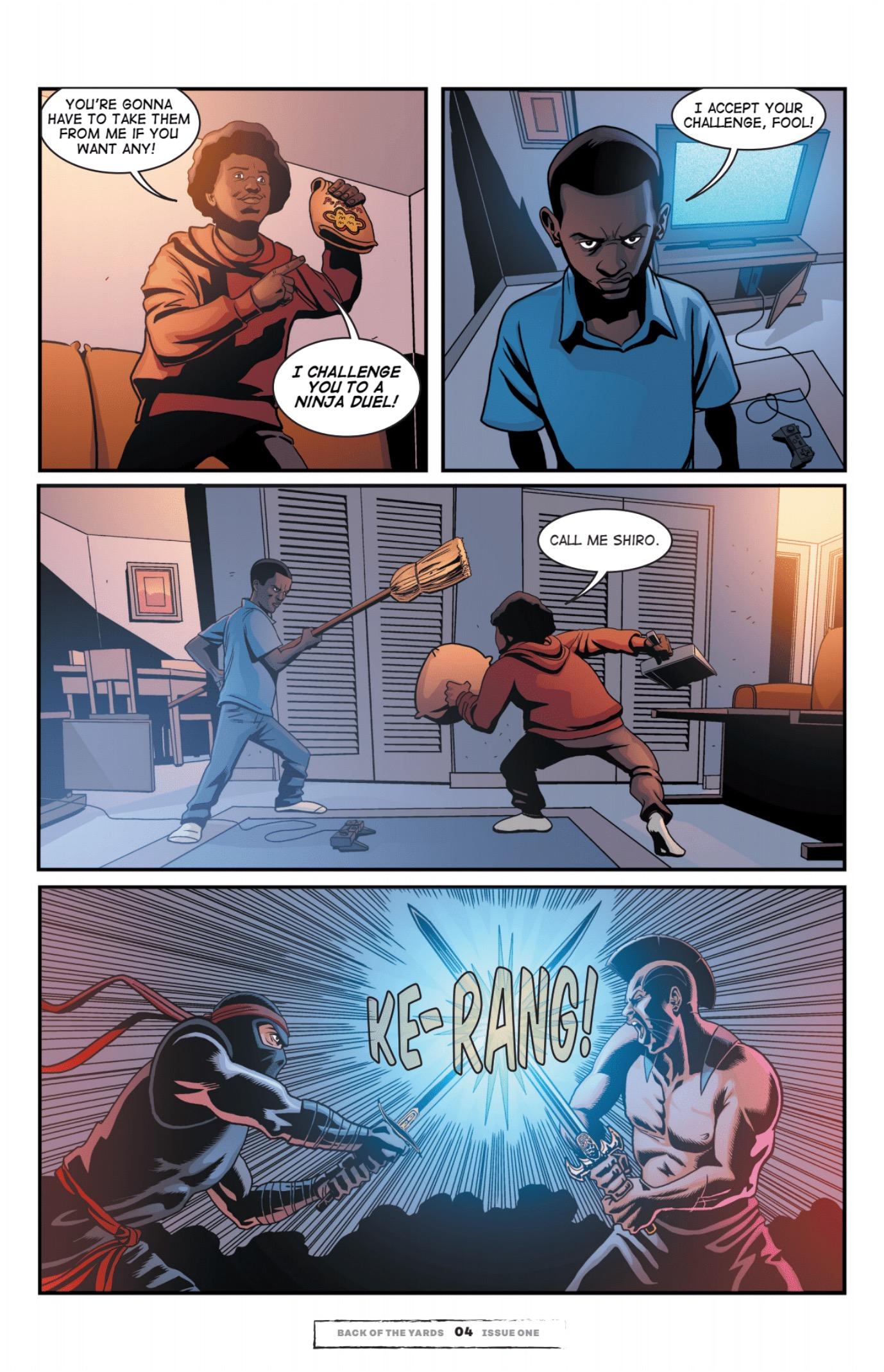
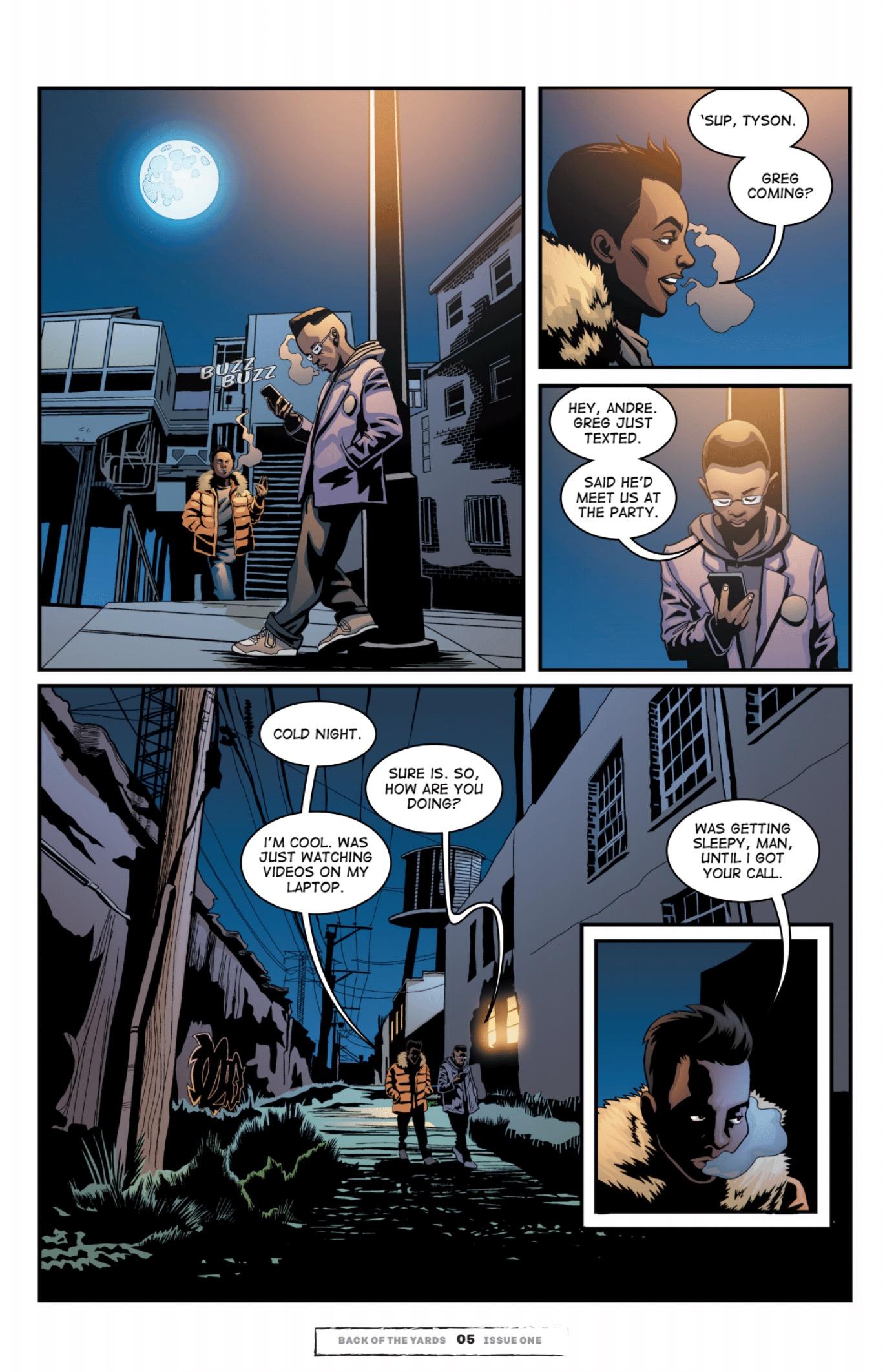
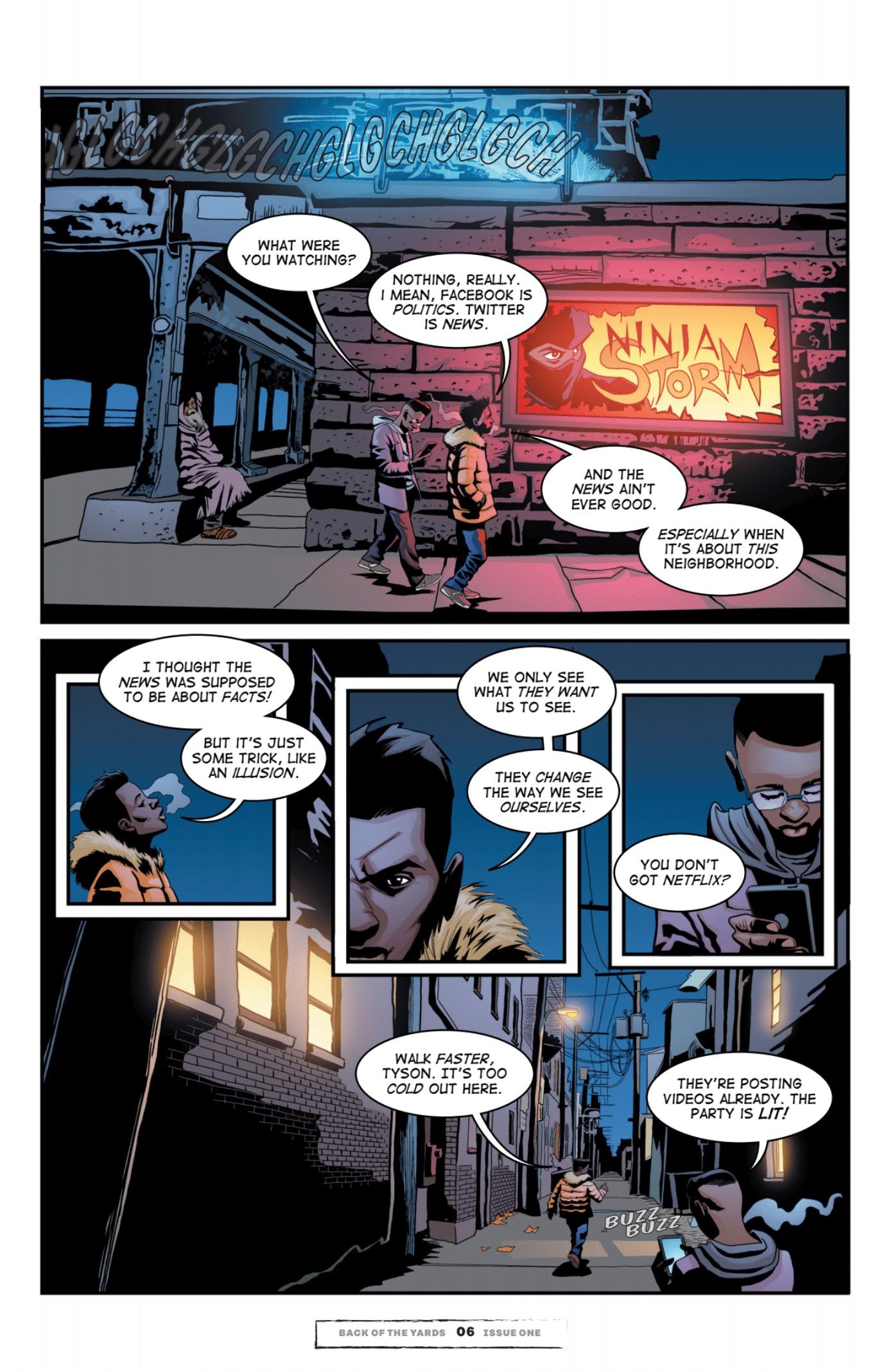
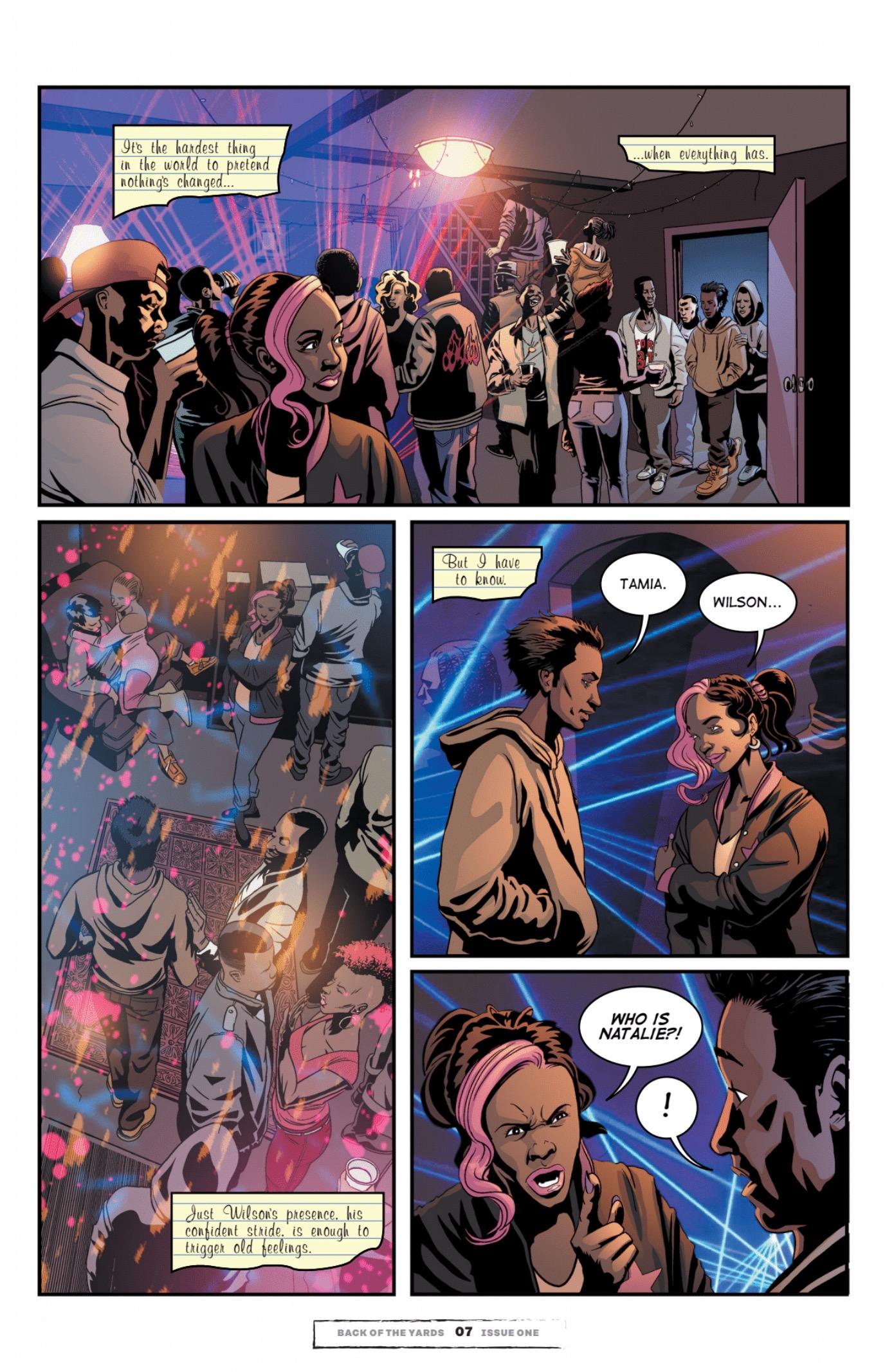
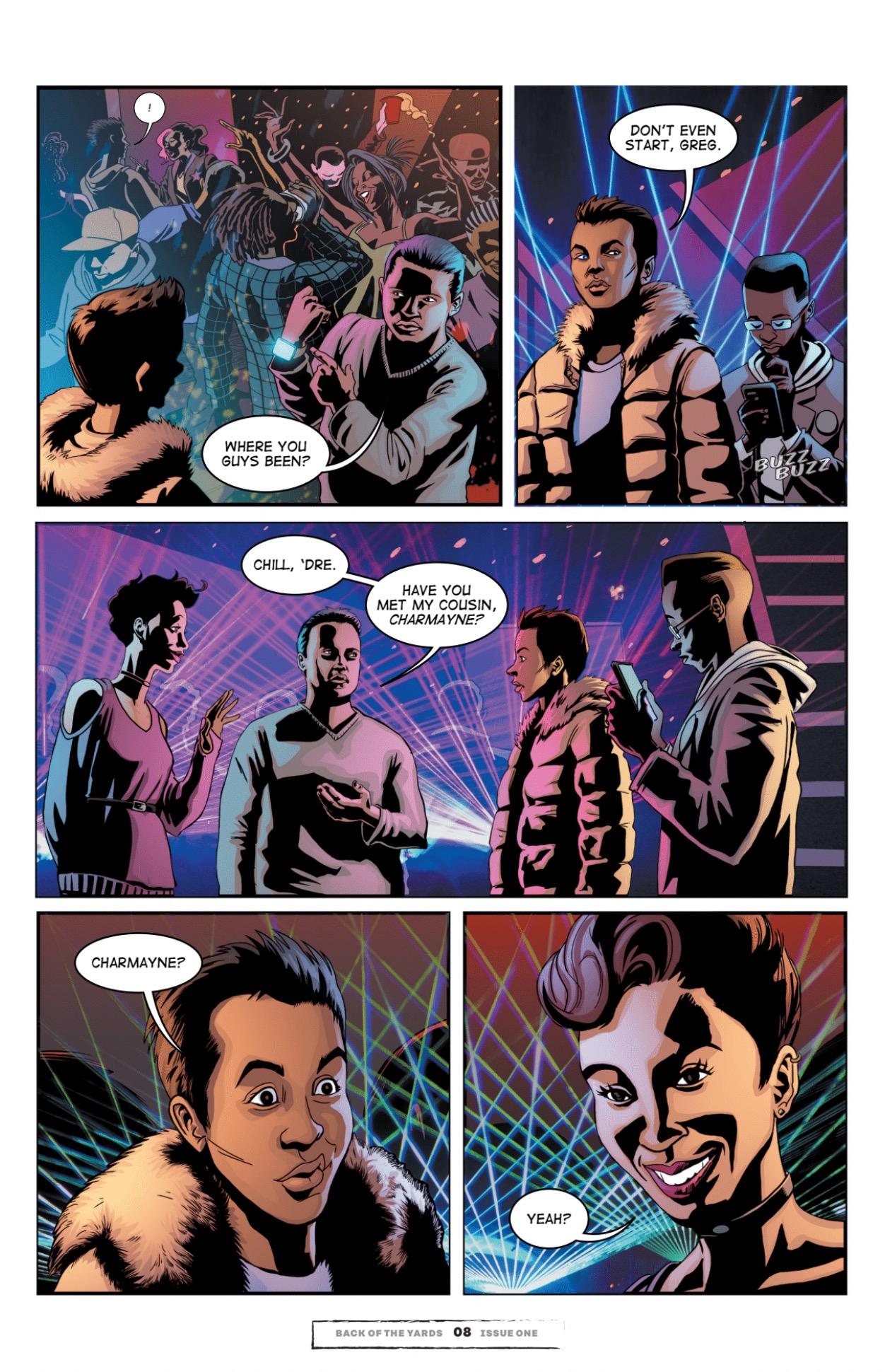
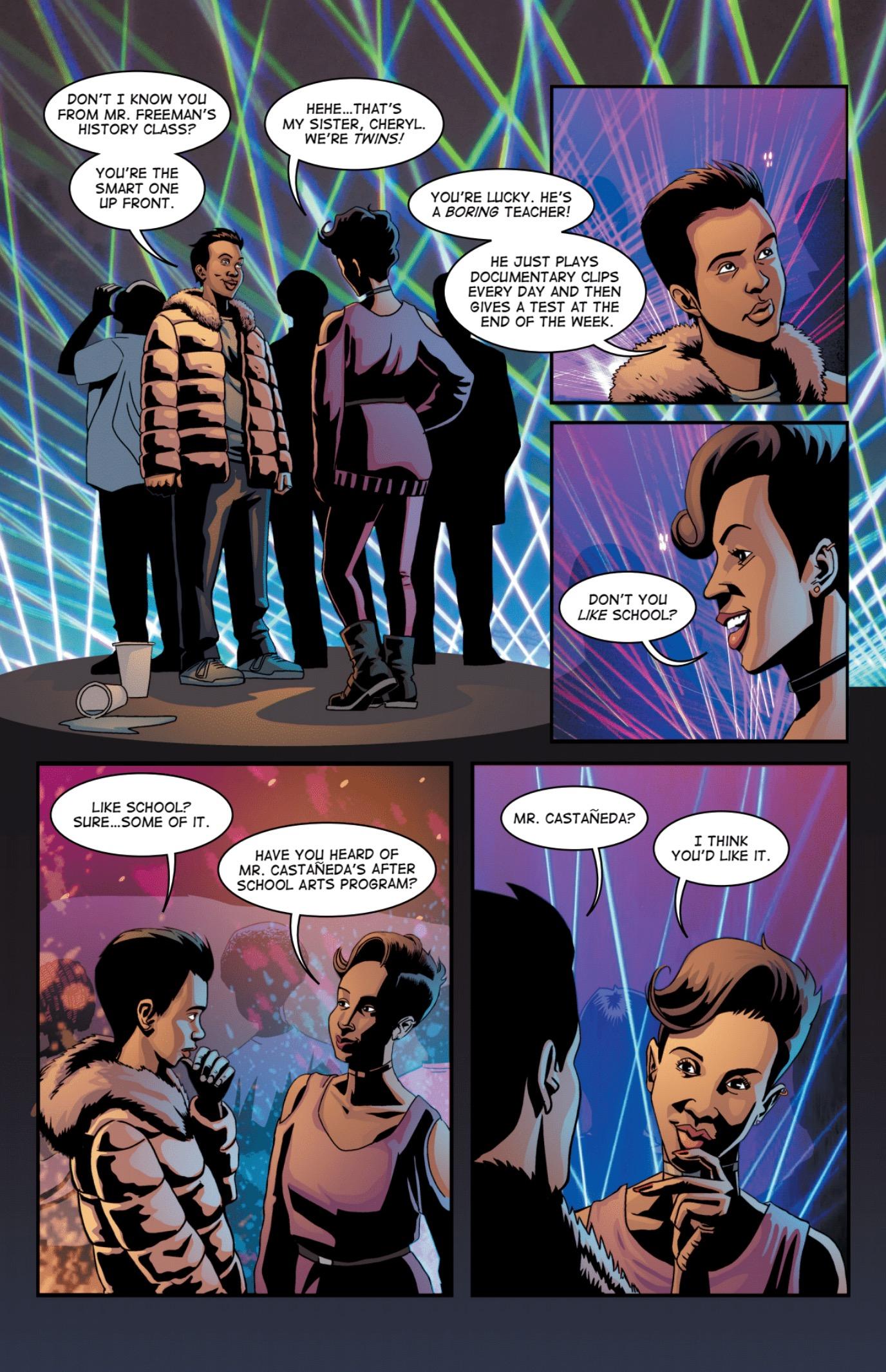
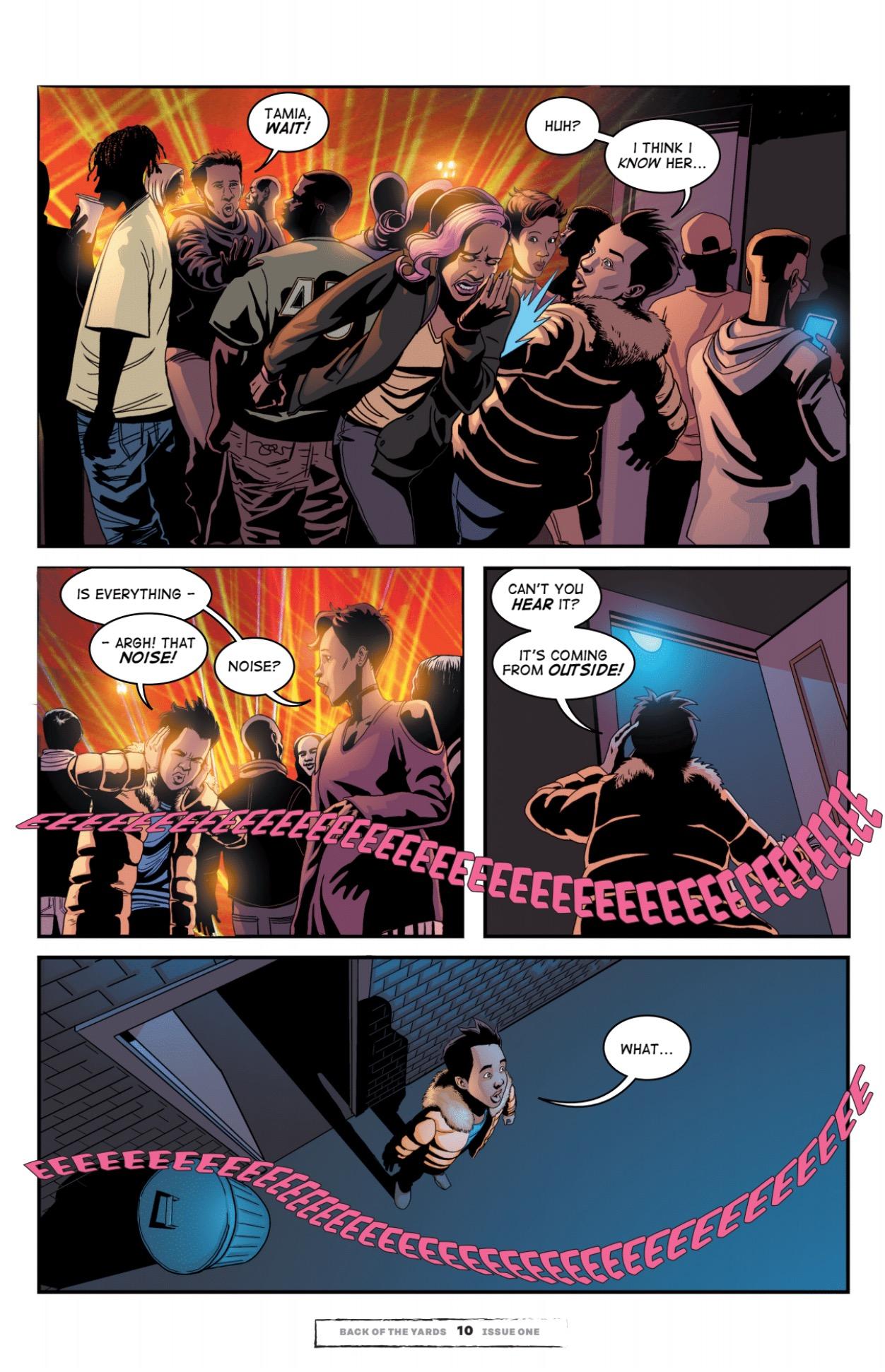

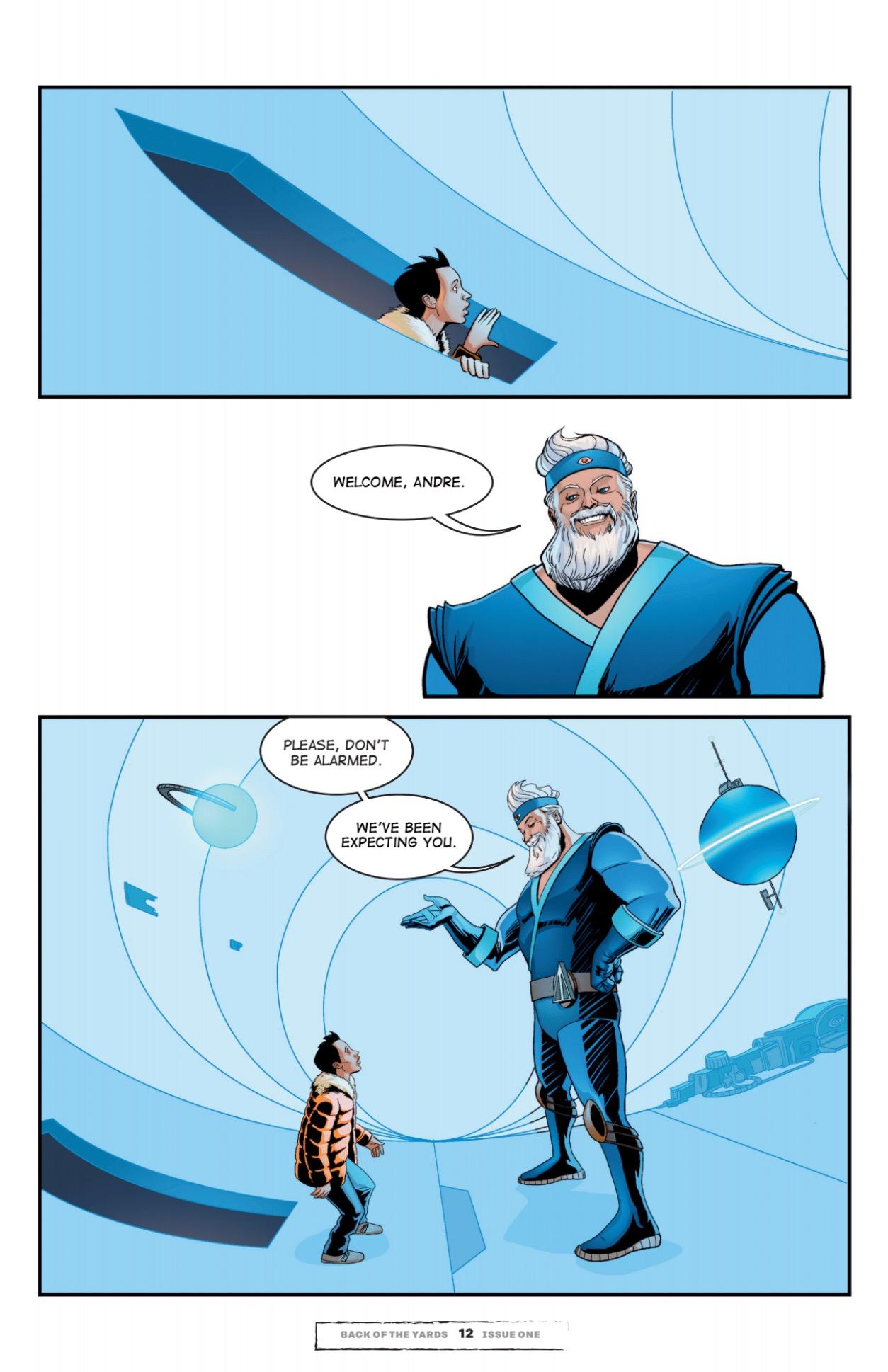
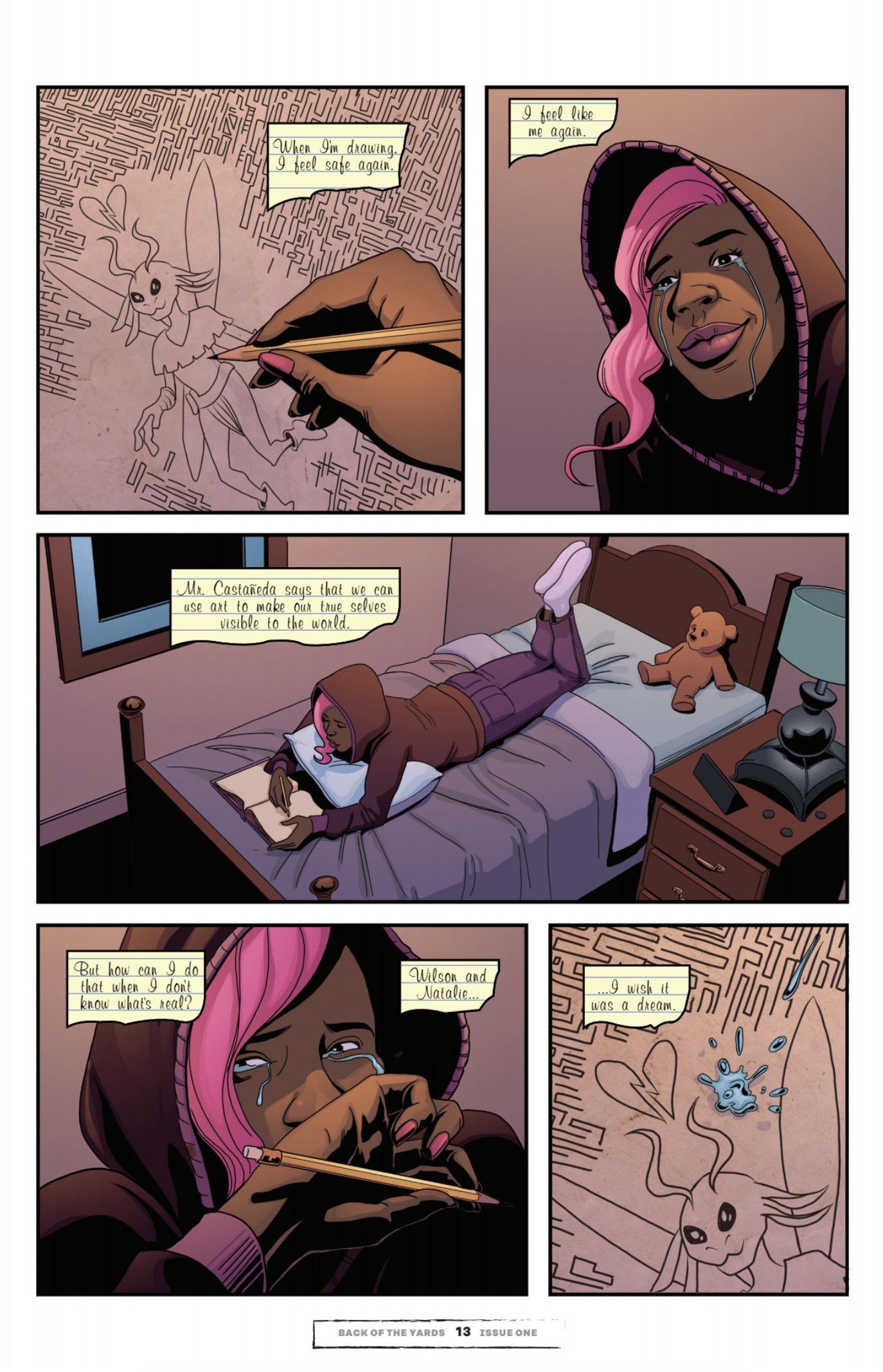
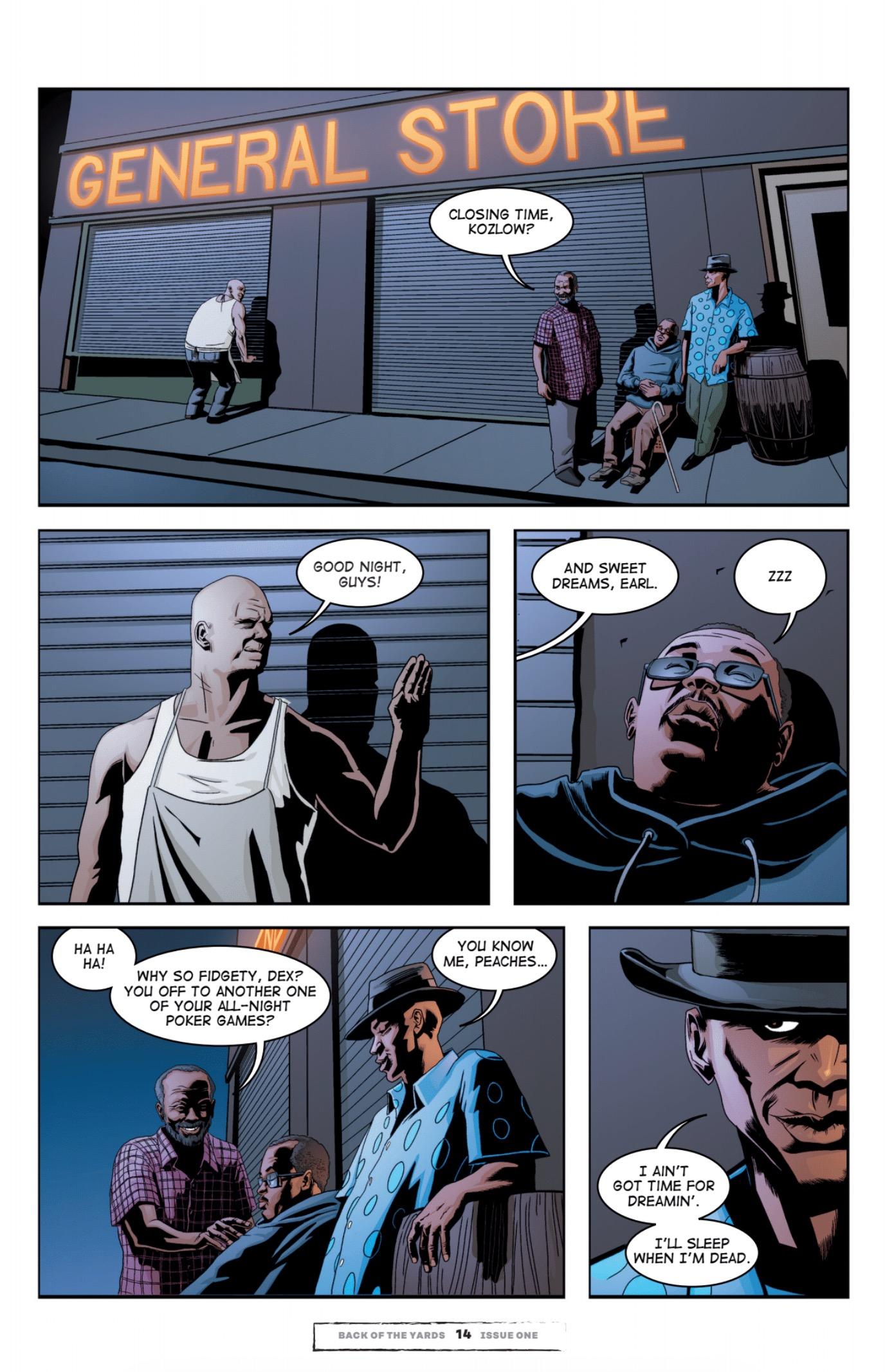
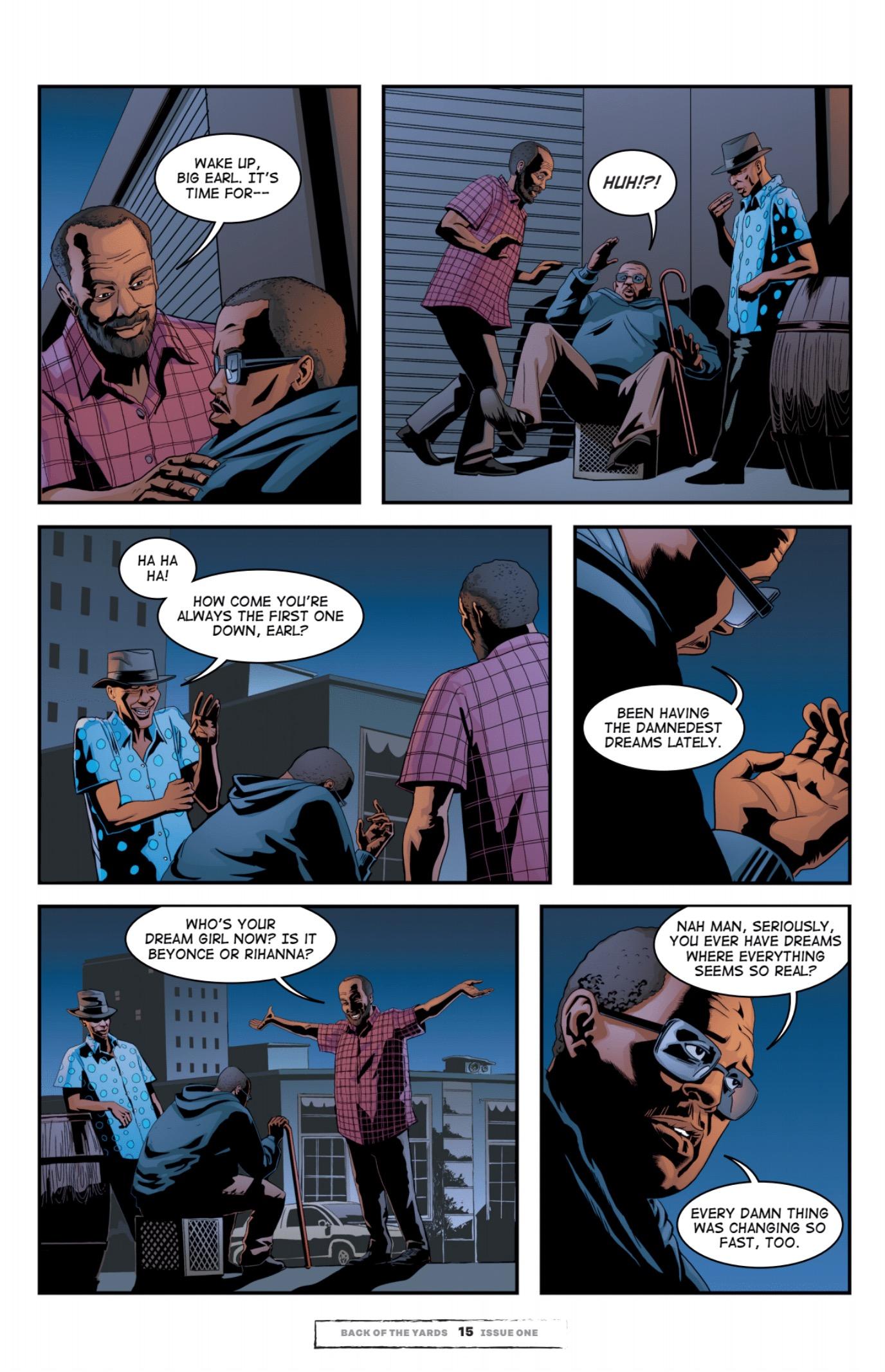
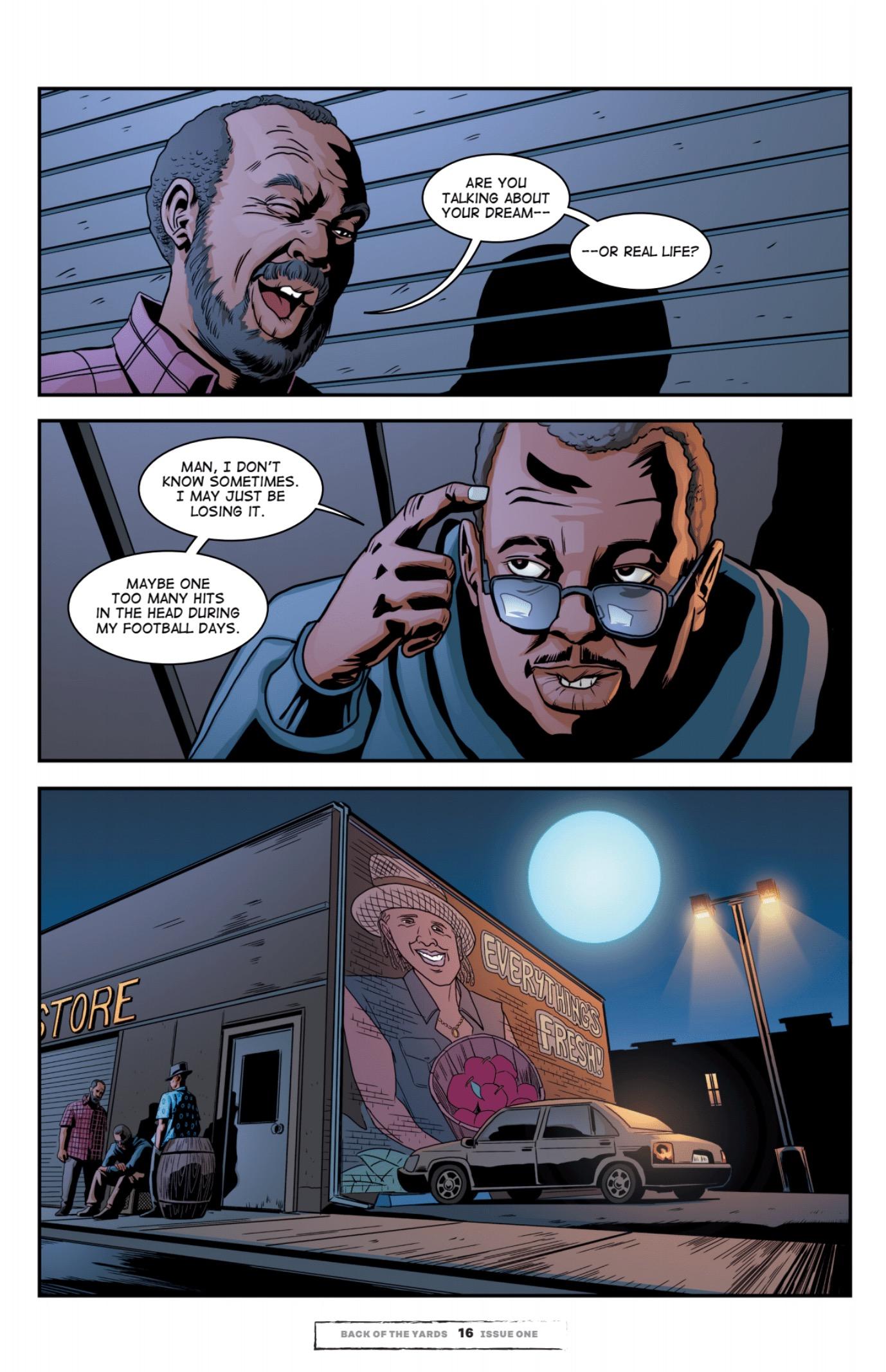
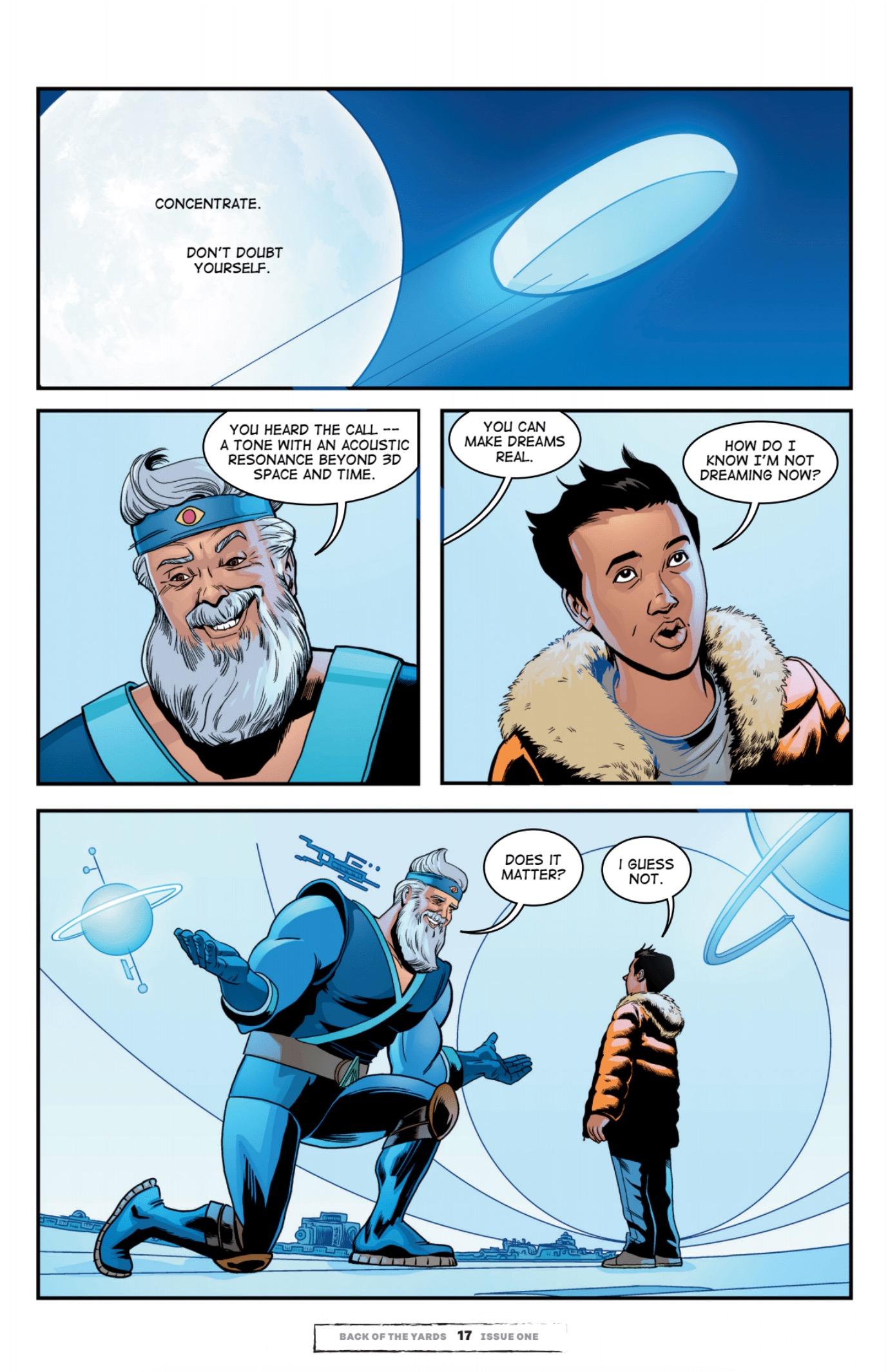
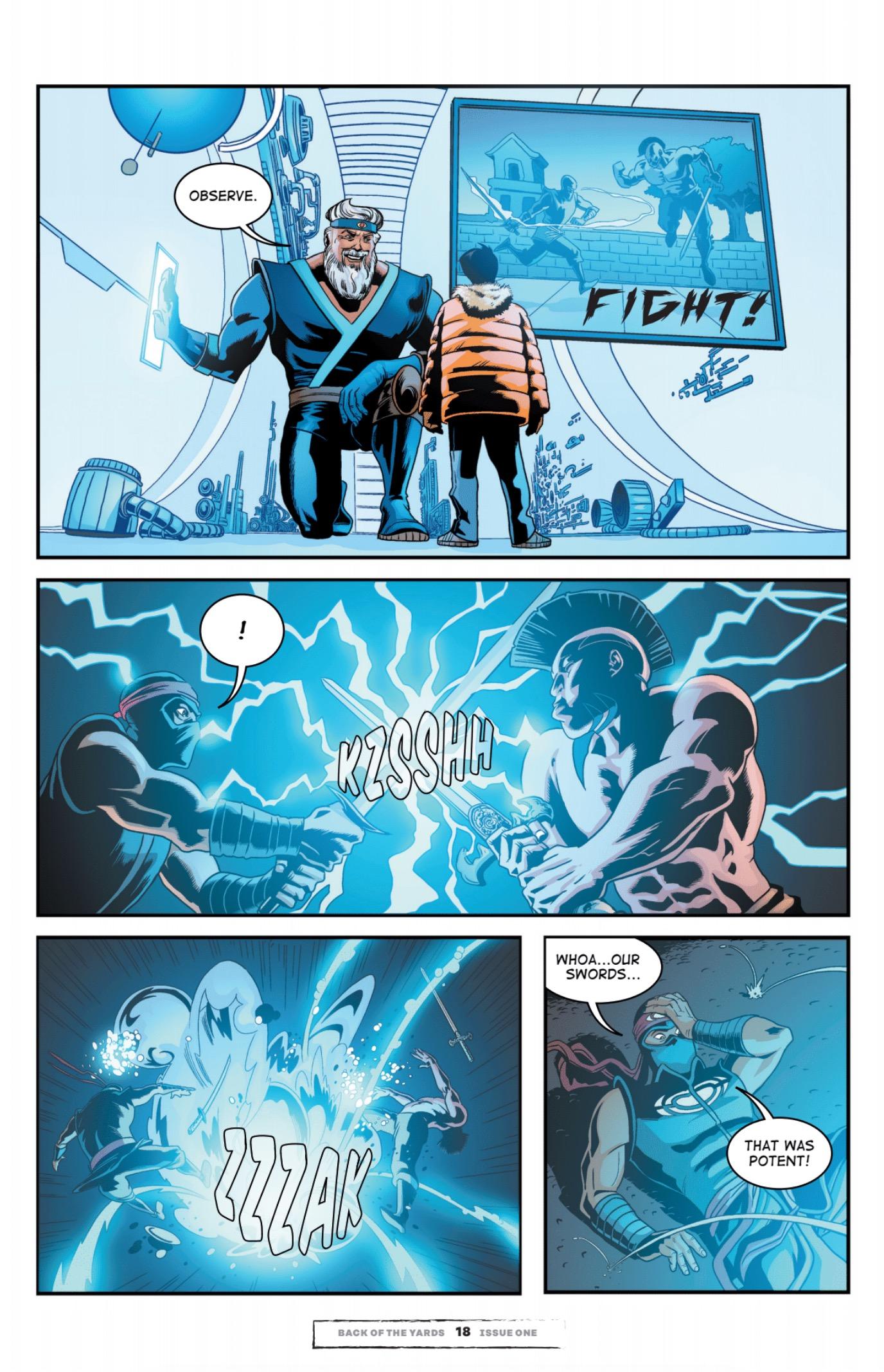
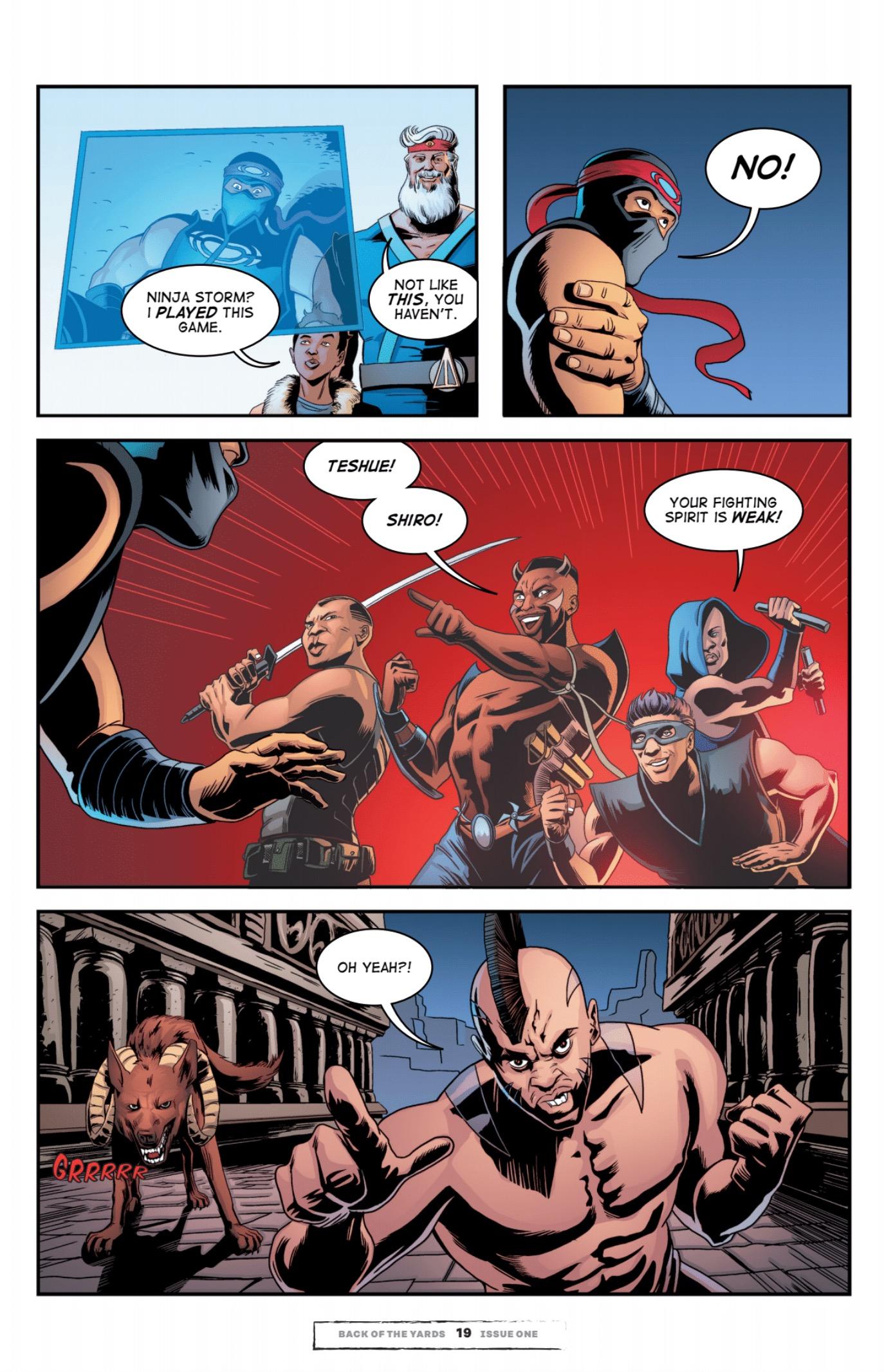
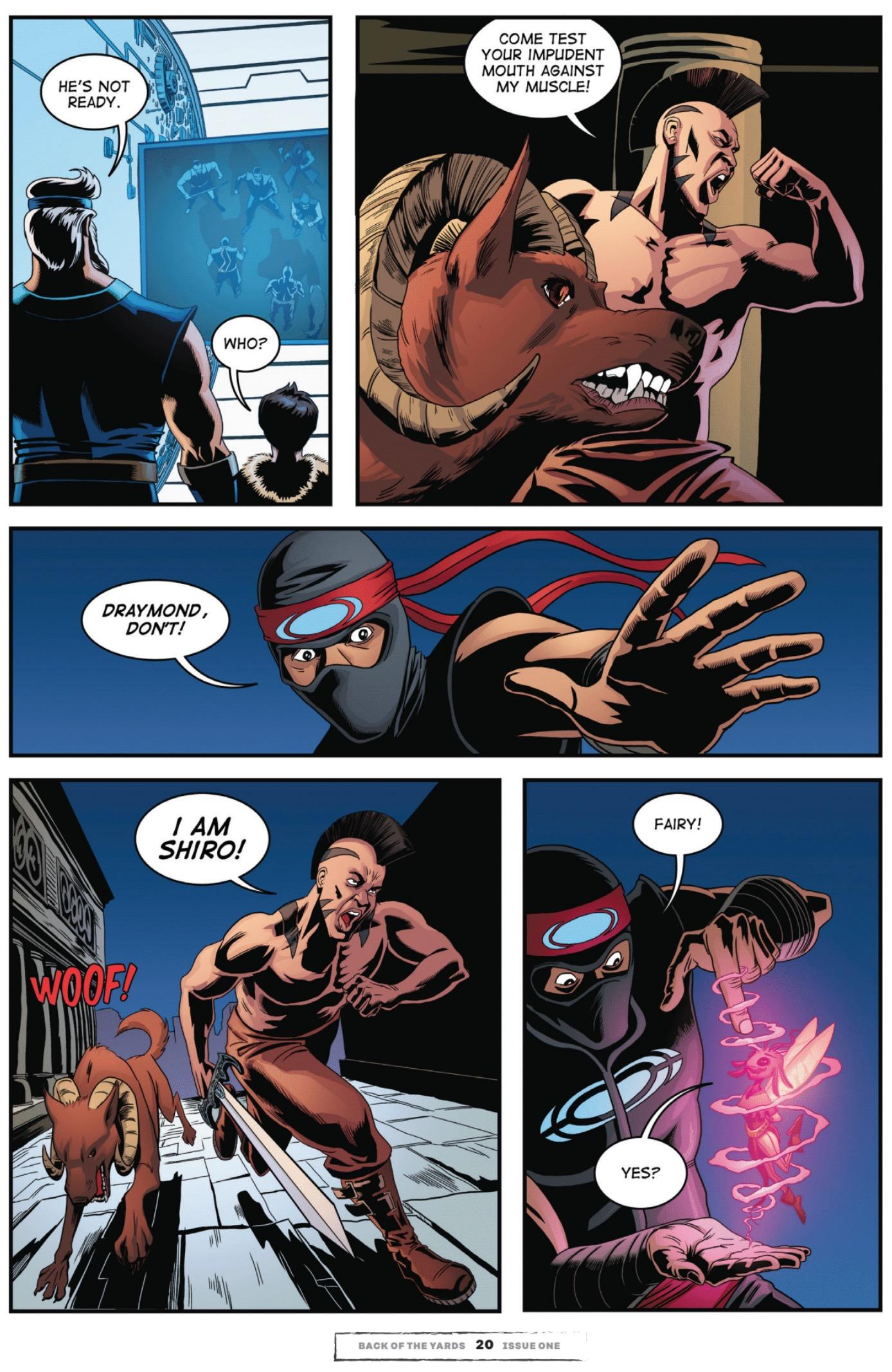
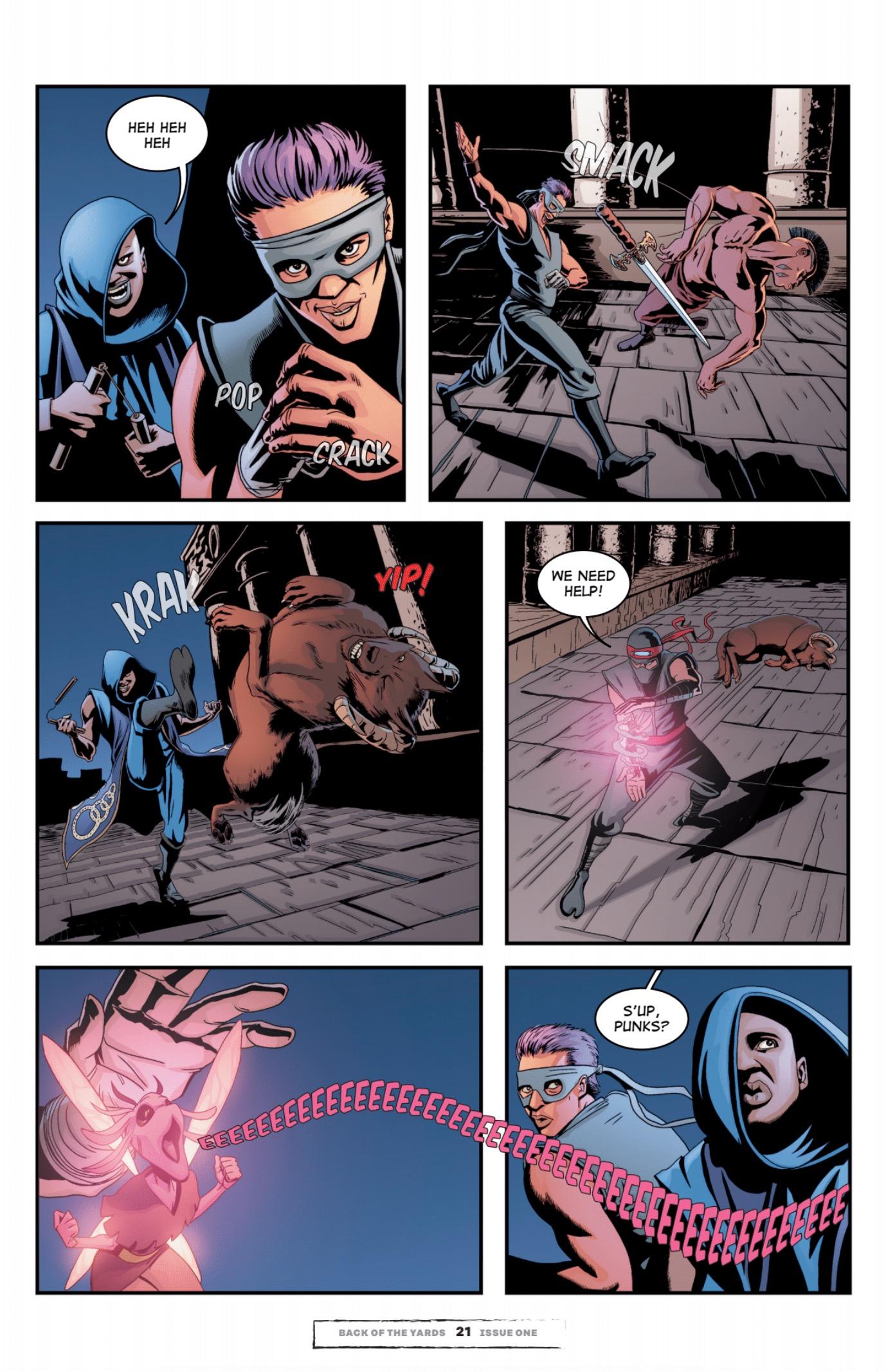
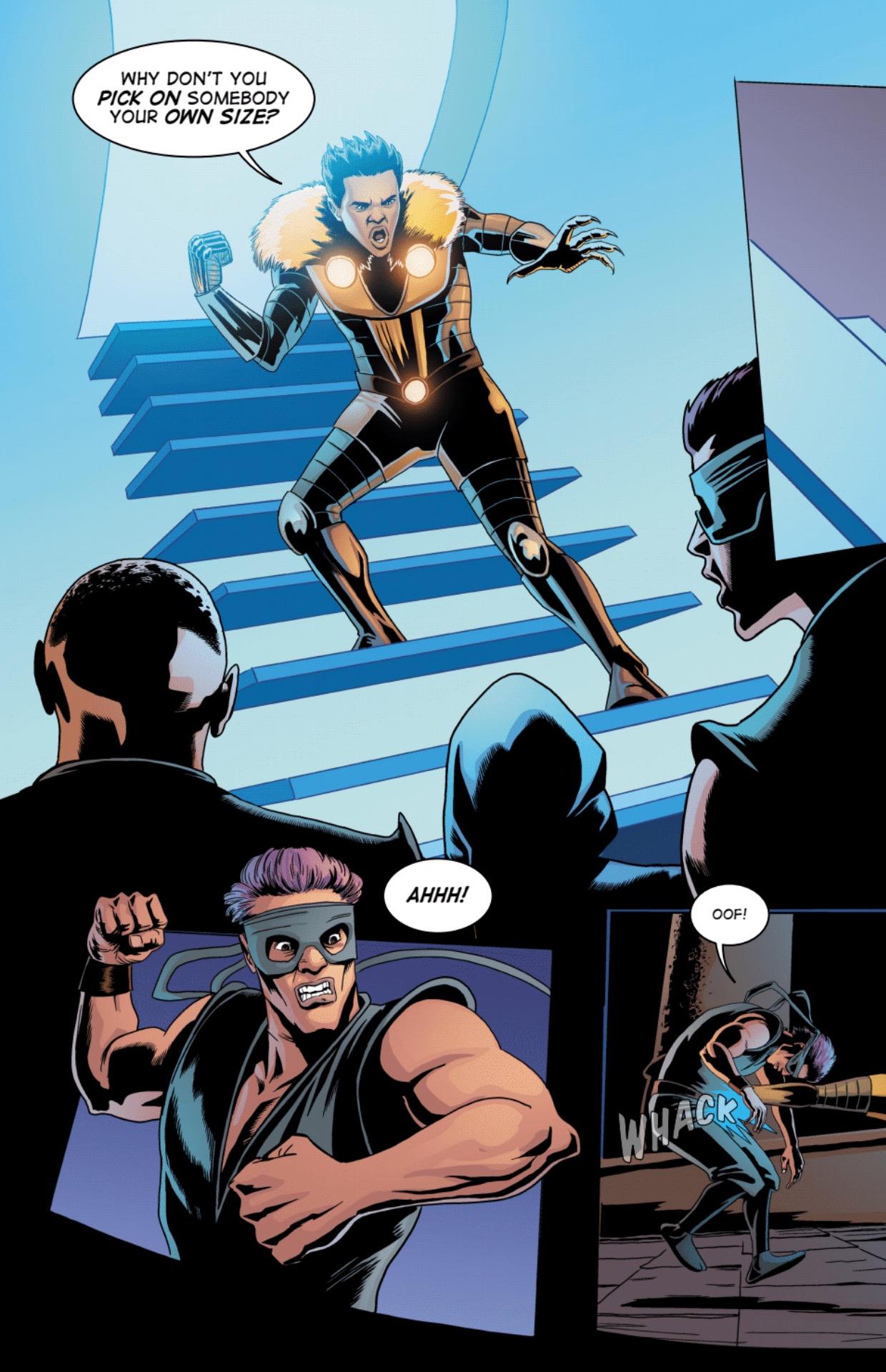
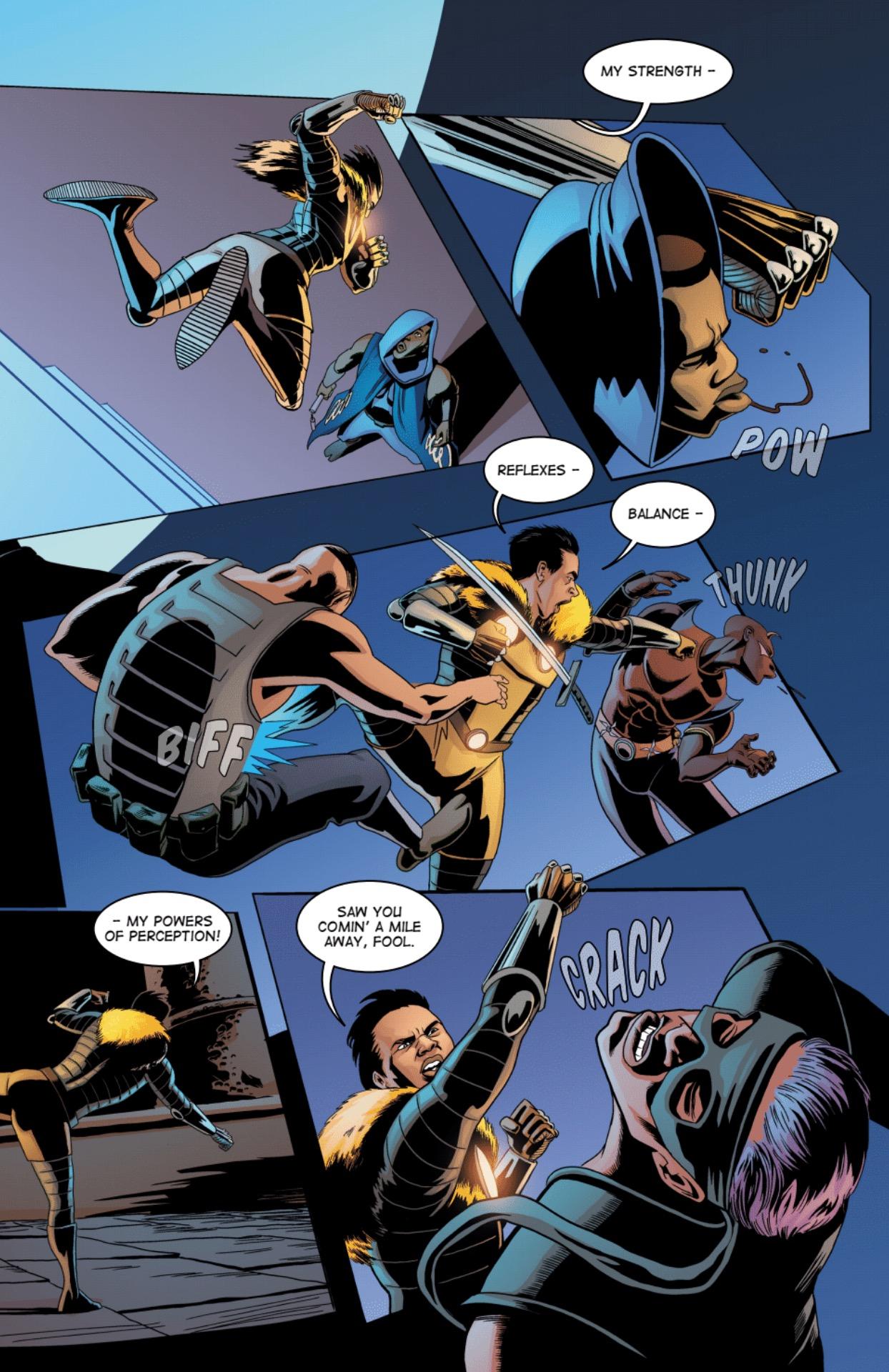
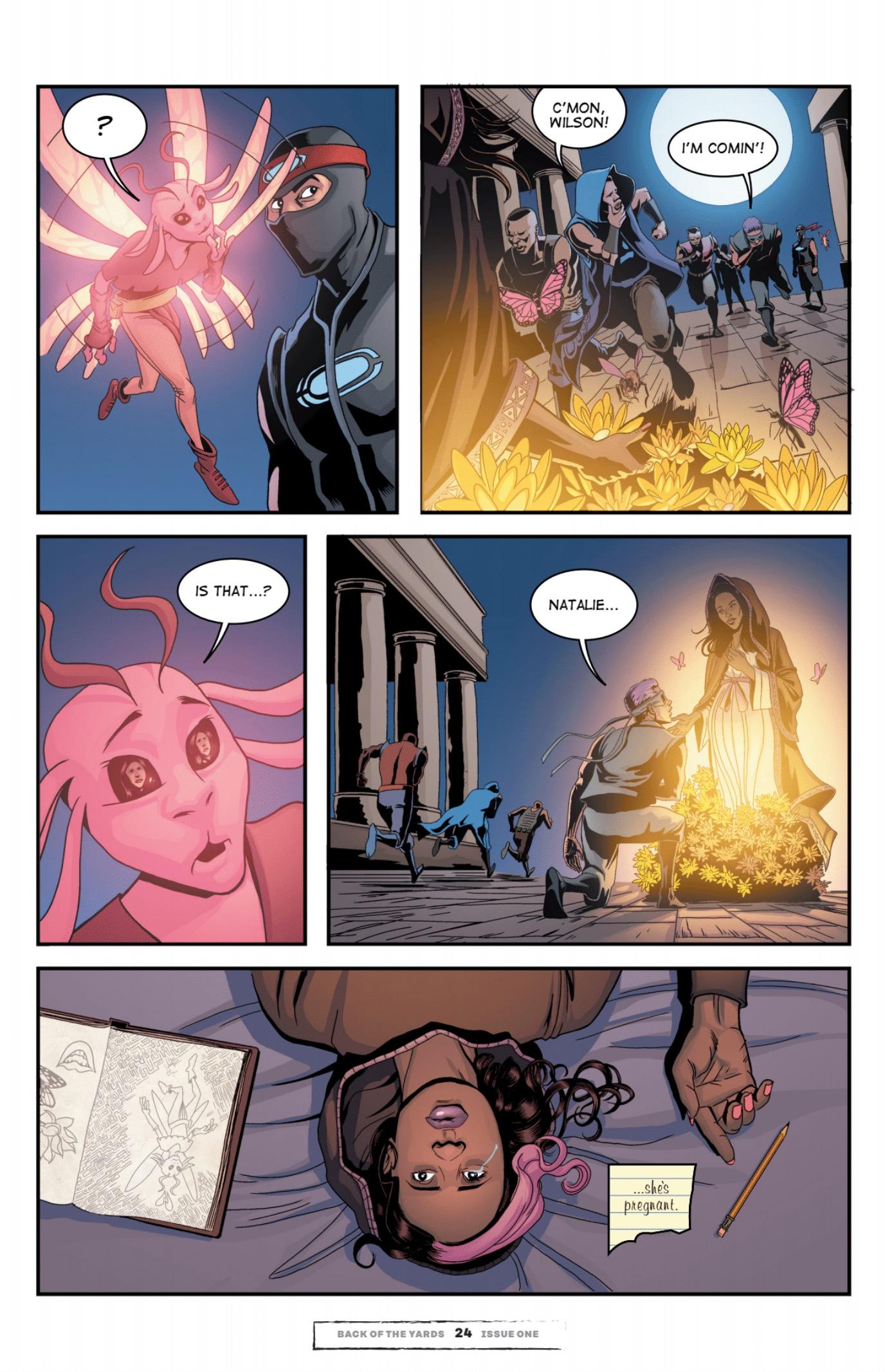
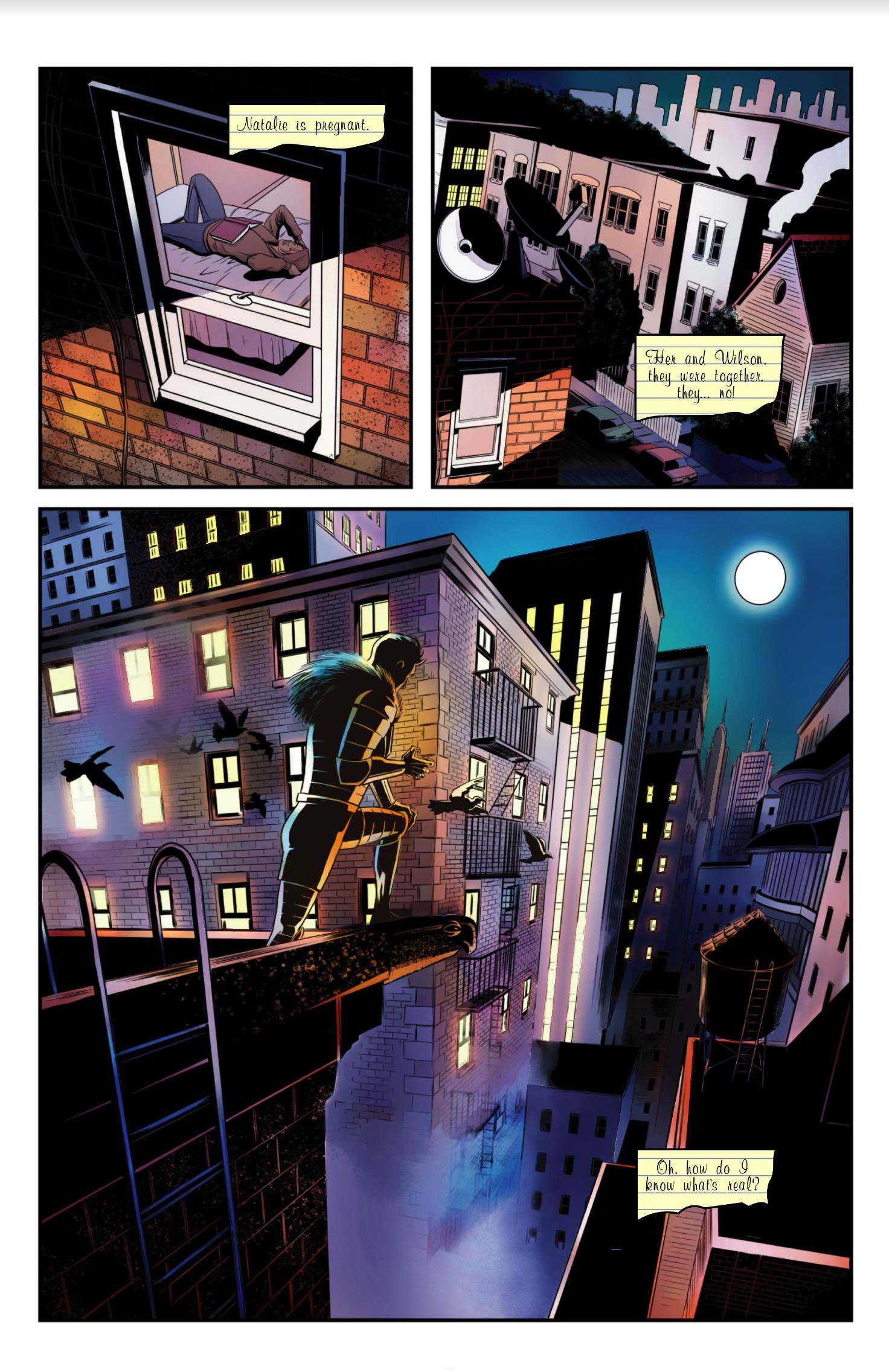
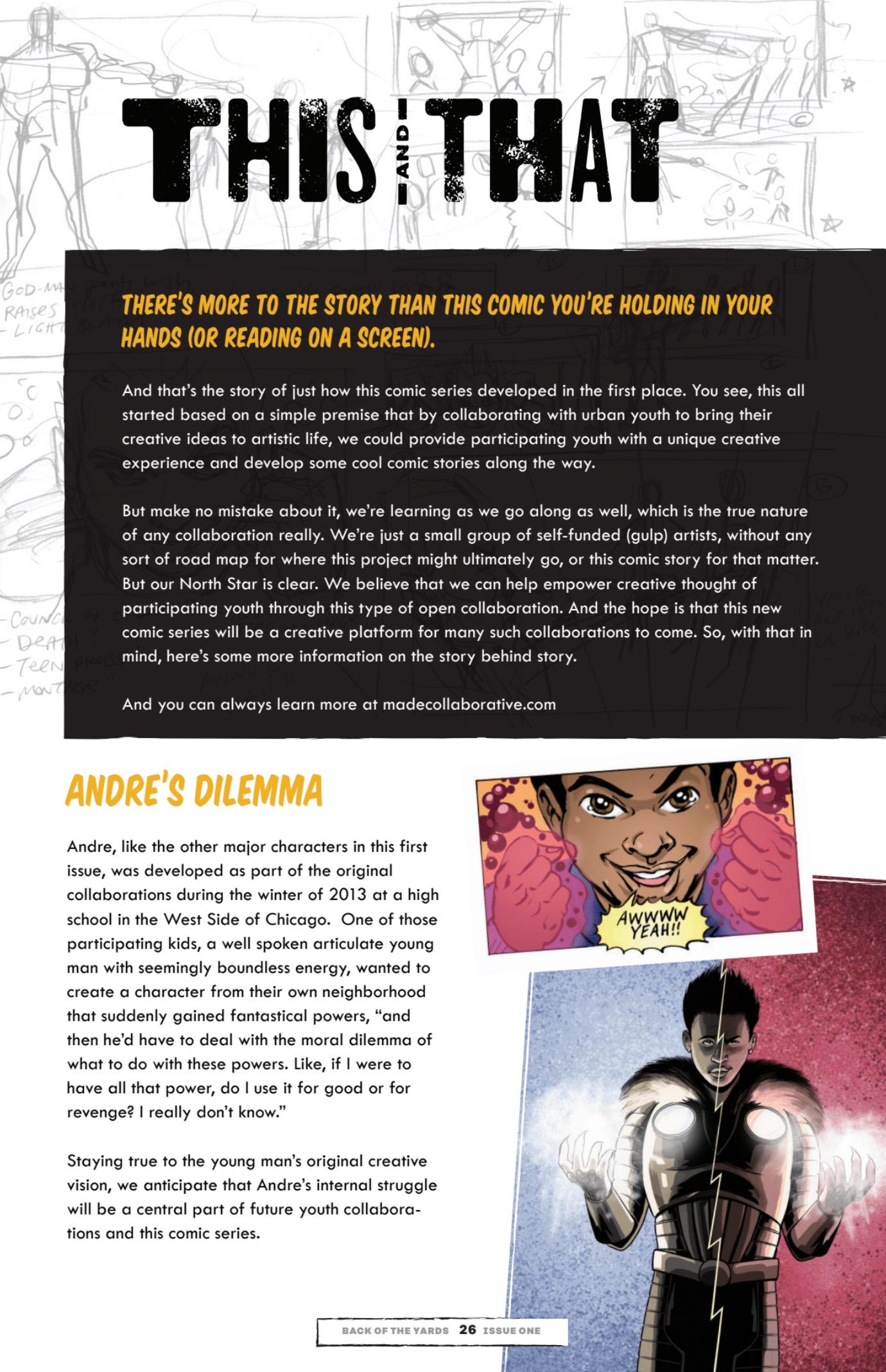
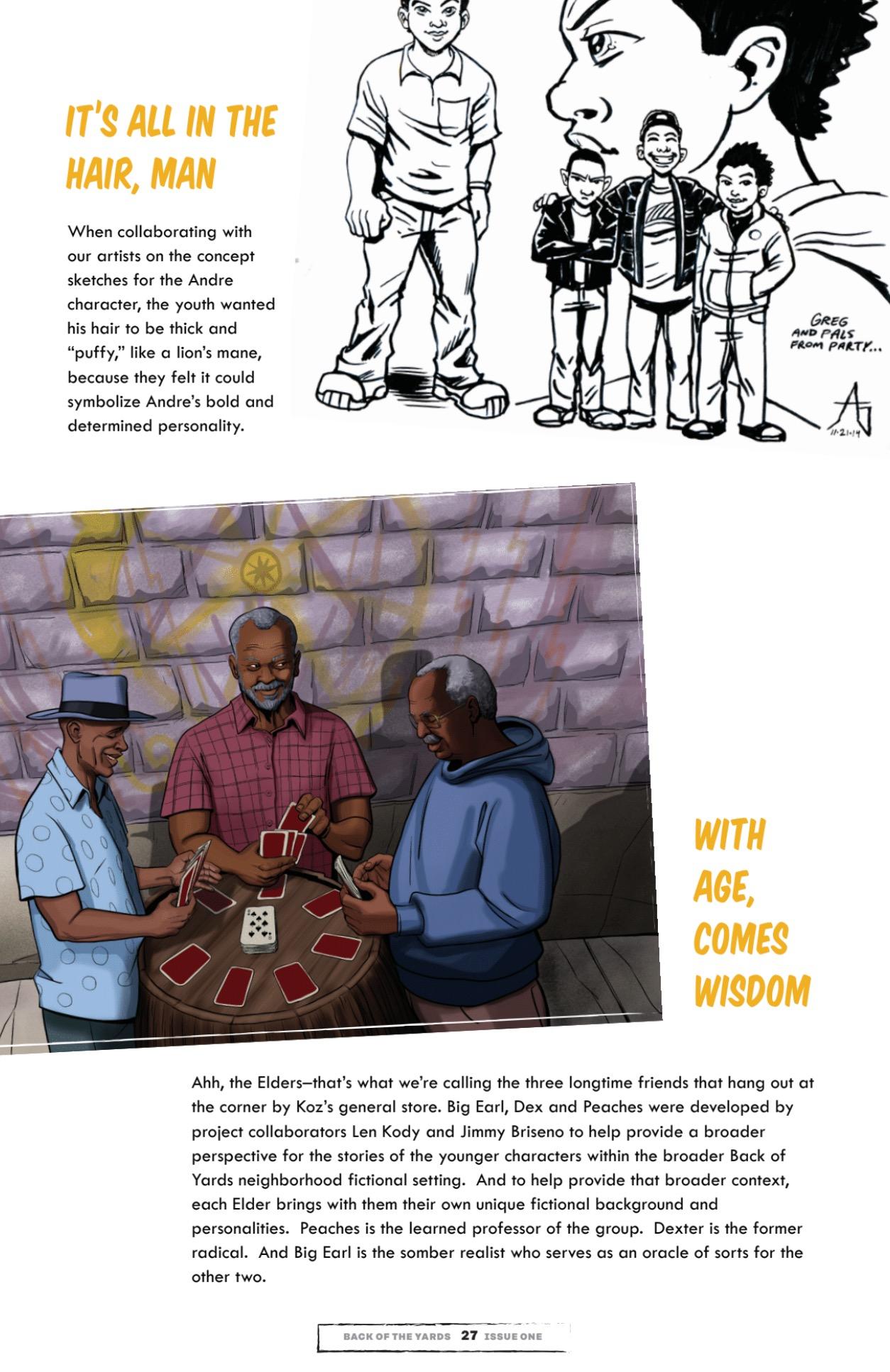
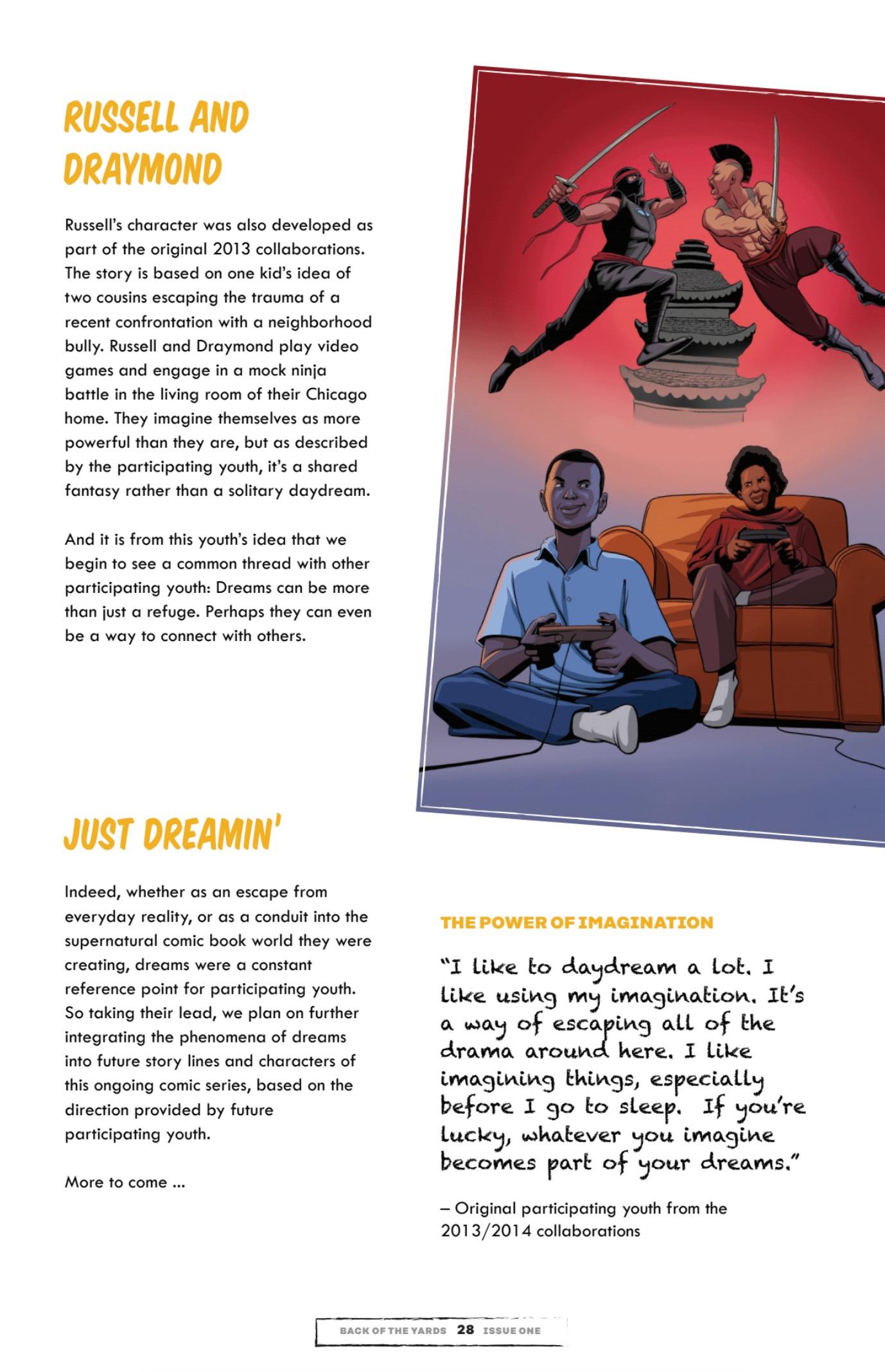

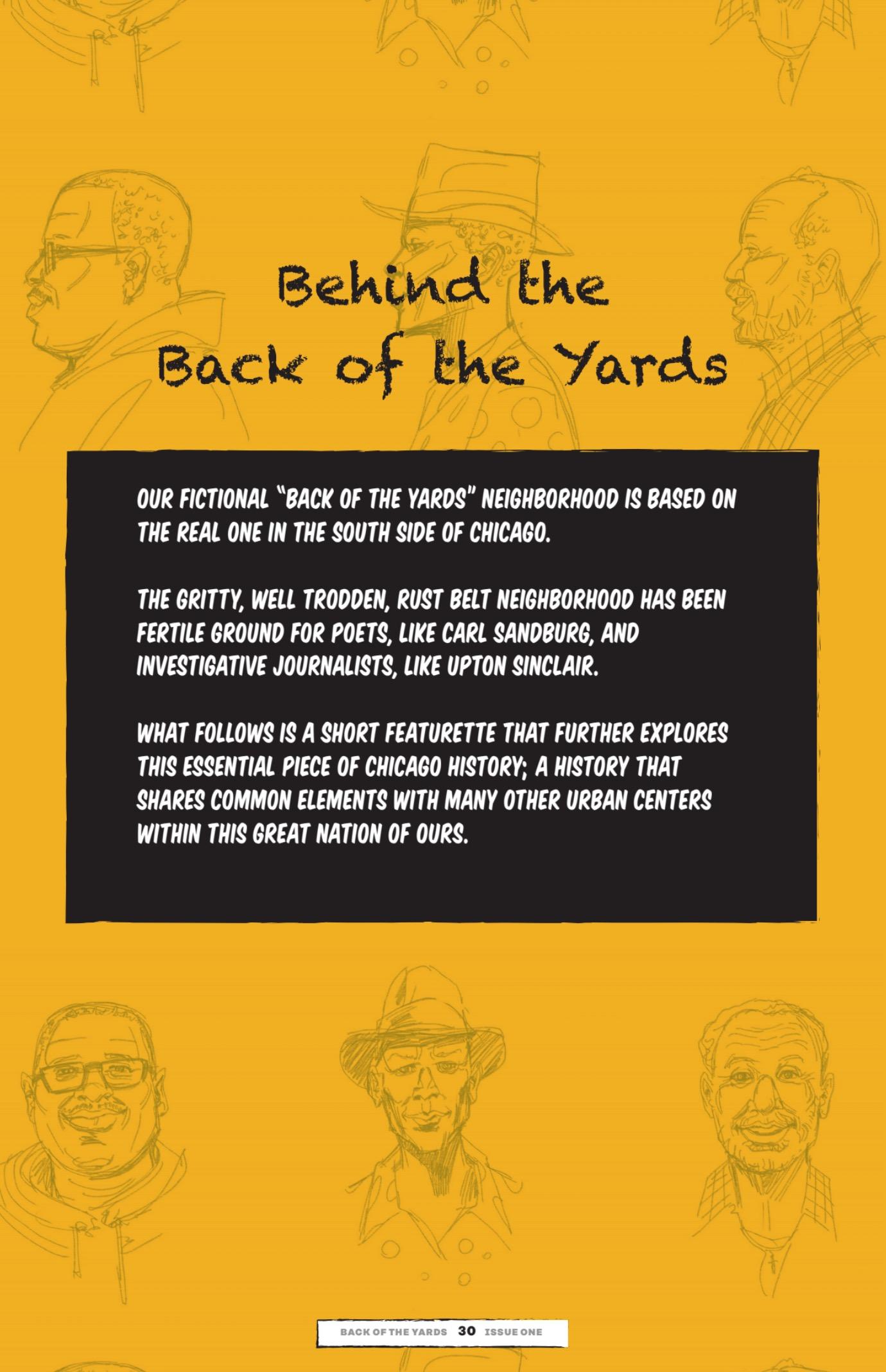
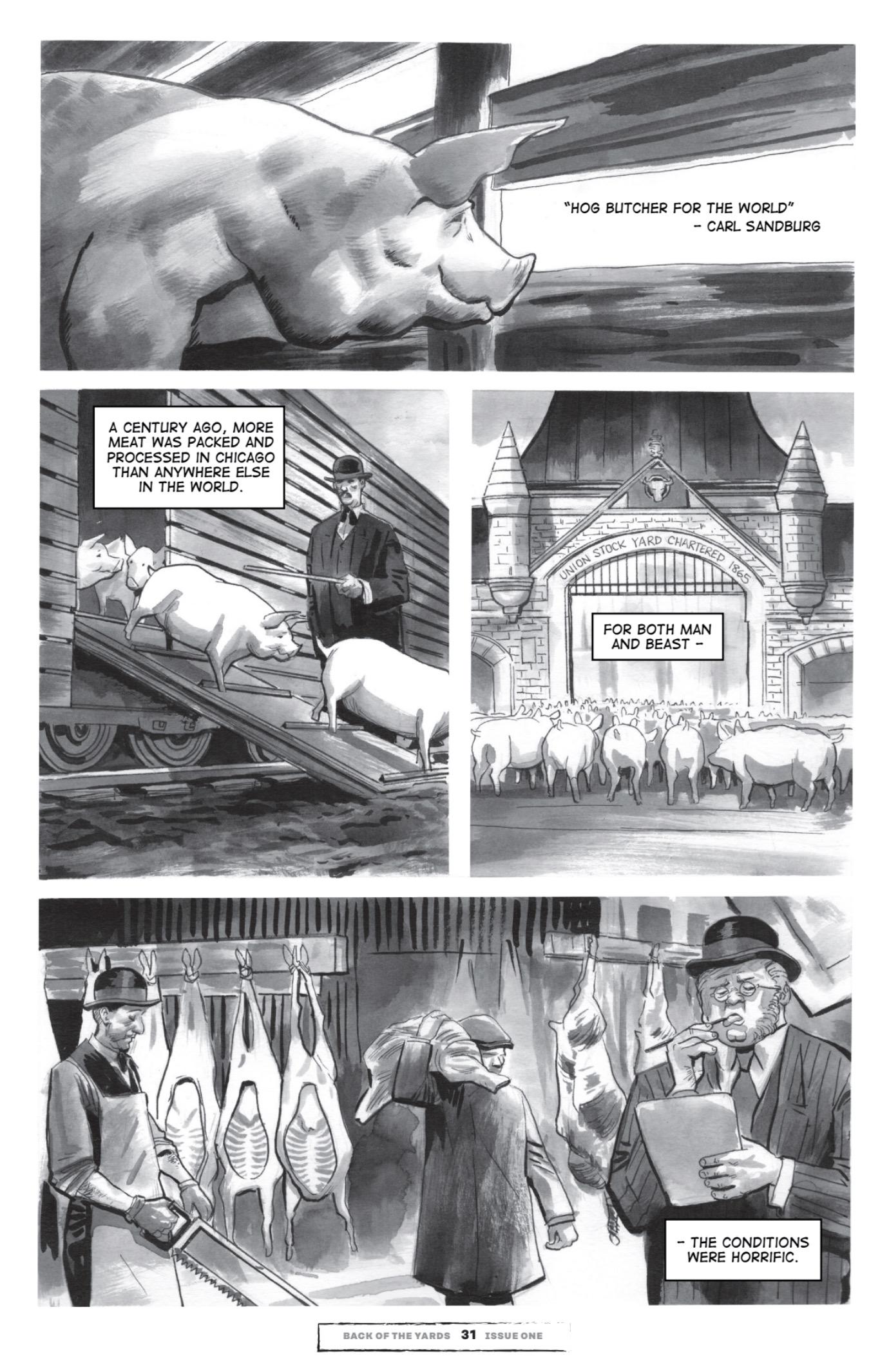
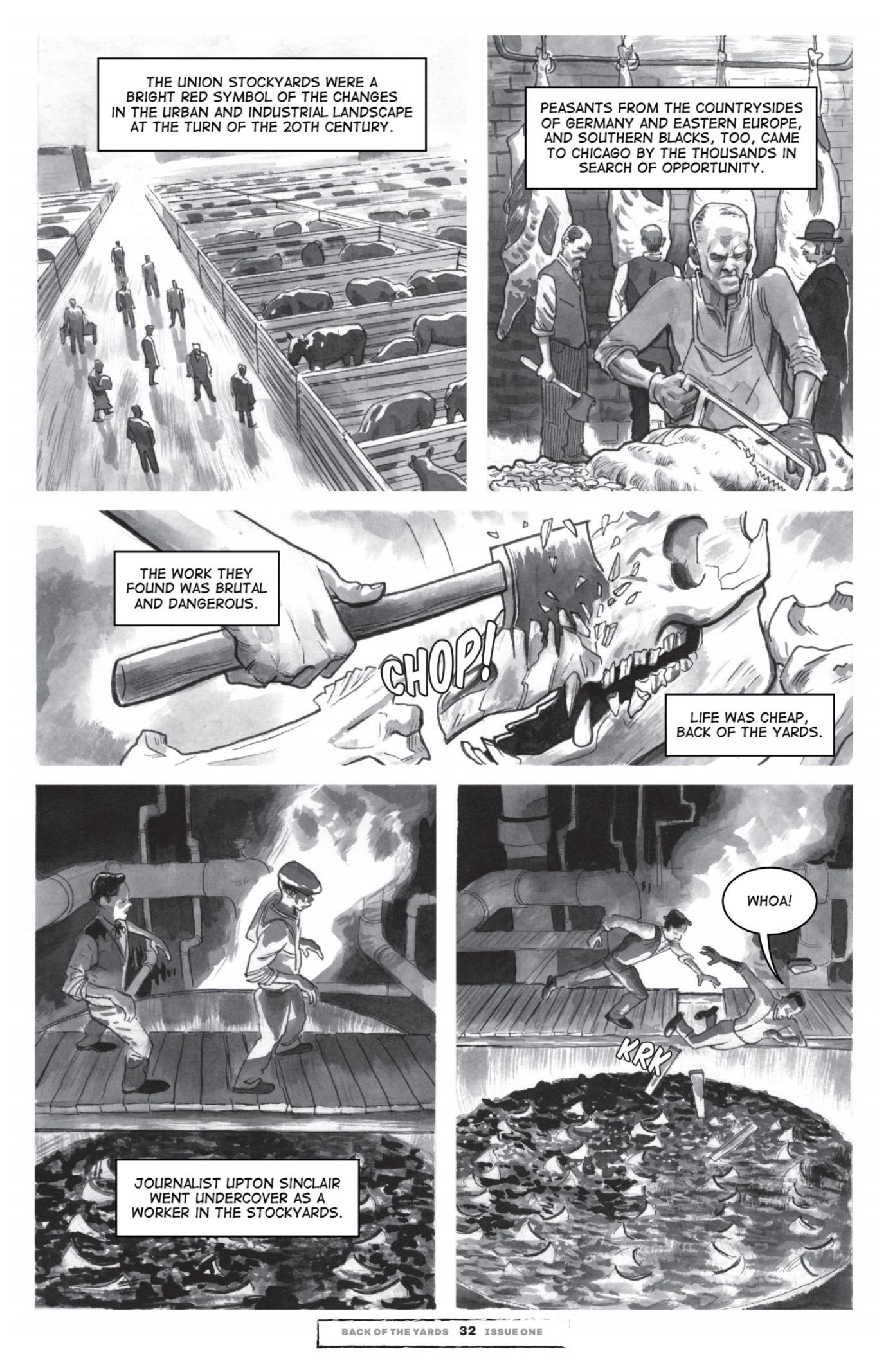
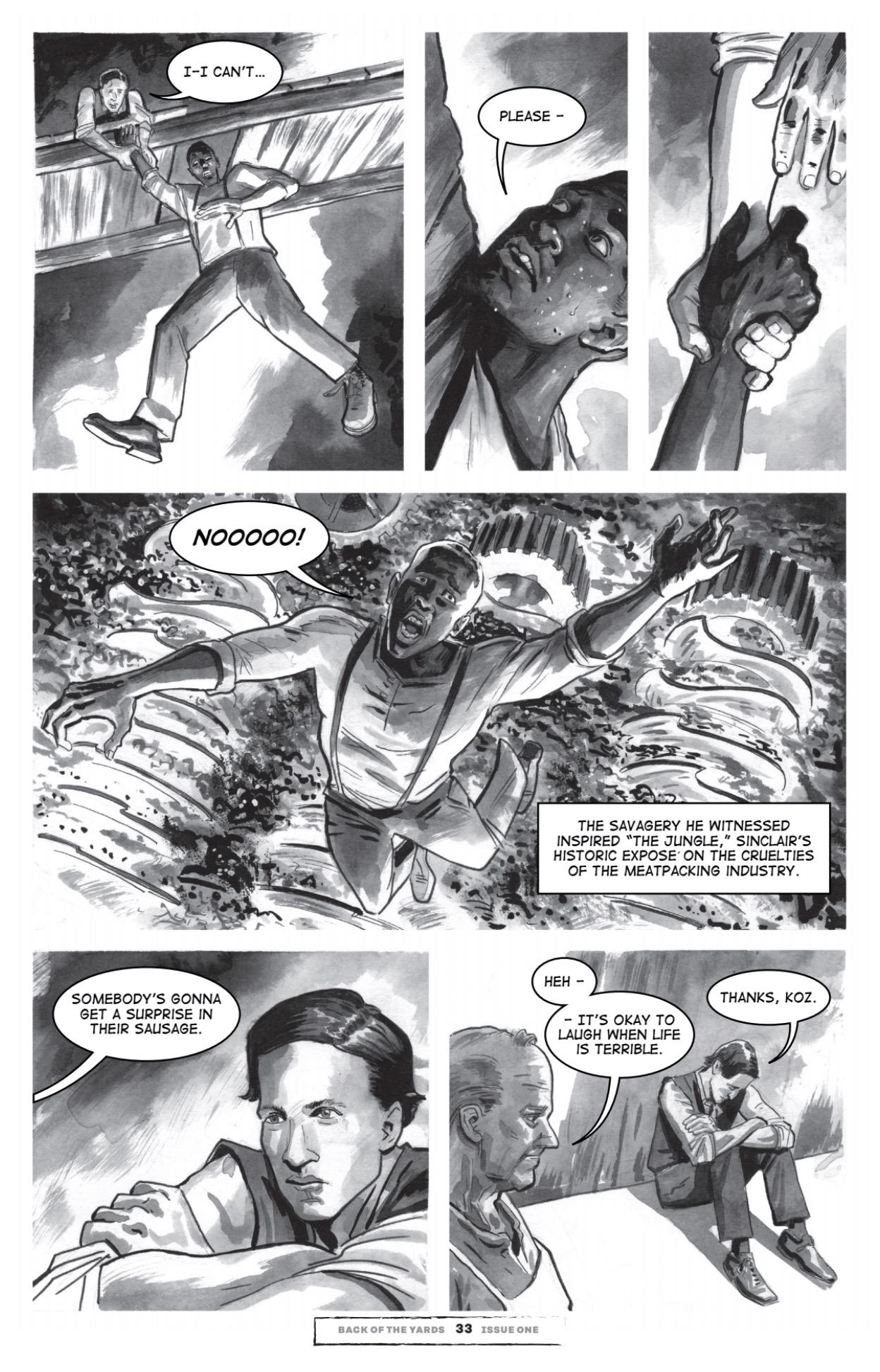
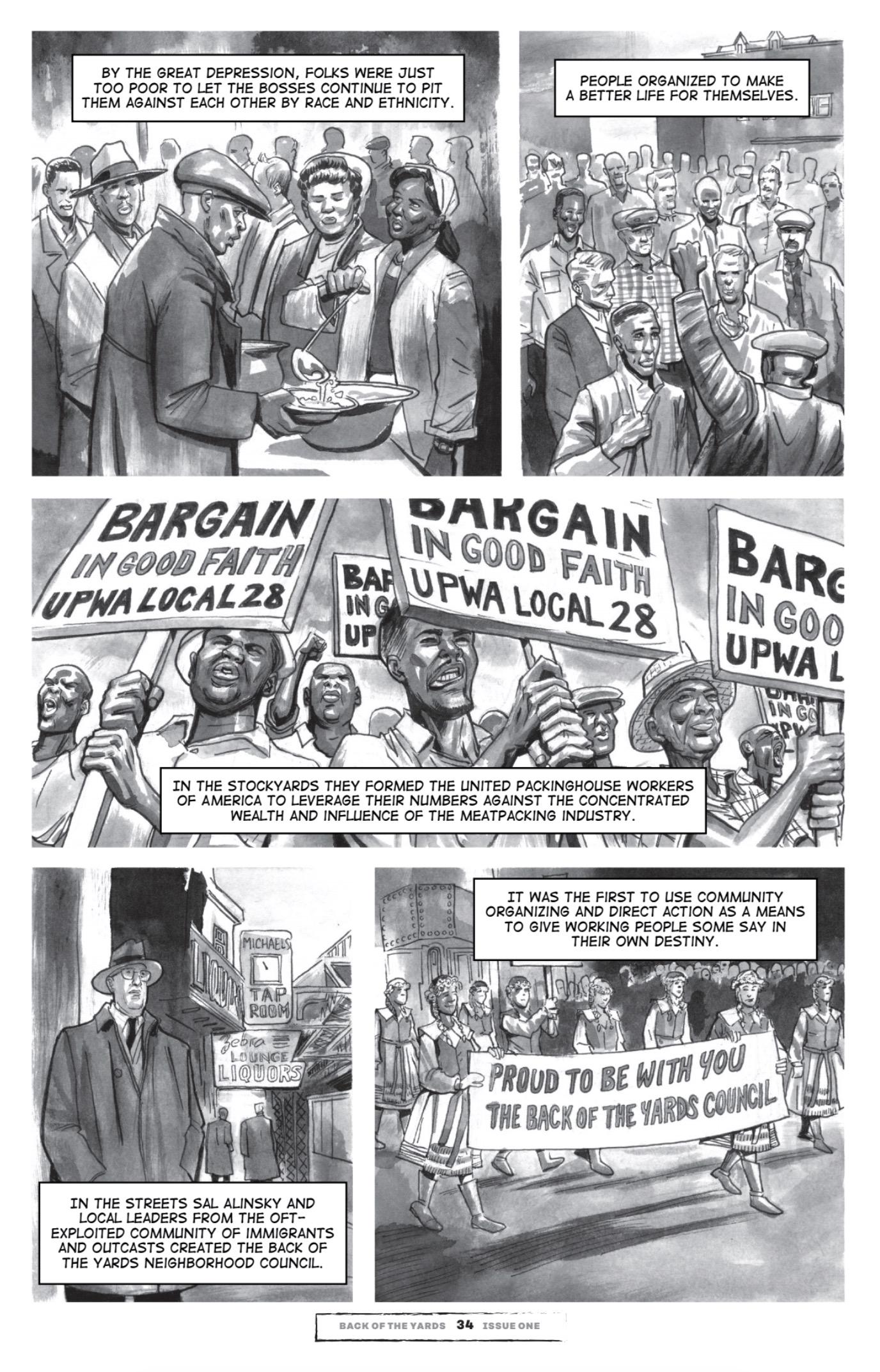
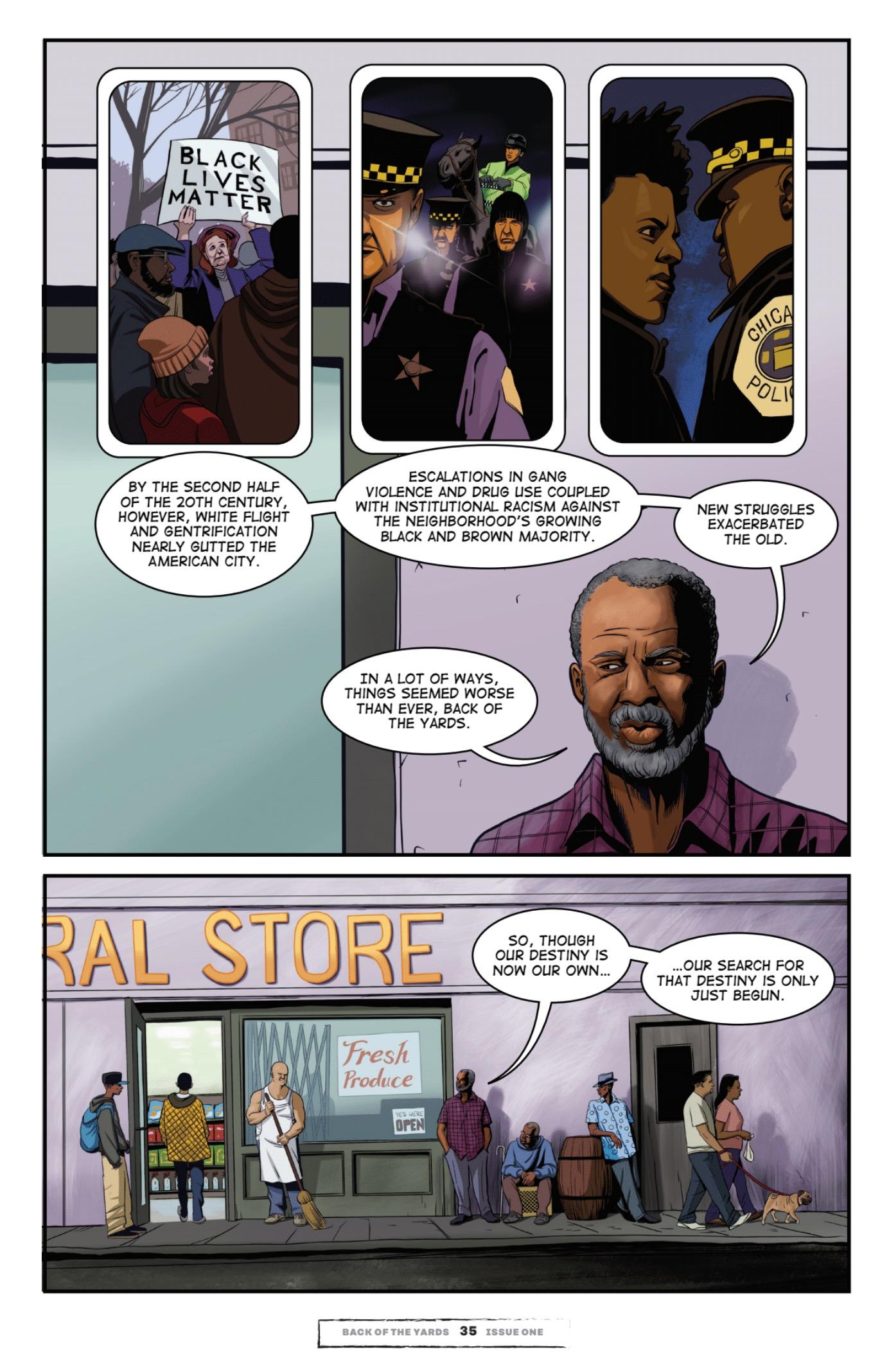
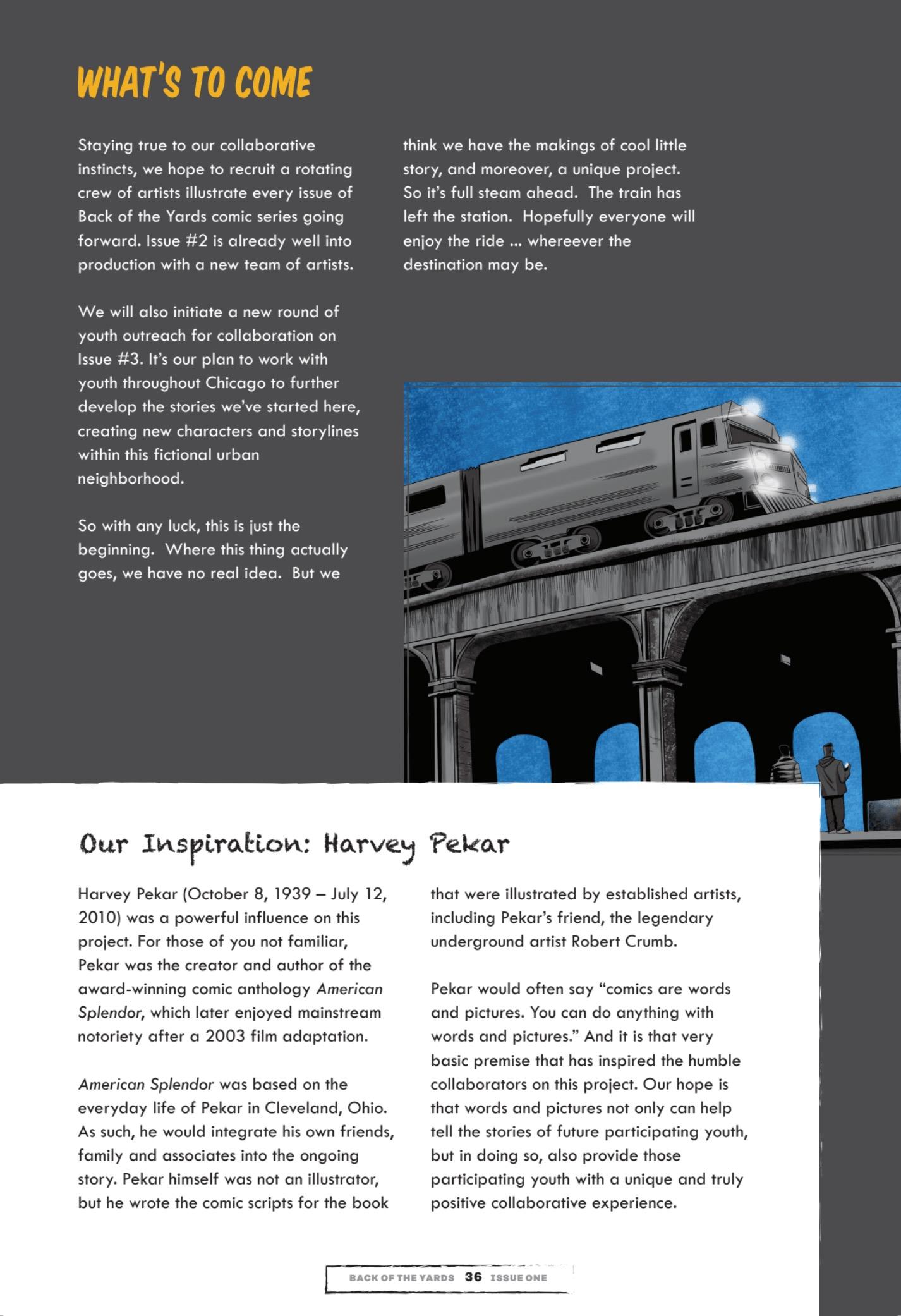
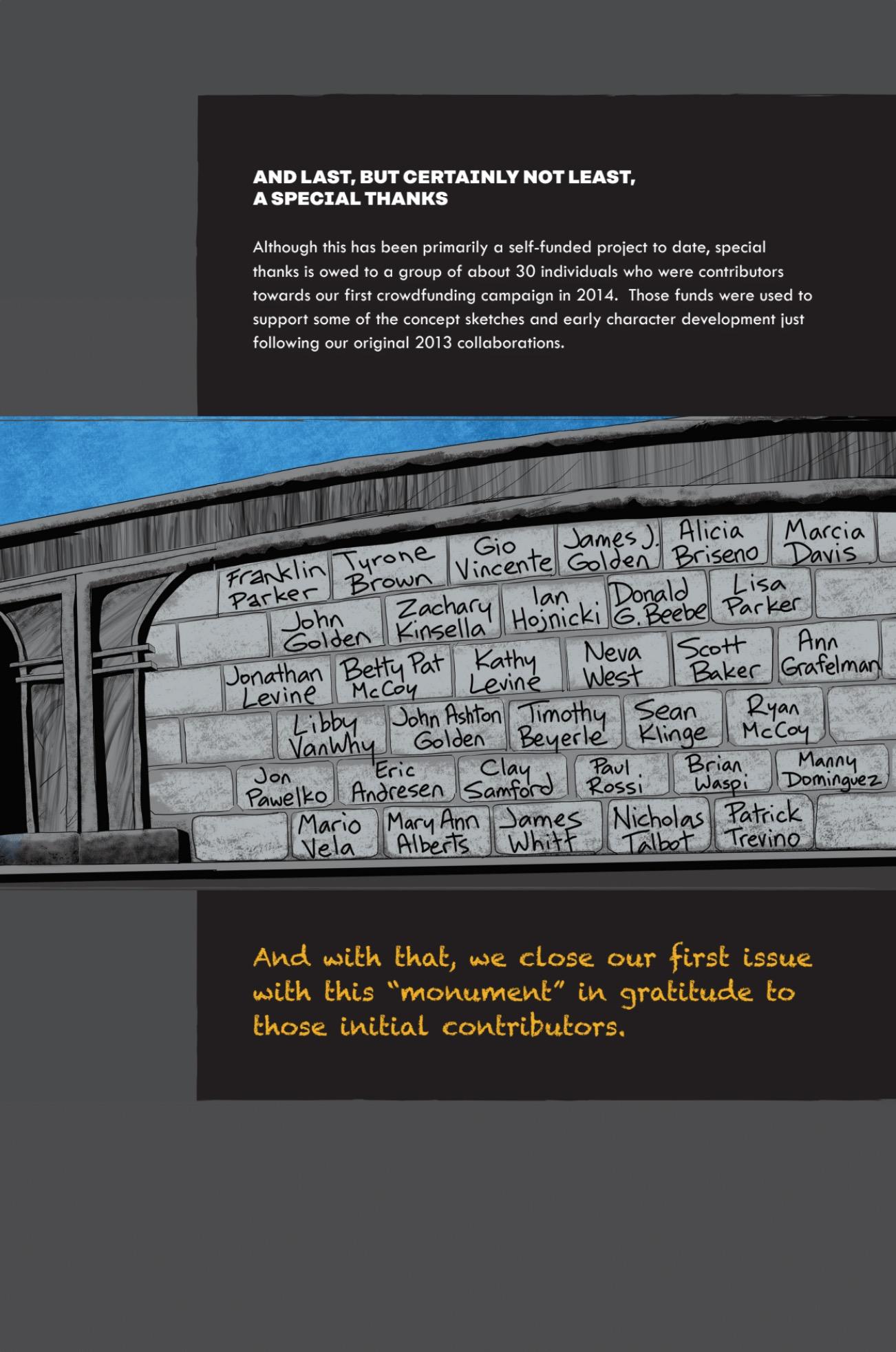
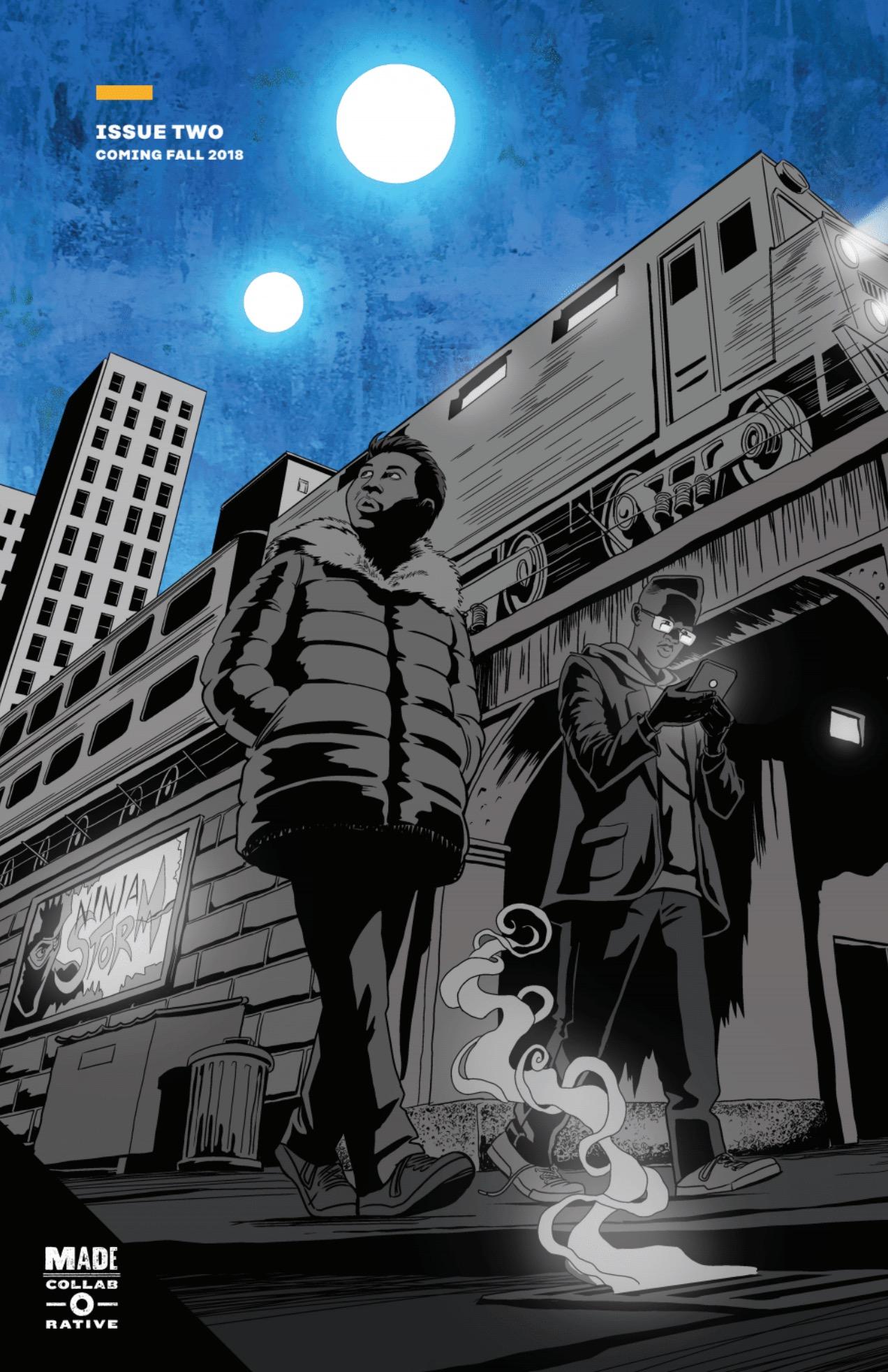

- Part III -

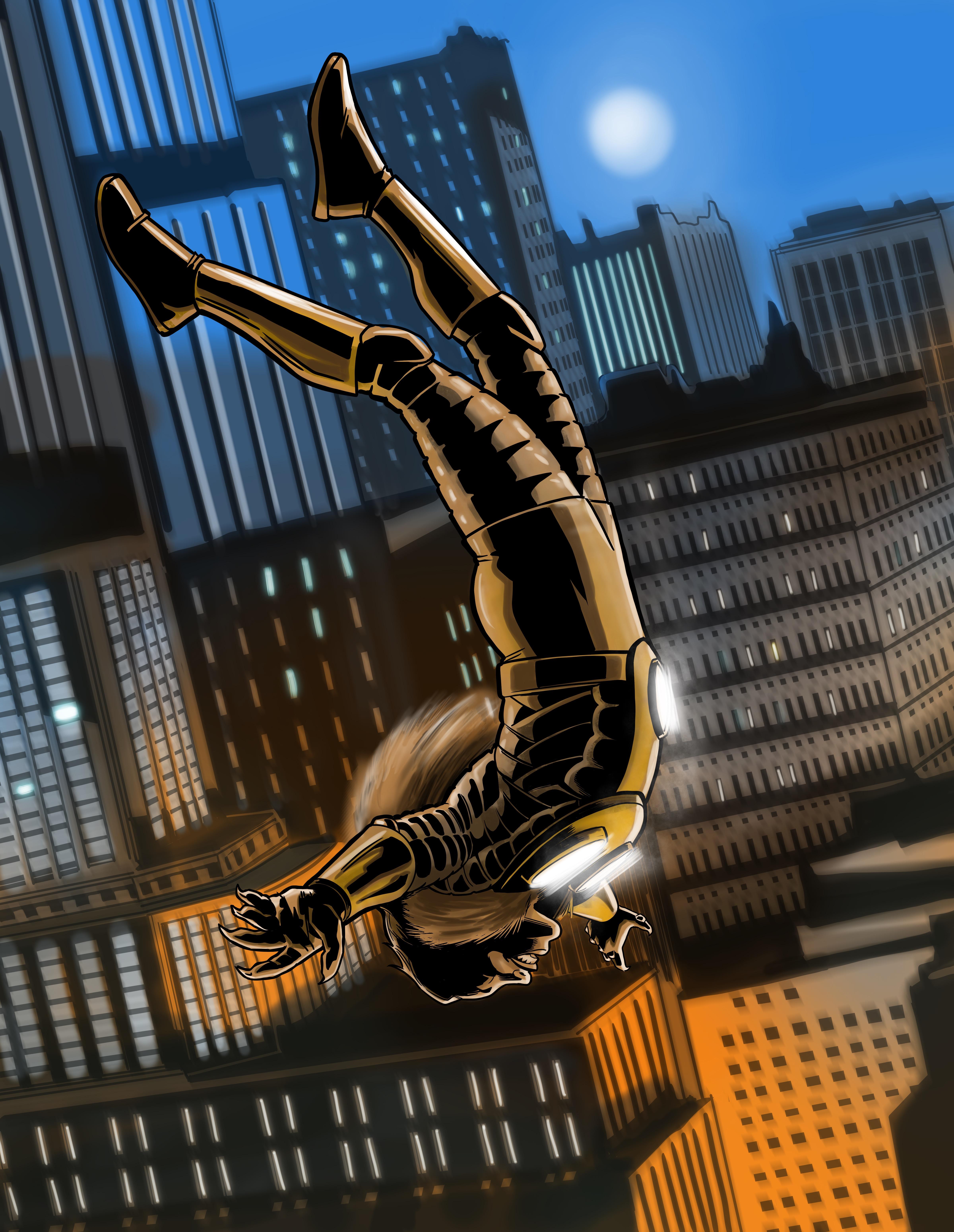
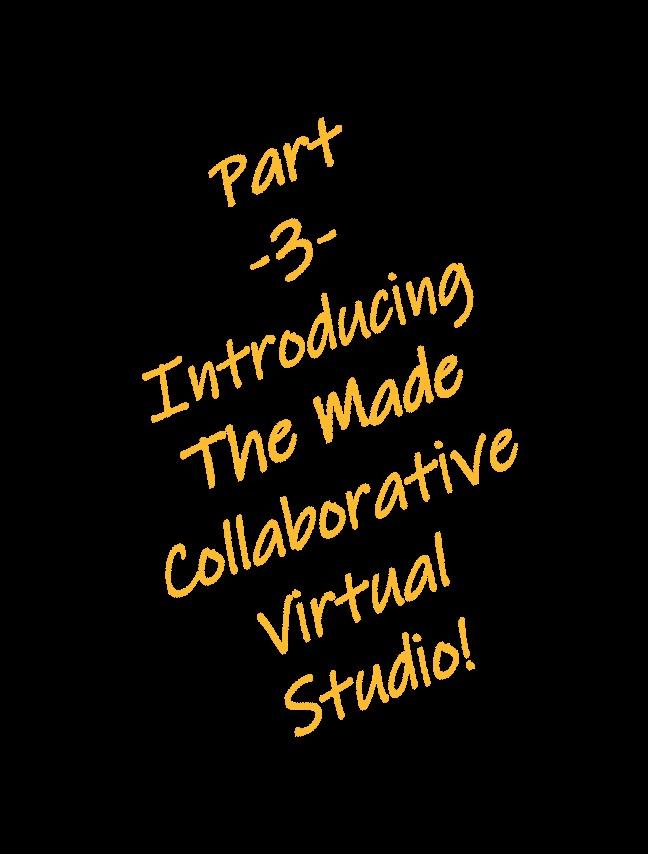
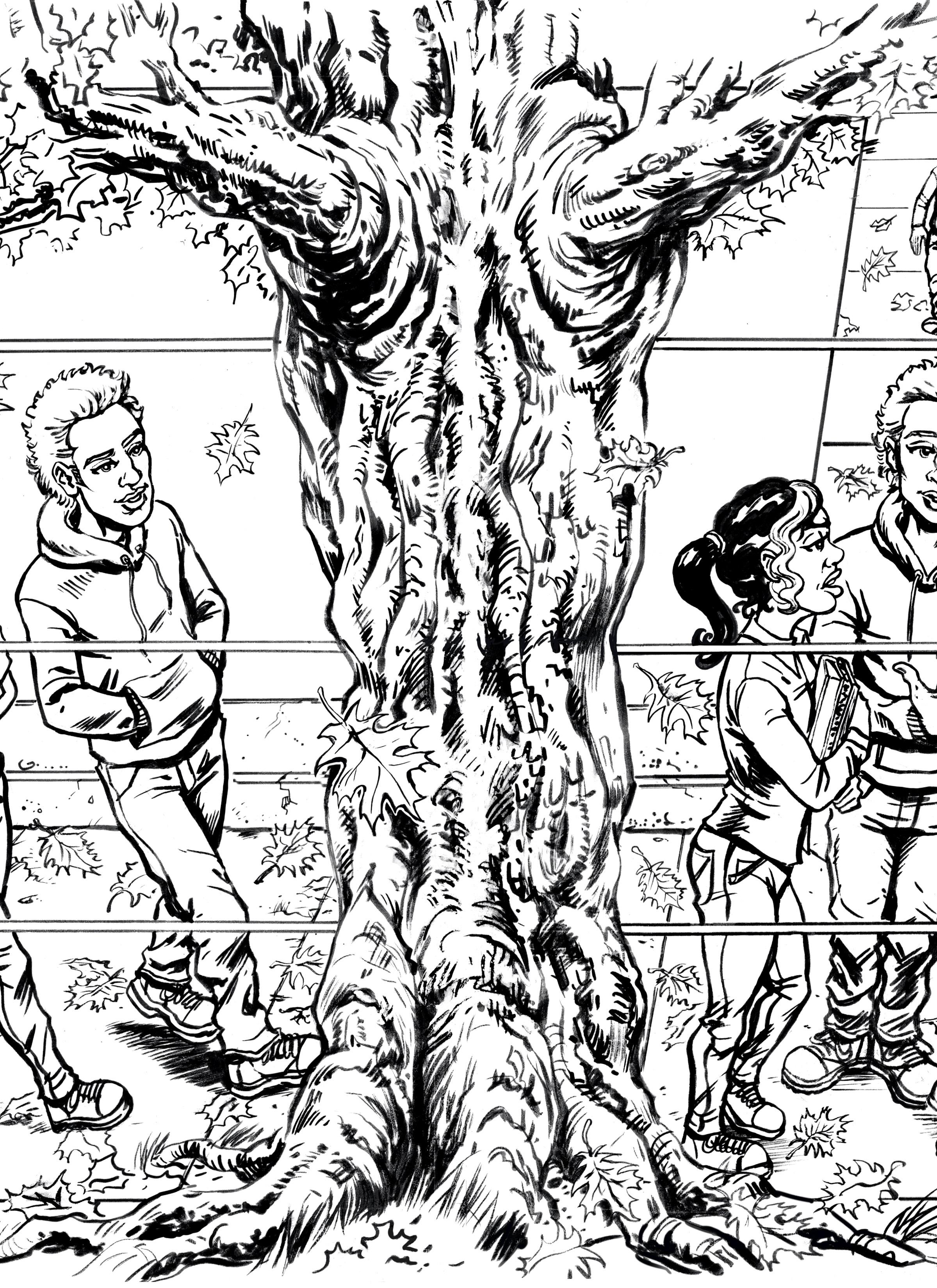
THE MADE COLLABORATIVE

- Chapter 7 -
Issue 2, Project Planning, and a Pandemic

Having completed Issue 1 as essentially a proof of concept, we immediately turned our attention to the development and production of Issue 2. Our thought at the time was developing Issue 2 would provide an even stronger foundation for us to then re-engage broader collaborations with youth in the Chicago community.
For Issue 2, one of primary storyline objectives was to introduce Mr. Carl Castaneda. As previously covered, Mr. Castaneda was created by Len Kody as the connective tissue that holds all the disparate narrative structures of Back of Yards together by framing the Back of the Yards comic series in a context that mimics the one in which it was created.
In other words, the young characters in the original participating youth’s story ideas would all go to the same school. And they would all be familiar with each other, too, because they are all part of the same afterschool arts program led by the same mysterious facilitator, providing a foundational storyline that could be built upon collaboratively by other participating youth (and others) over time.
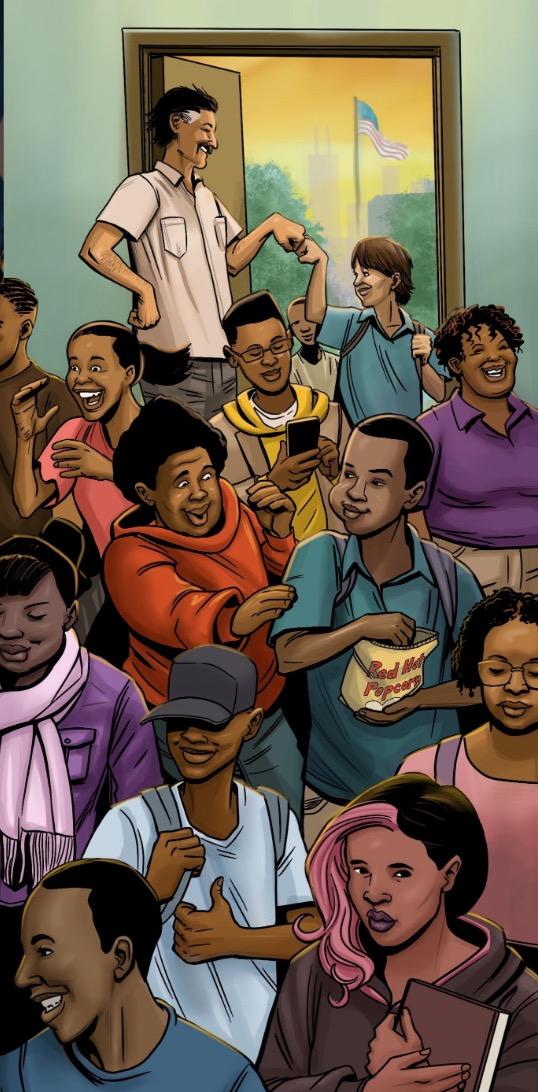
Another creative goal of ours for Issue 2 was to integrate different illustrative styles and to do that, we engaged two different illustrators for the main Issue 2 storyline - Dan Dougherty (the original illustrator for Issue 1) and John Ashton Golden.
And just to be clear, we absolutely loved the look and feel of Issue 1. So, our creative motivation to integrate a different illustrative for style for Issue was in no way any reflection of Issue 1, but rather, a desire to develop a collaborative foundation with this new Back of the Yards comic series not only for participating youth, but also for participating artists. In short, our vision for this collaborative Back of the Yards series was to integrate many different illustrative styles and artists over time, in the same way we would integrate collaborative thoughts and contributions of urban youth and

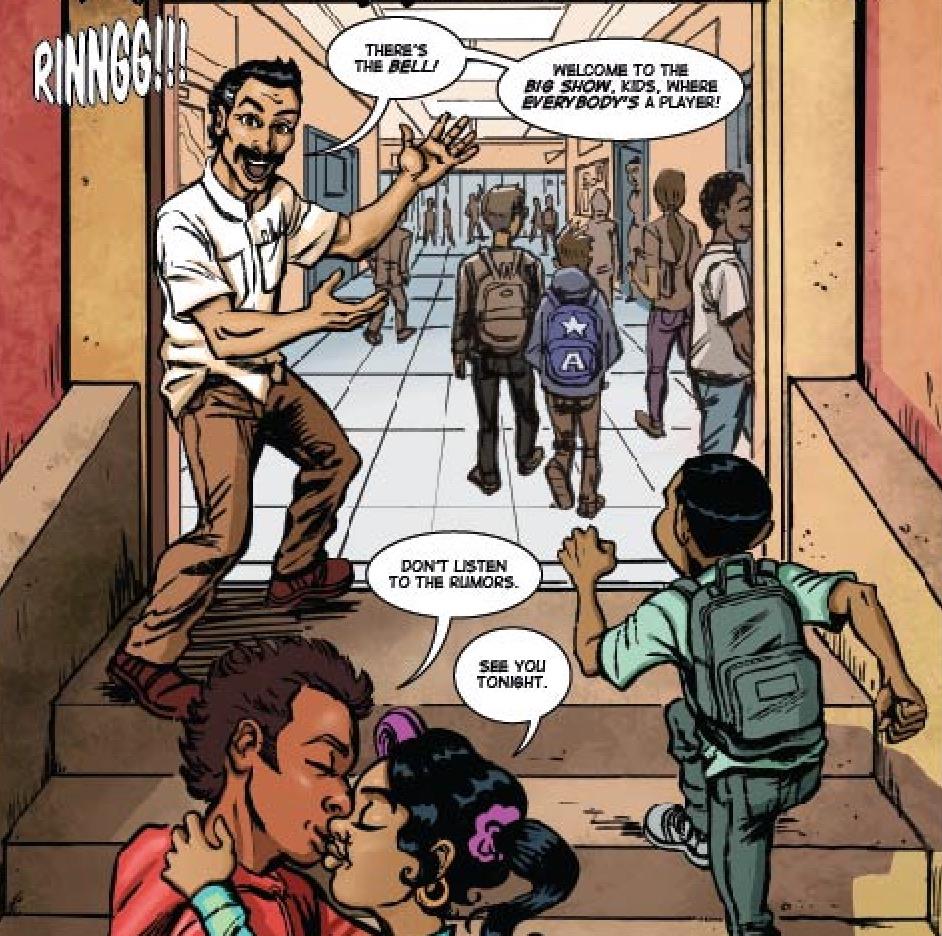

The first Illustrated panel of Carl Castaneda for the Back of the Yards comic series, as illustrated by John Ashton Golden and appearing in Issue 2.
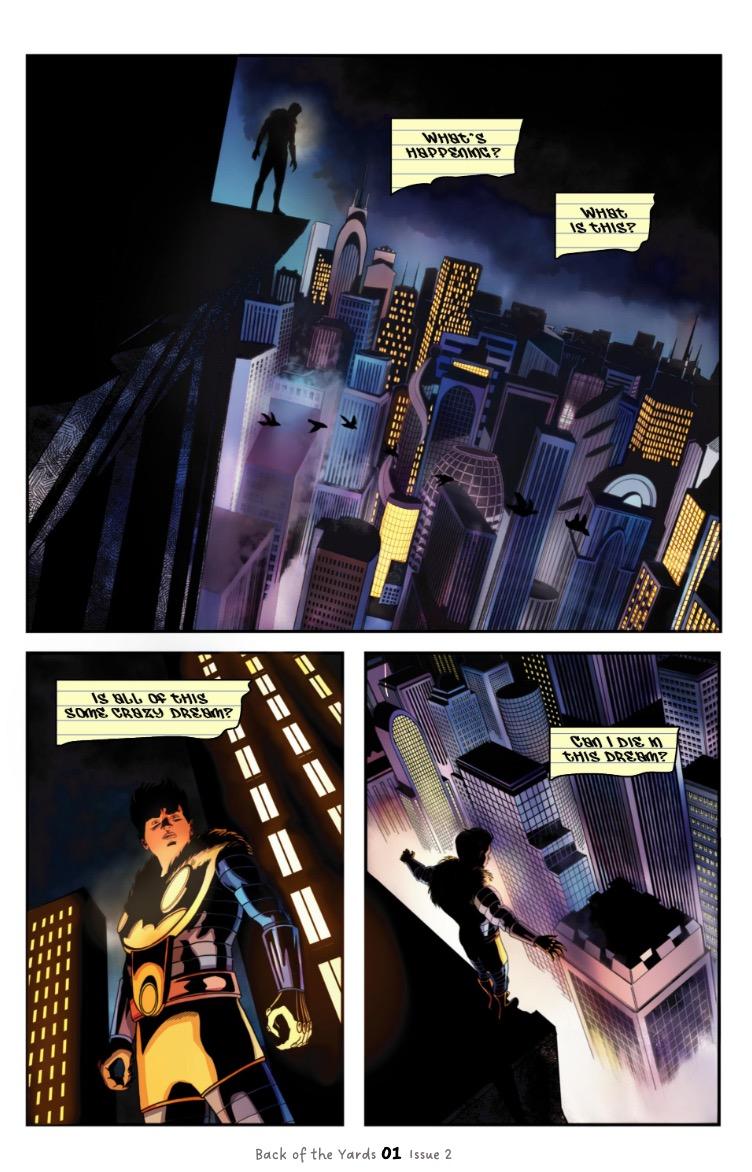
Illustrated Pages from Issue 2. The top two pages are illustrated by Dan Dougherty. The bottom two pages illustrated by John Golden. Issue 2 illustrations were split roughly in half by the two participating artists.
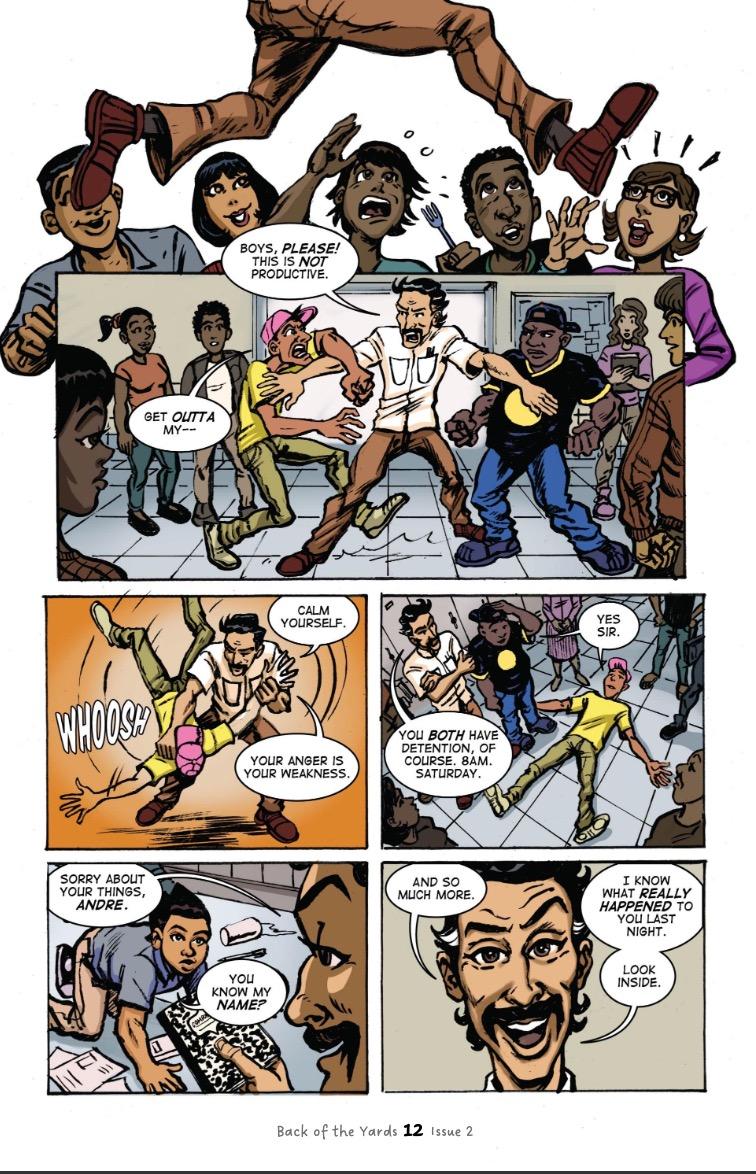

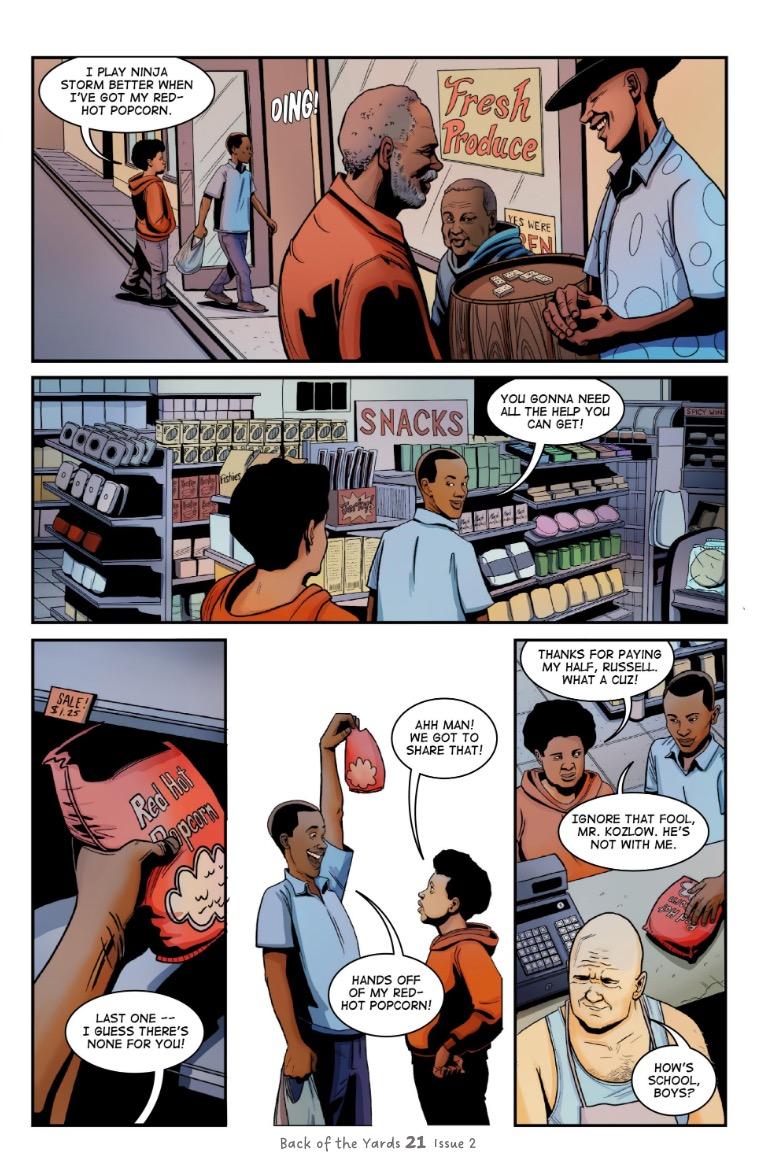
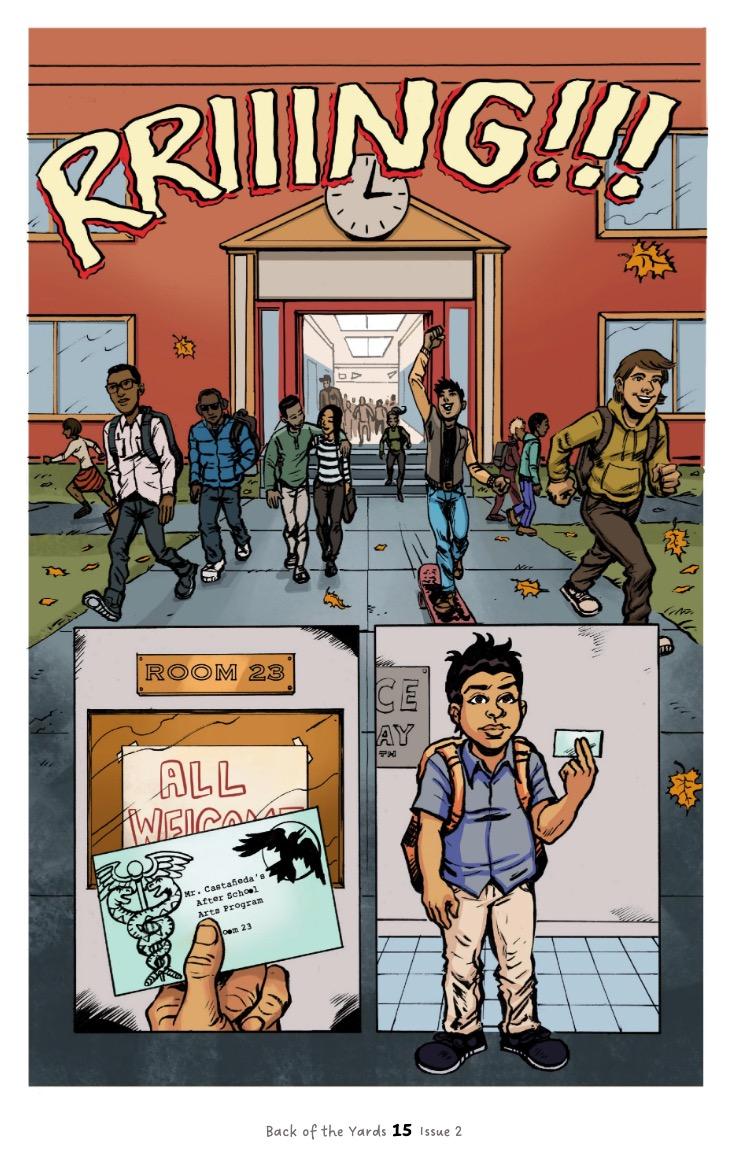
Finally, it was also with that motivation in mind that we engaged one other artist for Issue 2, the inimitable talent that is Andrew Dimmitt. During the early stages of development for Issue 2, Len and Jimmy wanted to lean more heavily into the mysterious origins of Carl Castaneda. The problem was figuring out how to further explore that origin story in any meaningful way within the construct of the Back of the Yards Issue 2 main storyline.
However, there was a potential creative solve. Just as we had divided Issue 1 into two parts, one serving as the main comic storyline (25 pages), and the second part as a supplement to that to that main storyline; our thought for Issue 2 was why not use some of that supplemental space to further present Mr. Castaneda’s back story as a separate feature?
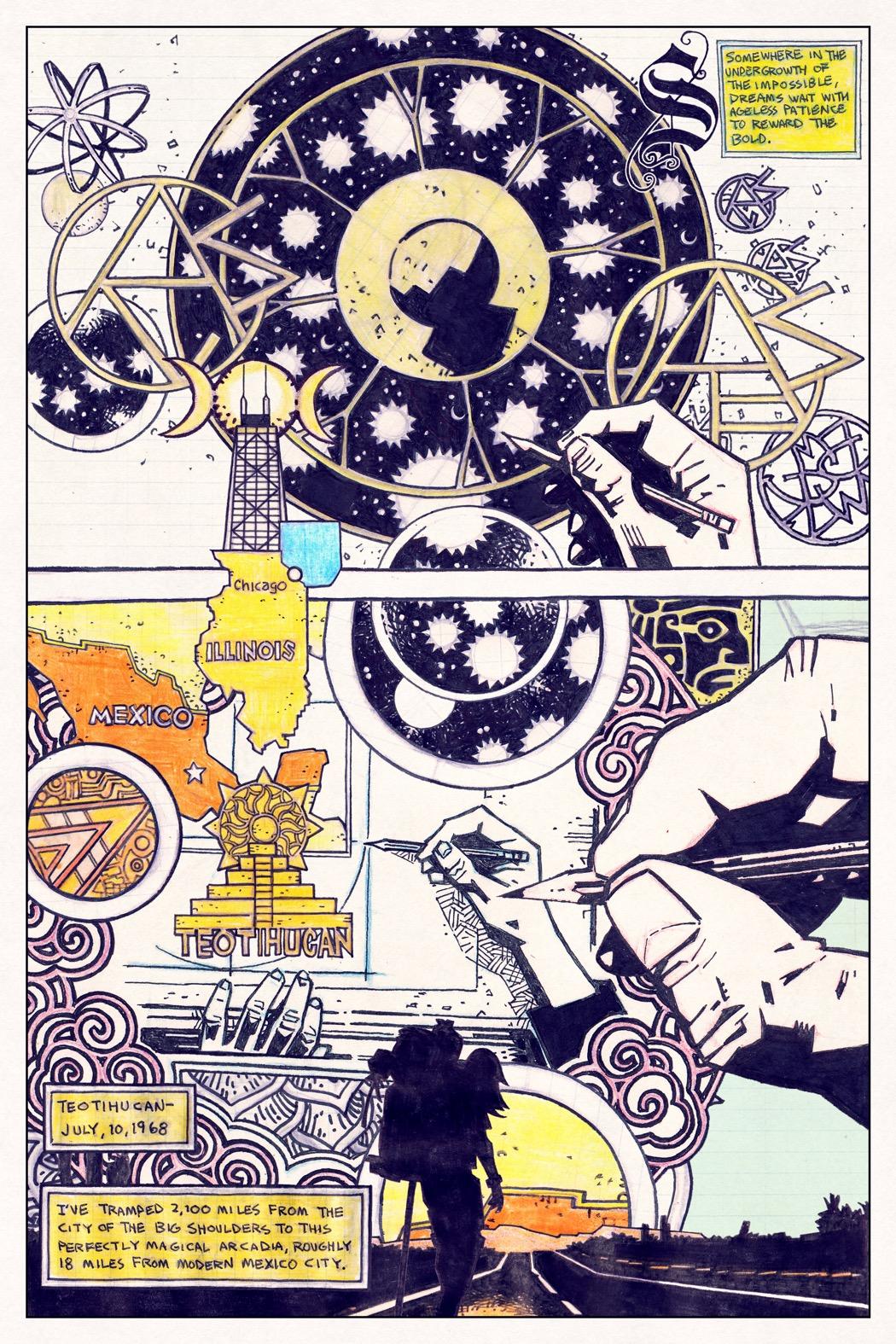
And who better to help us do that than Andrew Dimmitt ...
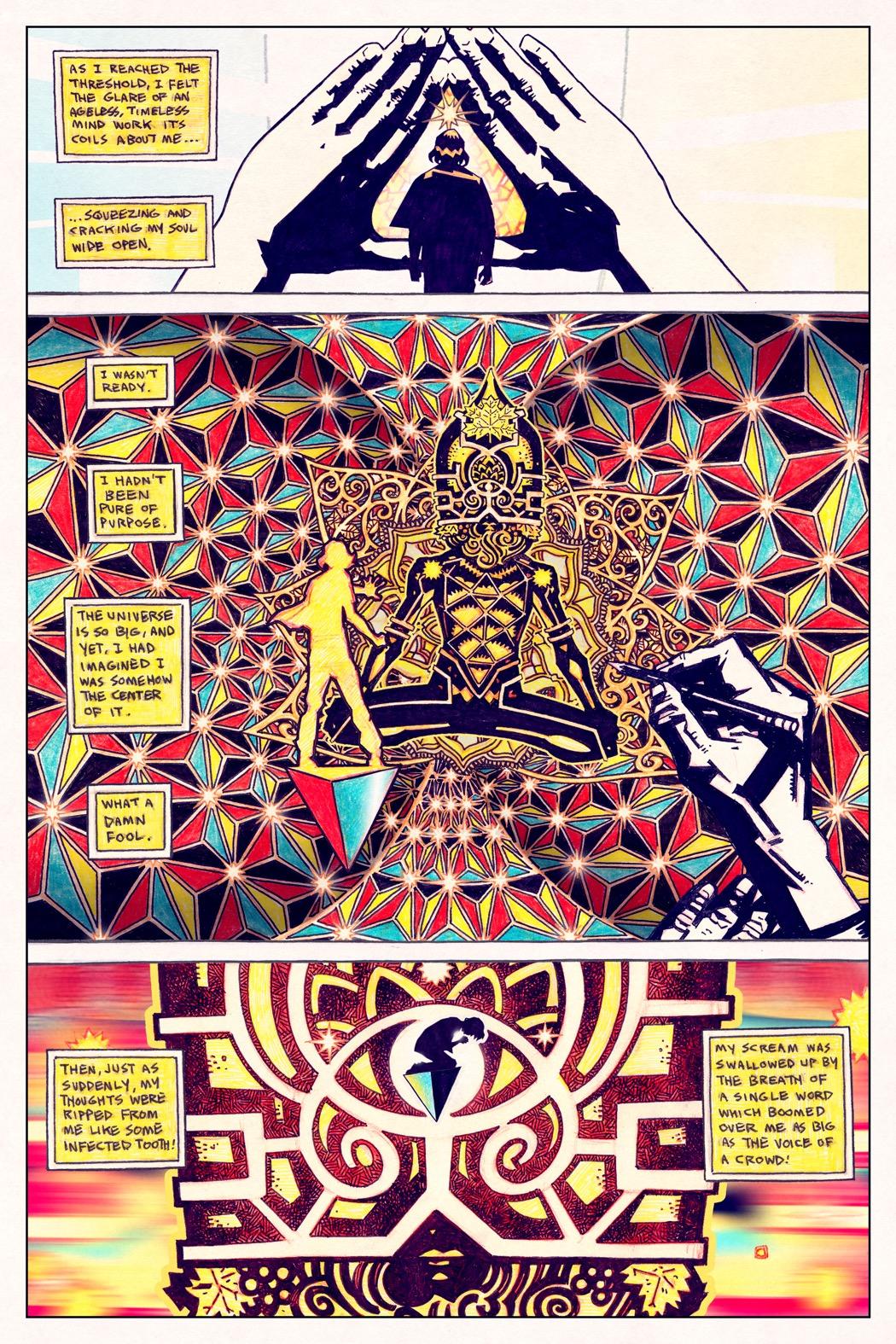
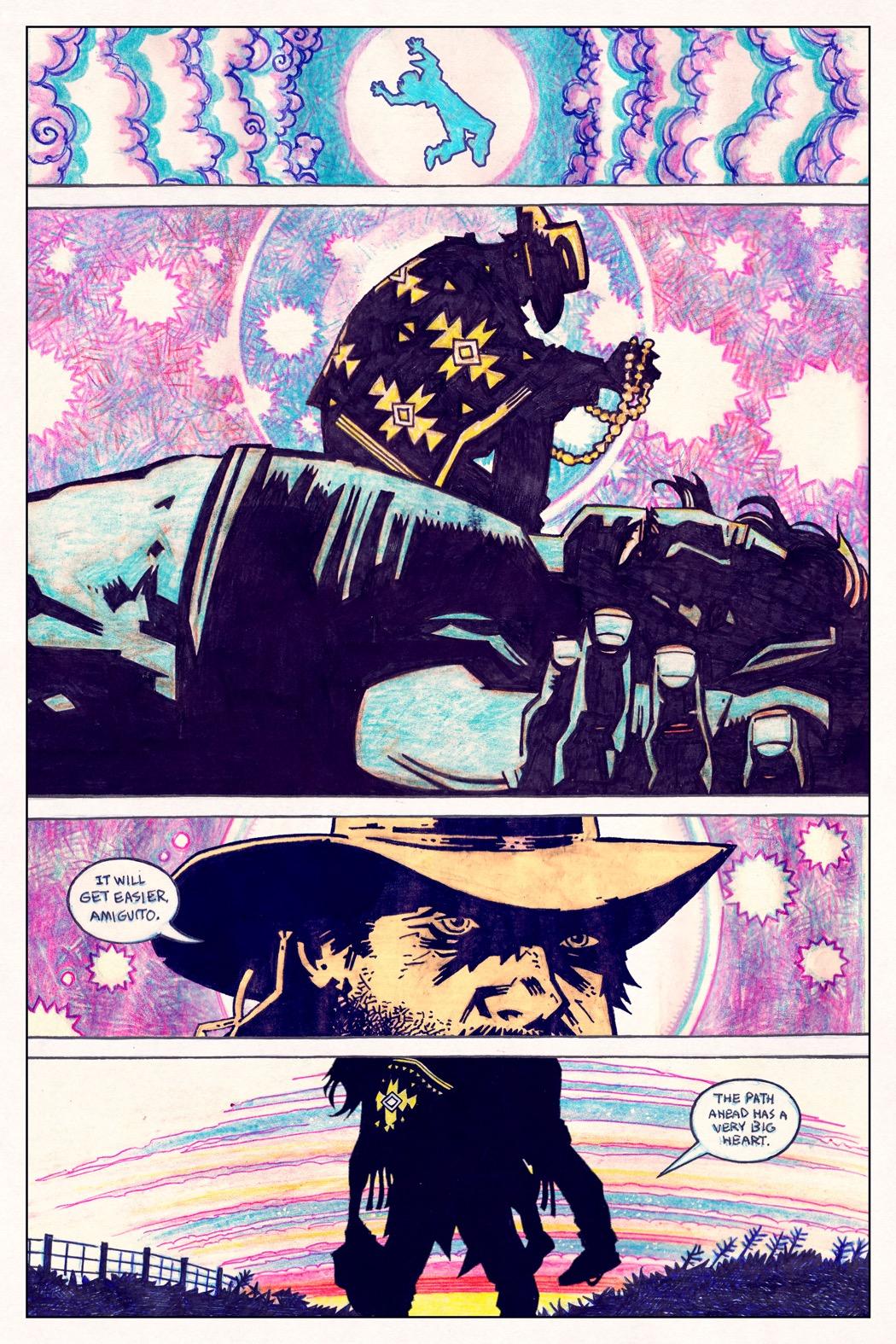

Planning for the Next Collaborations
Armed with these creative and collaborative motivations in mind, we would push forward with the Issue 2 production between our day jobs and life’s other obligations and challenges, eventually completing the fully illustrated 25-page script (which you can read digitally on the Back the Yards Studio Card page). And in parallel with that Issue 2 development process, we started taking a deeper dive into planning for the re-engagement of after school programs for that upcoming school year. And for those next rounds of collaborations, we wanted to more formally incorporate elements from Joseph Campbell’s Hero’s Journey.
For those not as familiar, the Hero’s Journey is a common template framework for story development consisting of a “hero” that goes on adventure, encounters a challenge, overcomes that challenge, and becomes transformed. It is a framework that was popularized by Joseph Campbell and one that Len Kody strongly believed would be beneficial to participating youth going forward for the development their own creative ideas and as a general framework for viewing the world around us.

As Len put it, “the Hero’s Journey has helped me in life many times, both creatively and personally, and it would mean a lot to me to be able to share that framework with participating youth and others as part of this project.”

And that was the collaborative plan as we prepared to get back into afterschool programs the following year. But then, seemingly out of nowhere, we began hearing about something called “Coronavirus” for the first time and just as suddenly, the world changed.

To say COVID changed everything for us would be an understatement. Of course, COVID’s impact on this modest little comic project is obviously trivial compared to what has been experienced by so many throughout the world. But, in any case, any plans we had of reengaging youth in classrooms and afterschool programs were also completely derailed because of COVID’s impact.
Thus, we were left wondering what, if any, next steps we should take considering the global pandemic? And it was then that we really began to reconsider our underlying collaborative model.
You see, truth is, even before COVID, we struggled with many aspects of the longerterm plan. Sure, we felt good about the basic premise of using this comic platform as a way of promoting creative thought for participating youth and further enhancing this collaborative model by incorporating elements from Joseph Campbell’s Hero’s Journey (as well as Carl Jung’s Character Archetypes). But at its core, we knew just how challenging the in-person collaborative model can be.
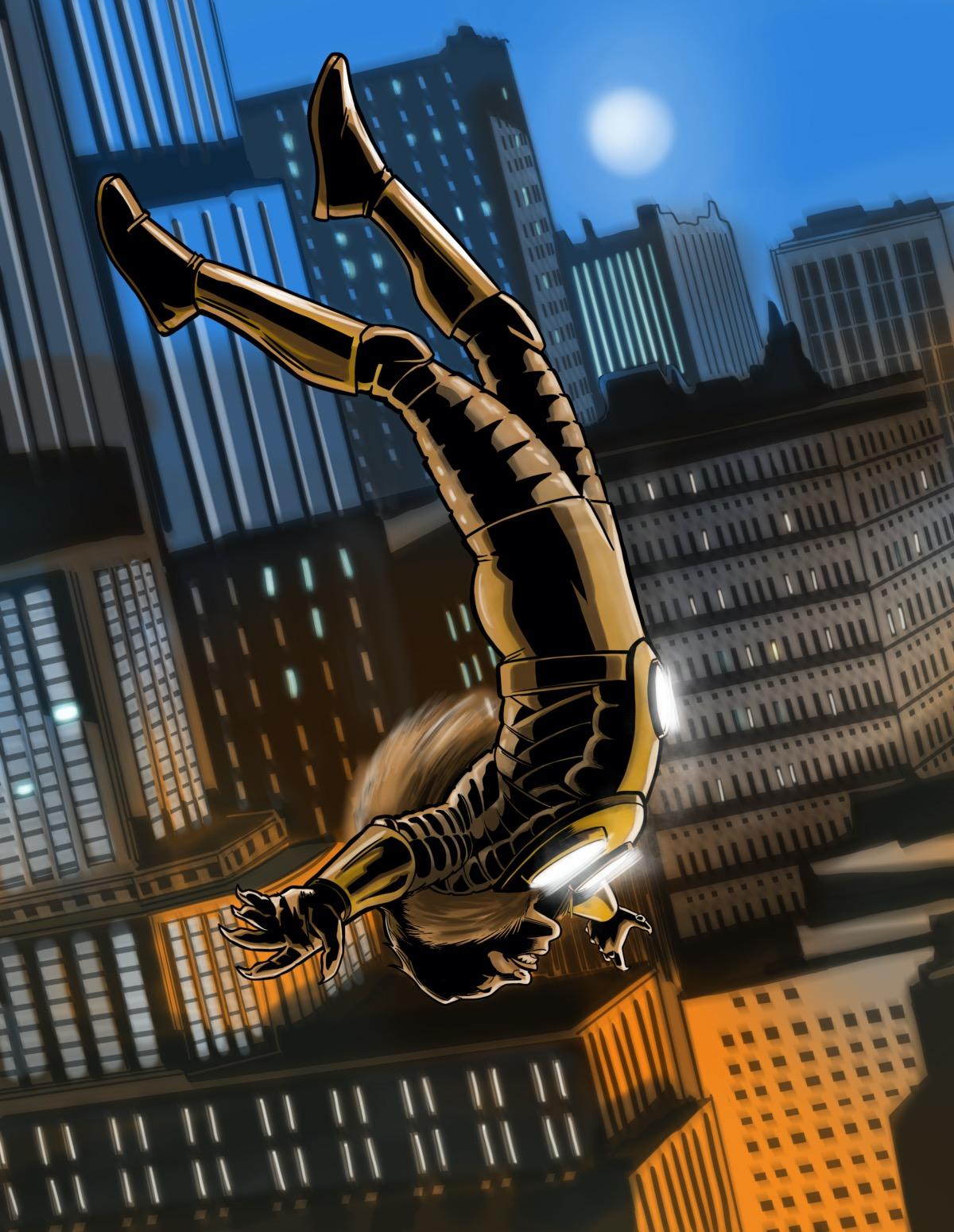
These in-person collaborations take time and a high degree of coordination. Not to mention a certain degree of commitment from participating youth who are deluged with other activities and interests competing for their attention daily, as well as competing interests for us as project administrators and artists in the form of our day jobs, family commitments and adulting in general.
All of this called to question the long-term viability of a project like this. Moreover, even if we proved successful in executing this in-person classroom model in the form of additional afterschool collaborations and comic issues, how could we realistically scale this model up even further considering all the complications described above?
It is with that premise that we are now introducing to you the new Made Collaborative Virtual Studio platform! In response to some of the challenges described above, we created this new virtual platform over the last year with the help of long-time collaborative partner, Firebelly Design and new


Of course, just as with everything on this project, this has been created from the ground up and thus we will most certainly be learning once again as we go forward. But our hope is that these digital templates and tools will not only provide a fun virtual experience for participating youth, but for anyone else that may be interested in collaborating with us.
And it’s in that context, that we invite you to learn more by turning to the next page/chapter. And hopefully together, we can further develop this project’s own modest Hero’s Journey, starting with the next collaboration of Issue 3.

- Chapter 8Introducing The Virtual Studio!
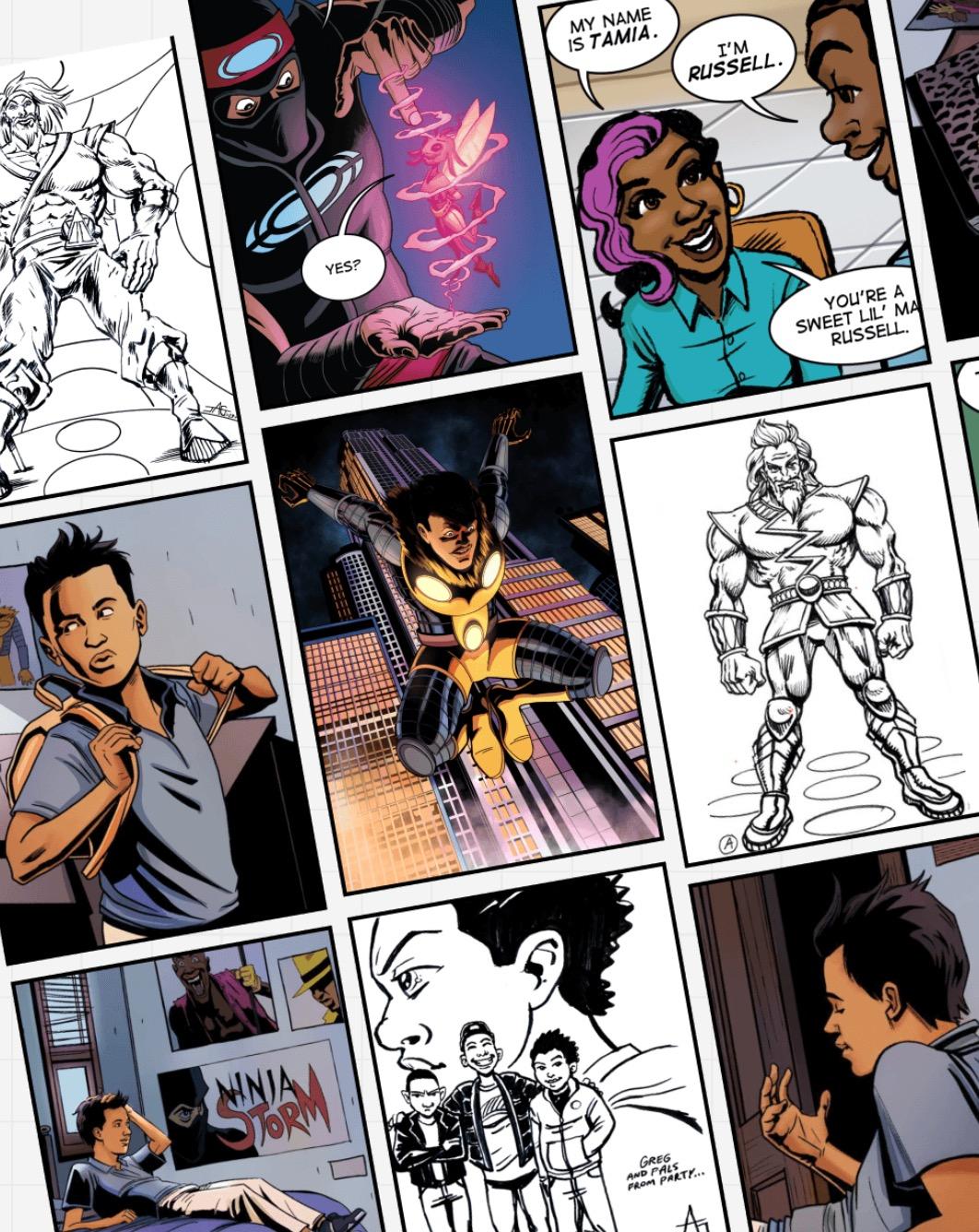
The Made Collaborative Virtual Studio!

AN OVERVIEW OF THIS VIRTUAL STUDIO PLATFORM
Welcome to the Made Collaborative Studio, a virtual collaborative platform we have created by combining established storytelling concepts like Carl Jung’s Character Archetypes and Joseph Campbell’s Hero’s Journey with common third-party digital applications like Google Slides, Google Forms and Wordpress. The goal of this virtual studio platform is to provide unique collaborative opportunities that are directly accessible by youth, any interested educational programs, and people like you at no cost.
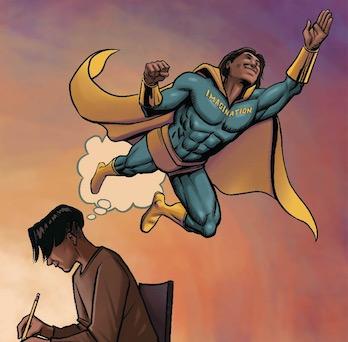
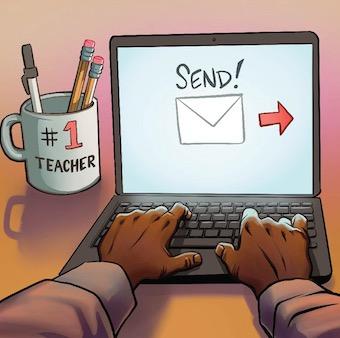
At the cores of this new collaborative model is the sharing of information. To truly prepare for any task properly, information can be power. At school, you need information to prepare for a quiz. At work, you may need information to help develop a strategic plan. Even in sports, information can be critical to success. In basketball, for example, it helps to know whether your opponent likes to dribble to their left or their right so that you can better anticipate when you are defending him or her.
It All Starts With Our Virtual Studio Cards
Perhaps even more simply point, context matters for any meaningful collaboration. With that in mind, we have developed a basic “Studio Card” system that is designed to help organize contextual project information so that you can more strategically think of ideas for your own creative collaborations, whether on the Back of the Yards, or your own creative projects.
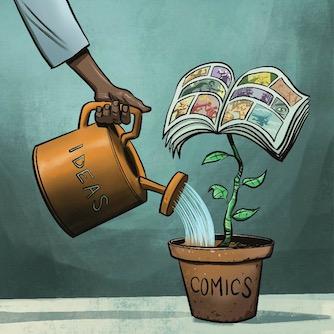
We have created this basic Studio Card framework as a way of organizing source subject matter and concepts that serve as a foundation for this ongoing comic collaboration. And more to the point, all these topics are the foundation from which we have built this initial comic series, the Back of the Yards.

Examples of that subject range from established storytelling concepts and tools like Carl Jung’s Character Archetypes and Joseph Campbell’s Hero’s Journey, which we used as a framework as we organized some of the initial youth ideas into one common storyline narrative; to some of the initial fictional characters that we have created for the Back of the Yards comic series.
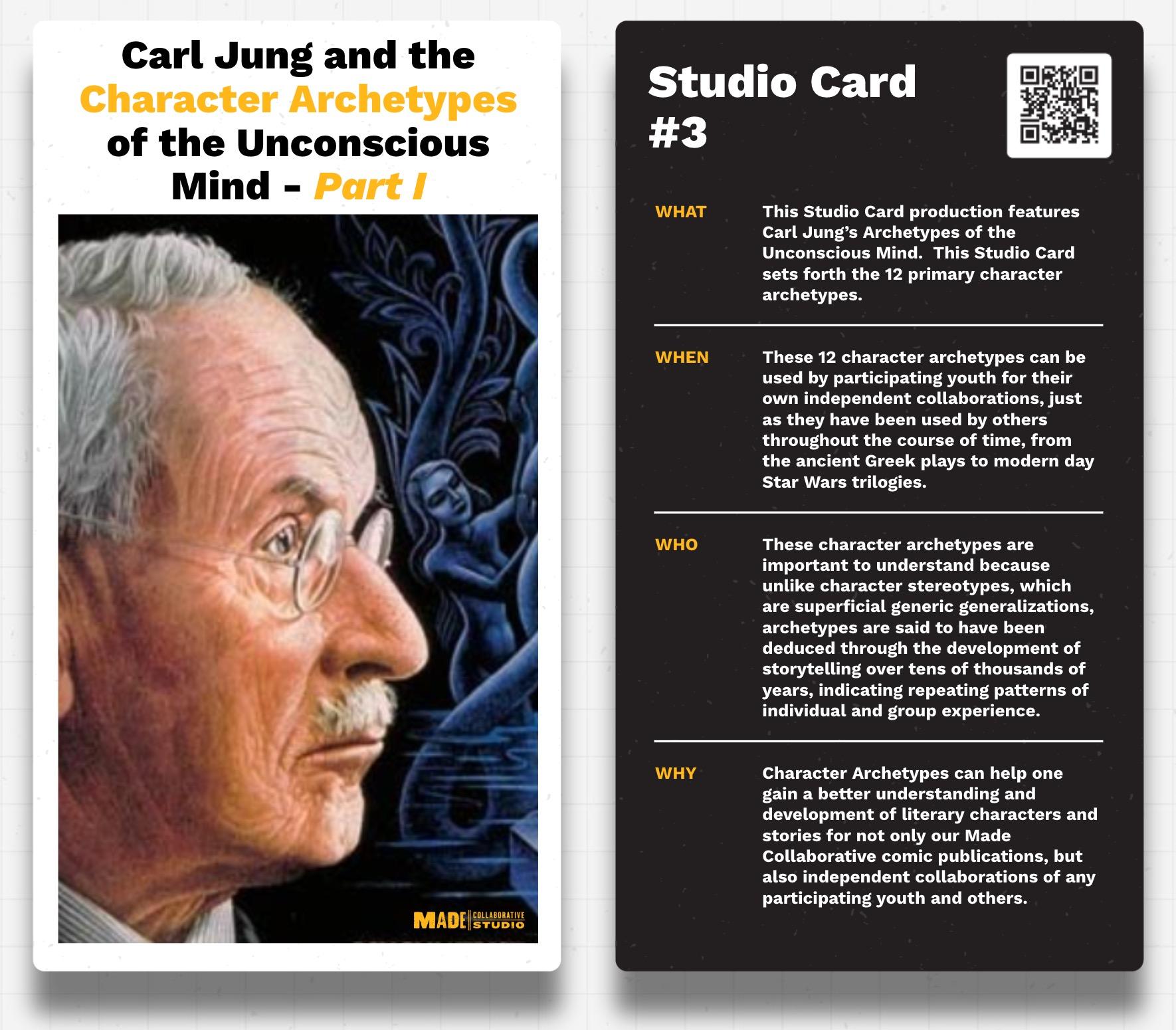
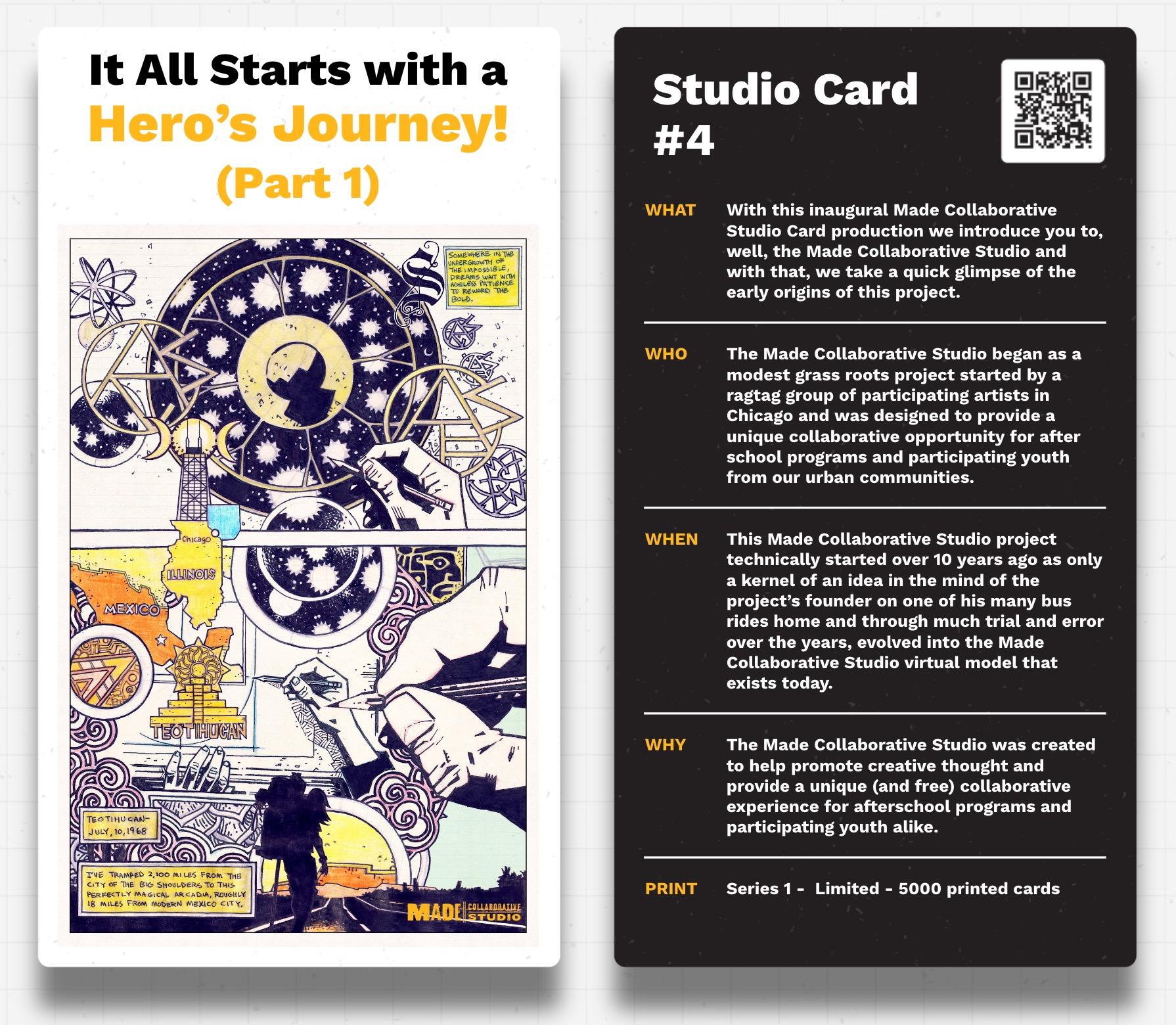

It is with these Studio Cards that will broadly provide foundational context information regarding some place, character (fictional or real), event, setting, or concept that may be helpful to other for our comic collaborations, or their own independent creative collaborations.

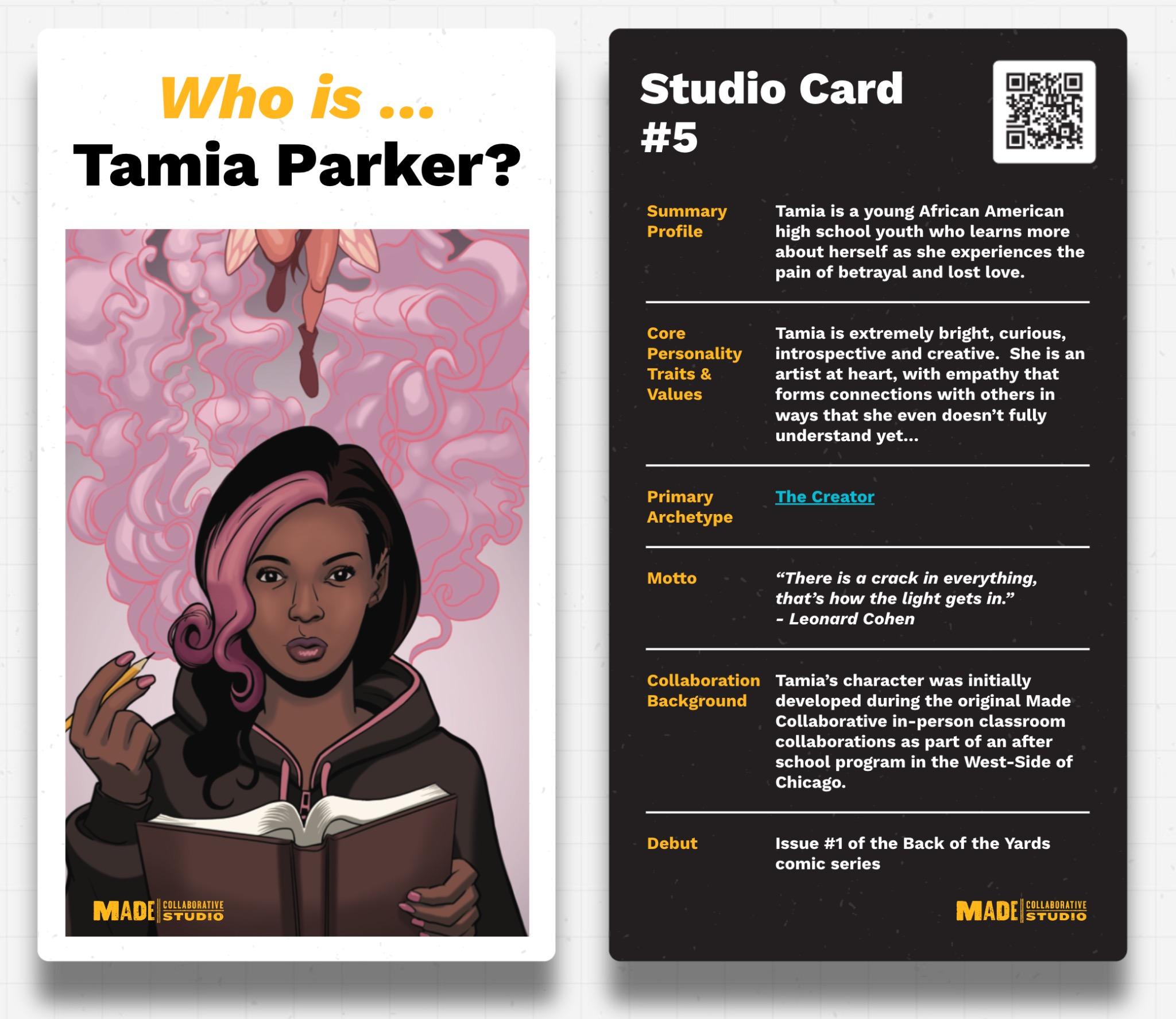
And it is also within these Studio Cards, immersed within this subject matter information, that we have incorporated opportunities for you to collaborate with us.
Which brings us to the digital tools that we have developed for this virtual platform.


The Website
At the core of this virtual studio platform is our project website, https://madecollaborative.com It is here that you will find access to most project content and access to other related digital tools collaborative opportunities through our virtual Studio Cards.
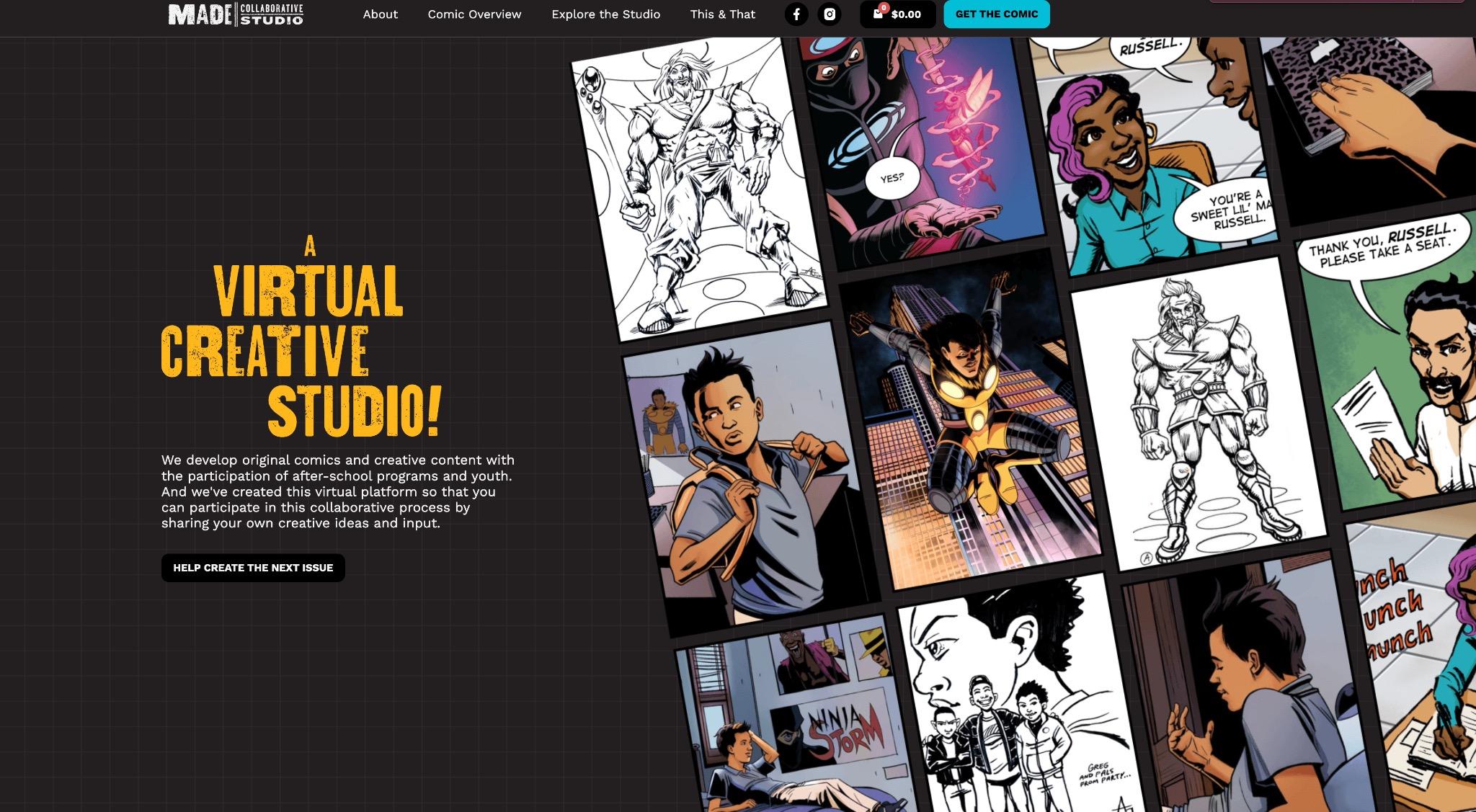
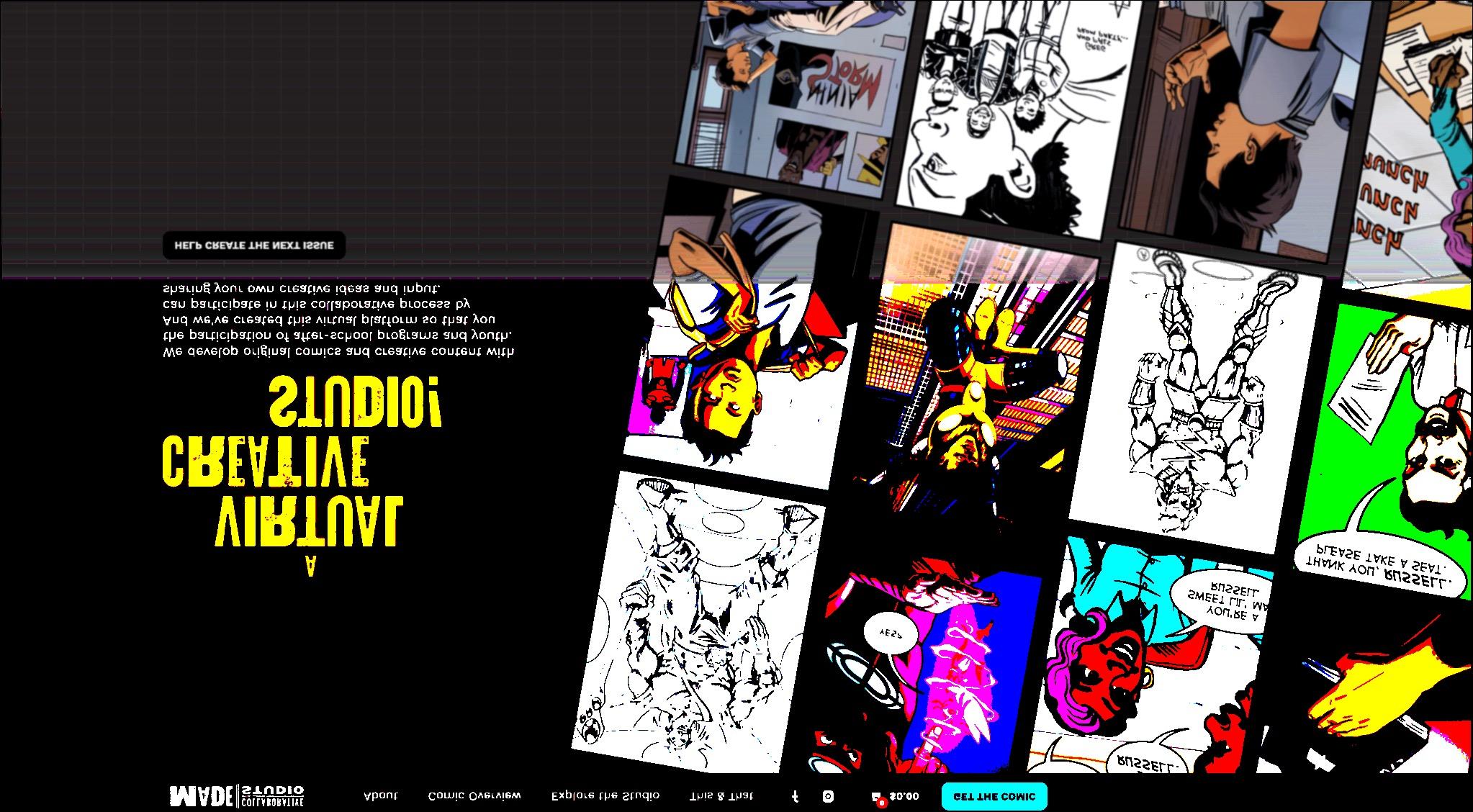
It is within our website that you will be able to access the Studio Cards in a variety of ways. And in that regard, this entire virtual platform can probably best be summarized by one single phrase…
“Pick a Card, Any Card!”

So, for example, if you want access to all our active Studio Cards at any given time, you can click to visit our “Explore the Studio” page where you will find a grid of all active Studio Cards.

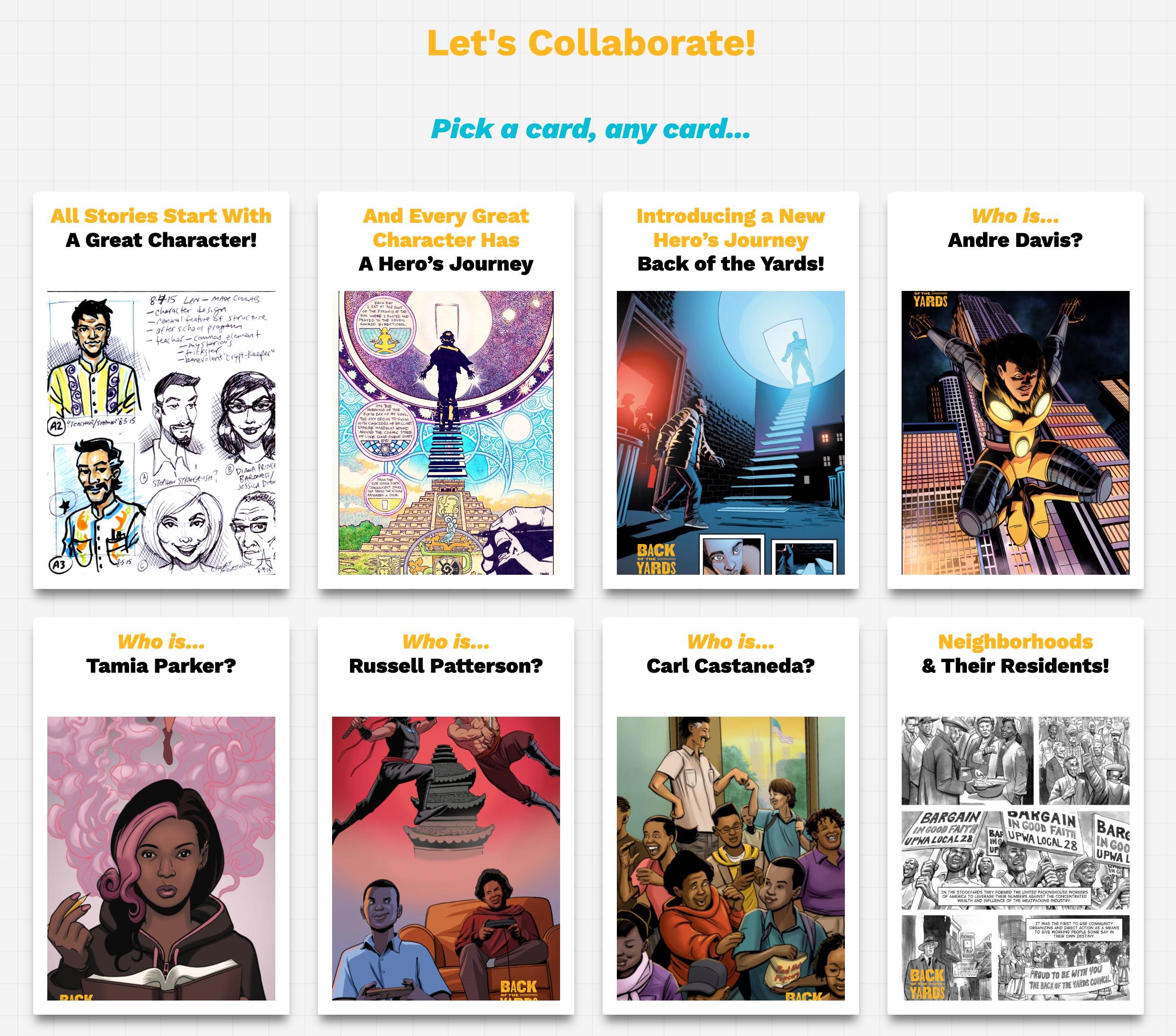

You can also access some Studio Cards through the website’s main page (slide 3) and within other Studio Card pages.

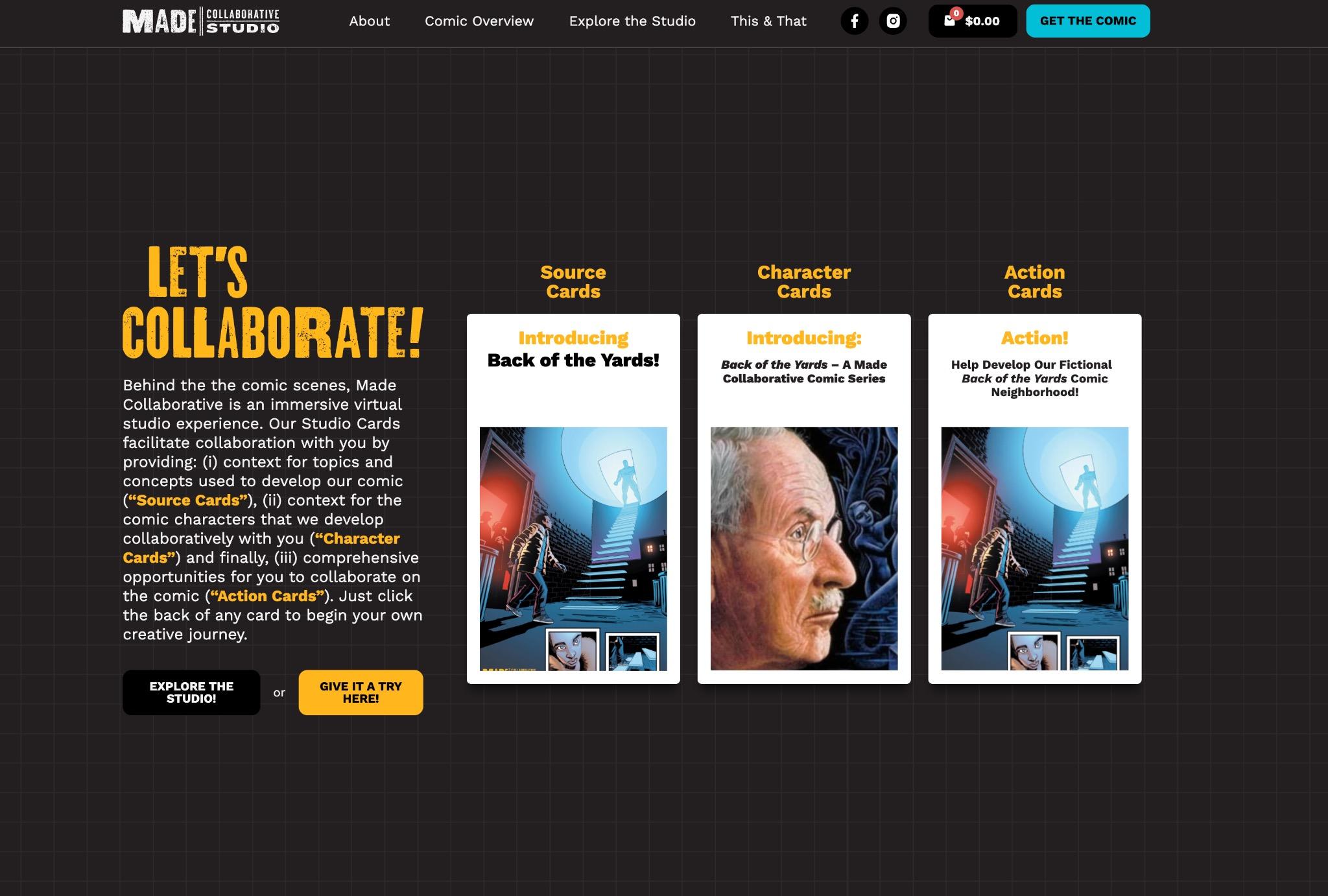
And regardless of where you access the cards, they all operate the same way functionally.
Accessing Your Card’s Landing Page
Using Source Card #3 (Intro the Back of the Yards Comic Series!) as an example, you should first know that each card has a front and back side. The front is simply an image and title for the card, and the back side provides a summary of the subject matter covered by the dedicated landing page on the website for that card.


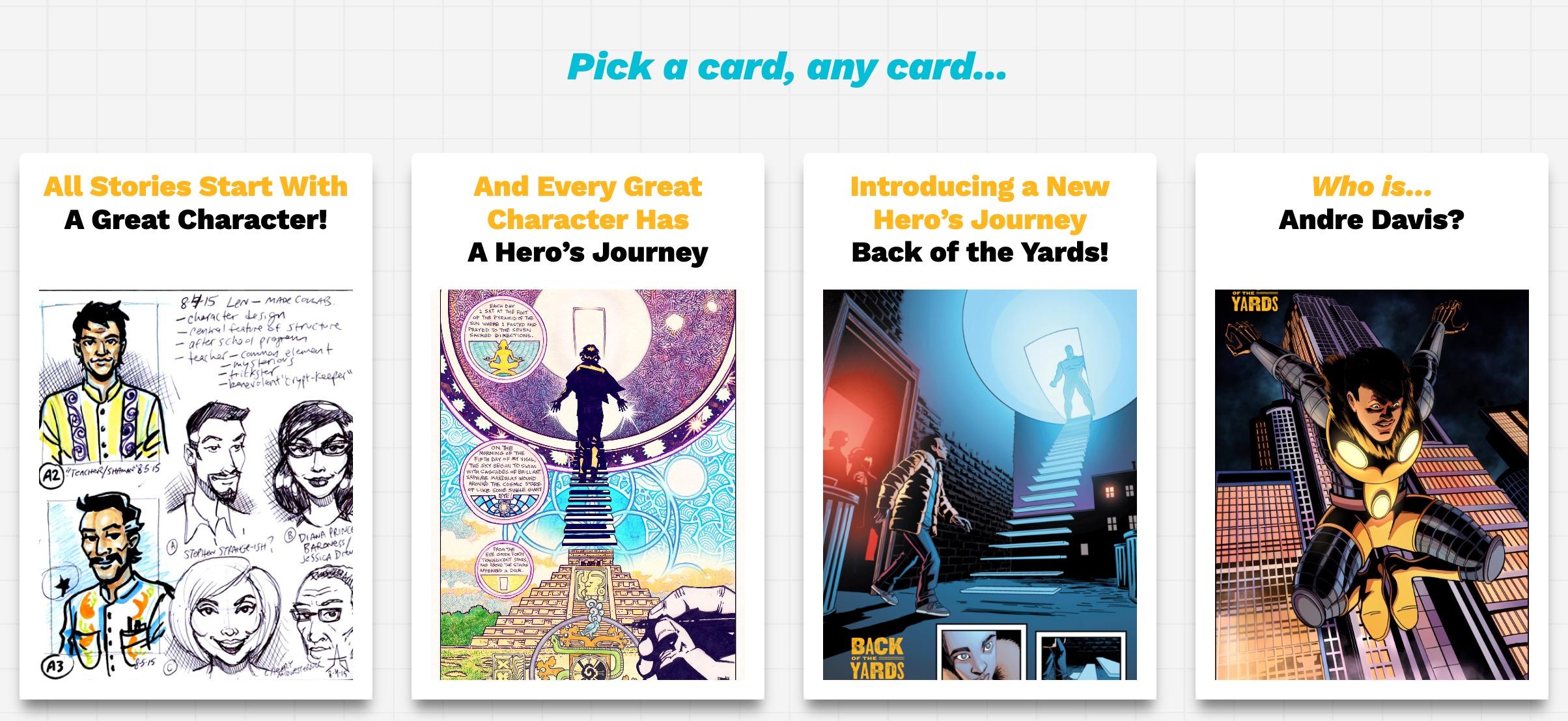

And to access that website landing page, all you must do is hover your cursor over the front side of the card on the website (or finger if you are accessing via a mobile device), which will then flip the card to the back side, and from there all you have to do is click “Read More” on the back of the card to access the full card’s website landing page.

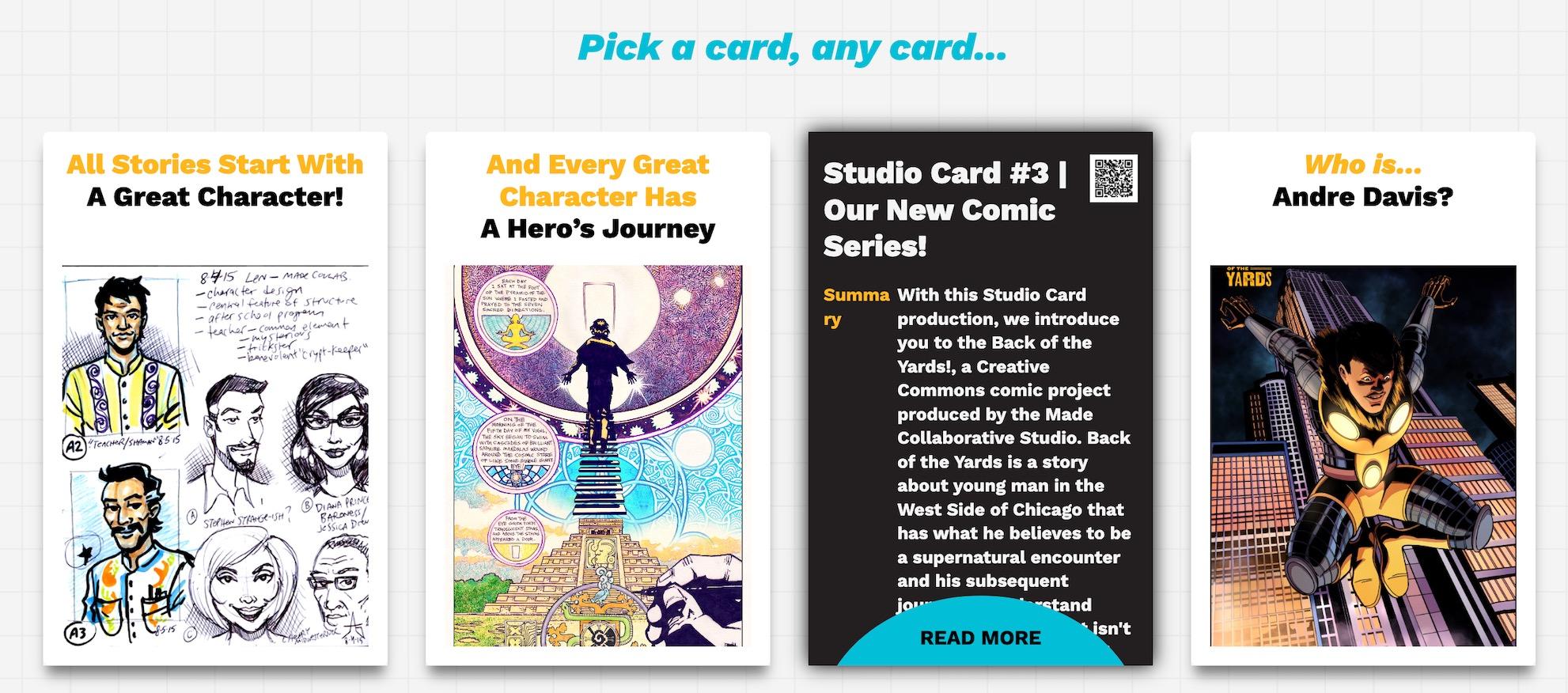

The Studio Card Landing Page
What you will see on each landing page (again, regardless of card type) is front and back summary of the card, along with a “Let’s Collaborate” jump button (which we will cover later), a Google Slide presentation and a Sidebar. We will cover each of these in the next few pages.
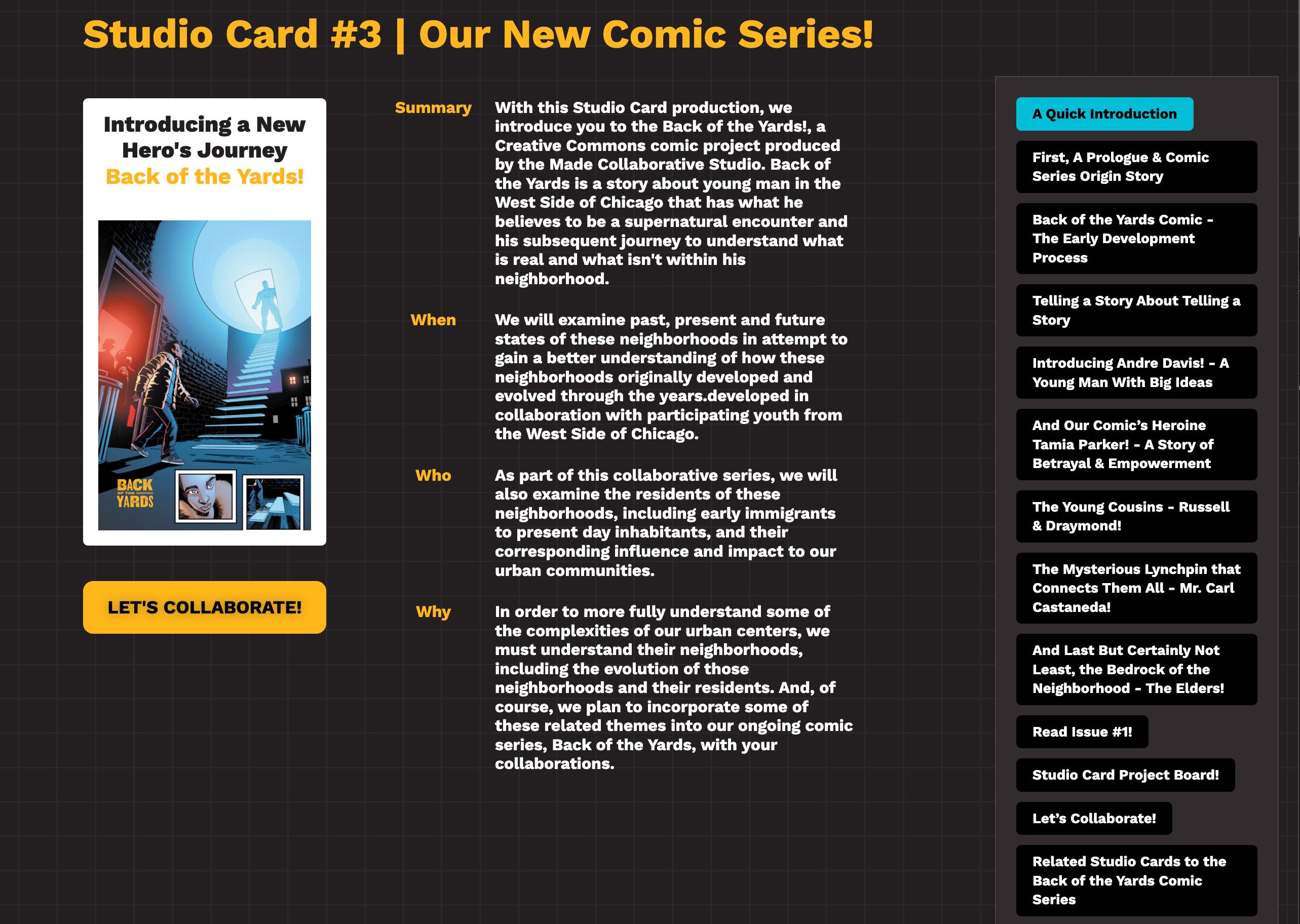

The Sidebar
On each Studio Card landing you will generally find content relating to the Studio Card’s topic and/or themes, including short blogs, videos, illustrations and other media. And you can navigate this content with the Sidebar on the right side of each page, jumping (by clicking your curser) to any particular section may interest you.
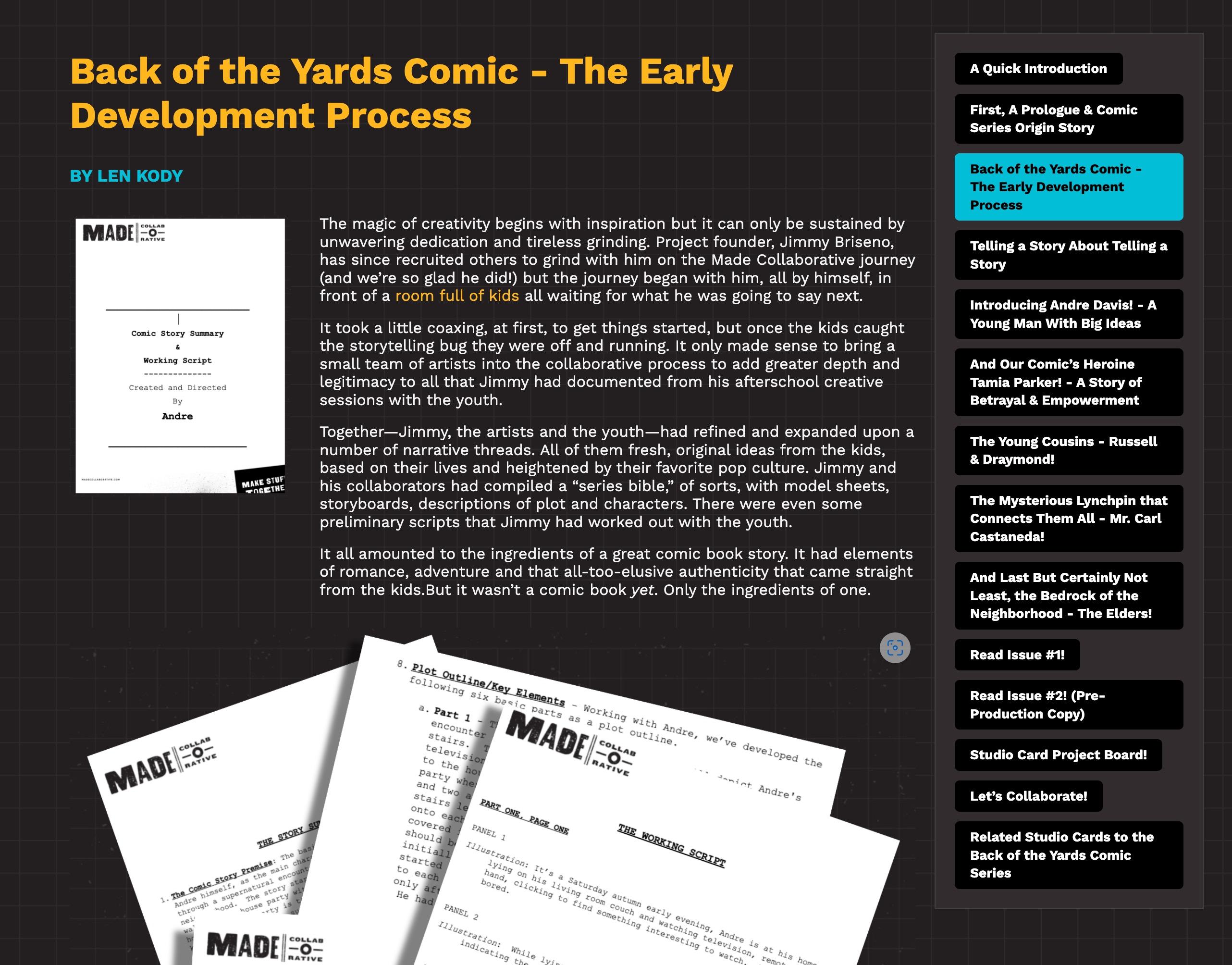


Google Slide Presentations, Issuu Flipbooks, Videos & Other Media Integrated
As mentioned, we will be using a variety of third-party applications to present this Studio Card content with you, and with, to facilitate collaborations. These applications include Google Slides, Google Forms, Youtube videos and Issuu Flipbooks. All these applications have been integrated into our Wordpress website, providing what we hope to be an immersive learning and collaborative experience.
Google Slide Presentations
We will often use Google Slide presentations for short overviews of a topic such as an overview introduction to a Studio Card. Navigating these Google Slides is easy. Just click on the arrows on the lower left side of any Google Slide presentation to turn the slides, and if you prefer to view a presentation with a full screen, you can just click on the three vertical dots and select the “enter full screen” option.
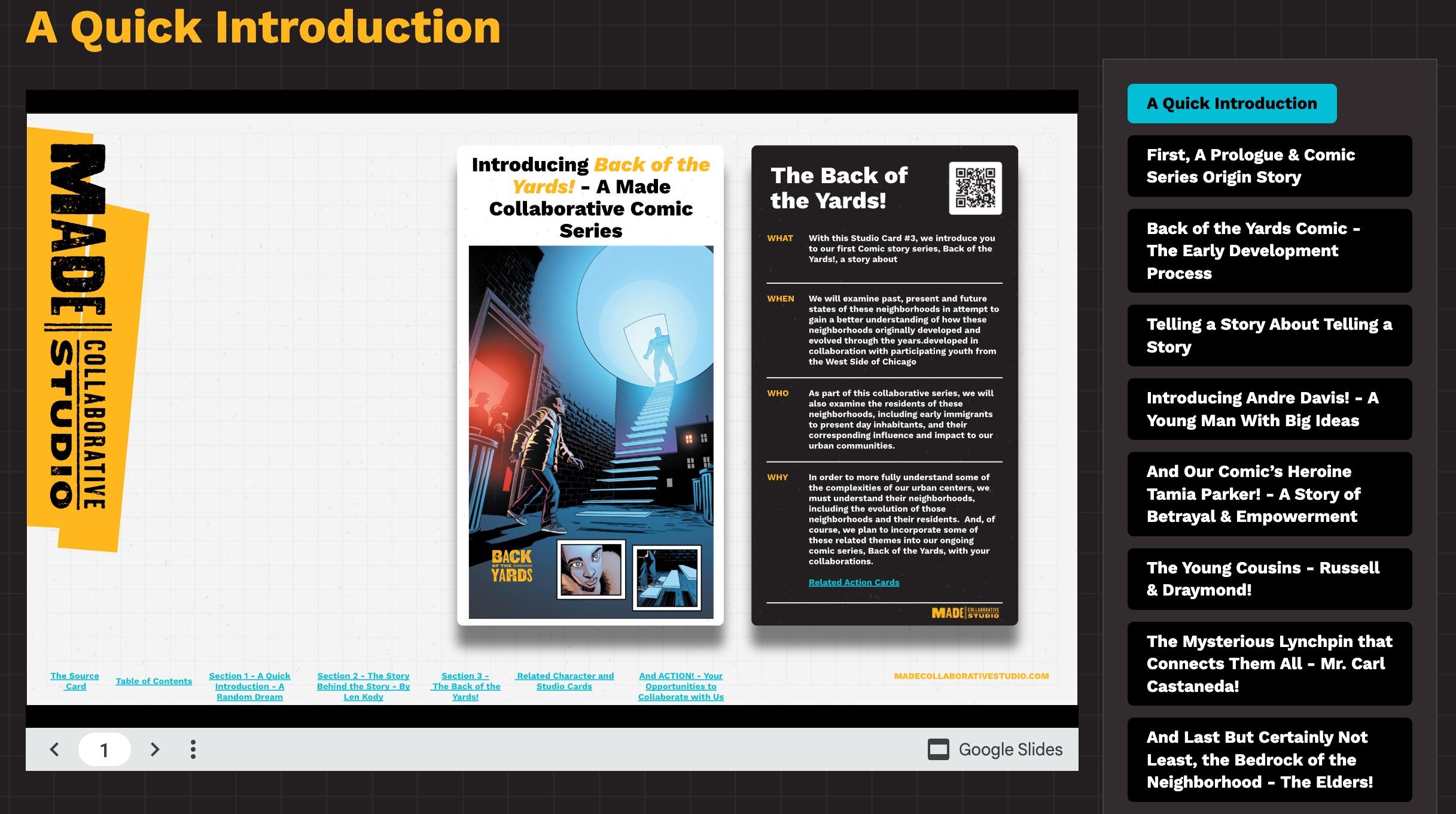

Issuu Flipbooks!
For more in-depth deep dives into a topic or story (like our comics), we will use the third-party Issue flipbook application. Navigating these Issuu flipbooks is just as easy as the Google Slide presentations. Again, it’s just a matter of clicking on the arrows to turn the pages (within the body of the flipbook itself), and if you’d like to access the flipbook in full screen, just click on the expand button on the lower right-hand side of the flipbook.
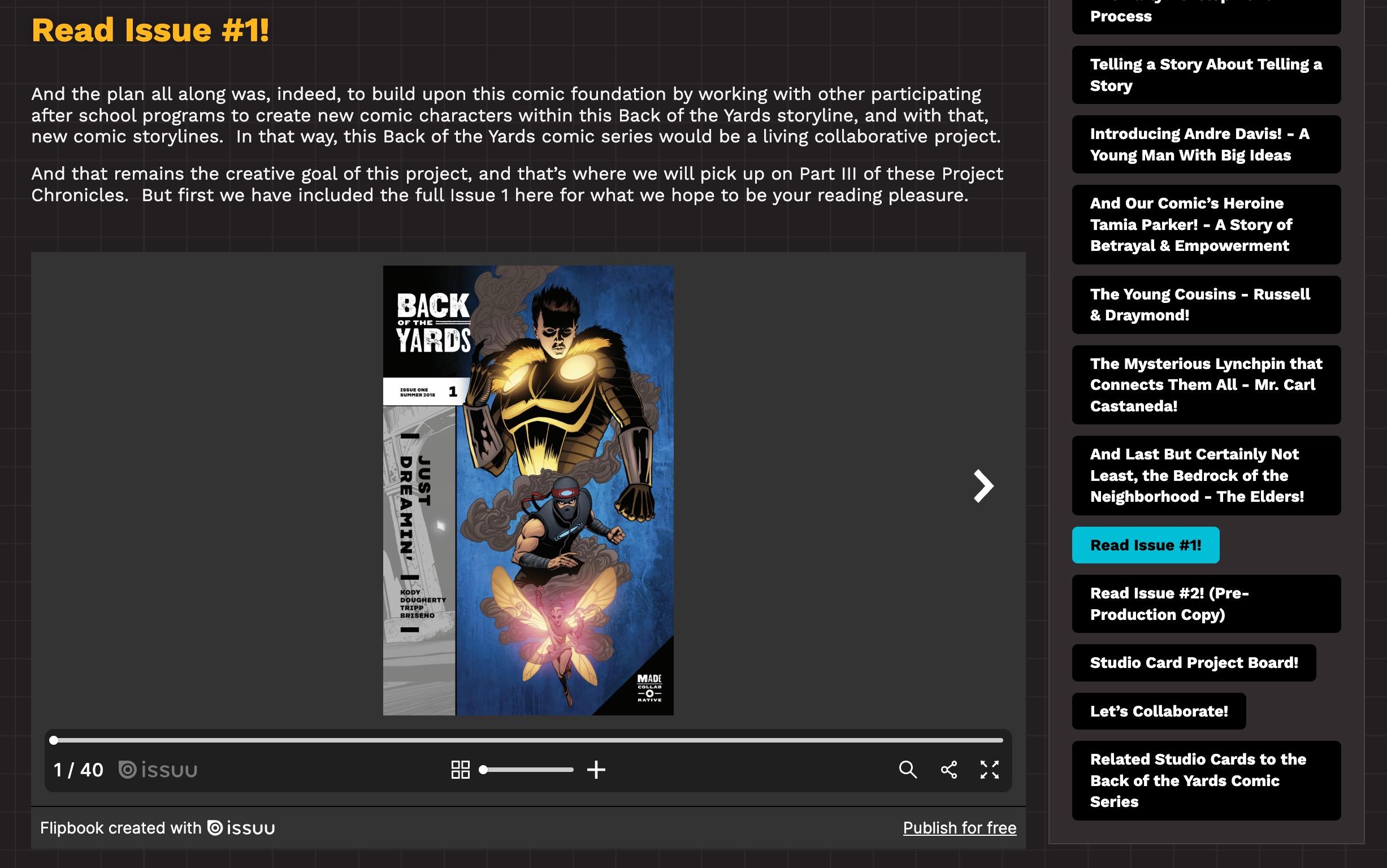
Videos!

And, of course, we have videos! You will have the opportunity to access videos throughout our Virtual Studio platform. These videos will relate to any given Studio Card topic and may be updated regularly in that regard. And accessing these videos could not be easier. Just click the play icon in the middle and voila, bring out the popcorn!
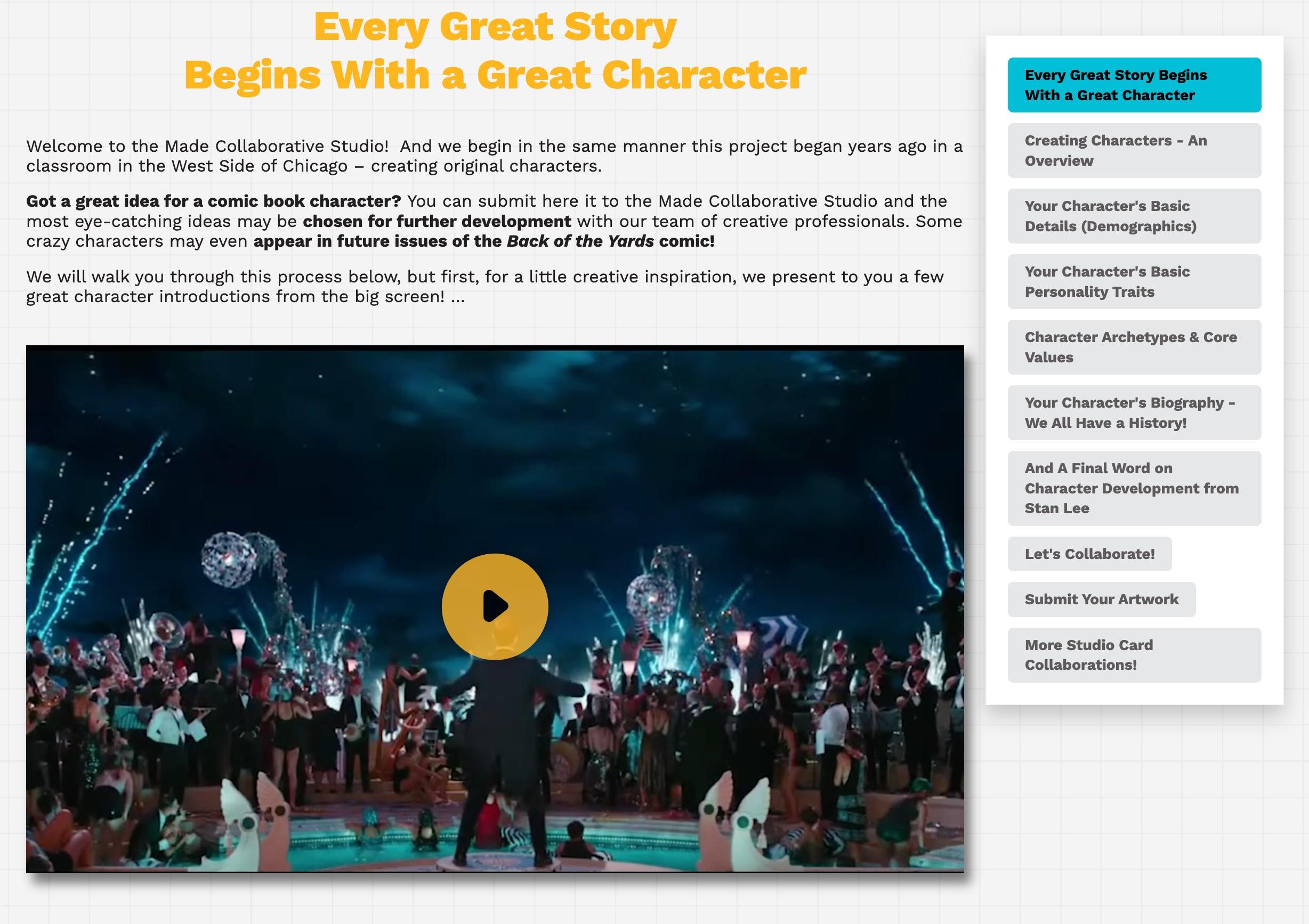
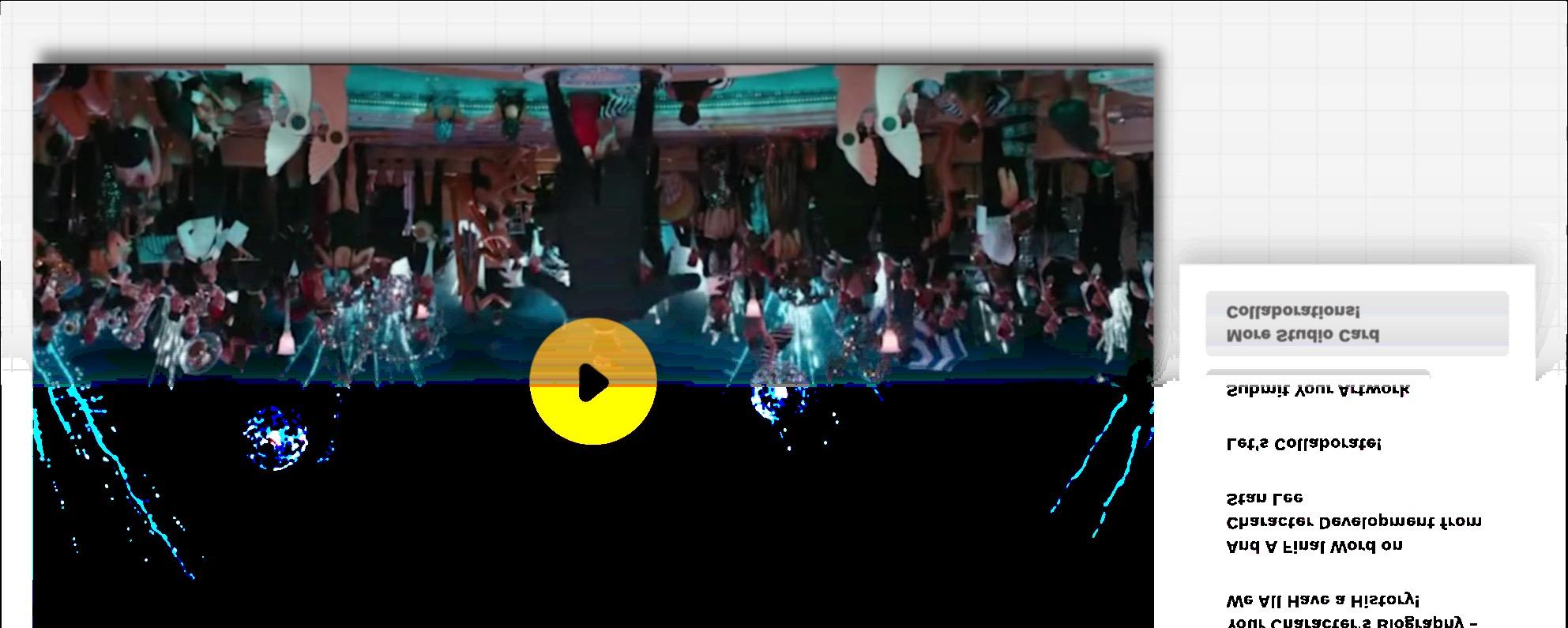

Let’s Collaborate!
And last but certainly not least, we have integrated the Google Forms application to help us facilitate your collaborations. You will find these opportunities tagged with a little blue “Let’s Collaborate” sticker. And if you’d like to collaborate with us on any given featured collaboration, all you must do is quite literally “click to collaborate” and from there, you will see a Google Form unfold.
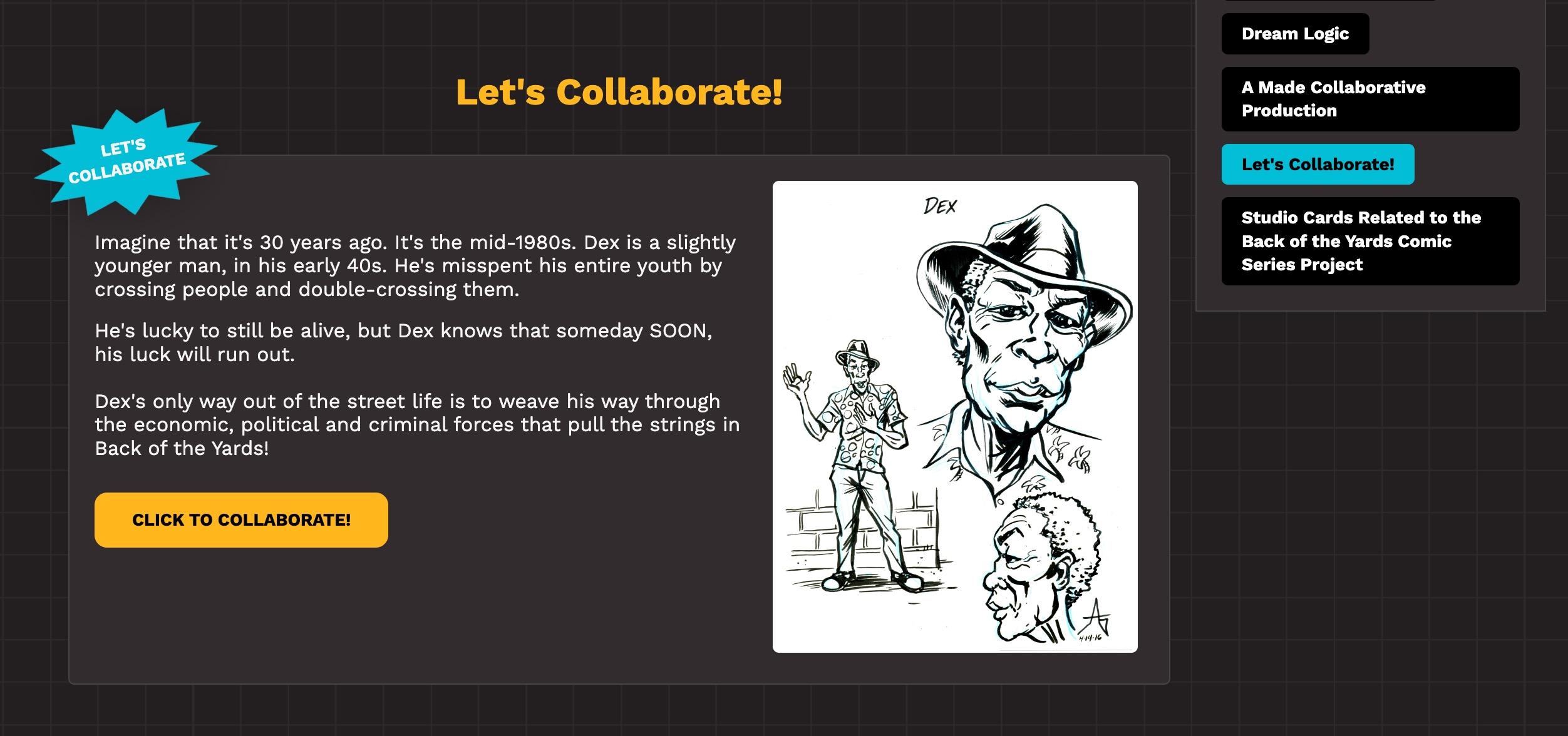
Once you have accessed the Google Form, you can just scroll through that Form to review our collaborative prompts. And often, we will also provide a corresponding PDF worksheet that you can access via a link provided within the Google Form, which you can use to jot down notes as you consider our collaborative prompts.
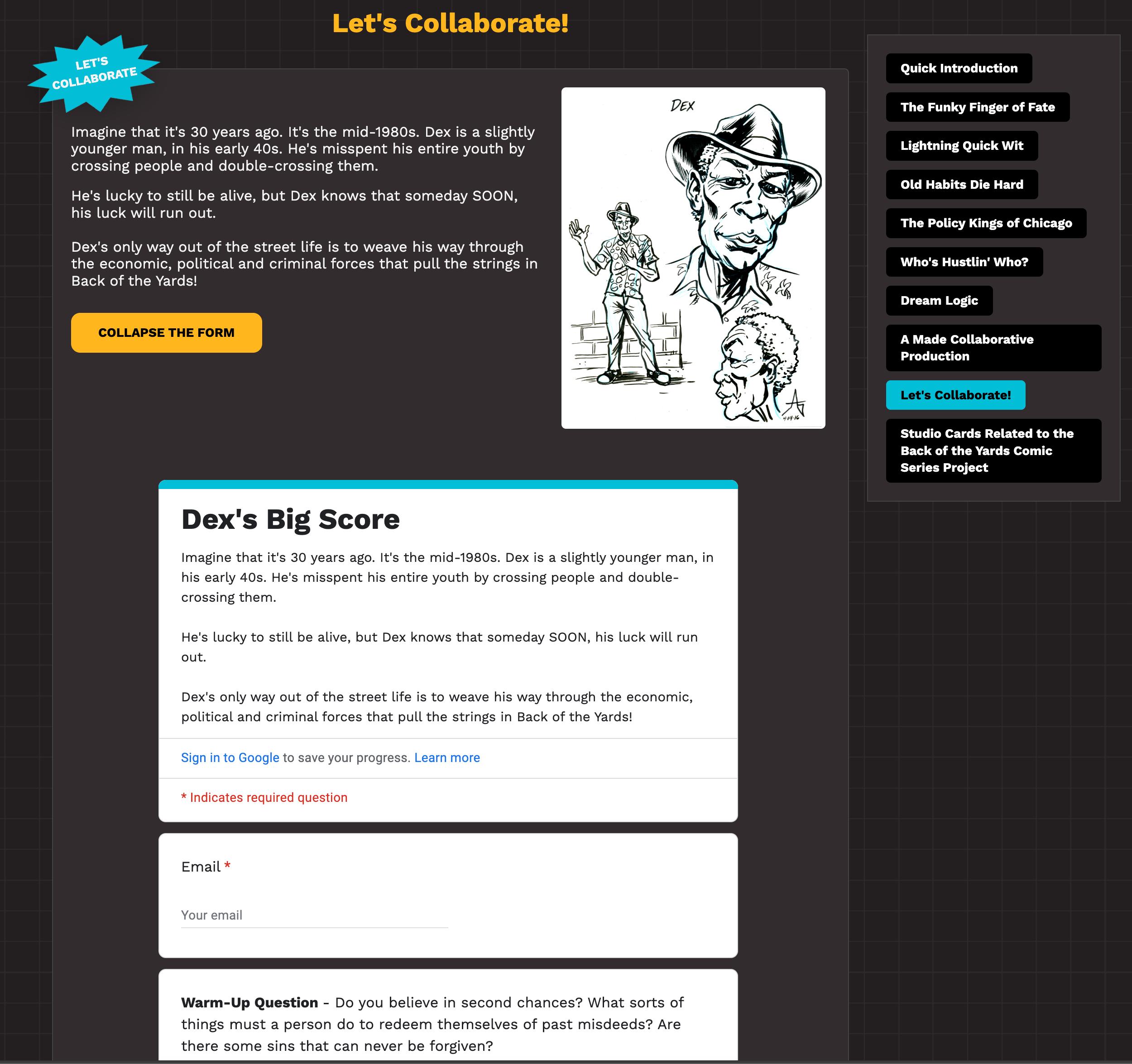
And when you are then ready to make your submission to us, you can then input your collaborative notes to us within the form and press “Submit!” And from there, we will review all submission and highlight some on our “This & That” blog for further collaboration. And in some cases, your input may be incorporated into our Back of the Yards comic series!

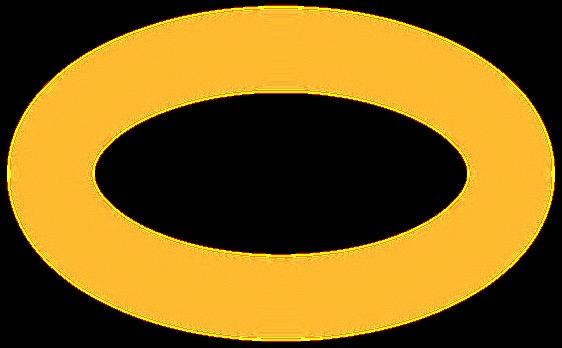
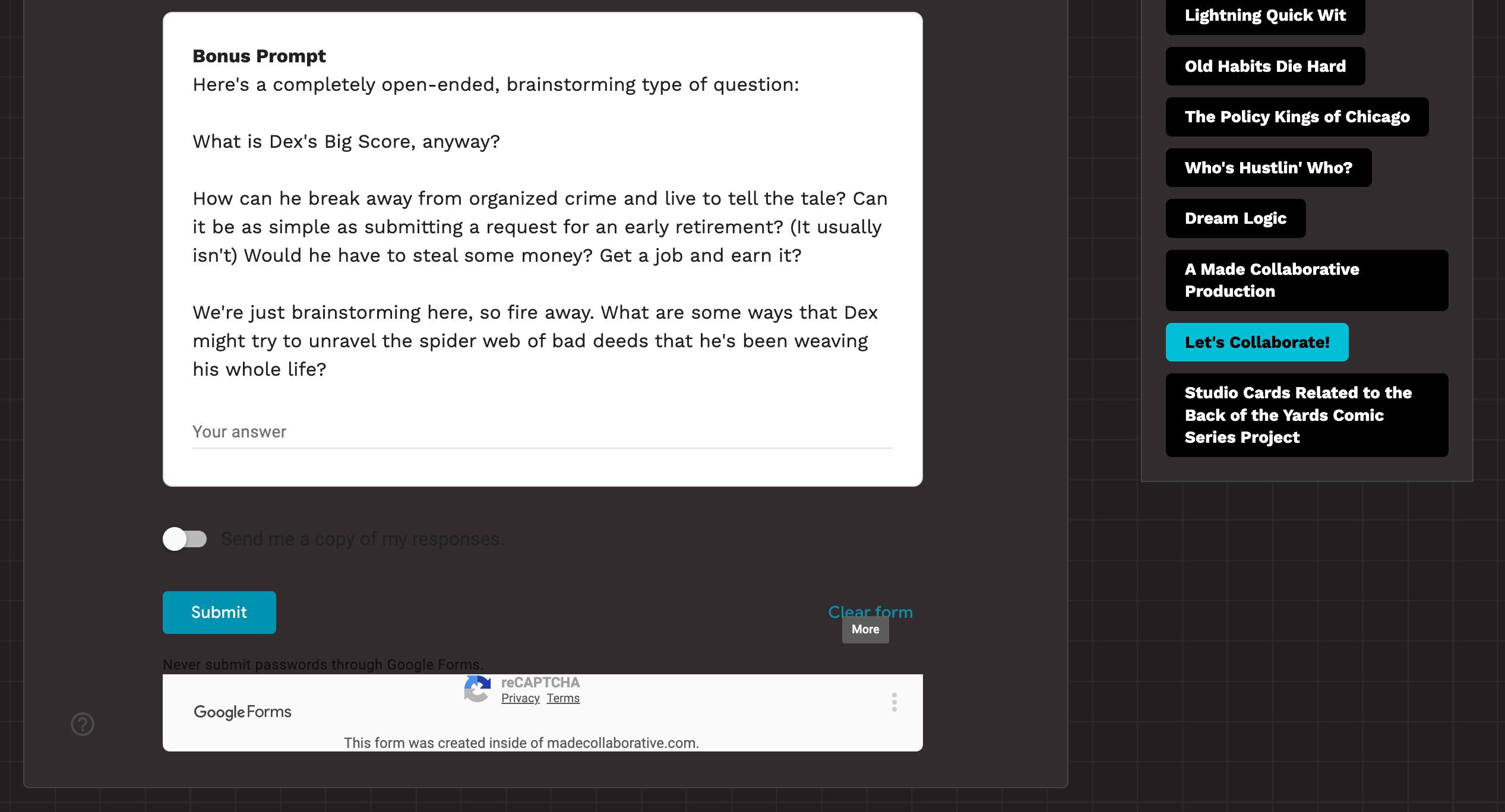

And That’s the Virtual Studio Platform in a Nutshell!
And that is indeed the Virtual Studio framework in a nutshell. In short, we have created these virtual Studio Cards which are essentially portals into collaborative topics and related collaborative opportunities. And we have integrated various digital third-party applications to help create what we hope you find to be an immersive and fun collaborative experience.
So, with that, if you are ready to give a collaborative try, just remember this simple phrase above all…
“Pick a Card, Any Card!”


Developing Issue 3 And Your Featured Collaborations
Having developed this basic virtual studio framework, our goal is to now launch a new set of corresponding collaborations with after school program youth and others, including whoever may be reading this now. And these virtual collaborations will be anchored around the development of Issue 3.
Furthermore, to help frame this next round of virtual collaborations, we have developed a set of “Featured Collaborations” which we have identified as part of an initial working manuscript for Issue 3. We will present you with these featured collaborations in Part IV of our initial Project Chronicles summary, along with the corresponding Studio Cards.
Of course, all of this is designed to facilitate actual content development, and in that regard, we will also be hosting virtual Zoom workshop sessions between participating artists and invited collaborators. And we will post regular updates of these ongoing collaborations on our “This & That” blog on the website.

And ultimately, we will highlight some of these collaborations in these Project Chronicles, leading up to the full publication of Issue 3 to complete this first volume of our Project Chronicles.
That’s the plan anyway, and you can obviously follow the ongoing development of these collaborations on our website, along with taking part in those collaborations at any time!

A Quick Word on Intellectual Property & the Creative Commons
Having now provided an overview of our virtual studio framework and related digital tools, we are ready to present to you a set of Featured Collaborations relating to our next comic production, Issue 3. But before we do that, we wanted to take a quick moment to talk about intellectual property. Yes, intellectual property.
Look, we are going to try to keep this simple, but one of the things we struggled with as we were developing this new virtual framework was the whole notion of having to put some sort of copyright restrictions on the sharing of our comic, the characters and the storyline. That’s just not something we ever really thought about when developing the comic because profit and intellectual property was never the motivation –collaboration and promoting creative thought was the objective. This didn’t even start out as a comic-based project in that context, but rather, as a supplementary after school program that connected artists and youth.
But, of course, this project did evolve into a comic project and because of that, we realized we had to figure out how we wanted to handle the dreaded intellectual property piece. And that’s where the Creative
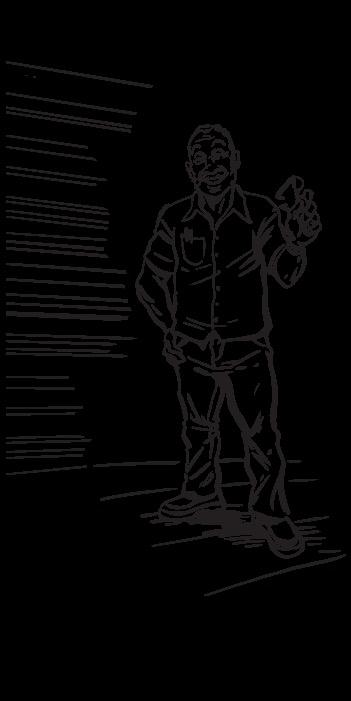
The Creative what?
What is the Creative Commons?
The Creative Commons is a non-profit organization devoted to the promotion of expanding the range of options that artists and others share their creative works. Per Wikipedia, the organization has released several copyright licenses, known as Creative Commons licenses, free of charge to allow authors of creative works to communicate which rights they reserve and which rights they want to waive for the benefit of recipients or other creators.

Under the Creative Commons framework, content owners still maintain their copyright, but Creative Commons licenses give standard releases that replace the individual negotiations for specific rights between copyright owner (licensor) and licensee, that are necessary under the “all rights reserved” framework for more traditional copyright protection. In other words, Creative Commons provides more options to share information as compared to the standard copyright system. And perhaps largely because of this additional optionality, as of 2019, there were nearly 2 billion works licensed under the various Creative Commons licenses.
The Creative Commons License for the Back of the Yards Comic
So, as we dug a little deeper into the Creative Commons licensing options, it quickly became apparent that we wanted to adopt some of the least “restrictive” options when it came to the sharing of this creative content. And one Creative Commons license model in particular that jumped out at us was the Attribution-Non-CommercialShare-Alike license (CC BY-NCSA). What that basically means is that we will provide digital copies of our Back of the Yards comics for free on the project website, and in addition to downloading or copying the comic, anyone can create new versions of the comic or characters if they make it available under the same noncommercial terms.
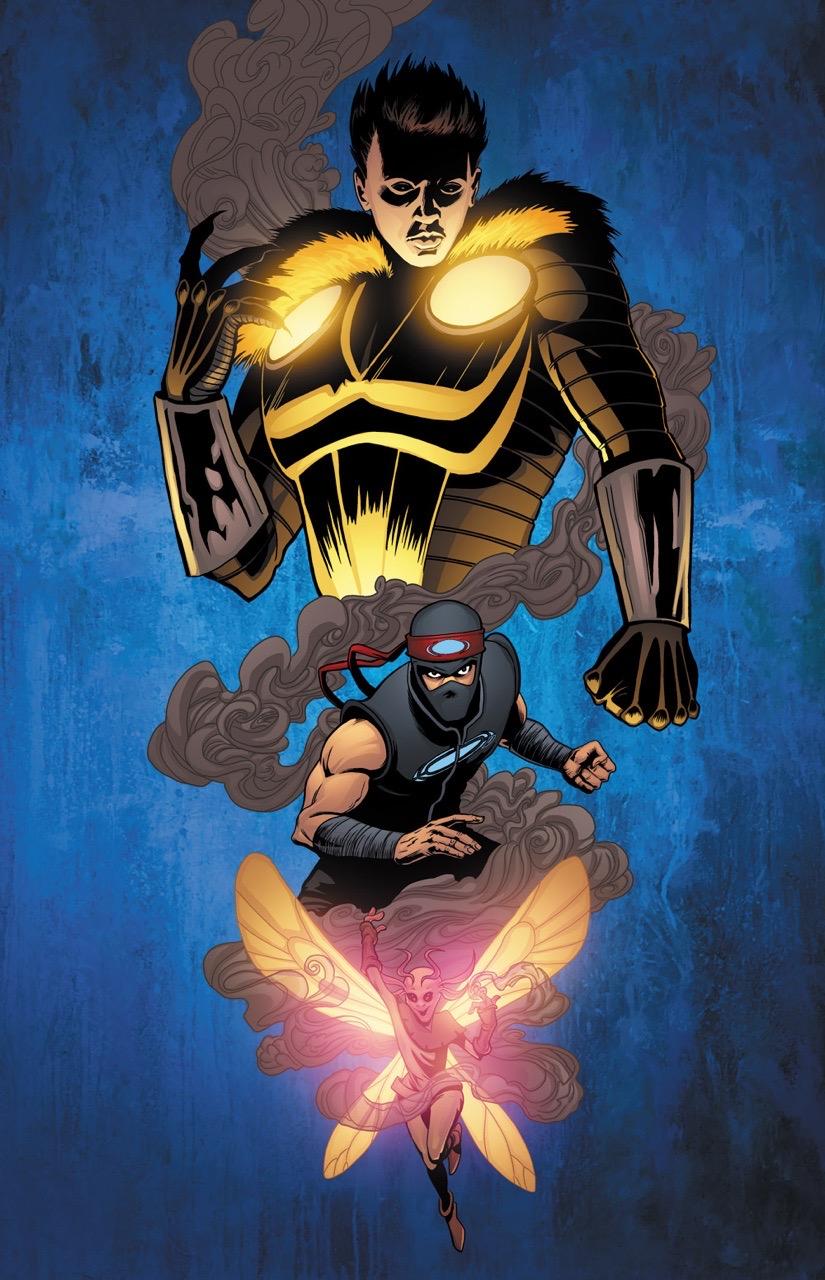

This means after-school programs, for example, can download the comics for free and use these same characters, themes and storylines to facilitate their own independent collaborative projects or workshops. And, with that, anyone can create new characters and storylines relating to these original Back of the Yards comic collaborations and characters so long as they are done so under the same CC BY-NC-SA license.
Ultimately, the goal for us was and is to make it as easy for others to access these comics, characters and related concepts in support of our central mission of promoting collaboration and creative thought. And our hope is that this Creative Commons license will help to further enable that collaboration and creative thought, along with the free access to our digital comics and related collaborative content and tools.
That’s the hope anyway, and you can learn more about this Creative Commons license by linking here.
Now, enough with the legal mumbo jumbo and on to the featured collaborations.
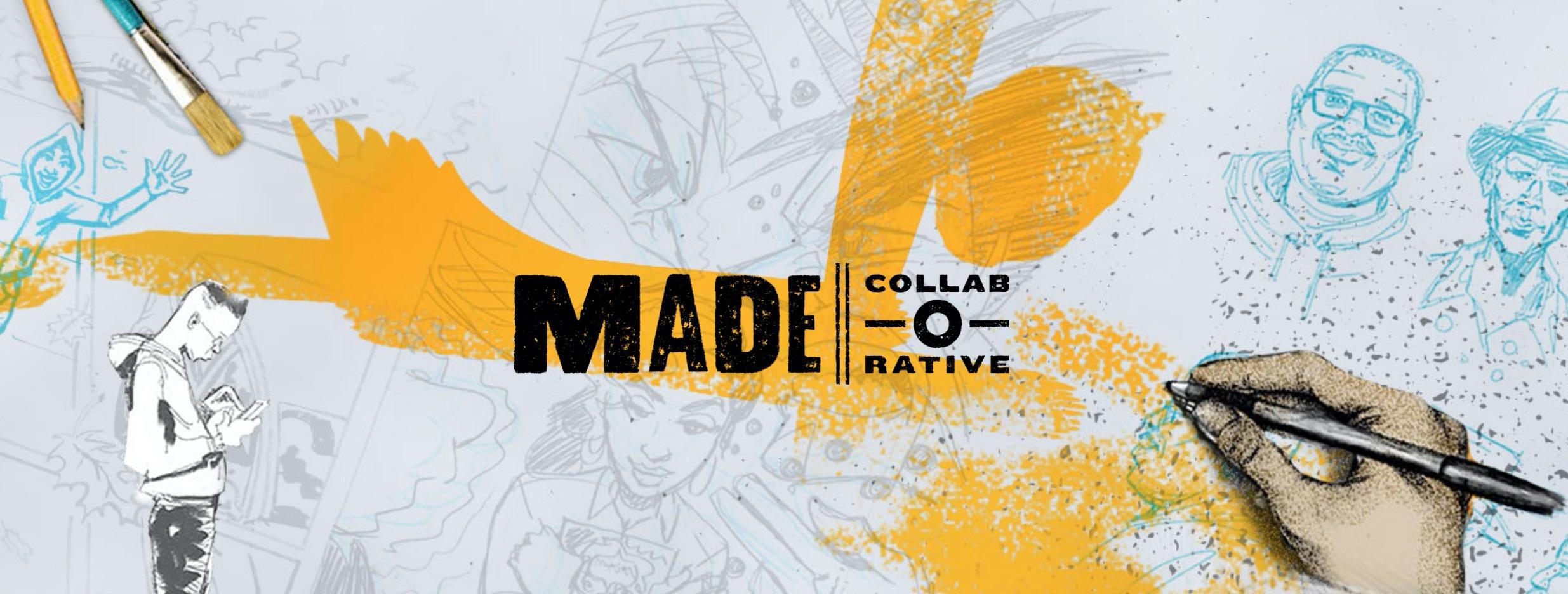


- Part IV -
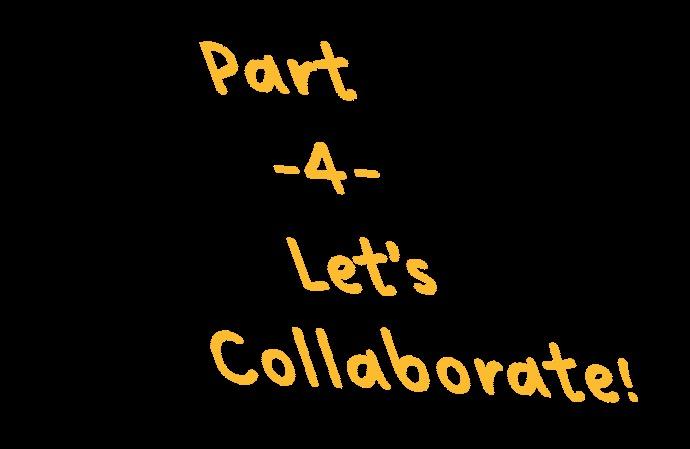
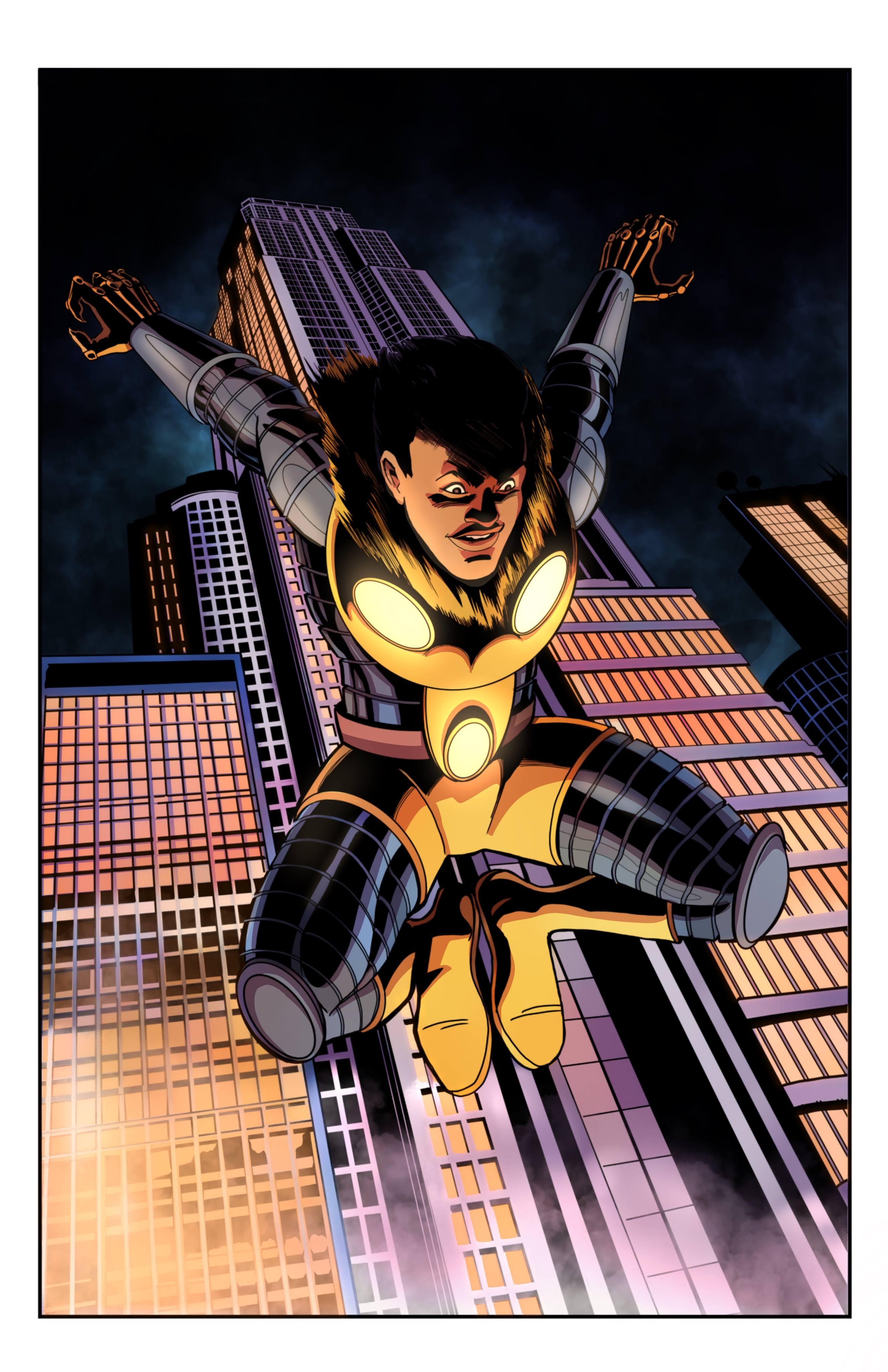



A Hero’s Journey & Your Featured Collaborations Introduction - Chapter 10 -

Leaving the Ordinary World Behind
By Len Kody

Ten years ago, I had a very strange, very frightening, very memorable dream. I had the dream during a turbulent time in my life. It was right before my mother passed away from cancer and shortly before the woman I was married to at the time (my college sweetheart with whom I had spent the previous ten years) would bow out of my life forever.
I didn’t know it then, but the entire course of my life’s journey was about to change. The unconscious mind can sometimes see things coming long before our “awake,” conscious mind is even aware. That’s why we tend to have strange dreams during important moments.
In my case, things that had been a part of my life for so long that I’d regrettably begun to take them for granted were soon going to be gone for good. People and relationships that I relied upon for support, strength and a sense of belonging were about to abruptly vanish. And a new life that I never planned on, filled with new experiences and chock-full of new challenges, was about to take shape. It was a time in my life that was charged with transformative energy, even if I didn’t know it yet. That’s when I had the following dream…
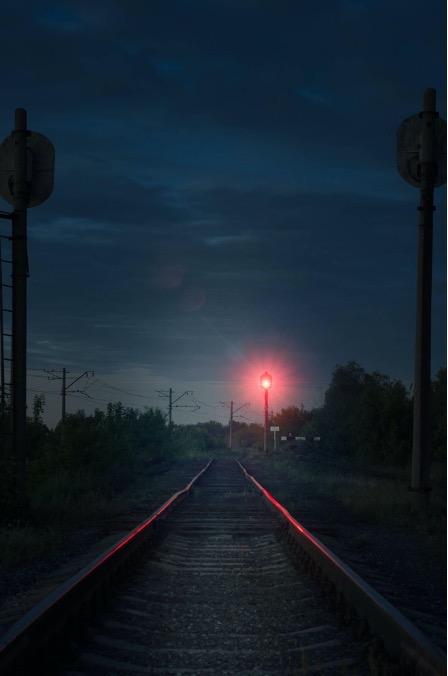
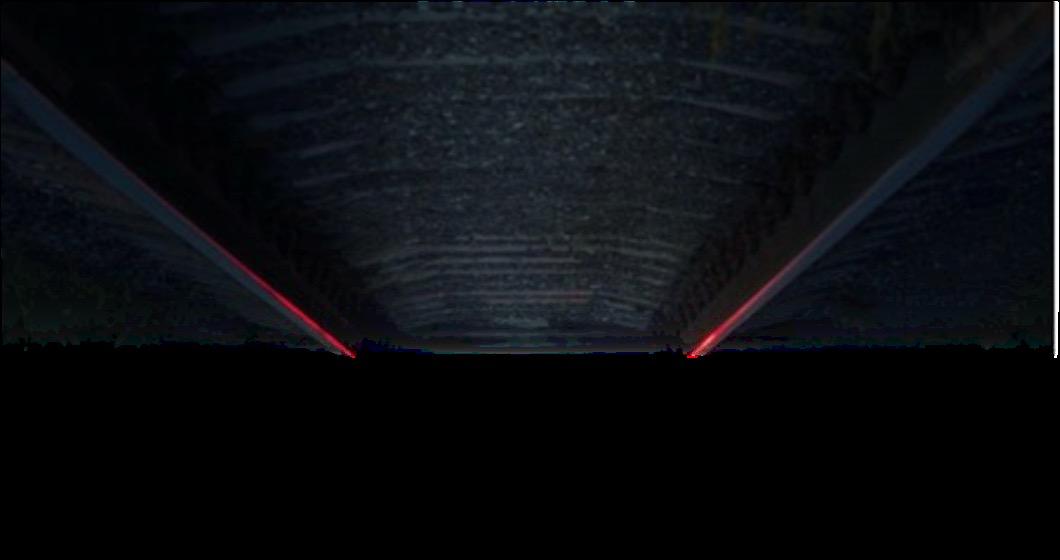

The Scene
I was outdoors. It was nighttime. I was at the scene of a horrible train accident. It was one of those large, commuter, Metra-style trains, derailed and all mangled up in a chaotic spectacle that looked to be somewhere in the Southwest suburbs, just outside Chicago, where I was living at the time.

There were small fires and wounded passengers scattered throughout the wreckage. It appeared that I may have been a passenger on this train, too. But I wasn’t injured.
So, I began to survey the scene. Maybe I could help? The first wounded passenger that I approached was on his knees with his back to me. As I got closer, I realized that the passenger was actually me.
I was standing before a twin version of myself, looking down at the back of my own head. It was then that I raised a black, semi-automatic pistol that I suddenly realized I had gripped in my hand. I pointed the muzzle at the back of my double’s head, and I pulled the trigger.

Crossing the Threshold
The Beginning of My Personal
Journey
It was an intense and confusing dream! I did what I wholeheartedly recommend to anyone else who may find themself beset by strange dreams and terrifying visions: I discussed it with my doctor. Under her guidance and supervision, along with my own sincere efforts to make sense of things, I decoded what my subconscious mind was trying to tell me.
Trains, you see, travel along a fixed and predetermined path, not unlike the seemingly inescapable track that my early adulthood appeared to be on until that point. The destruction was clearly the death and loss I was about to experience. And the dream’s shocking end? That was my decision to leave my old life, and the “old me,” behind and “cross the threshold” into something completely new and unexpected.
My subconscious was sending me a message. Since the subconscious mind doesn’t usually waste time with pleasantries, it was a violently stated message. But I got the point. The dream served as a not-too-subtle reminder that crossing the threshold into something new is almost always a very scary experience.


The finality of pulling the trigger also reminded me that when you leave the “ordinary world” behind to embark on the road to adventure, there’s no turning back. Adventures are adventures because they are dangerous and their outcomes are uncertain. If you choose to embark on the Hero’s Journey, crossing the threshold takes a certain level of sacrifice. You will have to leave your old ways of thinking and doing behind.
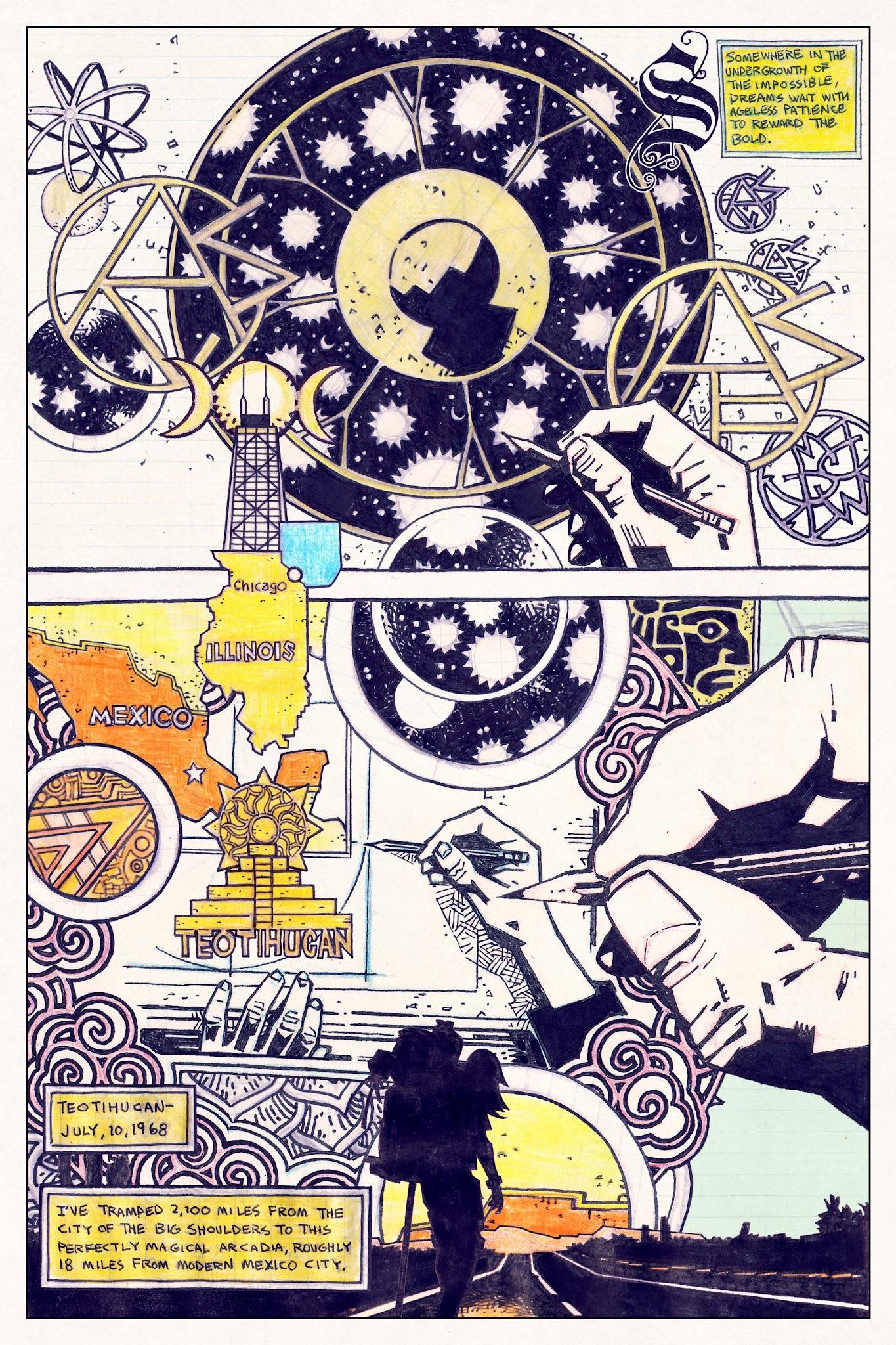
What Can Dreams and Stories Tell Us About Real Life?
Welcome to the adventure, fellow travelers. As I hope you’ll soon discover in the course of this Collaborative Series, stories and storytelling are an important part of our human existence. The natural, narrative flow of a story from beginning, to middle, to end seems to be part of our DNA. The stories we tell ourselves play a large role in how our brains make sense of the world.

Many stories throughout history and across cultures have followed the format of the “Hero’s Journey.” From Hamlet to Harry Potter, from Buddha to Spider-Man, the basic formula of the Hero’s Journey (and our intuitive, almost unconscious knowledge of it) appears to be universal across all humankind. That’s because, when you look closely, the Hero’s Journey isn’t just about how dreams and stories work. The Hero’s Journey is a roadmap for our lives, as well. That’s why stories are so important to us. It’s why some stories are so important they build nations, religions skyscrapers and cathedrals around them.
Creating Your Own Hero’s Journey!
The path of the hero is our own path. The hero’s tragedies and triumphs are really our own.
As part of this collaborative project and the featured collaborations we will develop, you will begin to learn more about the themes and motifs of the Hero’s Journey. You will apply these ideas to stories and experiences you are already familiar with to your own collaborations. And then, you will use this knowledge to create new stories that are relevant to you and your community.
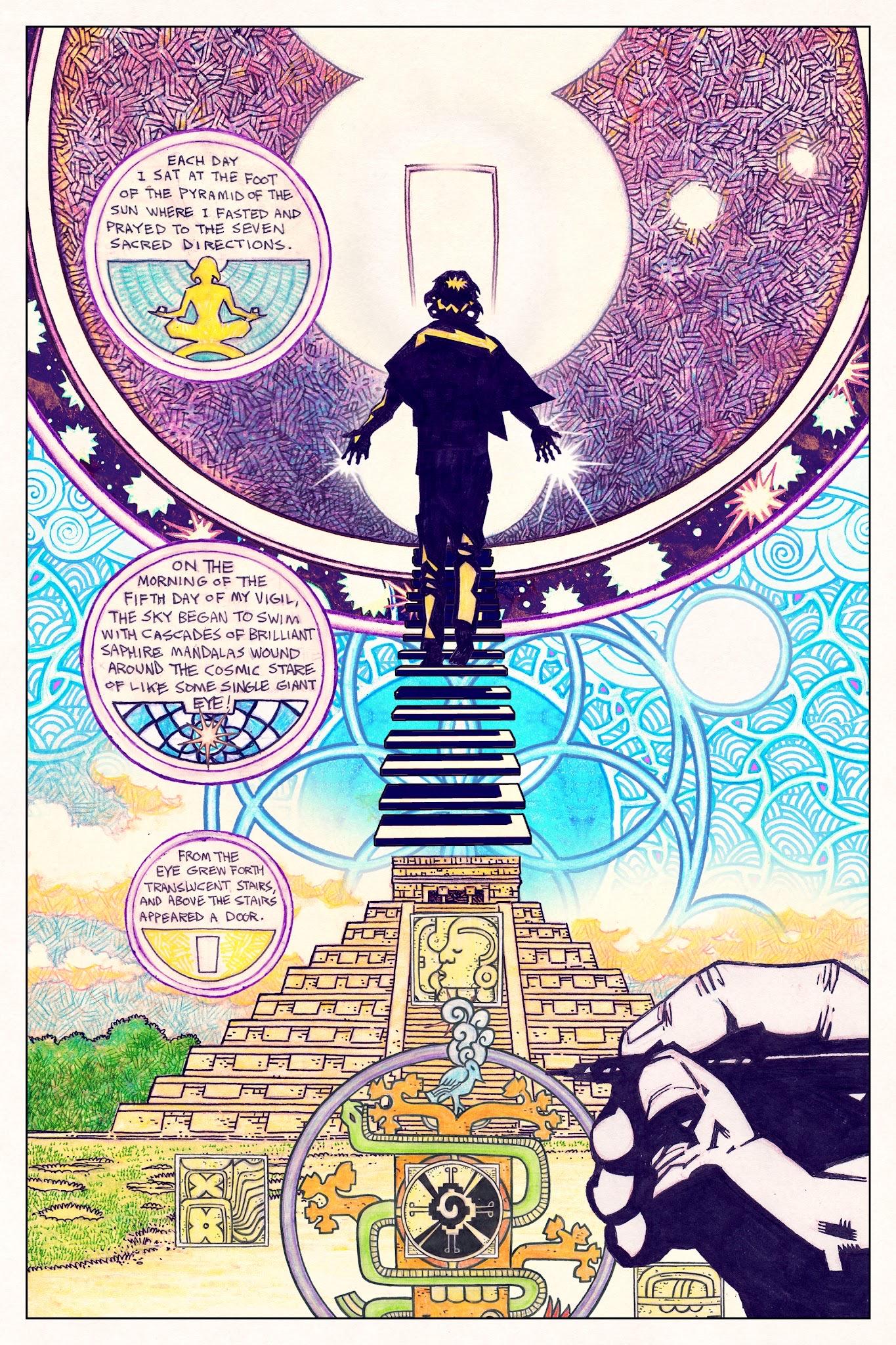
Perhaps you and your fellow collaborators may even craft a story that will echo through the ages. Goodness knows that our frenzied modern society seems to have lost its way. But, if history gives us any hint at how to proceed, maybe what we need is the right story at the right moment (just like the right dream at the right moment) to light the road into the undiscovered country that lies ahead.

Your Featured Collaborations! - Chapter 11 -

Featured Collaboration #1
Let’s Create a New Character(s)!
Studio Card #1!
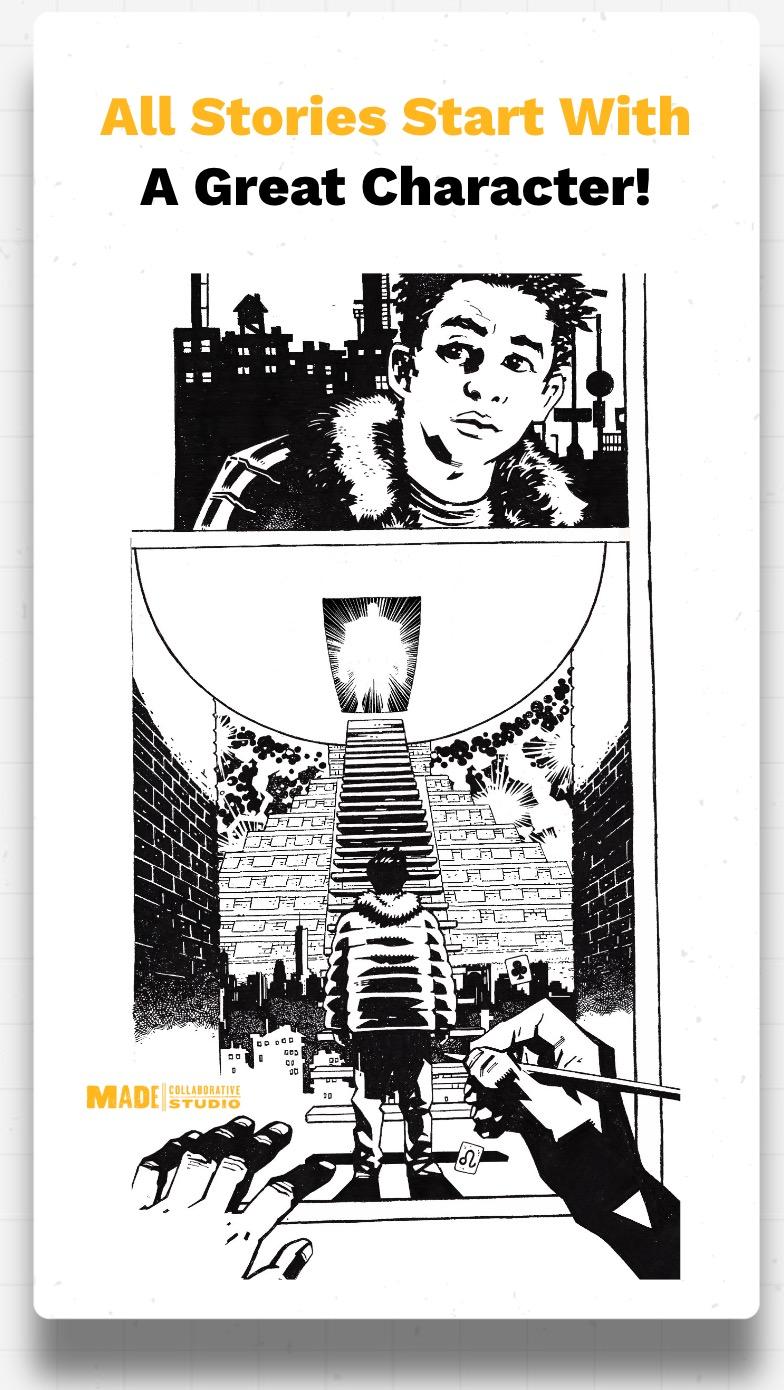
We will do this by providing you with a digital template in the form of Studio Card #1 that walks you through a basic character development process. Within that digital template, you will be presented with the following related collaborations:
1. We will present a digital template that will help you develop your own new characters, and
2. We will provide you with an option to submit any new characters you may develop to us to include in the Back of the Yards comic series
Within our digital template, we start with the basics – name, age, birthplace, current residence, etc. We then build upon those basic characteristics to develop the new character’s personality and physical traits.
It is at that point that we dig deeper to develop the character’s core values and with that, we will present you with an overview of Carl Jung’s Character Archetypes, which, as you will learn, are universal, symbolic patterns that exist within the collective unconscious, shaping human behavior and experiences of all of us – your new character included!
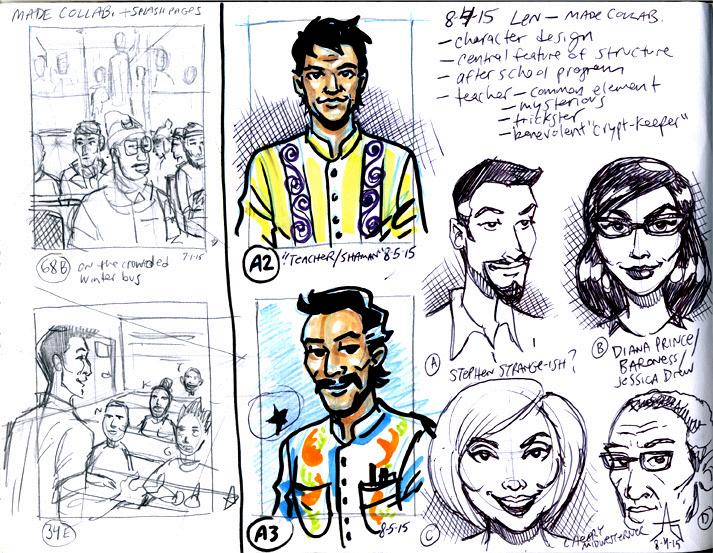

Finally, to bring all together, we help you create your character’s biographical history, i.e., the character’s back story. And with that, you should have the makings of a new character, which you can continue to use and build on your own as part of your independent creative projects. Or…
If you’d like, completely at your option, we will provide you with an opportunity to submit your newly developed character to us. We will then select some of your submissions for further develop with you, along with concept illustrations by our participating artists. And, ultimately, again at your option, we will include a few of your new characters in our Back of the Yards comic series, starting with Issue 3!
You can learn more about this featured collaboration in the Worksheet provided in Chapter 12. But before you do, make sure to turn the page here to check out the next featured collaboration which is a natural collaborative bookend to this one – Creating a Hero’s Journey!
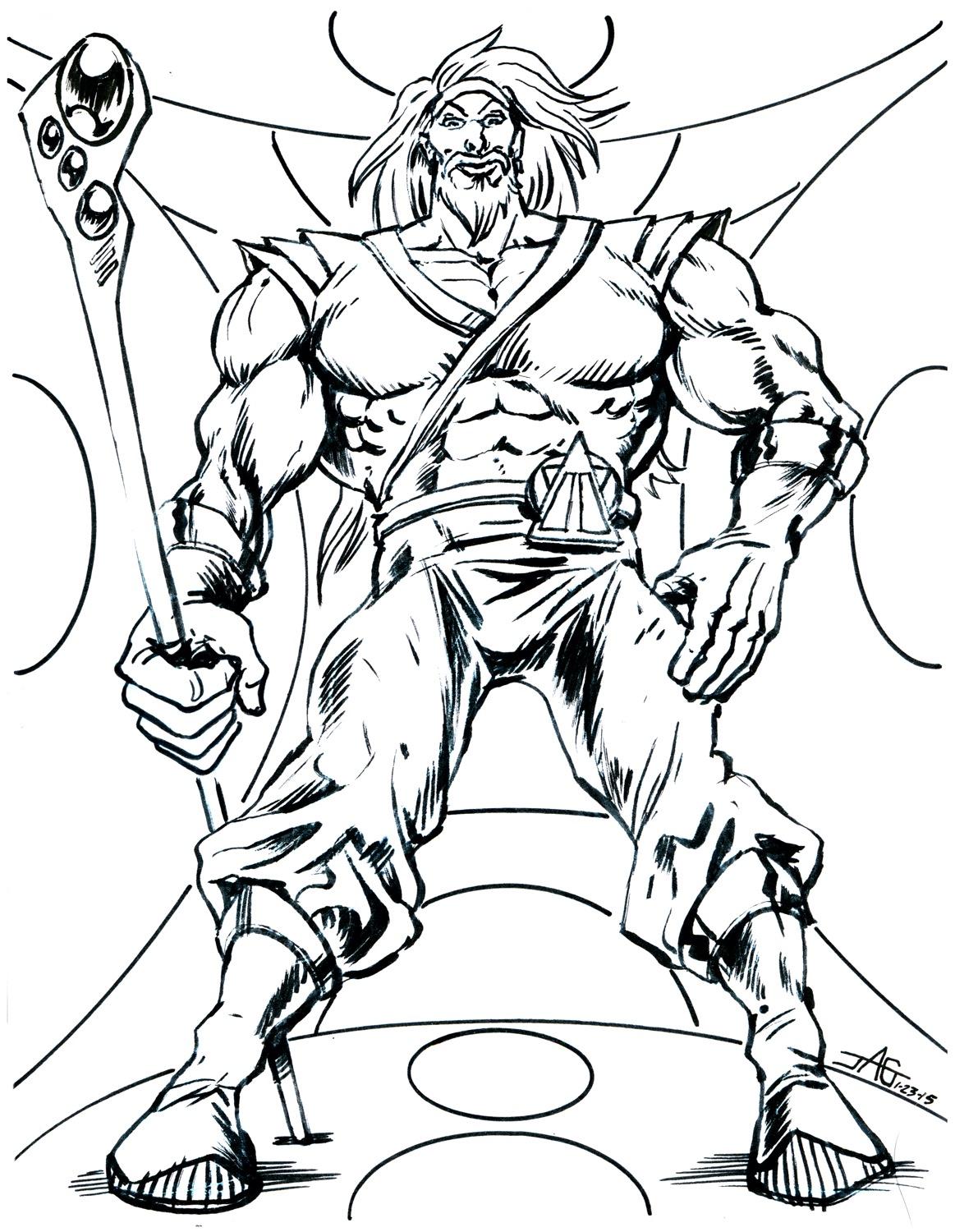
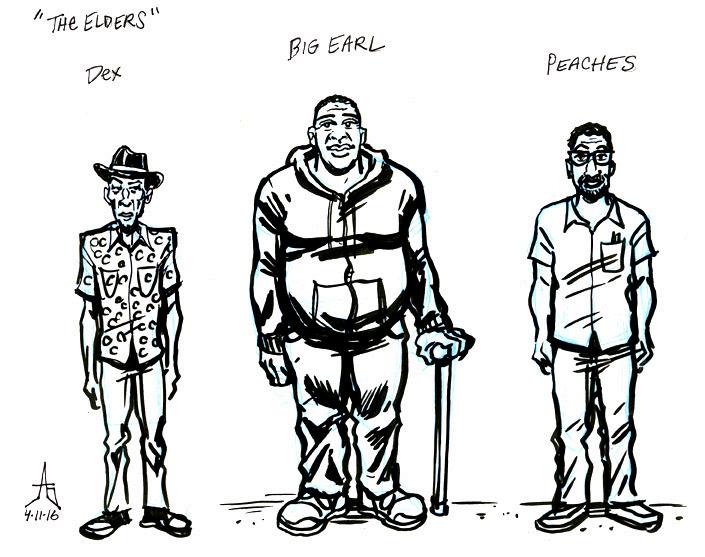
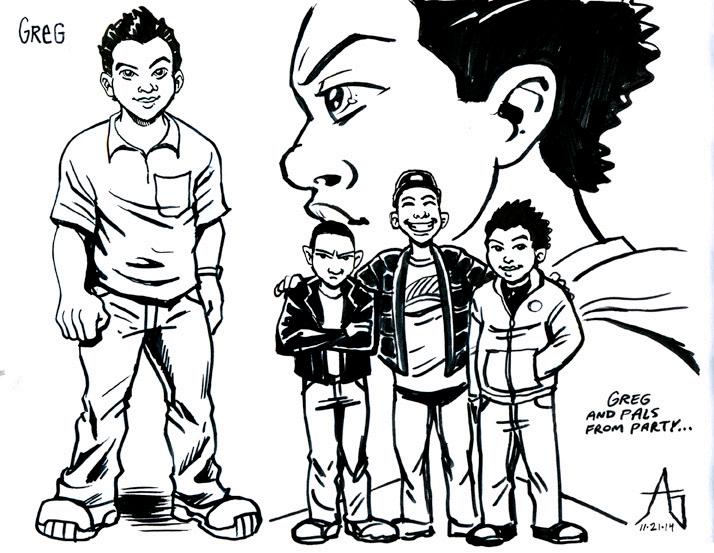
Featured Collaboration #2
Let’s Create Your Hero’s Journey!
Studio Card #2!
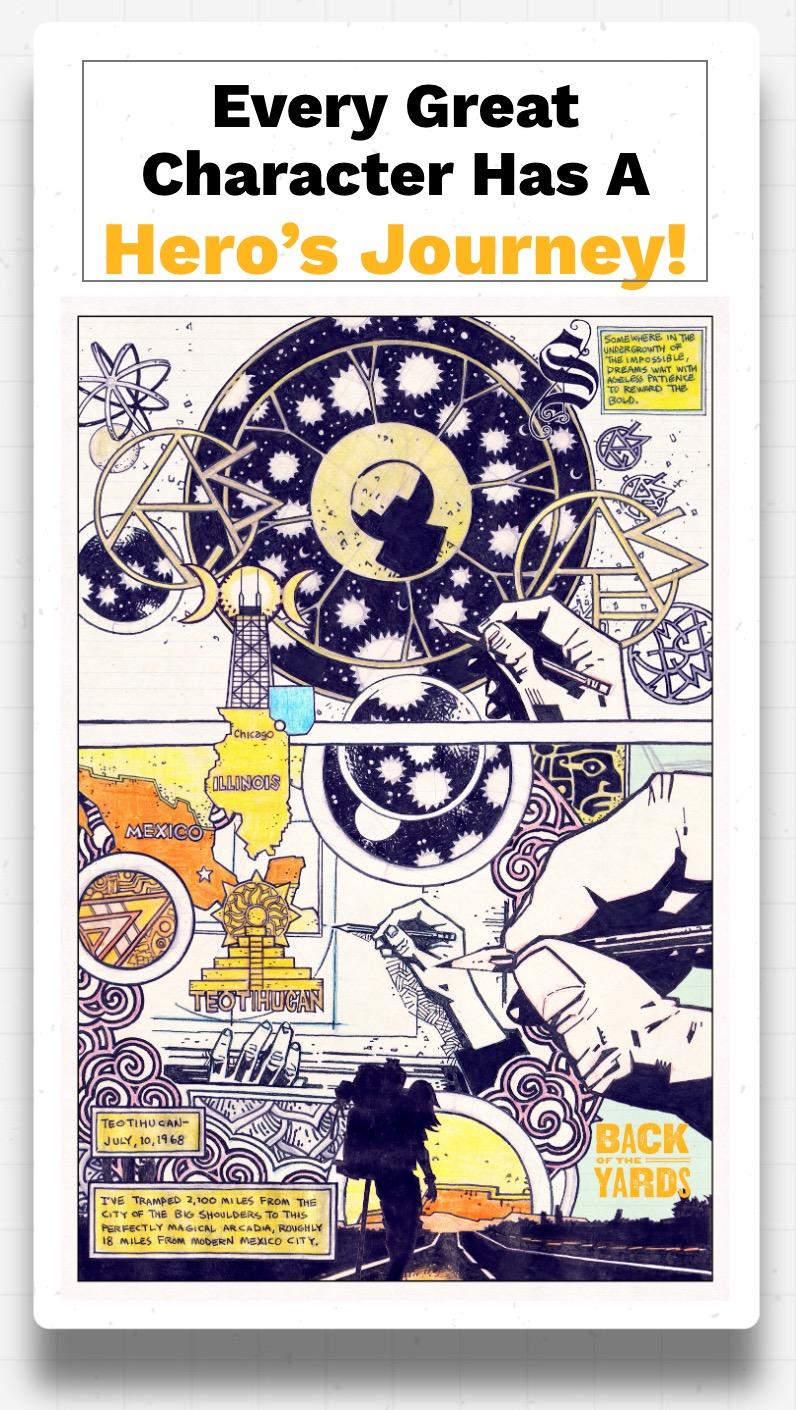
Across history and cultures, many of the greatest stories follow a pattern known as the Hero’s Journey. From Hamlet to Harry Potter, from Buddha to Spider-Man, this universal formula transcends time and place. Why? Because the Hero’s Journey isn’t just about how stories work. It’s about how we work. It’s a roadmap for life itself. Some stories are so powerful they don’t just shape our imaginations. They build nations, religions, skyscrapers and cathedrals around them.
With this featured collaboration, we will:
1. Provide you with another foundational digital template that will walk your through 12 phases of this Hero’s Journey as popularized by Joseph Campbell, and more recently further refined by Christopher and 2. We will use these 12 phases to help develop your own Hero’s Journey, which can be applied to the new character you may developed with our first featured collaboration in Studio Card #1




And like the Character development collaboration, we will also present you with an opportunity, completely your option, to submit those new Hero’s Journey collaborations to us, from which we may select one of two for further development either within the Back of the Yards comic series, or if you’d prefer, your own independent collaboration –perhaps a new comic series altogether!
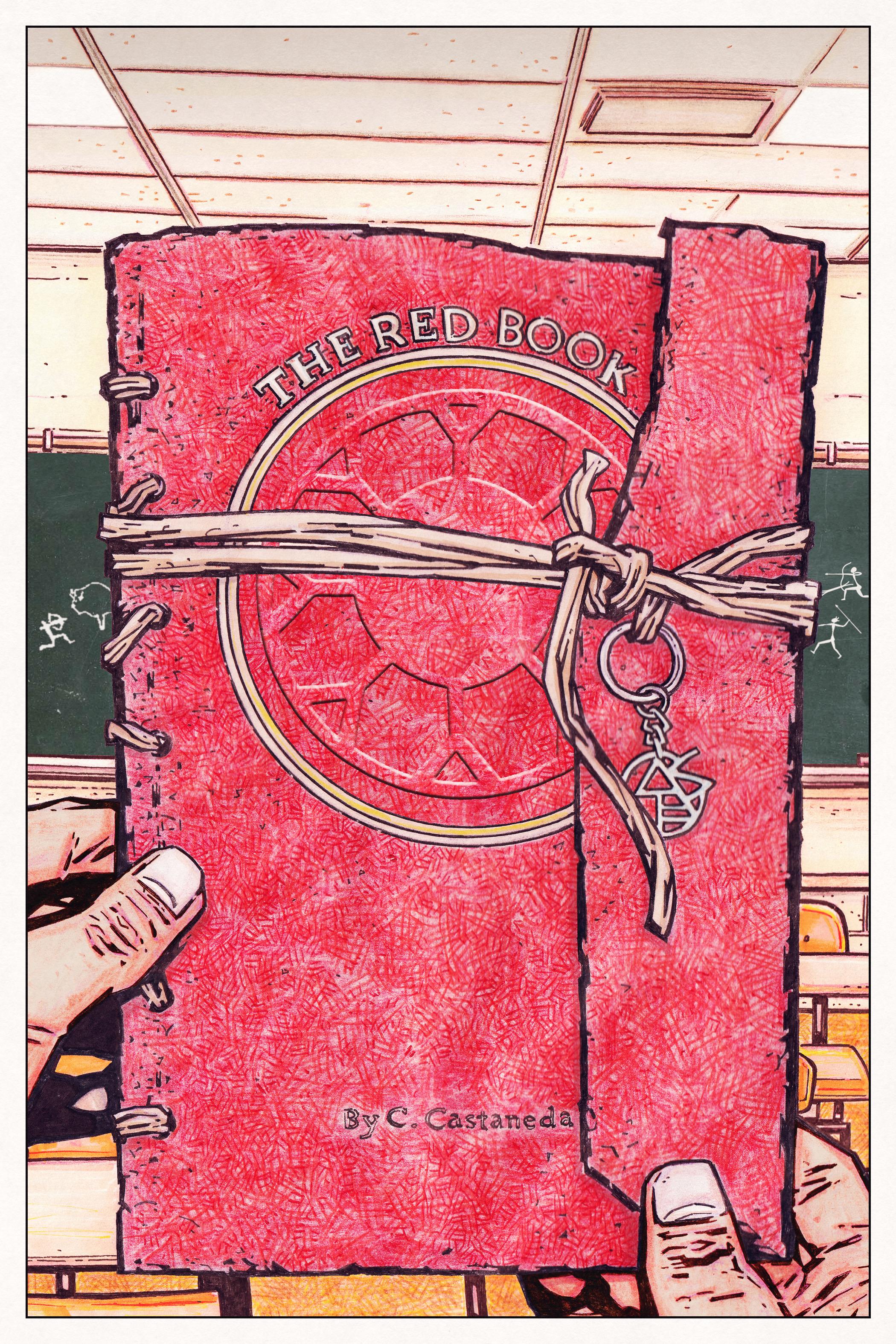

Featured Collaboration #3
Back of the Yards – Issue 3!
Studio Card #3!
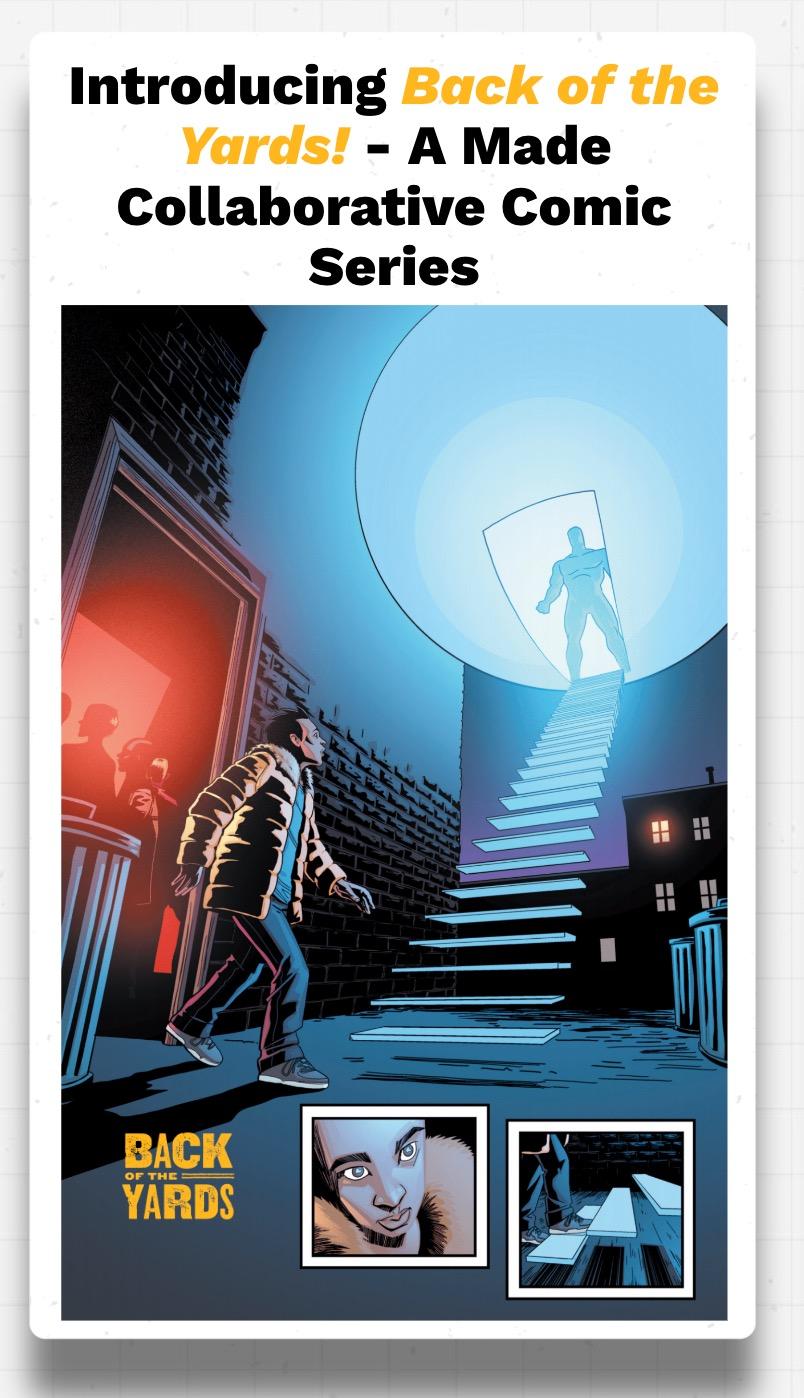
Having walked you through the first two featured Studio Cards, we then bring you to Studio Card #3 – our Back of the Yards comic series! It is here that, with your collaboration, we will:
1. Bring Issue 2 (already fully illustrated) to final production, and 2. Present you with a working manuscript for Issue #3 of the comic series to develop into a final script for production
First, with respect to the Issue 2. we have fully developed 25 pages of illustrated pages, and at this point, we will invite you to be a part of the production process as we finalize front and back comic covers, identify a printer and go to print production.
Separately, using concepts from the first two featured collaborations, you will be presented with opportunities to review and provide input and “notes” to the Issue 3 working manuscript over the duration of this collaboration. And eventually, with your help, this working manuscript will become a final script for illustrations and production. At which point, we will continue to provide you with opportunities to provide your notes and input all the way to final production and publication of Issue 3!

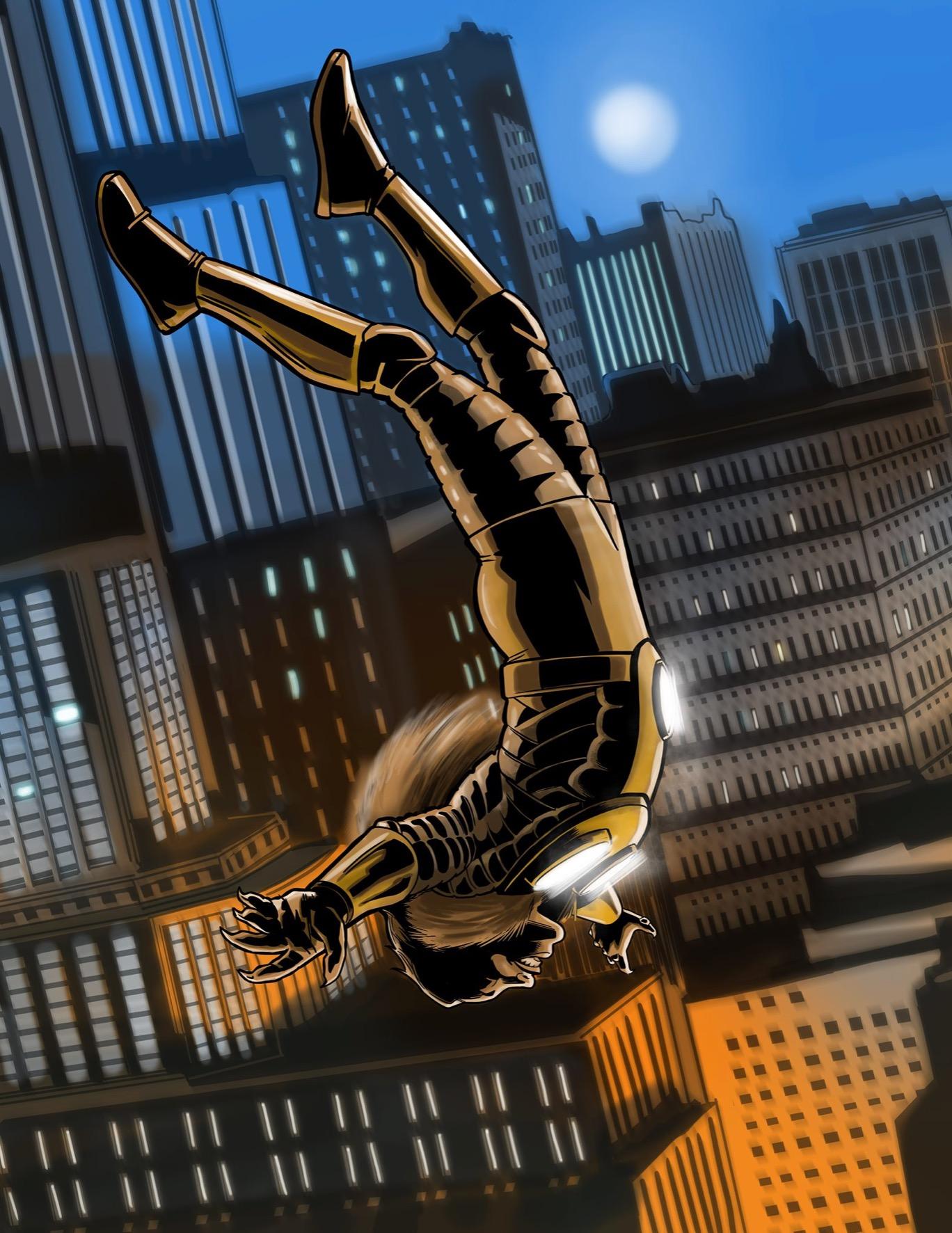

It is also from this initial Issue 3 working manuscript that we will identify a few more related featured collaborations in the form of the following Studio Cards:
• Studio Card #9 (Law Enforcement & Community Relations)
• Studio Card #8 (Neighborhoods & Their Residents)
• Studio Card #12 (Dexter Coleman)
• Studio Card [#14] (The Monahans!)
Just turn the page to learn more about each of these featured collaborations and how each of them will be integrated into the Back of the Yards comic series, starting with Issue #3!

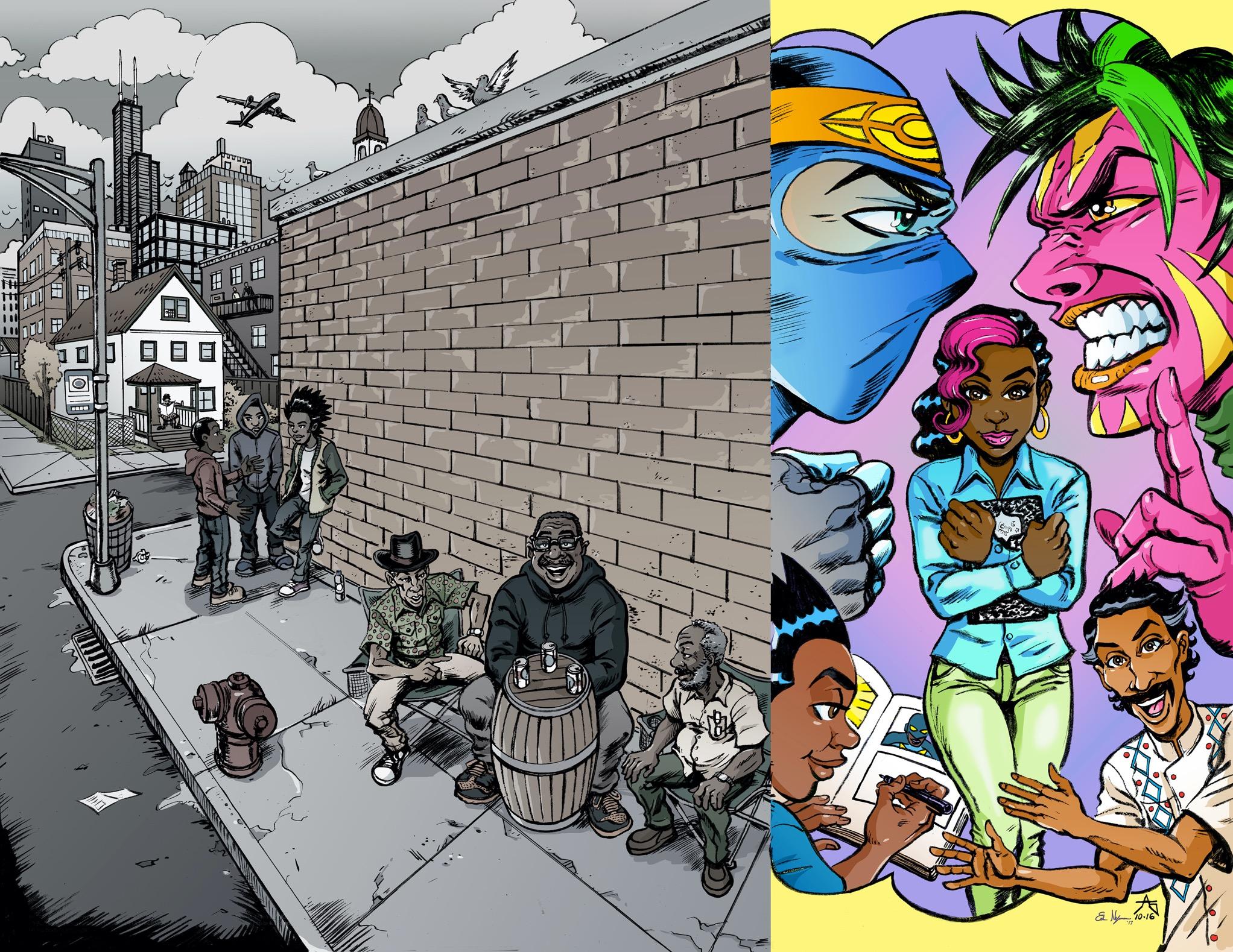

Featured Collaboration #4
An Open Dialogue & Two New Characters
Studio Card #9!
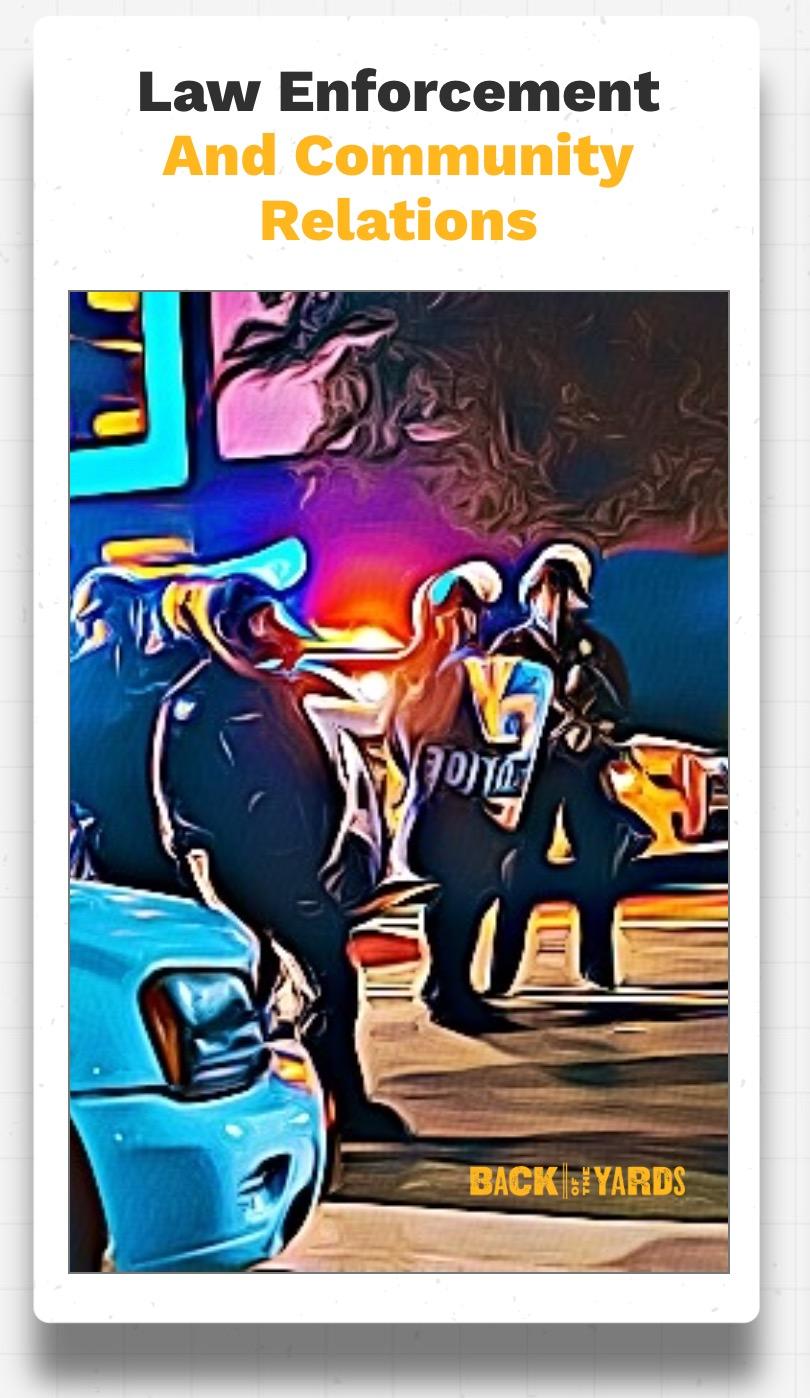

I thought I’d start with these set of featured collaborations with picture I took in the early summer of 202. A picture taken by me in my hometown of Chicago, Illinois.
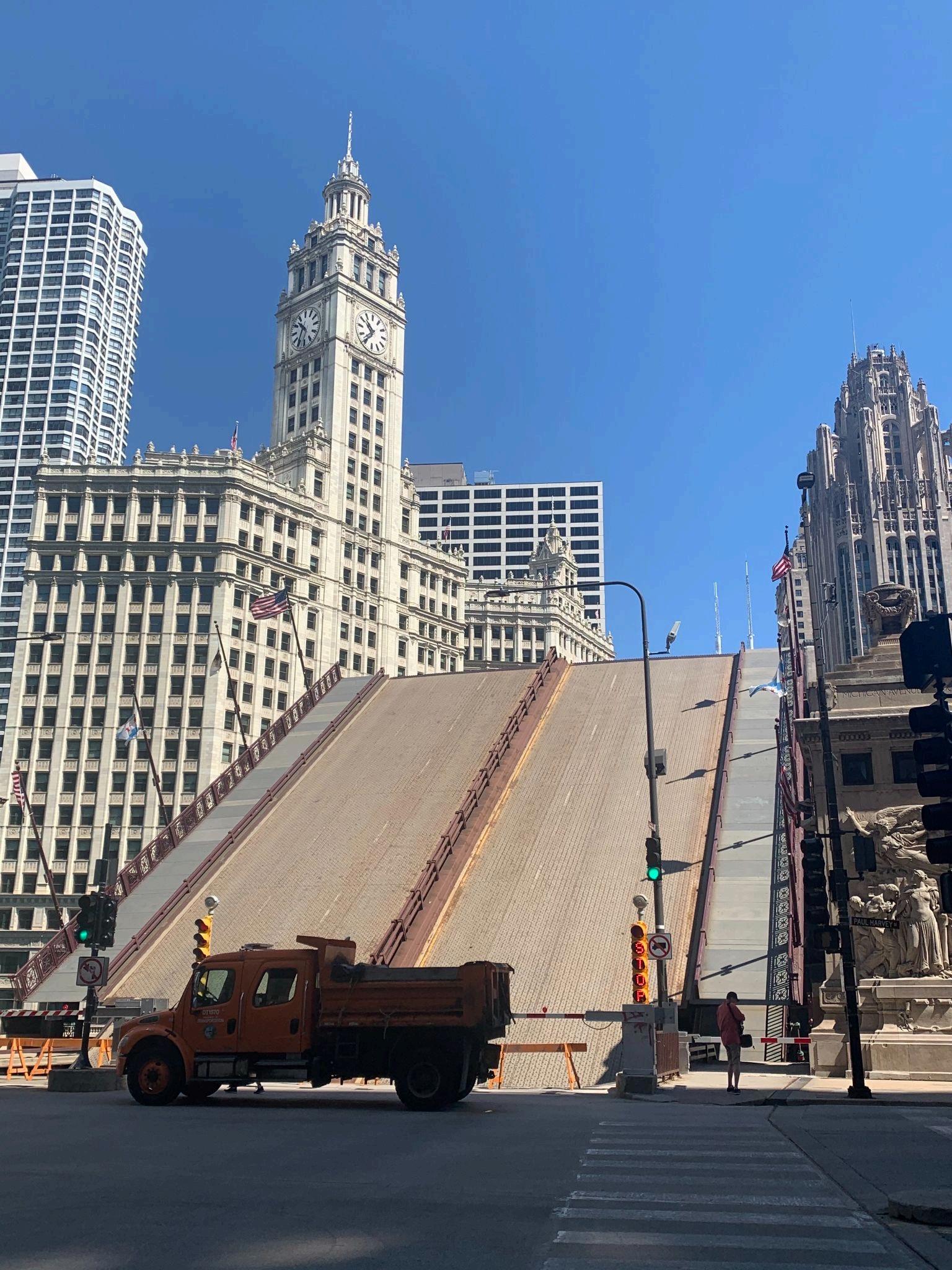
Just across that drawbridge is Chicago’s infamous Magnificent (Mag) Mile, Michigan Avenue. A famed stretch of real estate that hosts some of the finest shopping, food and other tourist attractions year-round. Yet on that day and week in 2020, Chicago had decided that nobody would be going to Mag Mile. Indeed, no one would be going anywhere.
The picture was taken just after the George Floyd tragedy and the protests that occurred in the aftermath. By the time this photo was taken, the National Guard had been brought into the city. And drawbridges throughout the city had been raised to cut off access to the city’s center from just about every angle.
Surreal may be an overused word these days, but there may not be a more apt description when describing the city that morning. And one couldn’t also help but think that those drawbridges were the perfect metaphor for the state of our country’s discourse of the time. Instead of talking with one another, let’s just cut the whole damn thing off.
It is in that context that at that time, we decided we were going to integrate the topics of law enforcement and community relations into our new comic series, the Back of the Yards. And as a very practical matter, we knew we couldn’t continue our comic-based narrative, based in our fictional fictional Back of the Yards neighborhood in the South Side of Chicago, without incorporating law enforcement into the ongoing narrative in some central way.
And when the events of 2020 occurred, and the corresponding protests, we felt these collaborations were even more relevant and timelier. So, it is with this set of featured collaborations that we present you with two related opportunities to collaborate with us as part of these 3 collaborations.
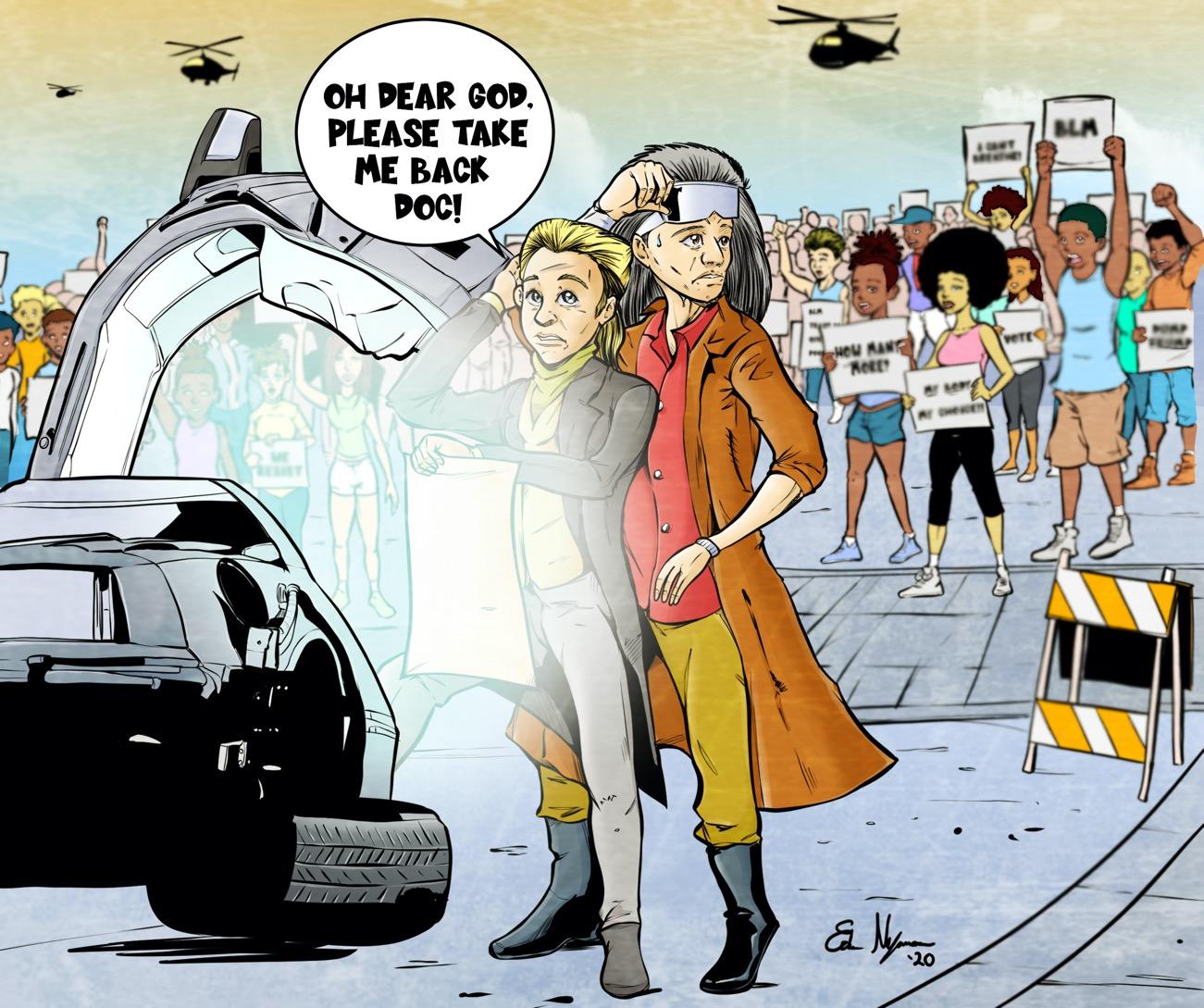
Within the Studio Card #9 Law Enforcement series, we present a brief overview of the early origins of the state police force, starting its early founder, Sir Robert Peel. This illustration by Eric Nyamor, depicts Peel traveling in time to observe his modern-day police force and the issues they face today.


First, we invite you and participating youth from after school programs to submit questions to police officers from Chicago and other parts of the country. These questions, the responses from the participating police officers, will form the basis of an ongoing dialogue over the next 3 to 4 months as Issue #3 of the Back of the Yards comic is developed in parallel.
The objective of this dialogue collaboration is to try to promote a balanced discussion and hopefully with that, some better understanding between all participants. We will also publish excepts from this ongoing dialogue in the supplement of Issue 3 of the Back of the Yards comic series.
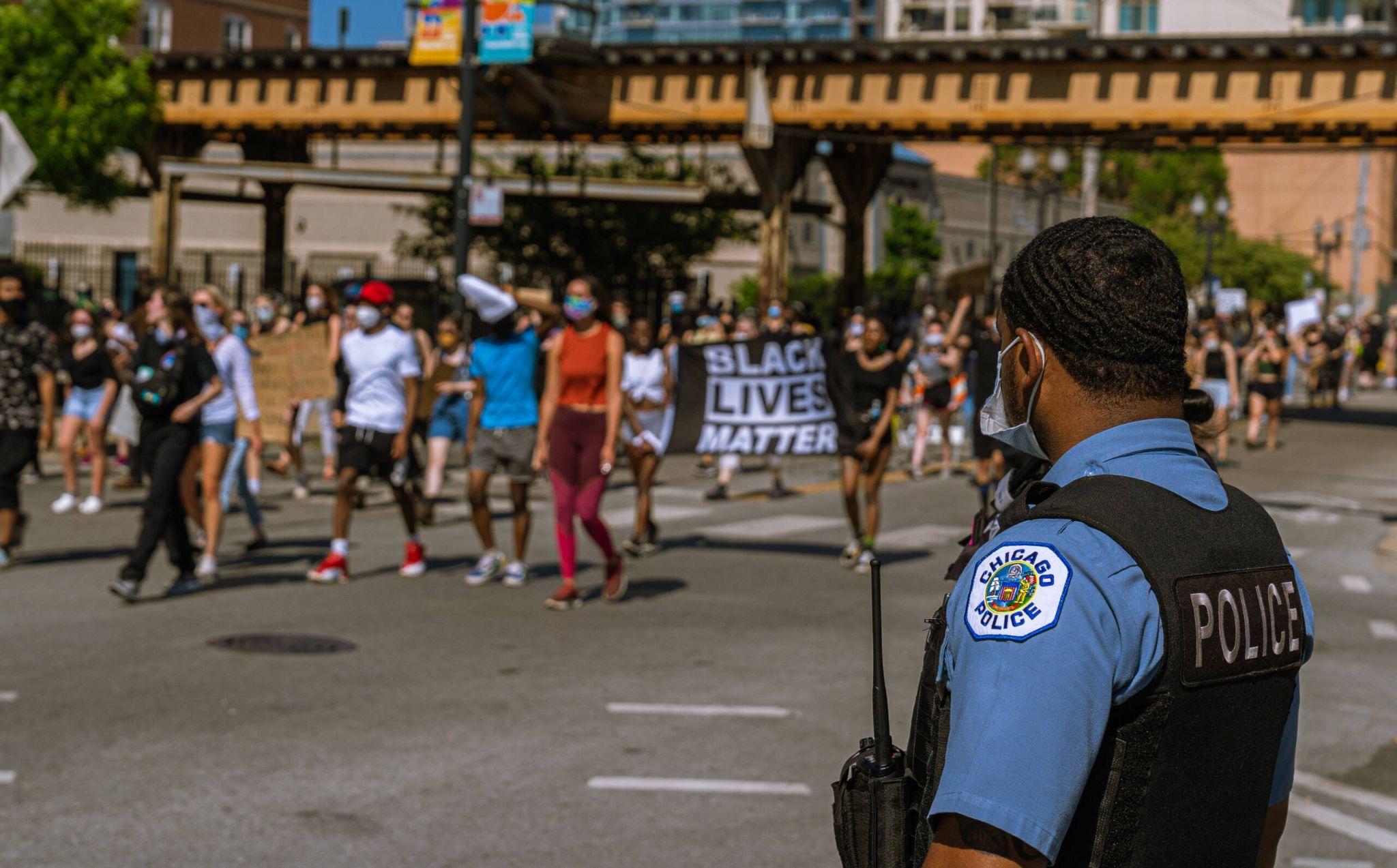
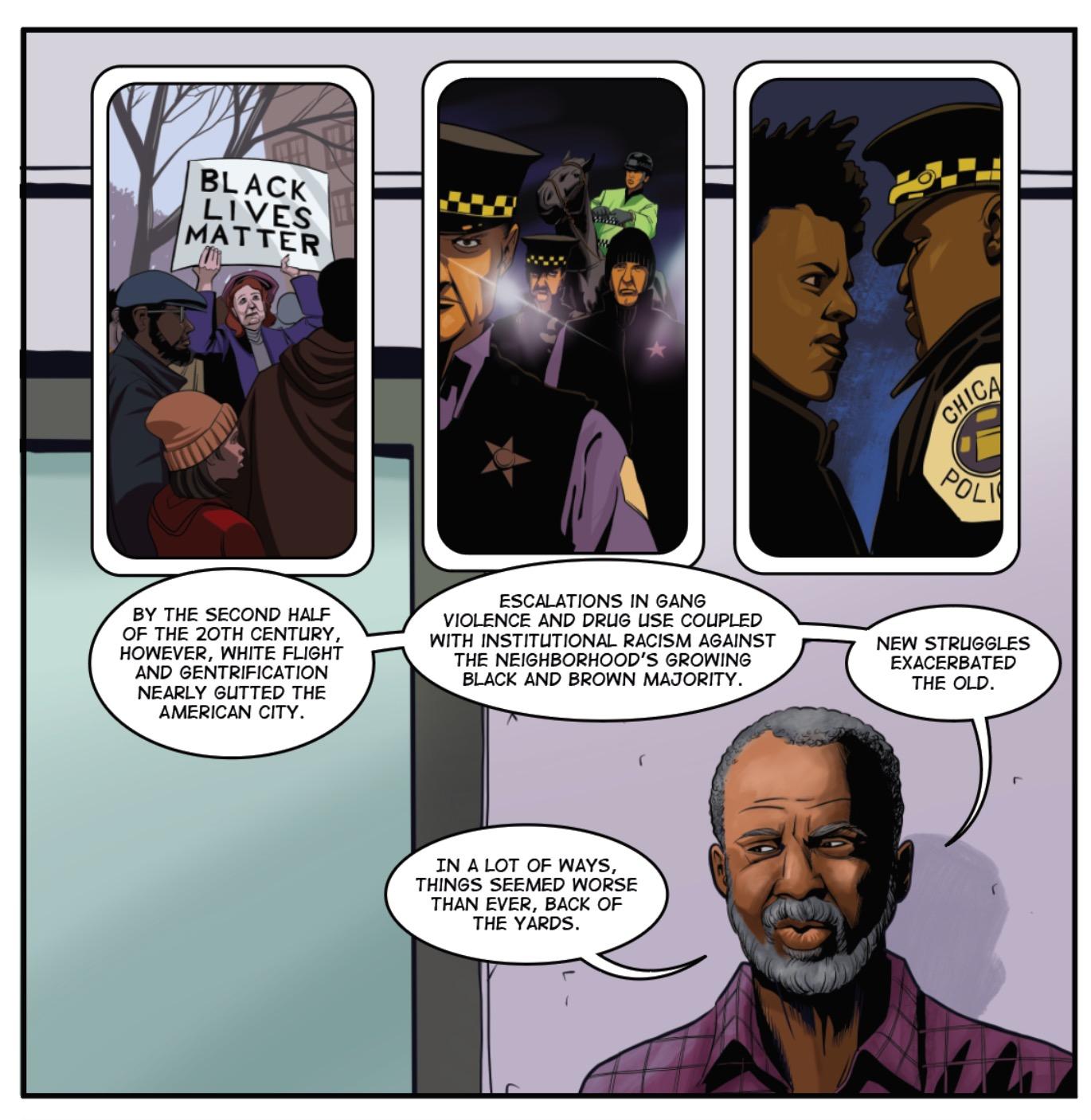

And in parallel with this ongoing dialogue, as part of the second set of related collaborations, we will work with you to create two new characters for our comic series, both police officers and each to be first introduced in Issue #3 (with perhaps some of the dialogue captured above also incorporated into a comic scene with those officers).
You can learn more about those character collaborations in the corresponding Worksheet included in Chapter 12, or by simply visiting the Studio Card link above!
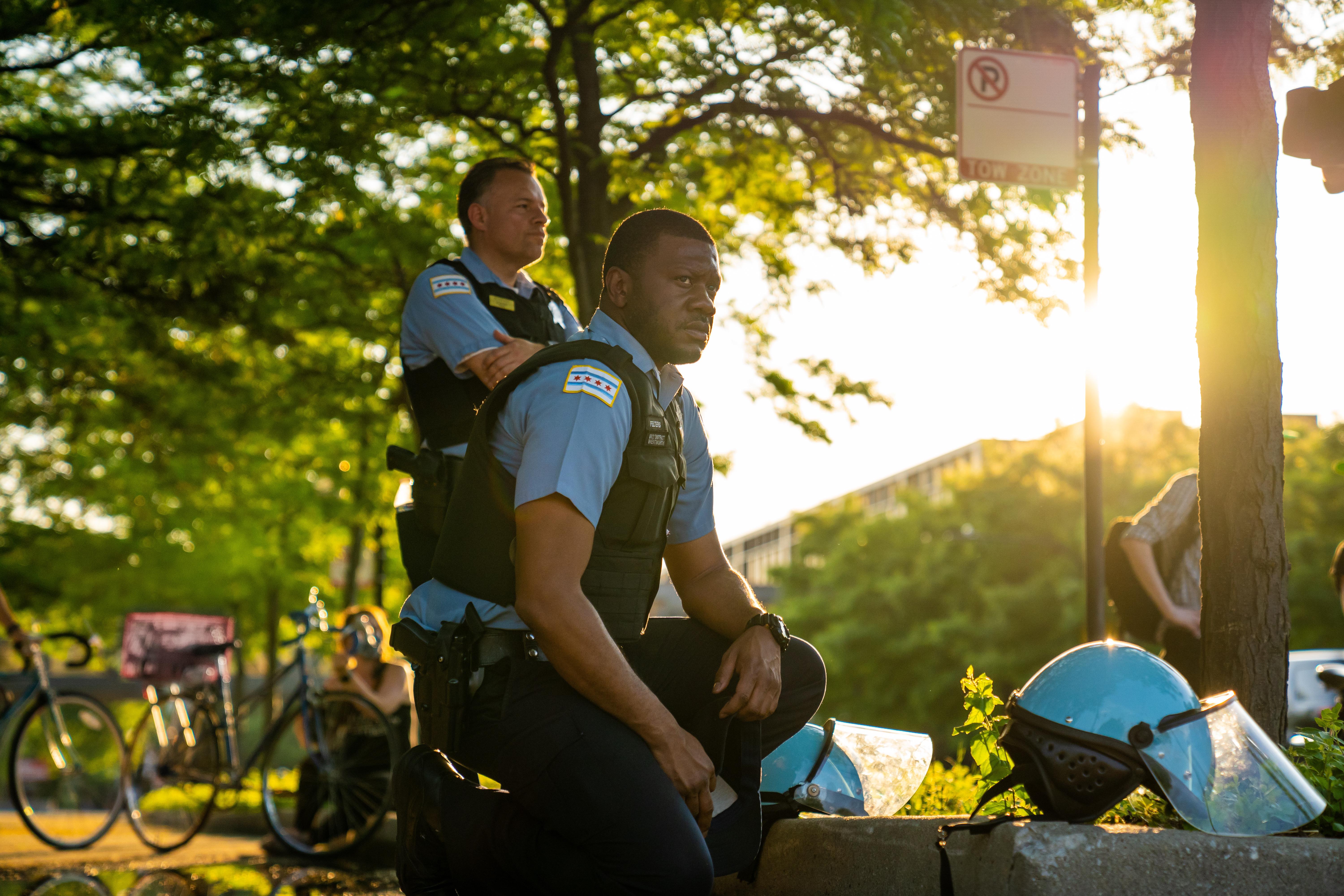

Featured Collaboration #5
Building the ”Ordinary World” of Our Fictional Back of the Yards Neighborhood
Studio Card #8!
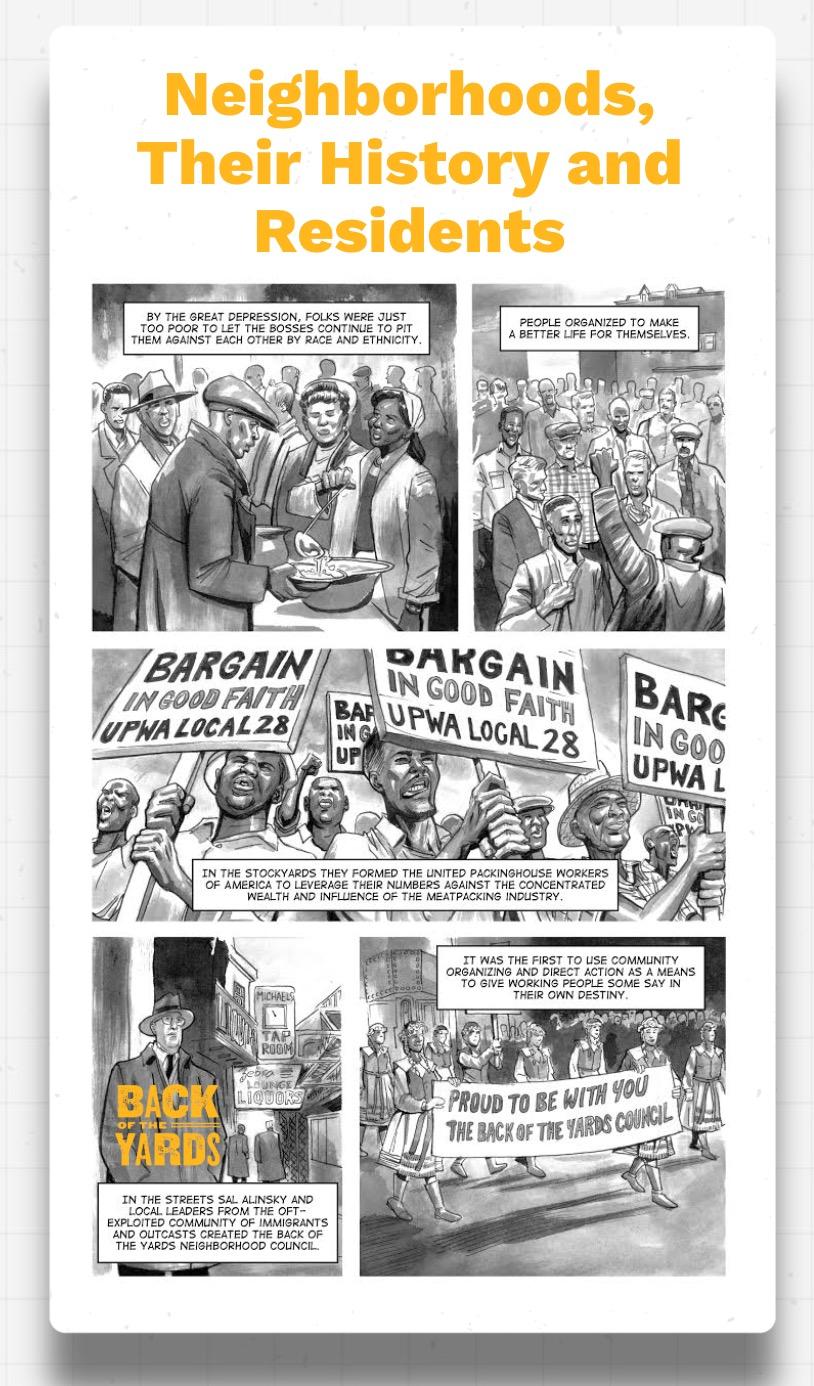
And you can learn more about the real Back of the Yards neighborhood by visiting Studio Card #8, where we will also present you with an overview of Chicago’s early origins and and parallels to other urban centers and neighborhoods.
With this quick featured collaboration, we’re further developing the “Ordinary World” of our Back of the Yards Fictional Comic Neighborhood…and you can be a part of that collaborative process.
As described in our Studio Card #3 Introduction to the Back of the Yards comic series, the fictional "Back of the Yards" neighborhood is inspired by the real historical Back of the Yards neighborhood in Chicago, Illinois. The real Back of the Yards neighborhood extends from 39th to 55th Streets between Halsted and the railroad tracks along Leavitt Street in Chicago and was until the 1950’s the largest livestock yards and meatpacking center in the country.
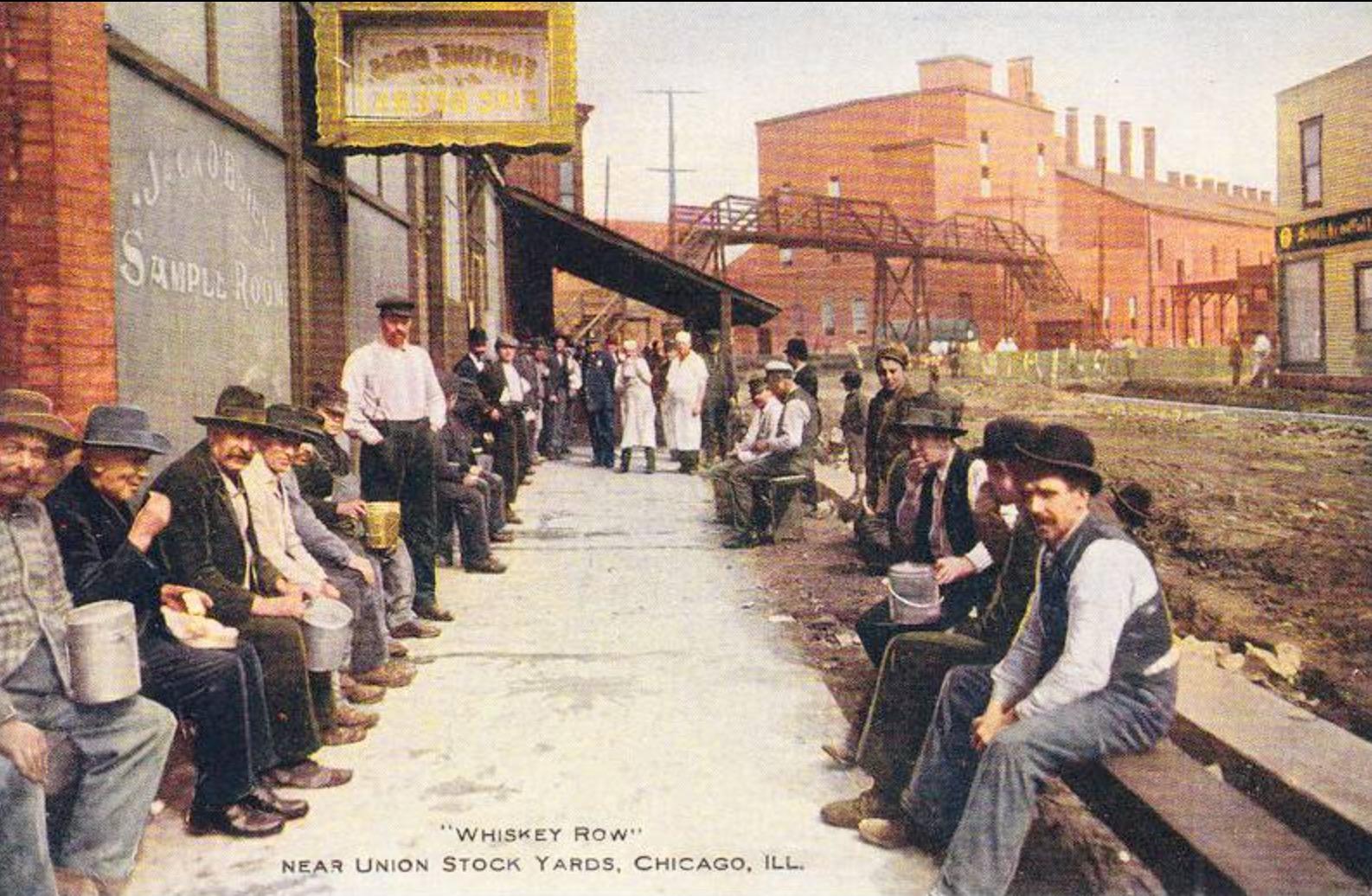

And with this featured collaboration, you can help us to further create and develop our fictional Back of the Yards neighborhood by submitting places from your own neighborhood. These places can be stores, churches, parks, restaurants ... literally any place from your neighborhood. The collaborative key will be that when you make your submission, explain to us why this place is important to you? As with everything relating to this collaborative project, context matters.
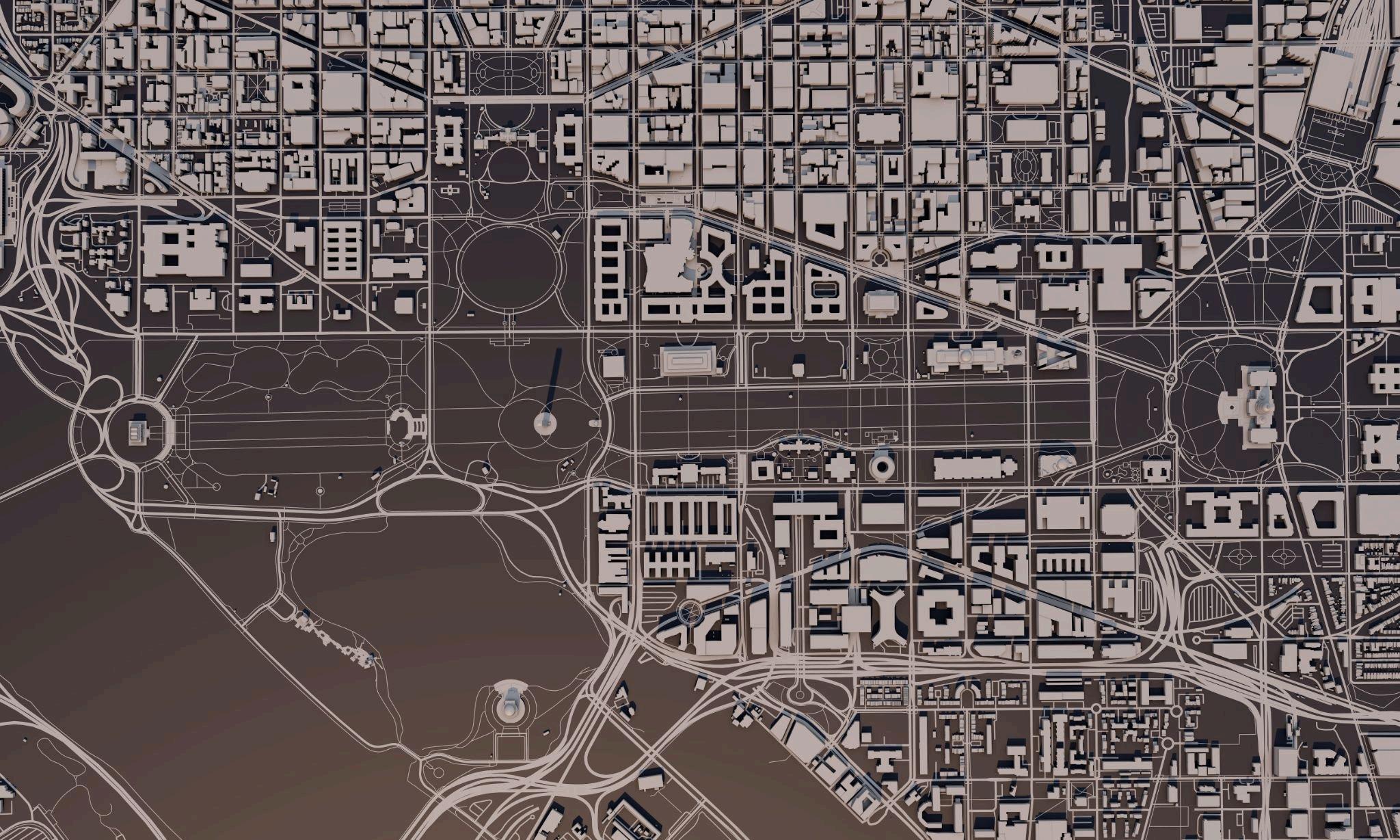
So, if you’d like to have any such place from your own past included in our fictional Back of the Yards comic, just take a little time to more fully consider what place or location meant something to you in your past and why. And whenever you then may be ready, refer to the corresponding Worksheet in this Chapter 12 to help make your submission to us! And we will be highlighting some of your submissions throughout this round of featured collaborations.

Featured Collaboration #6
Who Is Dexter Colemen … really?
Studio Card #12!
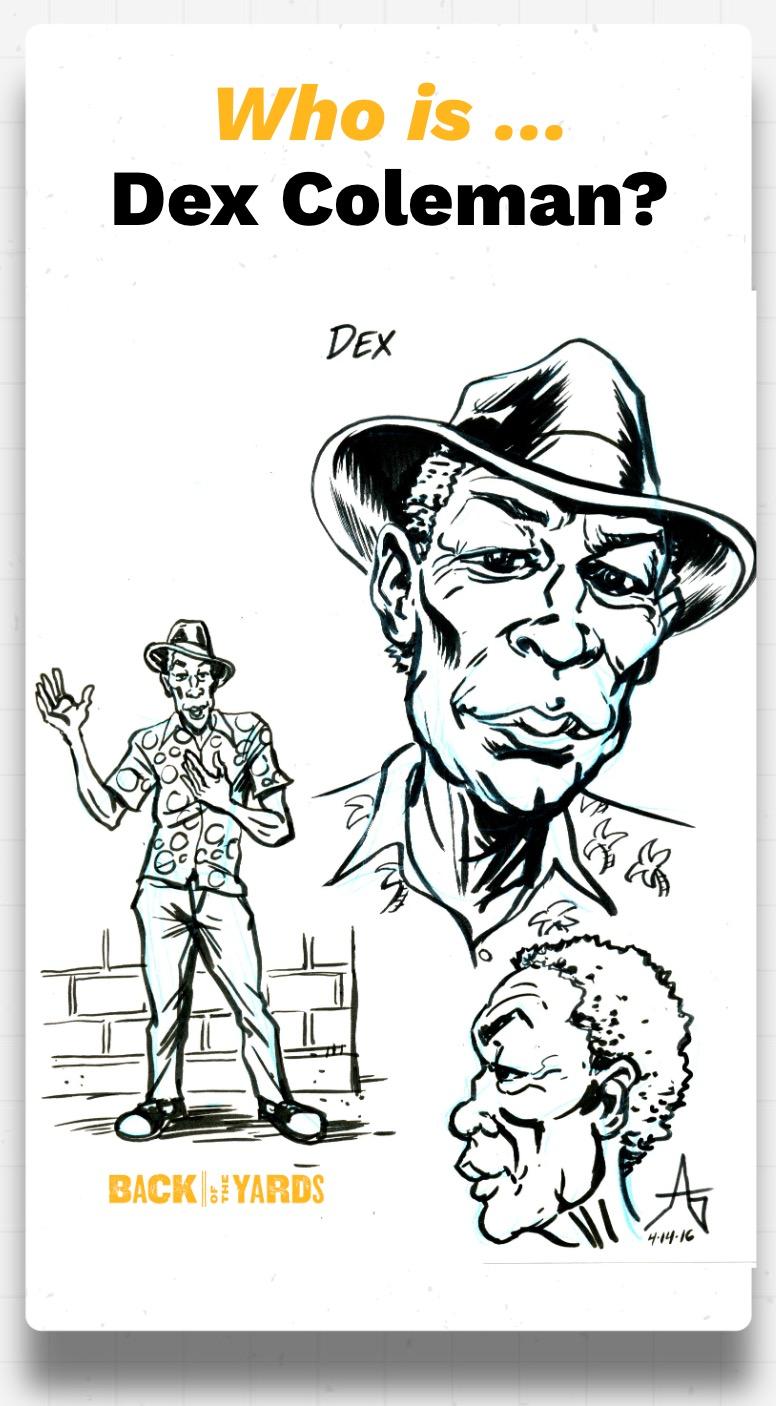
For our next featured collaboration, we visit one of our originally developed characters for the Back of the Yards comic series – Dexter Colemen, a/k/a Dex, for short. Where does one start when describing the character of Dex? Well, rather than recreating that character description wheel, let’s just lift what is already on his Studio Card page …
“Dex has a sharp mind. As steel sharpens steel, he keeps his mind sharp through constant use: chess in the park, all-night poker games and the occasional hustle. They say you can’t teach an old dog new tricks, but that isn’t true of Dex—he’s probably the only one of the Elders who knows how to work a smartphone! Even so, he’s never learned his lesson. Dex has lost a step or two, but he stays one step ahead of the law, for now. ”
So, there’s a bit to unpack in that short little paragraph. First, as referenced, Dex is part of a trio of Elders that meets just about every day and night in front of the General Store in our fictional Back of the Yards neighborhood, along with his two elder cohorts, Big Earl and Peaches.
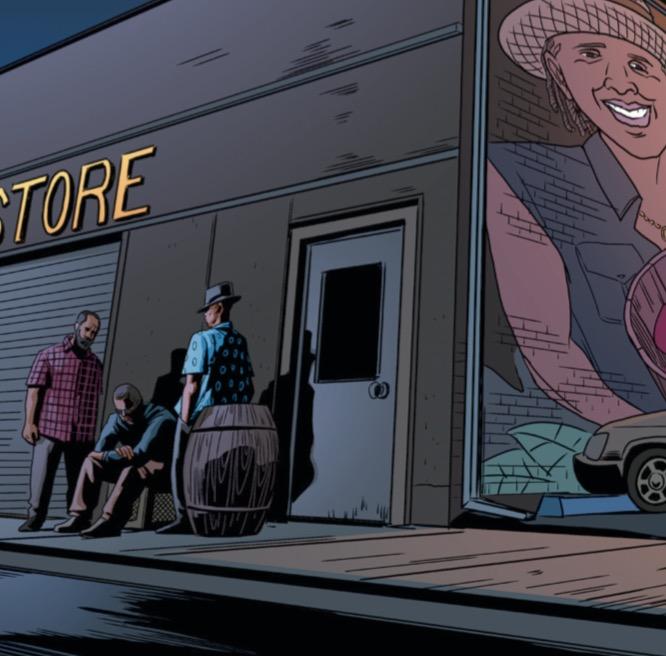

Second, you get a feel for Dex’s personality, which can perhaps best be described as a bit on the irascible side! In a good way. Dex is just always one step ahead of the other two, with quick wit, and biting barb and perhaps more than a few plates in the air at any given time. And with that, yes, Dex may have found himself on the other side of the law from time to time. Heck, he may even be on that other side now.
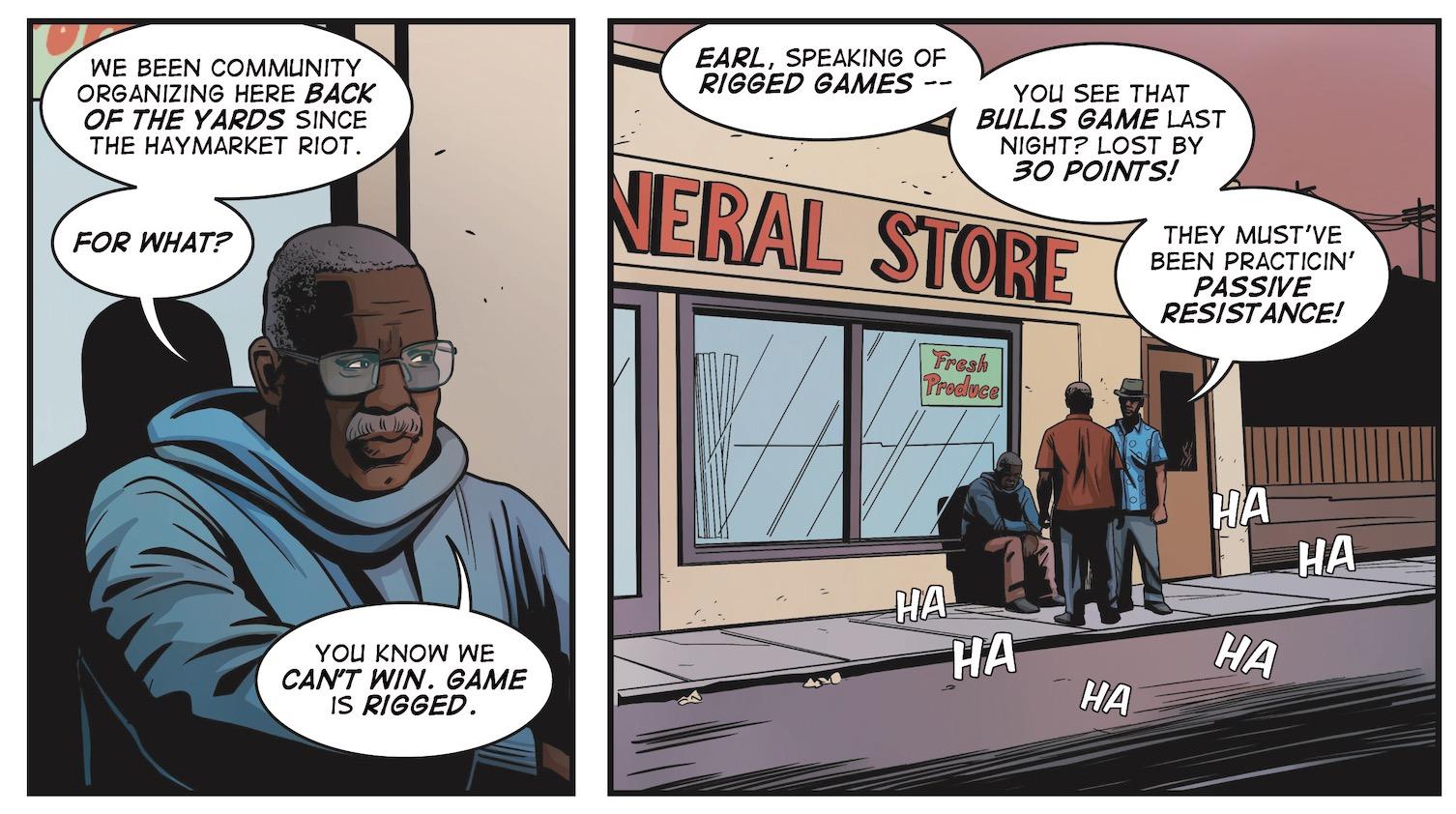
And that’s where you enter the scene! With this featured collaboration, you will help us develop Dex’s back story a bit more. Just what is Dex’s score? What has he been up to in the past? What is he up to now? Could Dex be a confidential informant? If so, do his fellow elders know? Or is there even more to it than that? In other words, with this collaboration, you will be helping us to further develop Dex’s own Hero’s Journey.
These are some of the questions that we invite you to consider and collaborate upon with us! We will collect some of your submissions and consolidate the same into a back story for Dex that we will ultimately publish on our website, and with that, begin to incorporate further into the Issue 3 script and beyond!
Featured Collaboration #7
Let’s Create a New Hero’s Journey!
Studio Card #14!
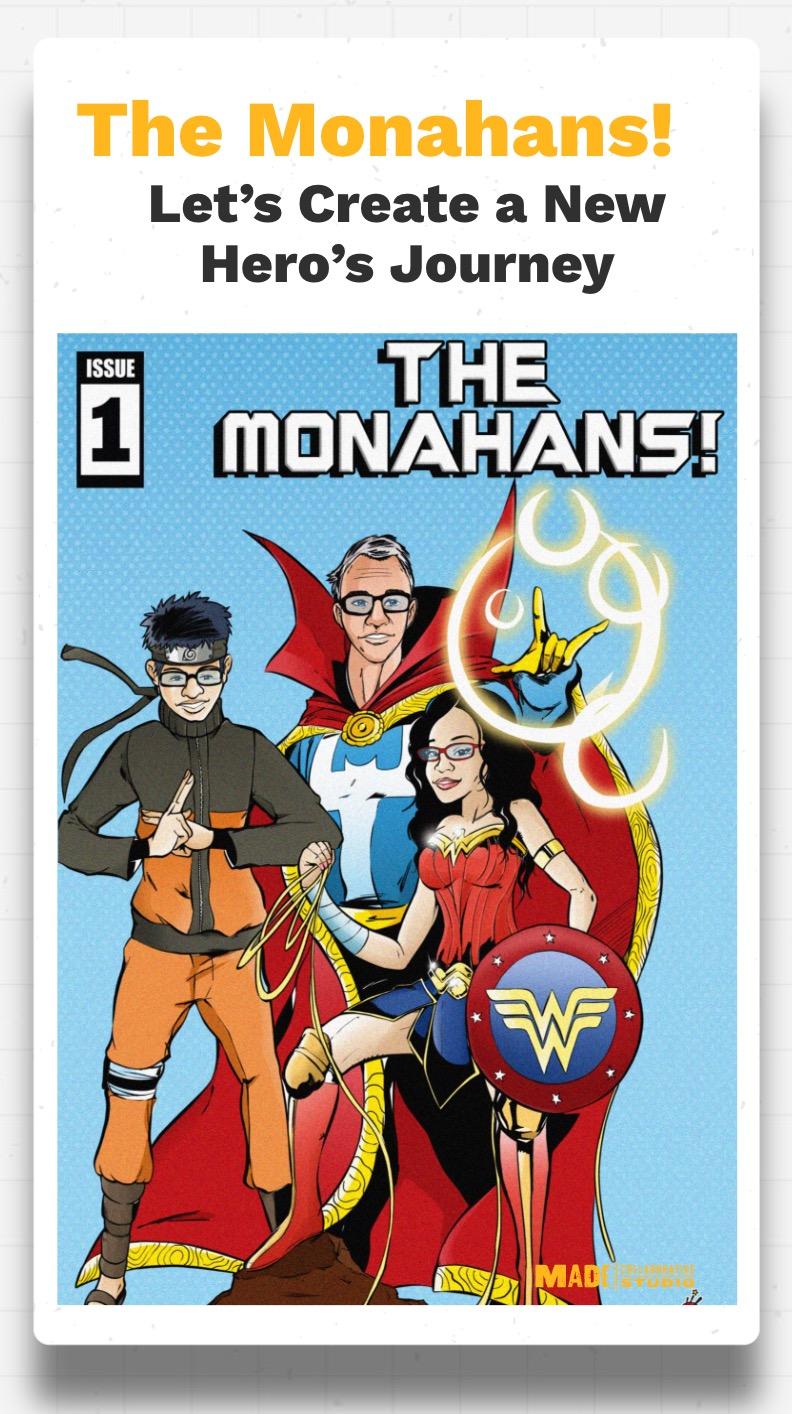

We close our featured collaborations for Issue 3 with some lighthearted fun and a wide-open creative space for collaborative development. This where you can essentially have as much creative freedom as your heart desires in collaborating with us. Indeed, with this final featured collaboration, we ask you to help us create an entirely new Hero’s Journey for a comic that is within a comic! Let us explain.
In our working manuscript of Issue 3, there is a contemplated scene that briefly shows Andre reading a comic and then stowing away that comic within his backpack. It is with this collaboration that we are:
1. Going to create the back story of that mock comic that Andre is reading –The Monahans!, and 2. Submit your own illustrated backgrounds for this mock cover.
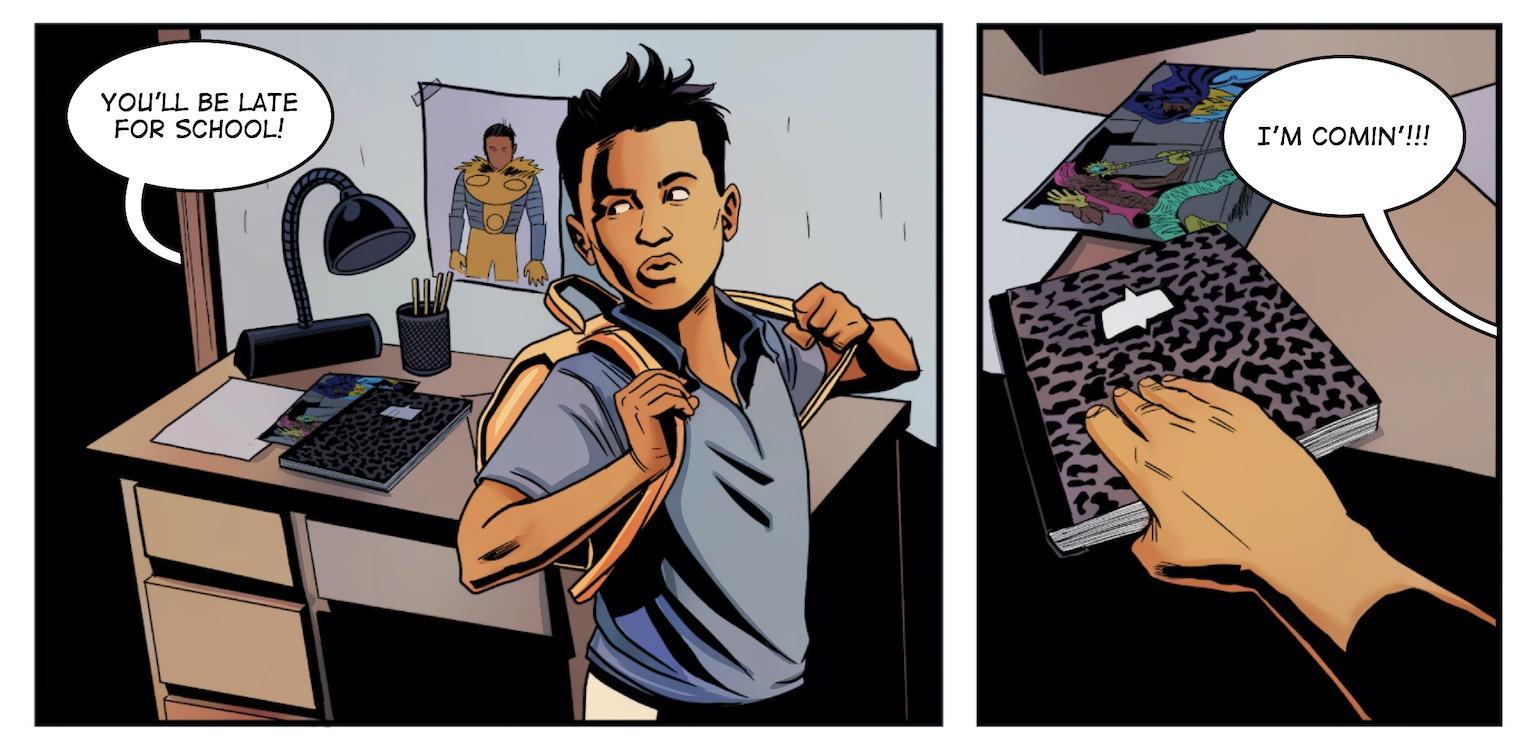

As further background on this featured collaboration, it was during the development of Issue 2 of this project that one of our participating artists (Eric Nyamor) was separately commissioned to illustrate a mock comic cover for a family – the real Monahan family. And it also with this featured collaboration, that you can submit modified illustrations of the background for that Mock cover, one of which we will ultimately select to include for a panel in Issue 3!

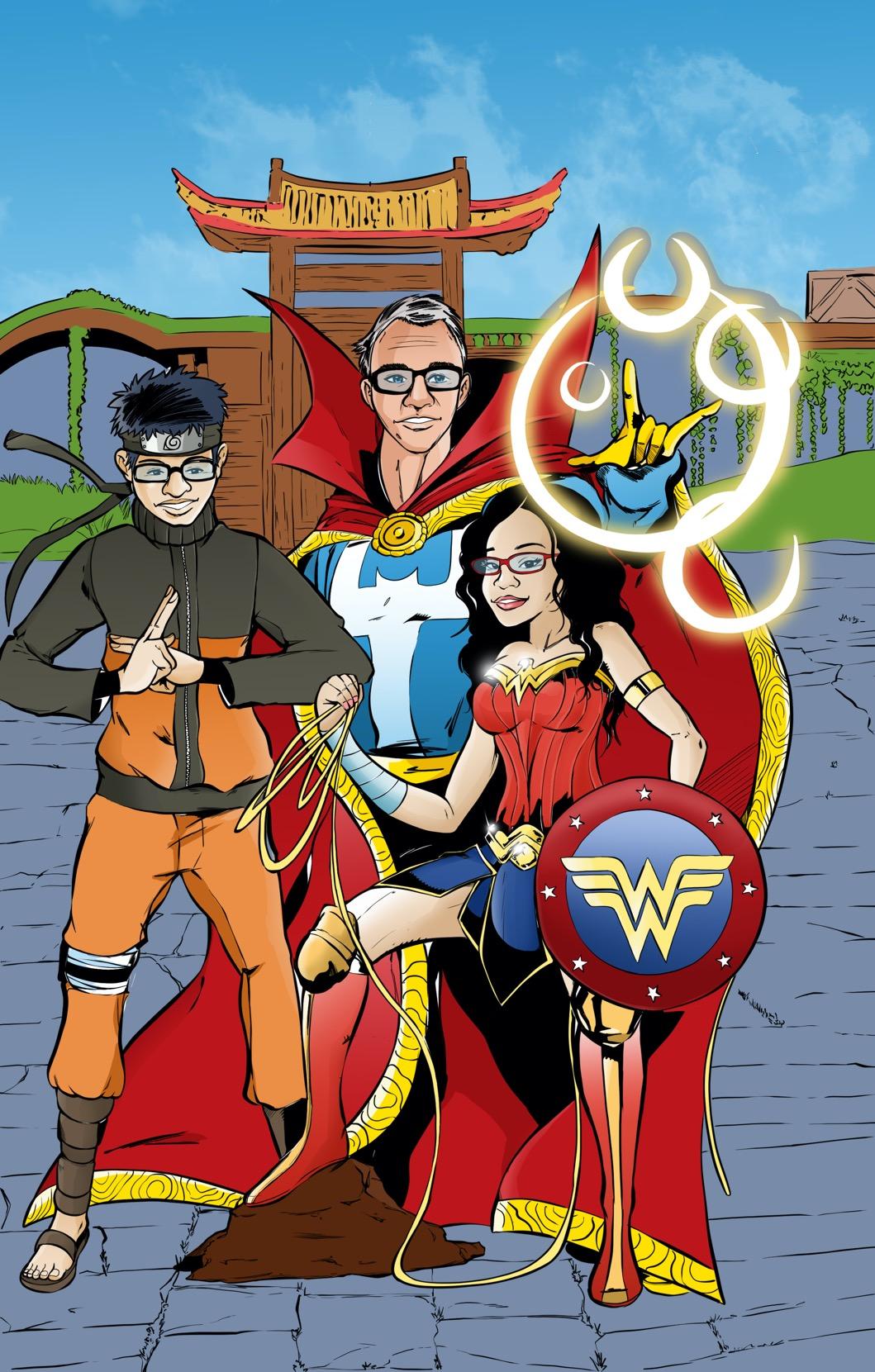
An alternative background to the mock comic cover illustrated by Eric Nyamor. With this collaboration, we invite you to submit your own illustrated background to this mock cover., one of which will be included in Issue 3
In addition to updating the mock cover with any of your background art, we will also be taking submissions from you and participating youth to develop a corresponding Hero’s Journey storyline for this mock ”The Monahans” comic series, leveraging some of the concepts presented our earlier Hero’s Journey featured collaboration..

Ultimately, the collaborative premise here is that over time, Andre will refer to this fictional comic series – The Monahans! - as he wrestles with his own reality within the Back of the Yards comic series. But that all starts with your initial collaborations here!
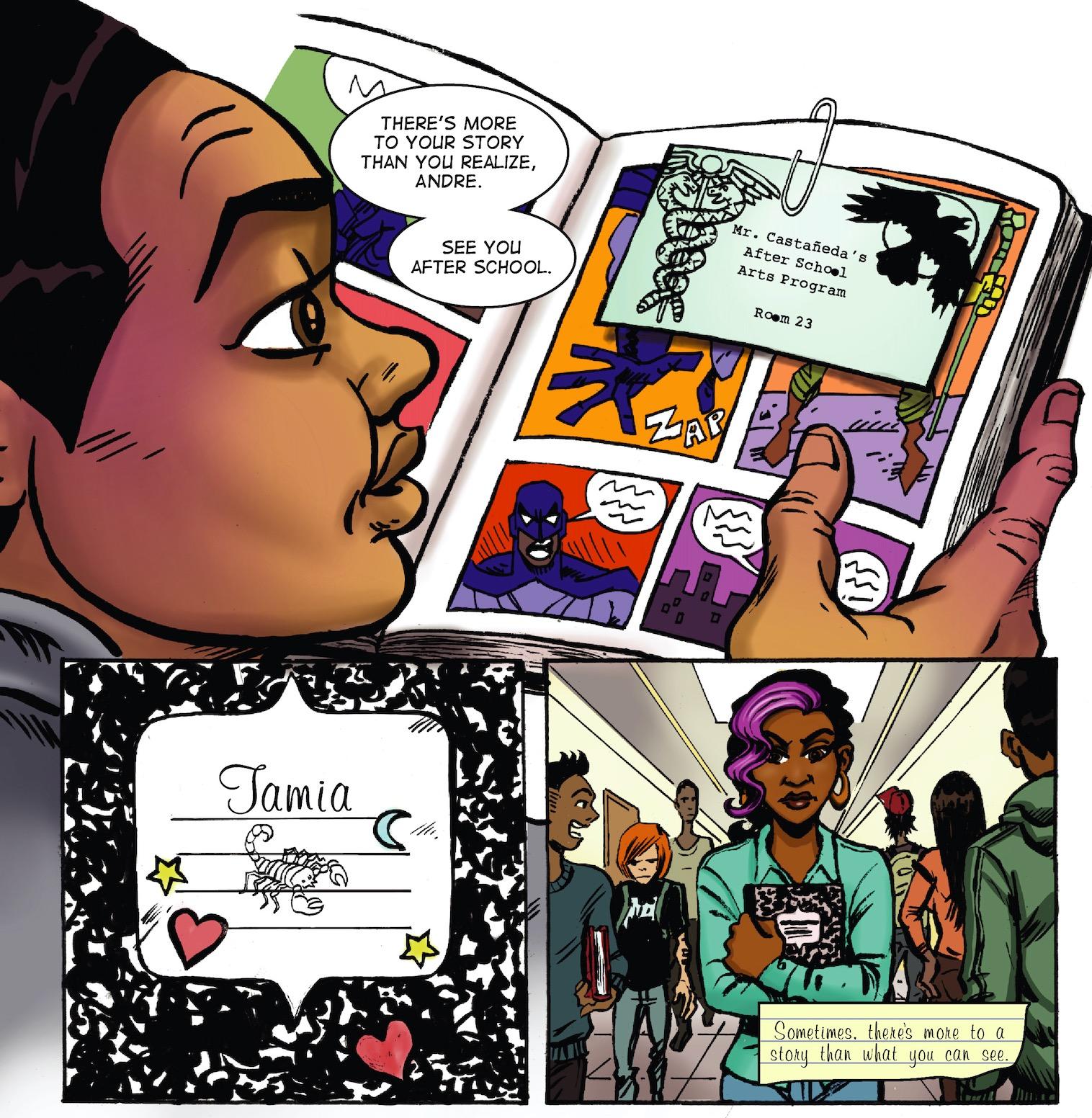

Thank You!
That wraps up your Featured Collaborations for this round of Issue 3 collaborations. You can learn more about how to participate in each of these featured collaborations by visiting the corresponding Featured Collaboration Worksheets in Chapter 12 or accessing the Studio Card links on the project website.
And to help for further collaborative inspiration, we present a quick interlude by Len Kody in Chapter 11 on the power of examining one’s own Hero’s Journey, and the energy that unites us all in that regard.
Look for more information and related announcements, related scheduled Zoom workshops, and other comic updates on our website. And ultimately, your contributions to these Featured Collaborations will be documented and highlighted in Part 5 of these Project Chronicles coming in the winter of 2025/2026. Happy collaborating and thank you for your time, creative energy and consideration.
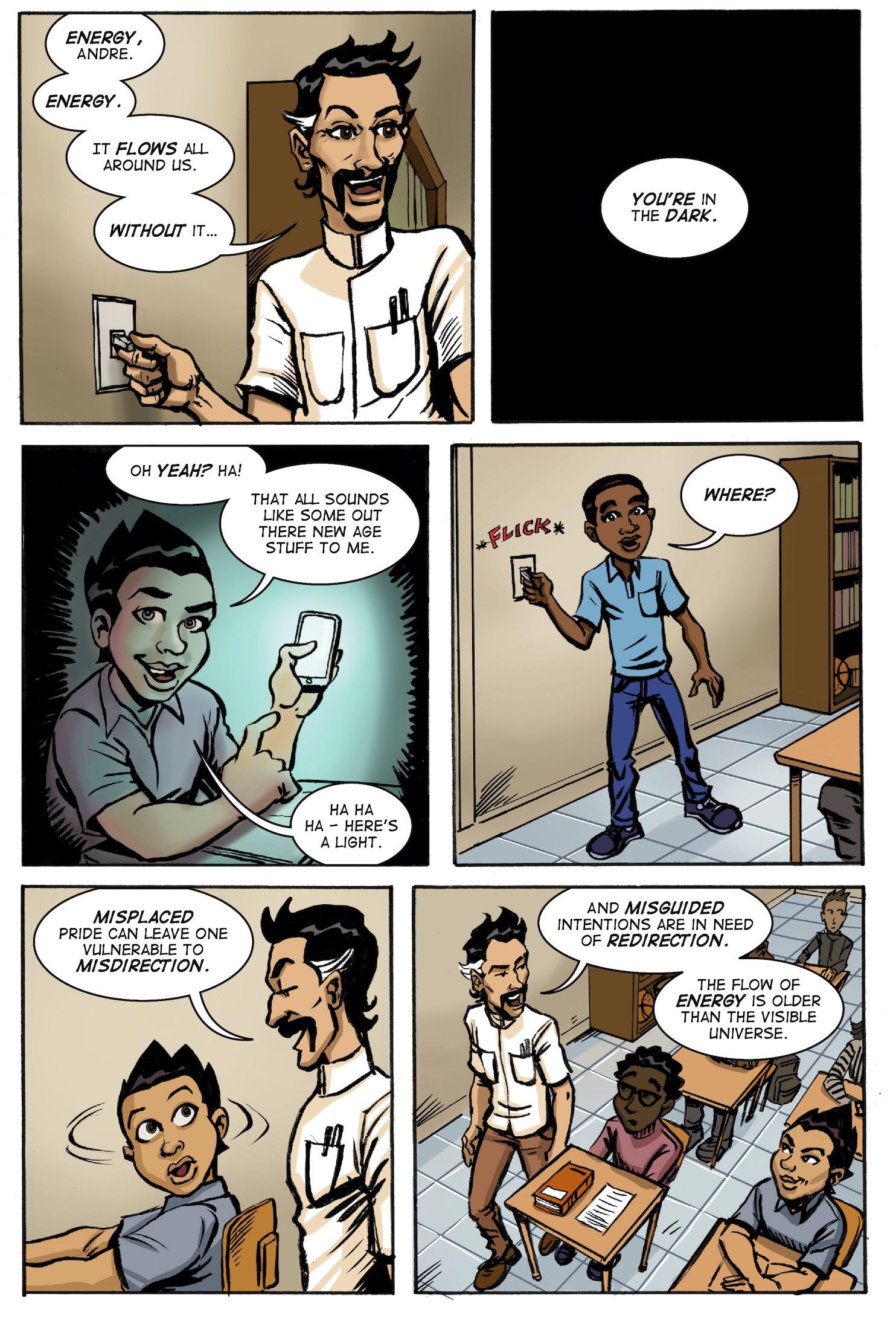


Featured Collaboration Worksheet #1
Let’s Create a New Character(s)!

PageLink :
We start your creative journey just as this modest collaborative project started itself – by creating a new character! (For your convenience, you can click on the card to the left to link to the webpage.)
As you will see, once you land on the Studio Card webpage, you are immediately presented with a quick video (below) that helps illustrate the importance of great characters to any great story or movie.
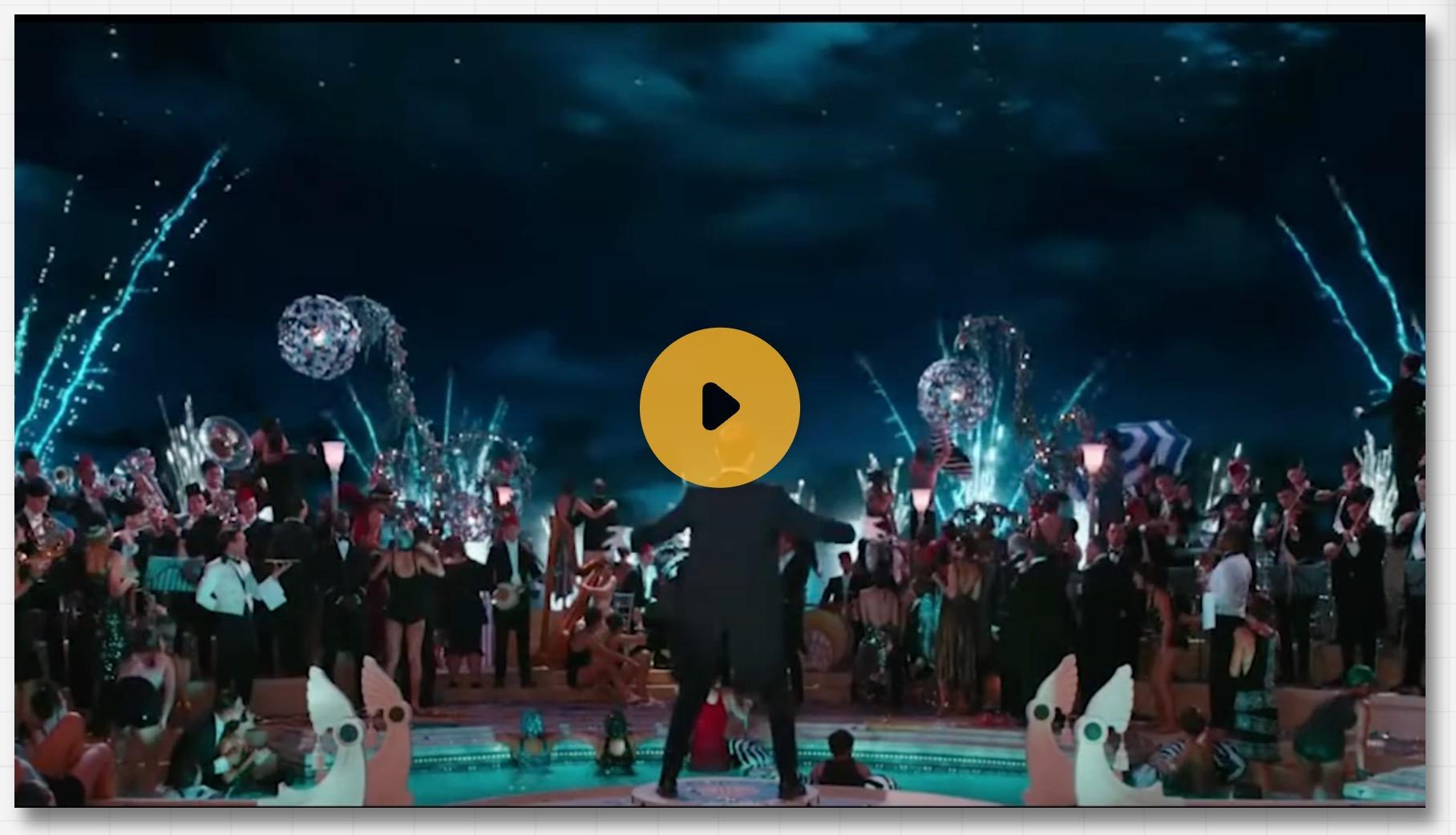
Once you have clicked on the movie, you are then immediately presented with a digital template on the Studio Card page that helps to guide your own creative character development process. You may, of course use this template to create characters for your own independent projects. And you are also always invited to submit any new characters you may develop to us for potential inclusion in one of our own Creative Commons projects, including the Back of the Yards comic series. This worksheet will help guide you through that easy process.

The first section of this Studio Card template for character development begins with a quick overview of the Character Development process in the form of a Google Presentation on the Studio Card page. You can click on the arrows in the lower left-hand corner to navigate this Google Presentation overview, and you can also click on the 3 vertical dots in that same area to maximize the presentation to full screen.
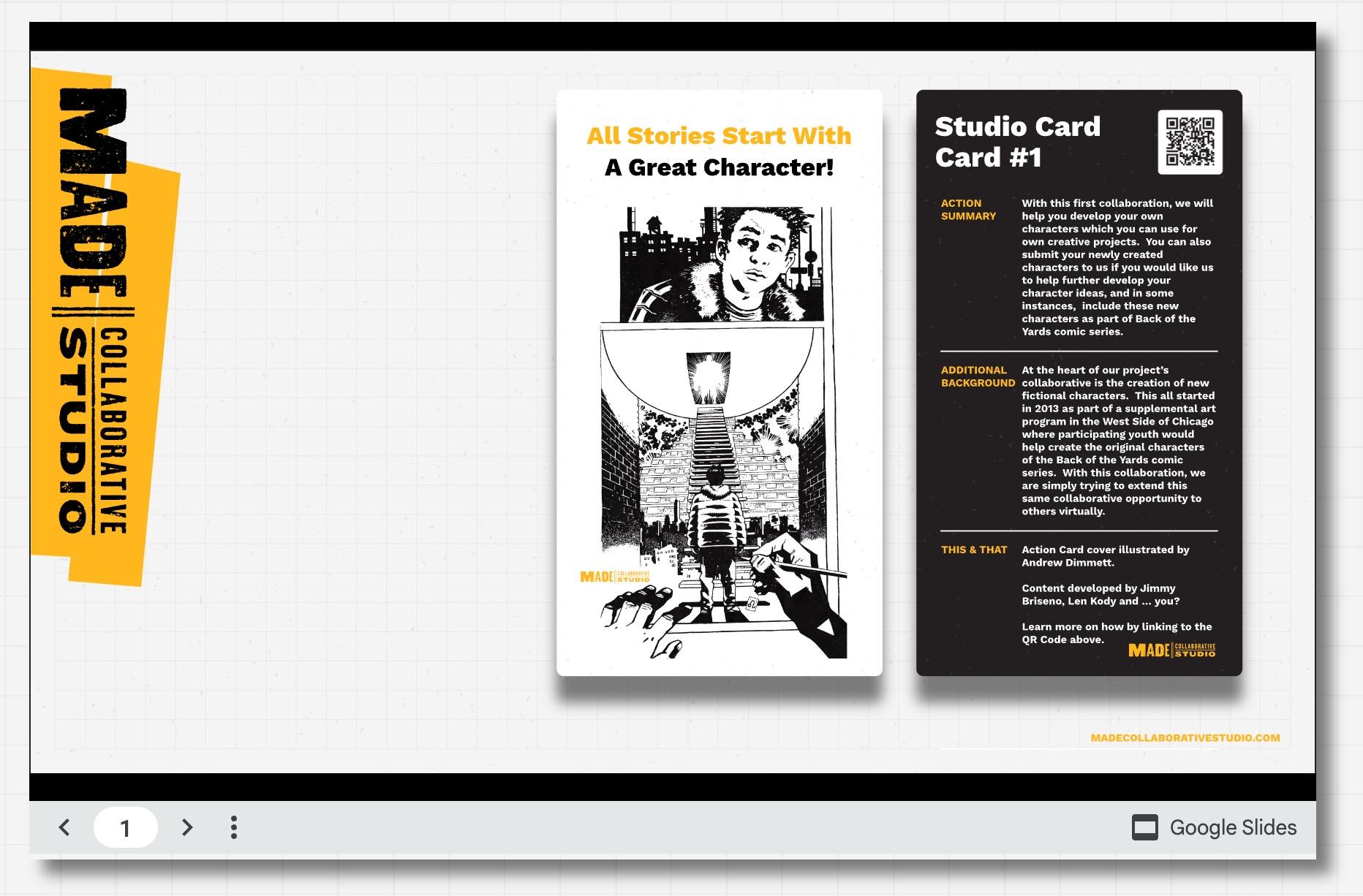

We Start with Your Character’s Basic Characteristics
[EXPLANATORY TEXT TO BE ADDED AFTER DEVELOPED ON THE WEBSITE]
After you have had some time to further consider your character’s basic characteristics as described on the Studio Card page, you can use the space below or your own note pad to capture those basic characteristics.

Next, We Develop Your Character’s Personality Traits
[EXPLANATORY TEXT TO BE ADDED AFTER DEVELOPED ON THE WEBSITE]
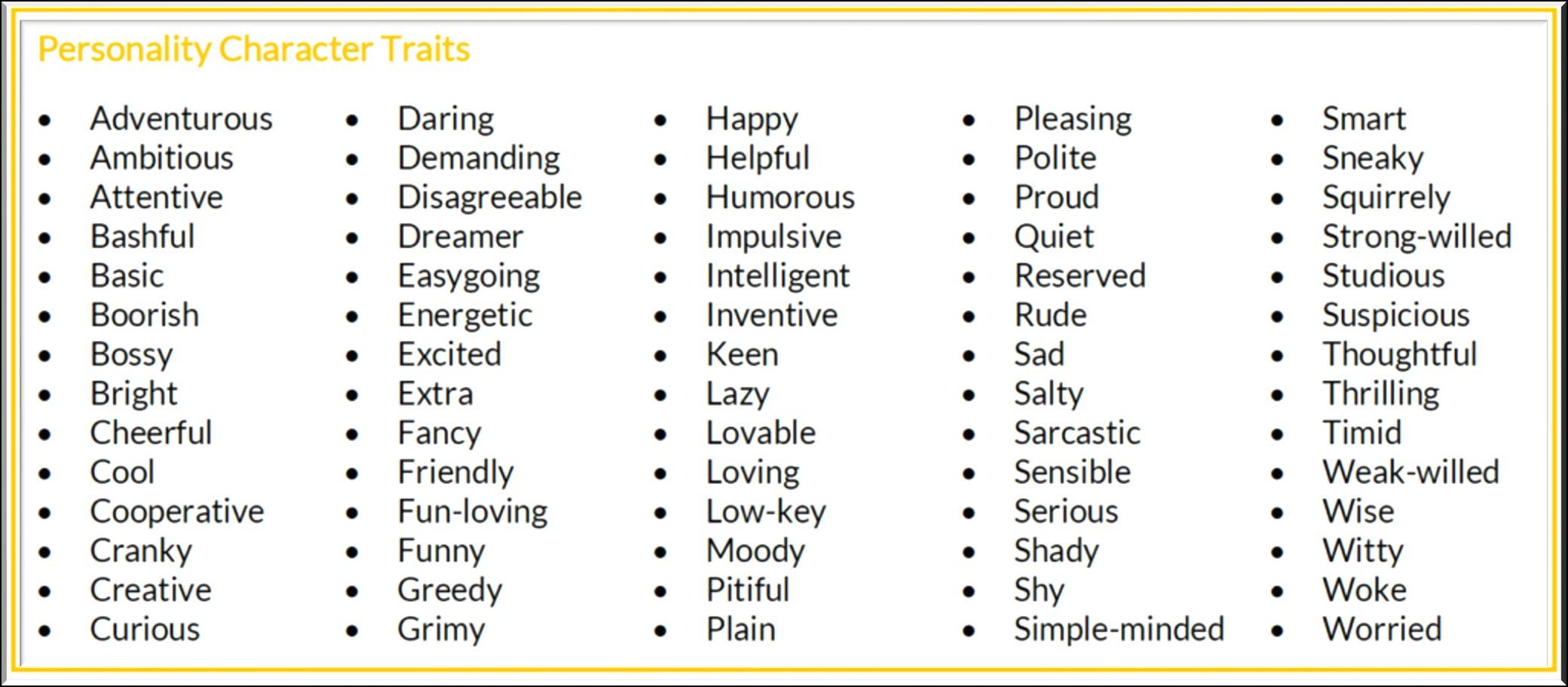
After you have had some time to further consider your character’s personality traits as described on the Studio Card page, you can use the space below or your own note pad to capture those basic characteristics.







- Part V -
Johnny Golden!
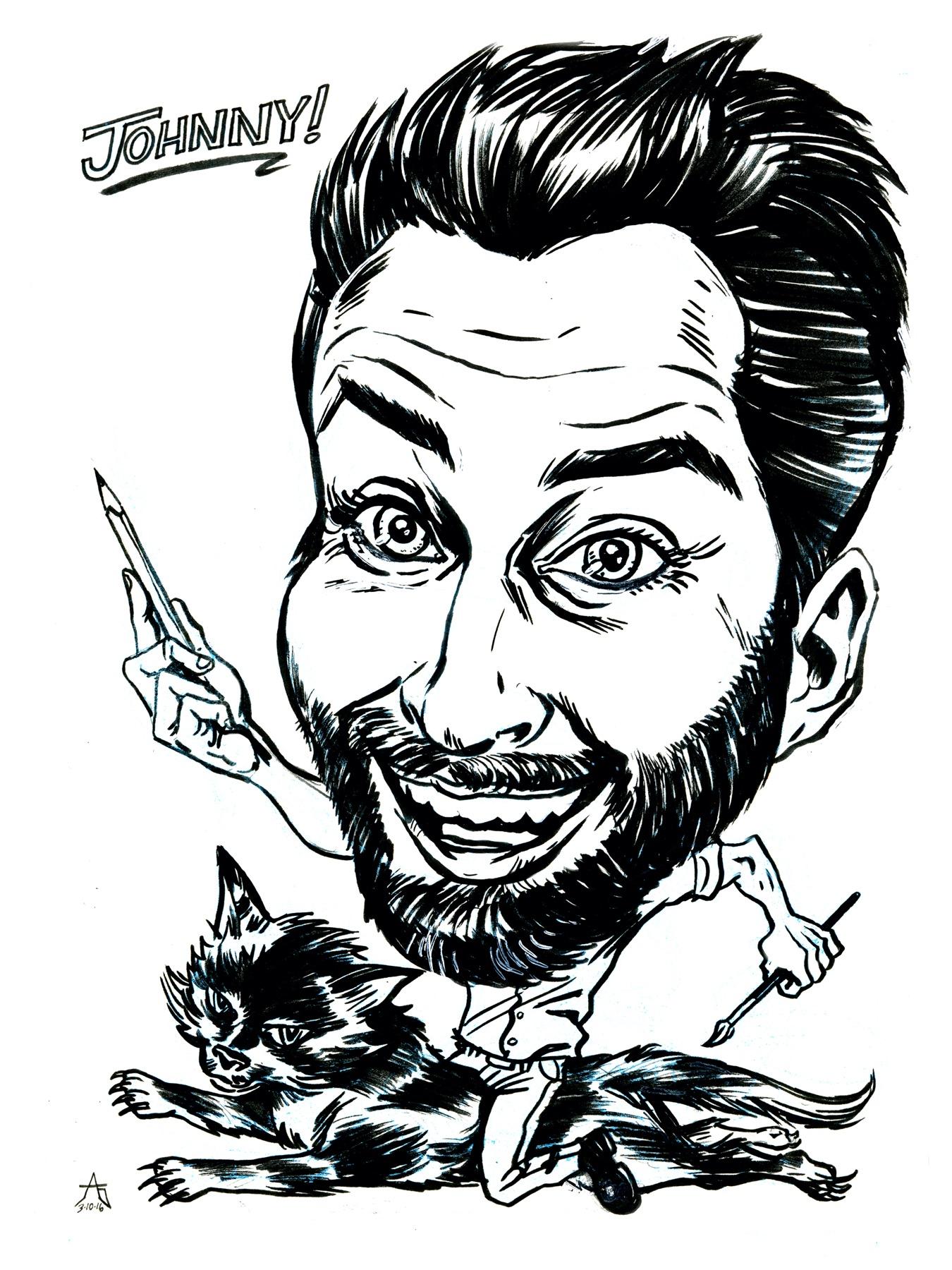

Eric Nyamor!
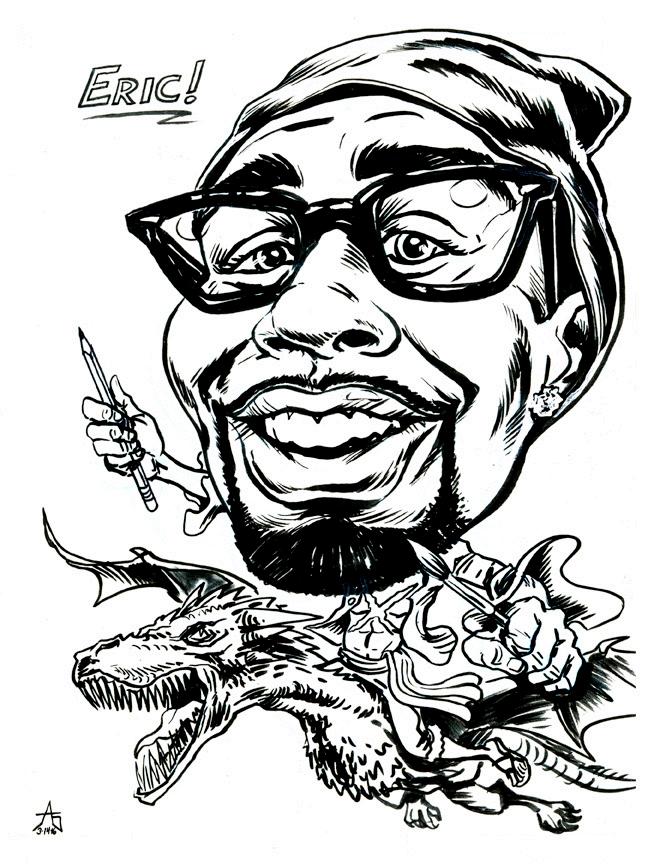
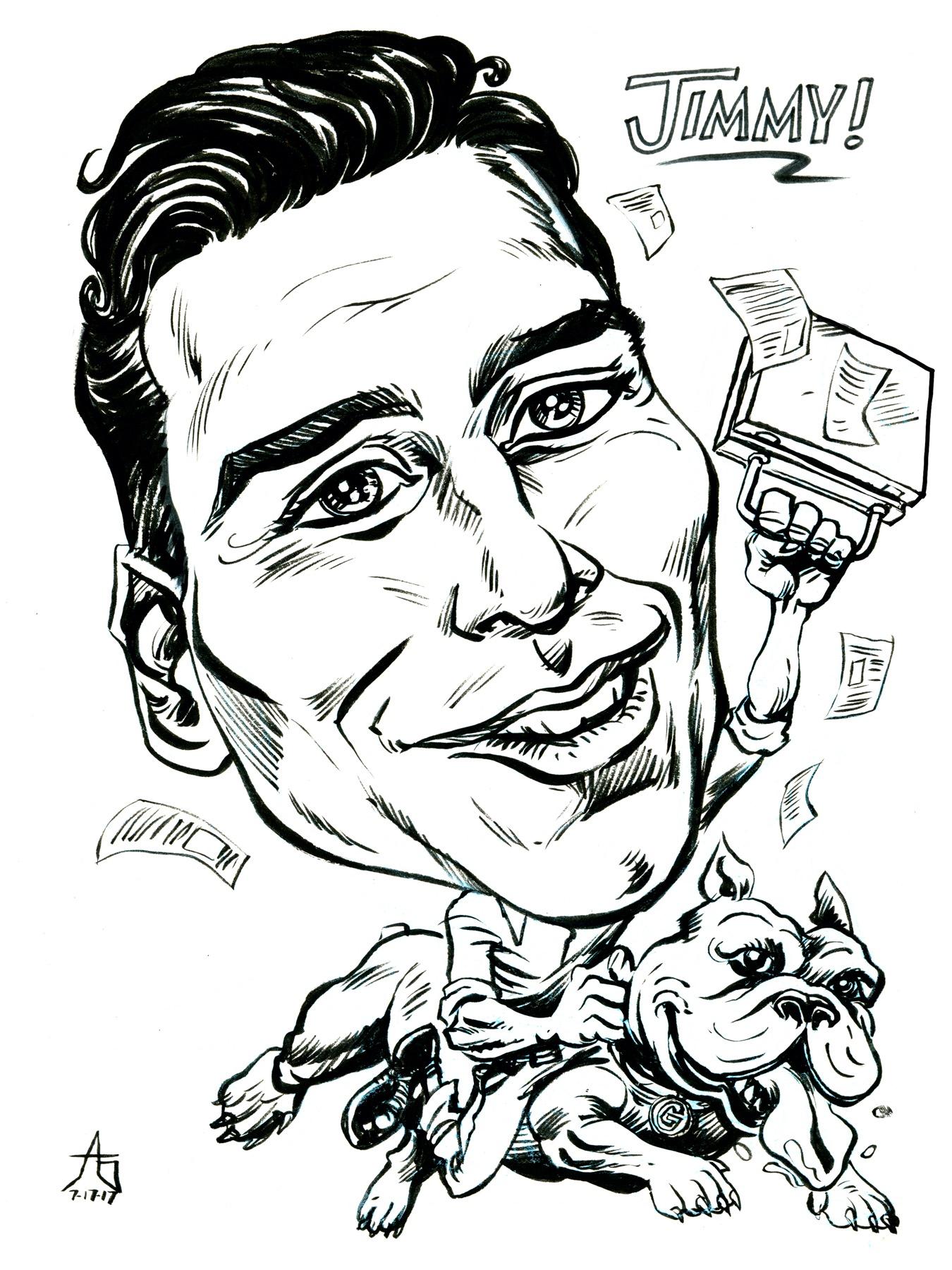
Jimmy Briseno!
Dan Dougherty!
